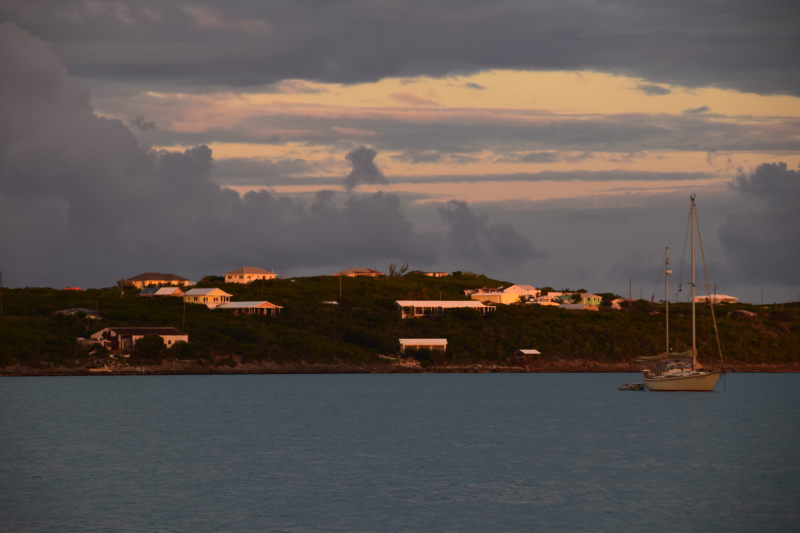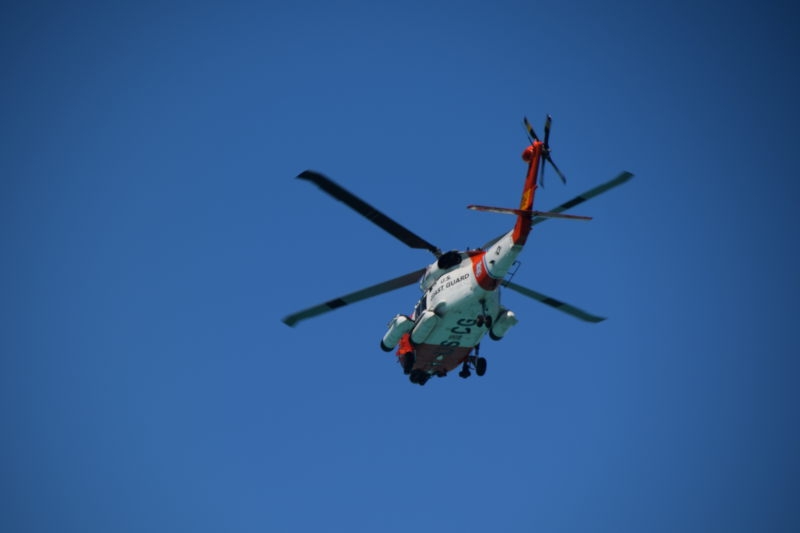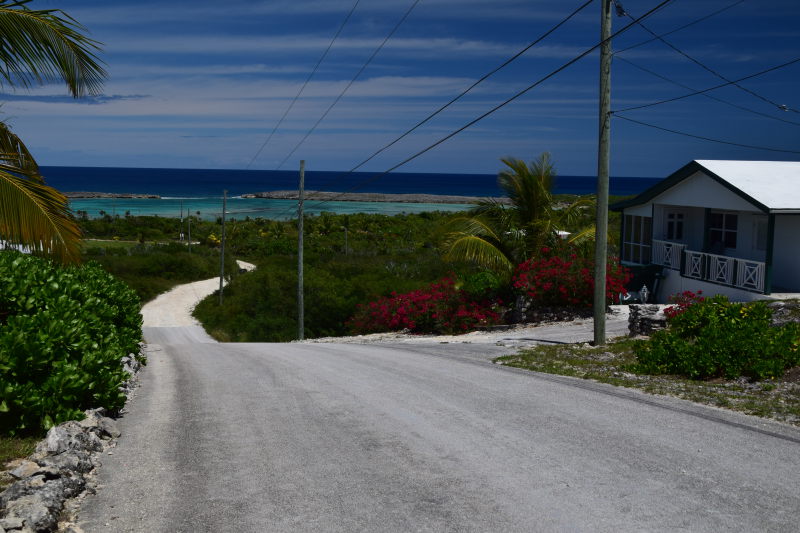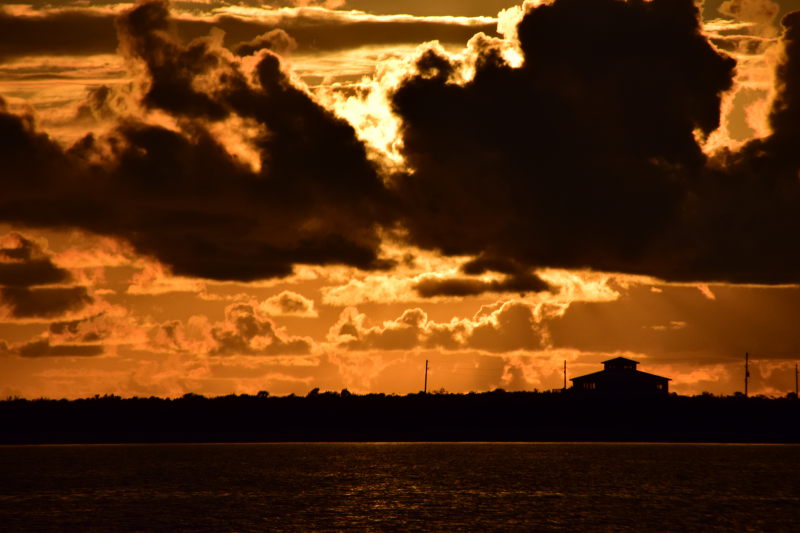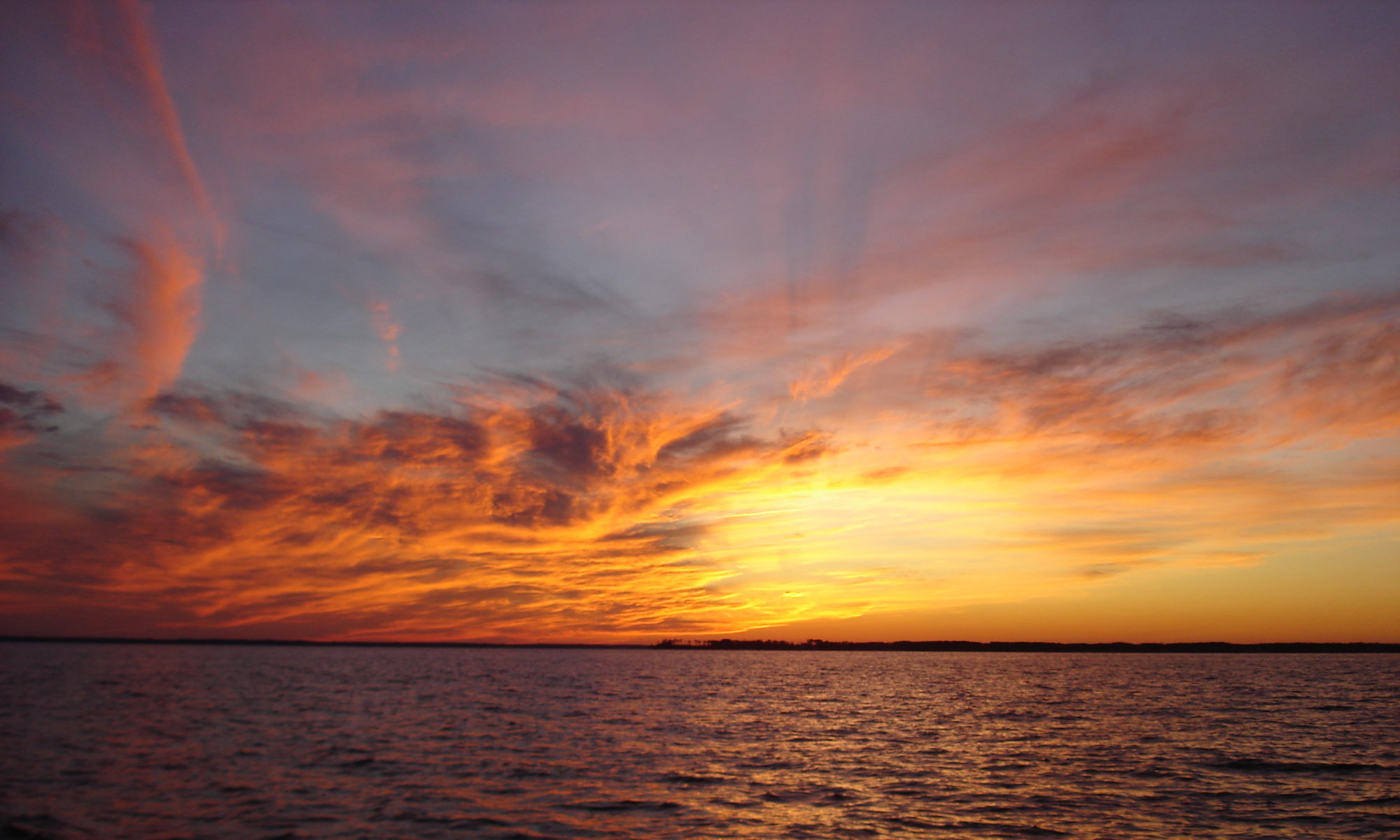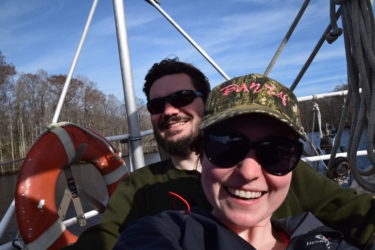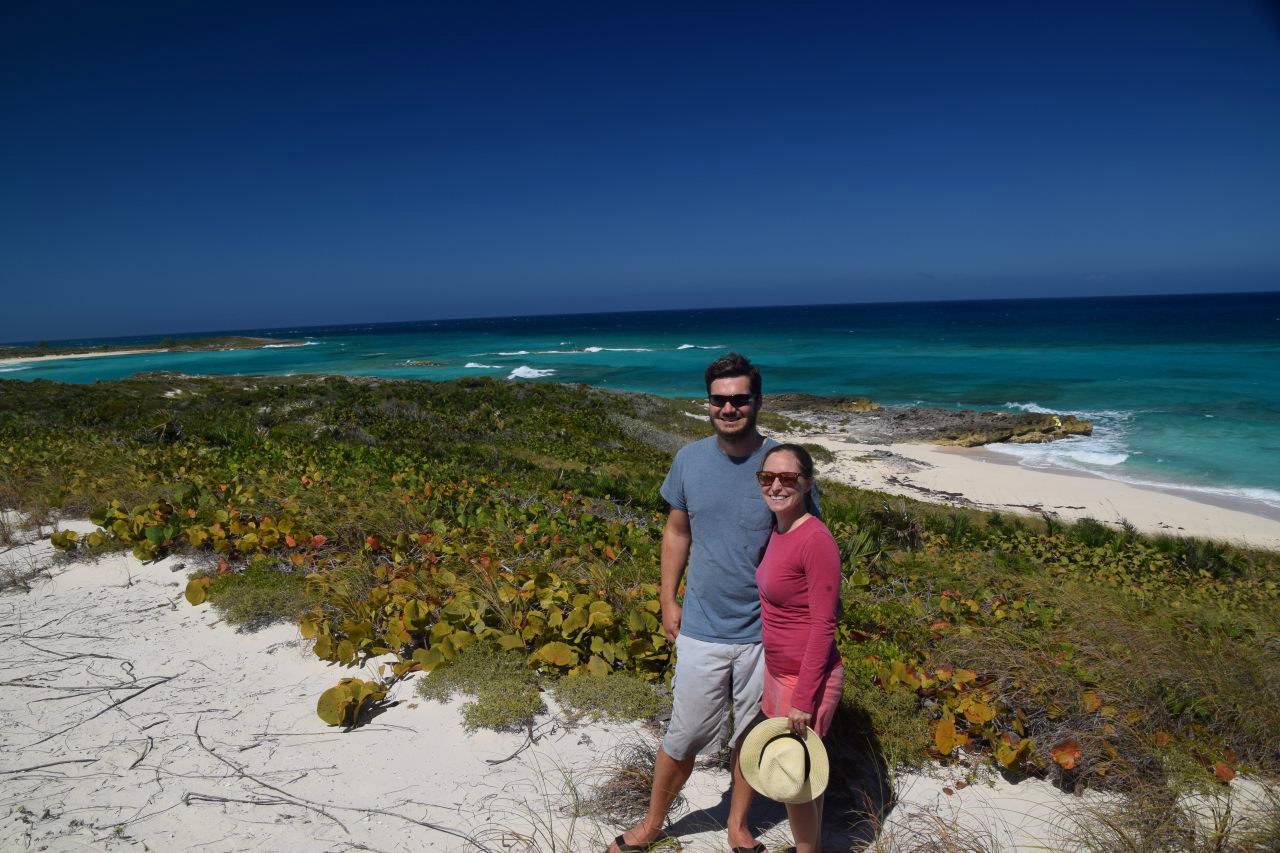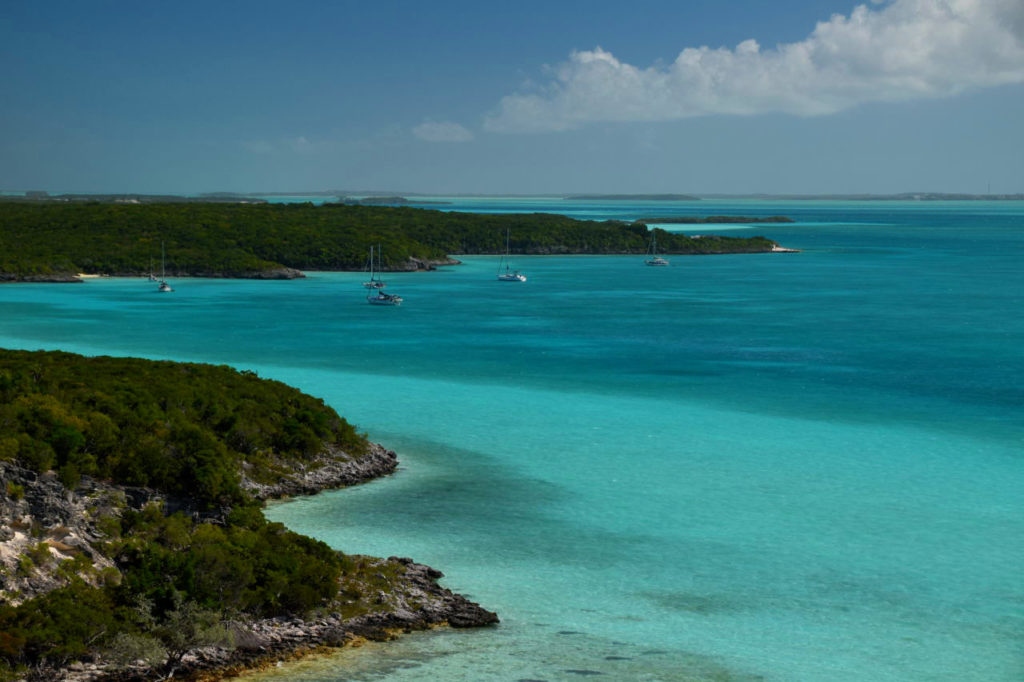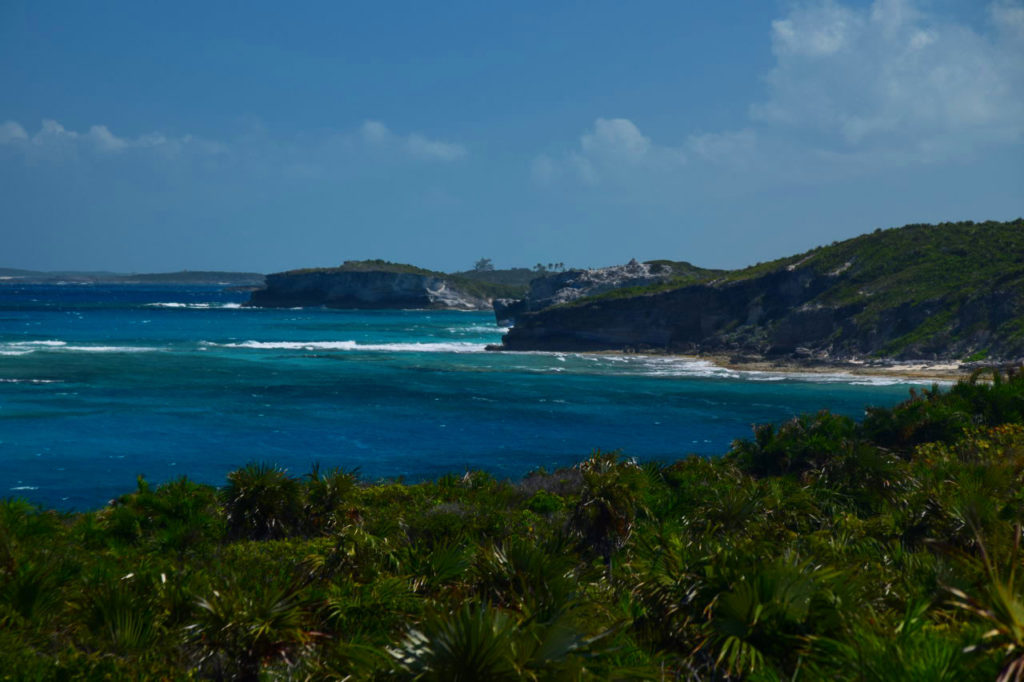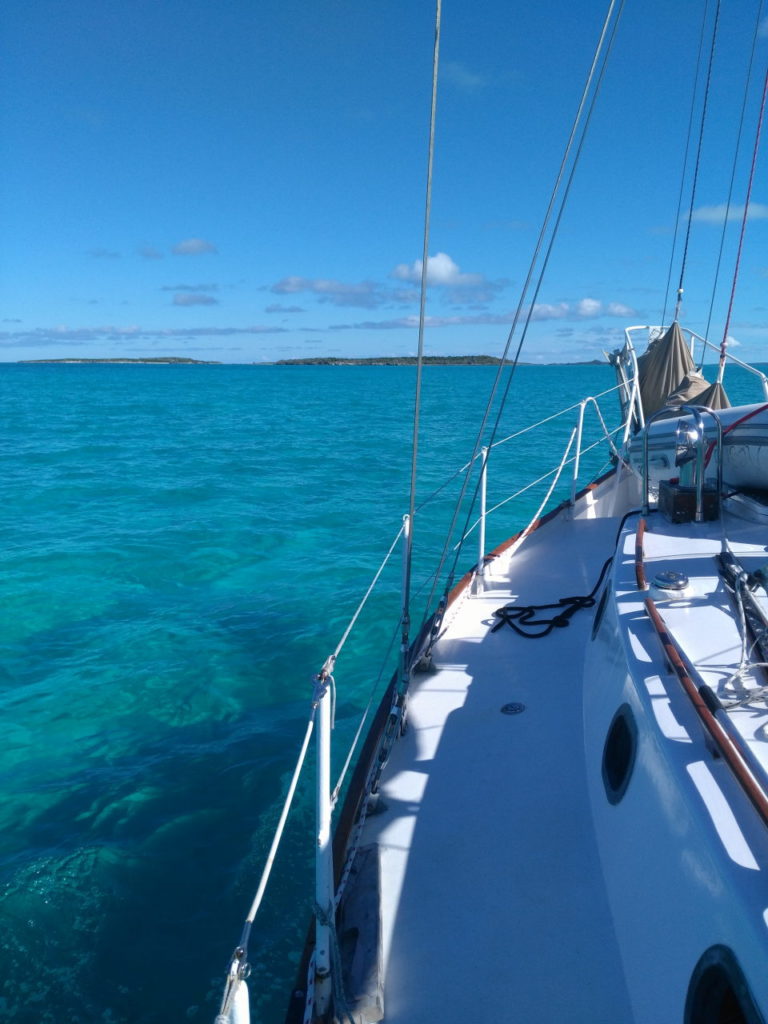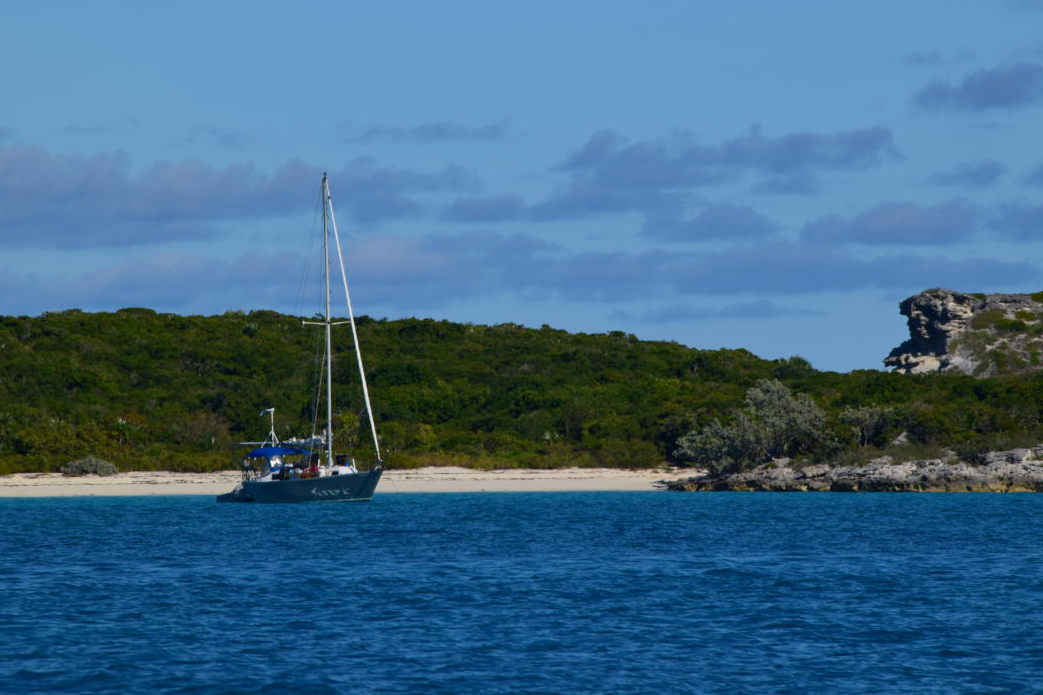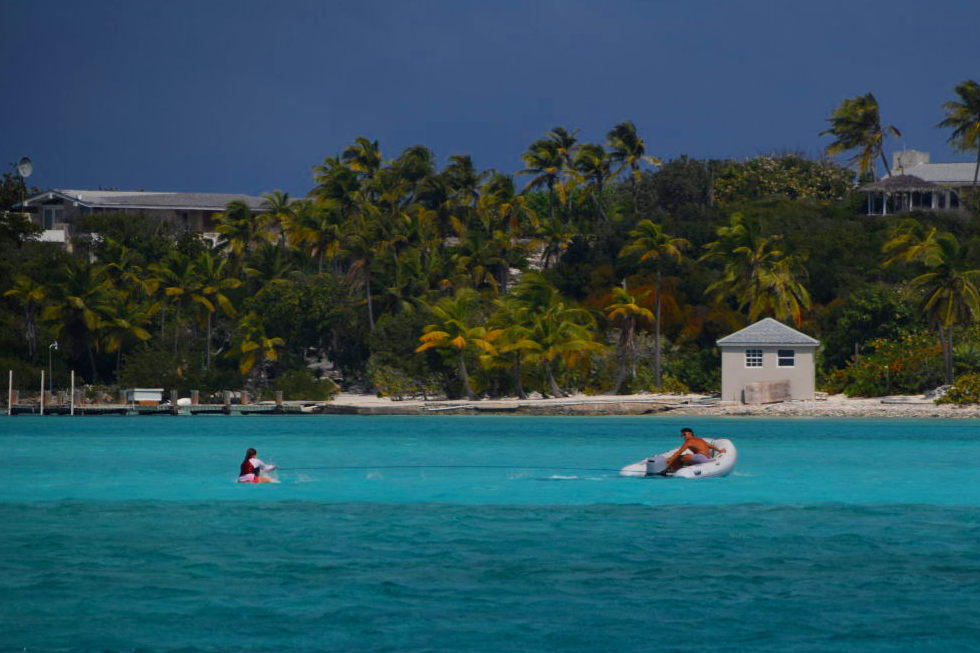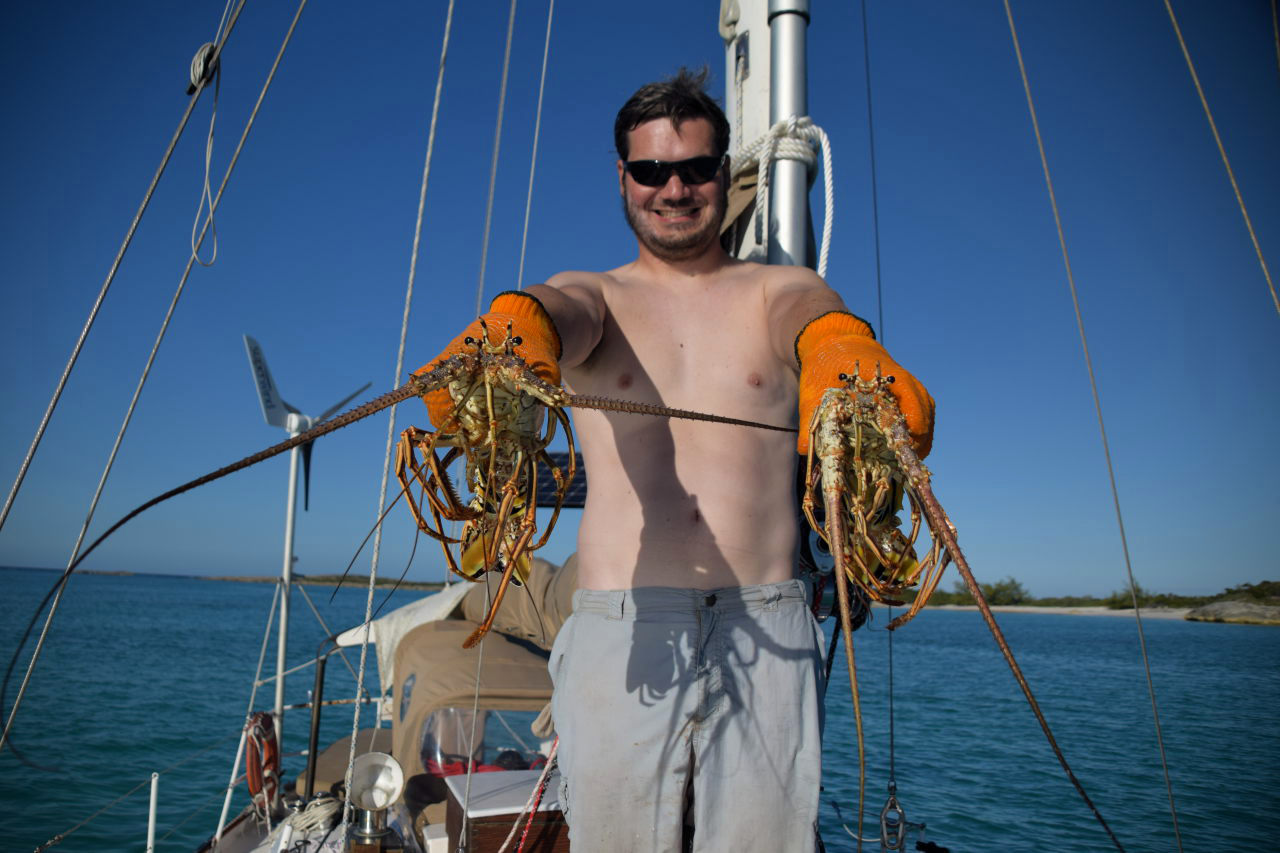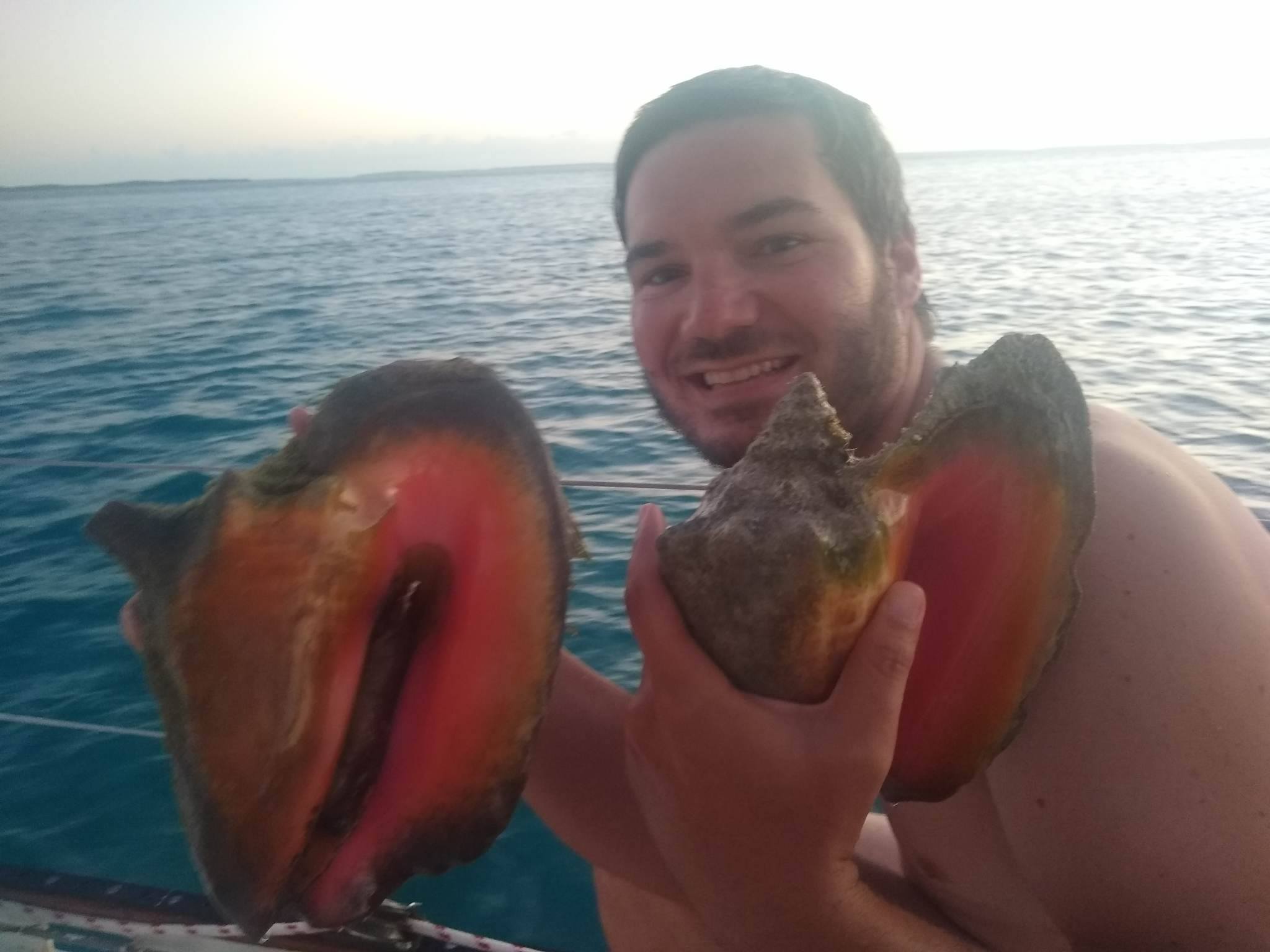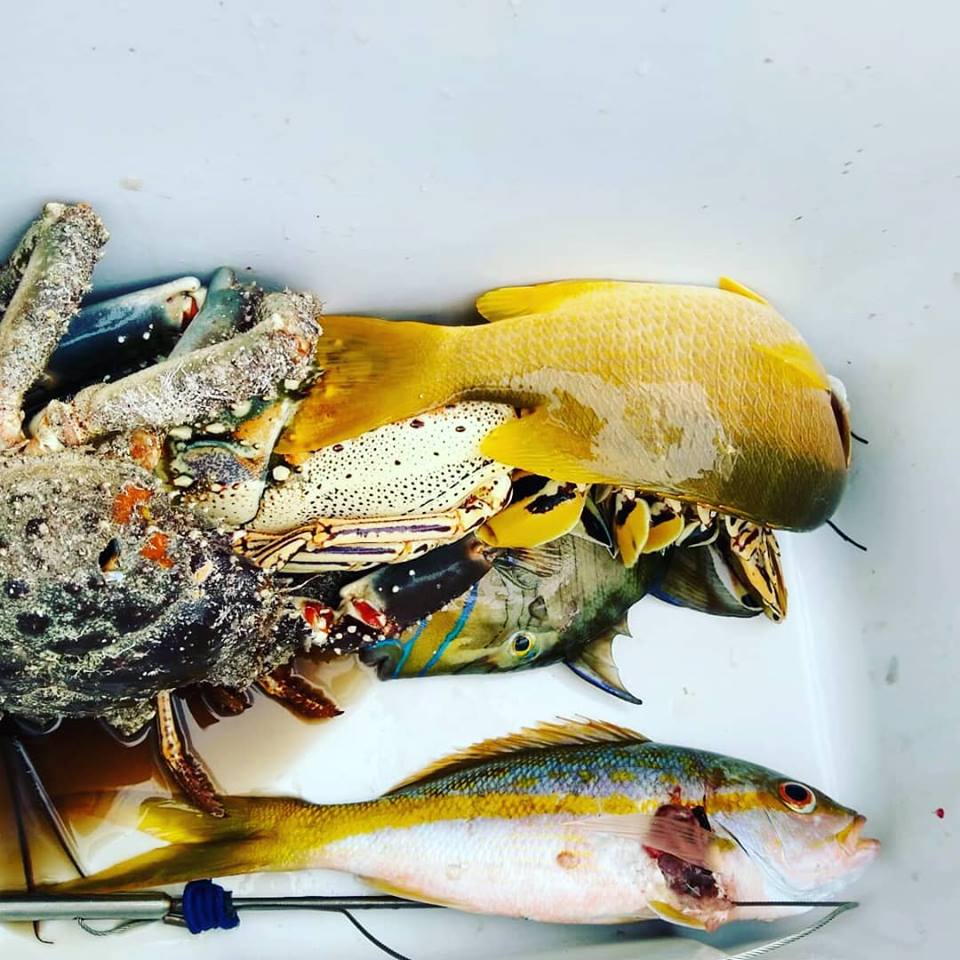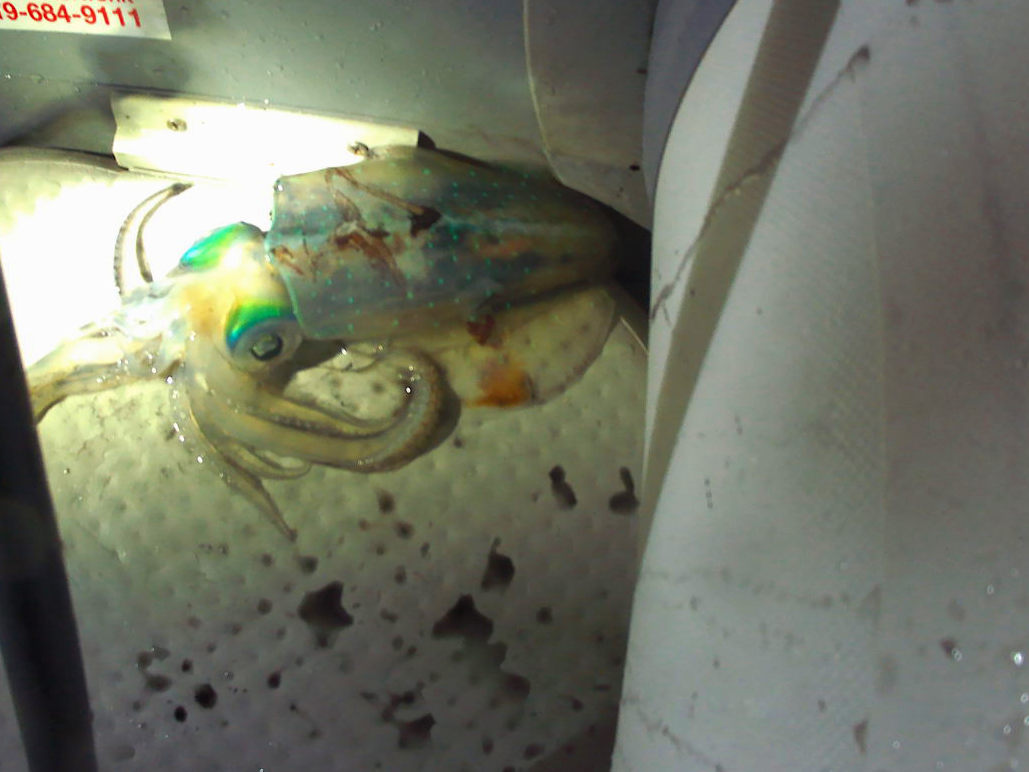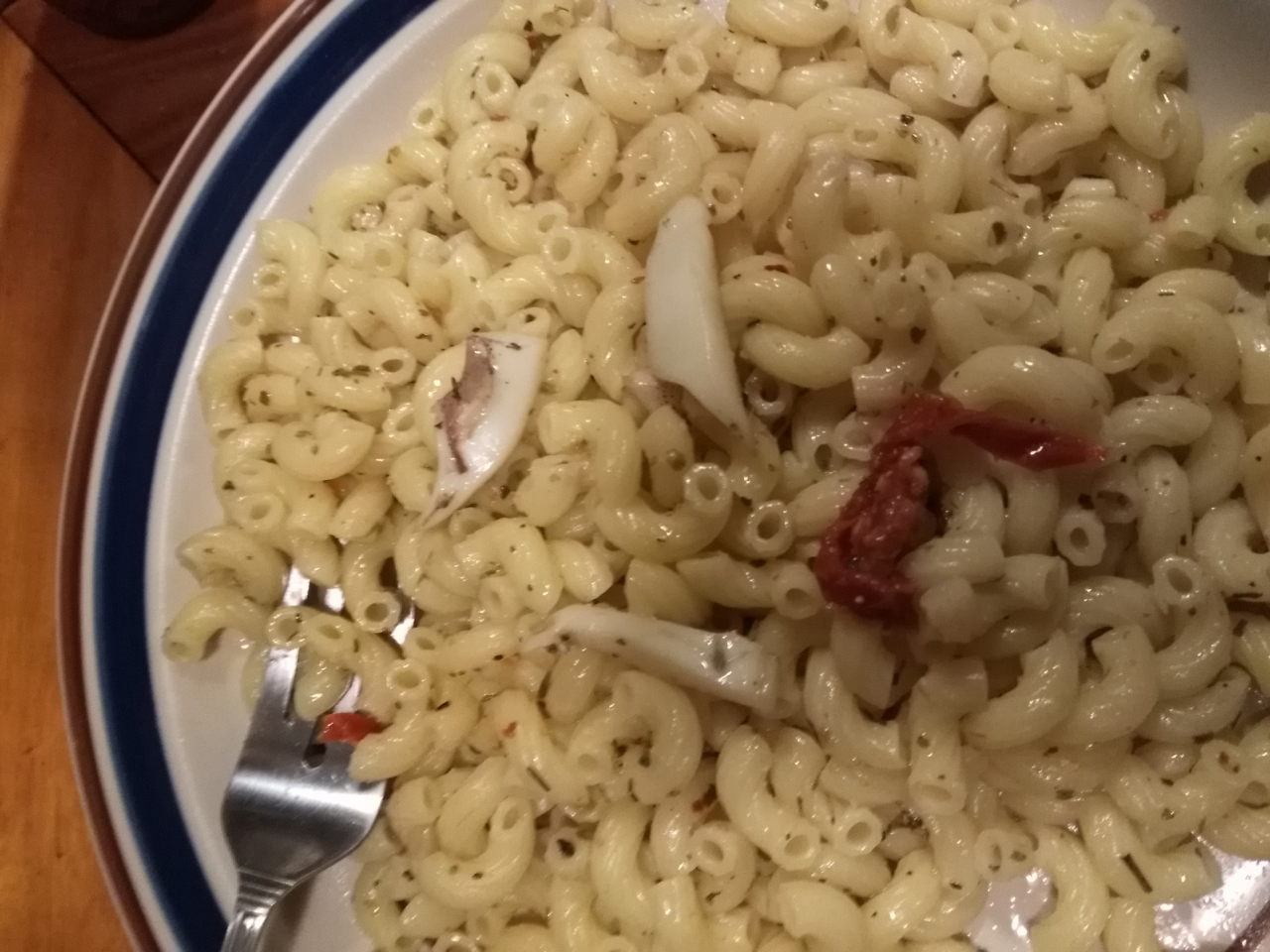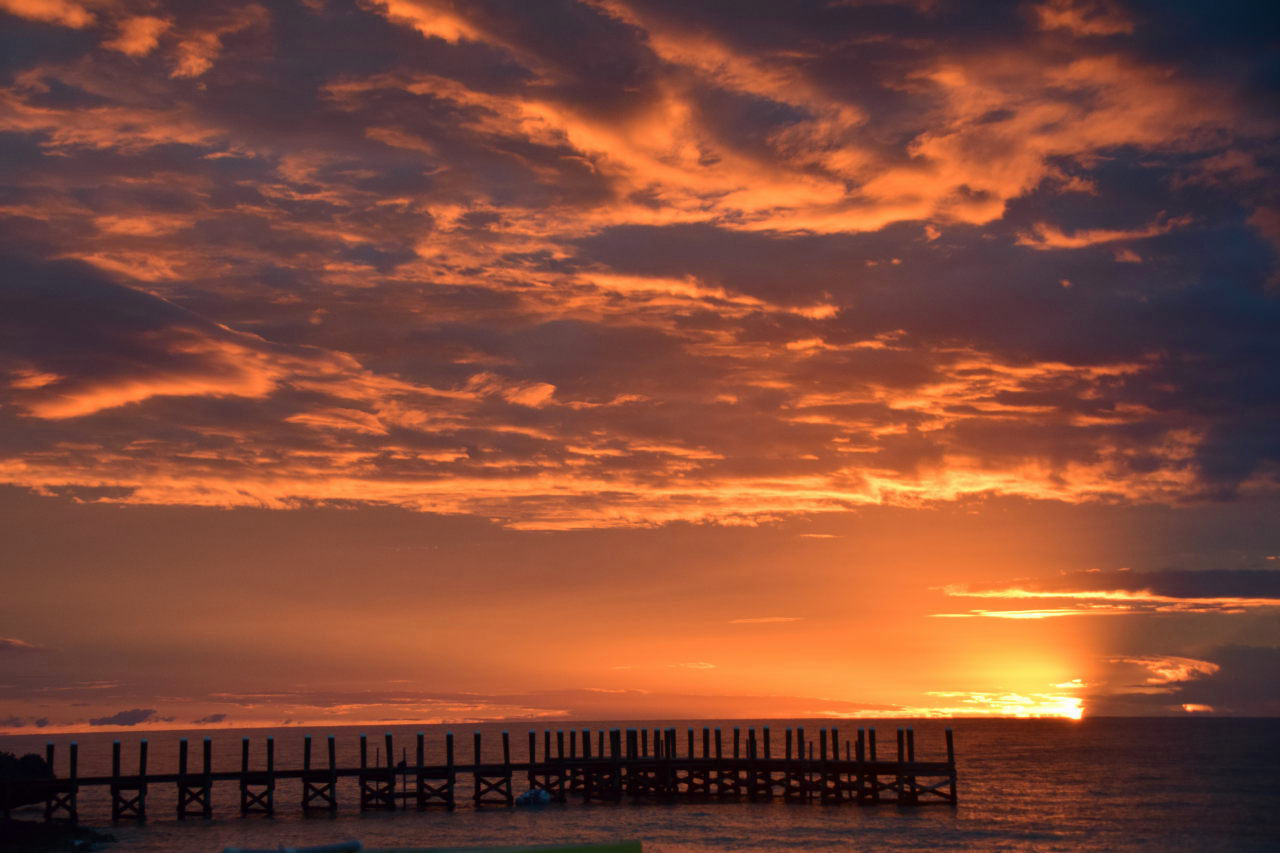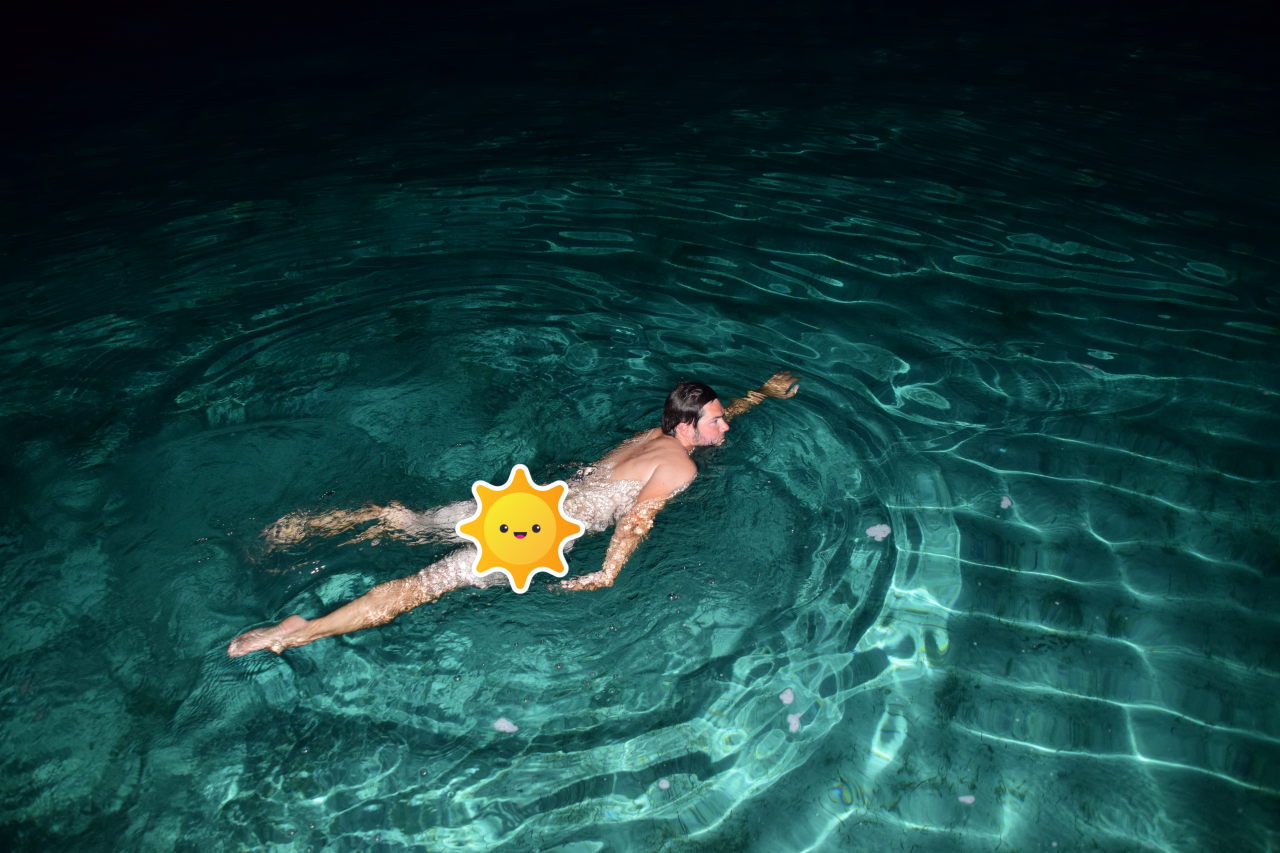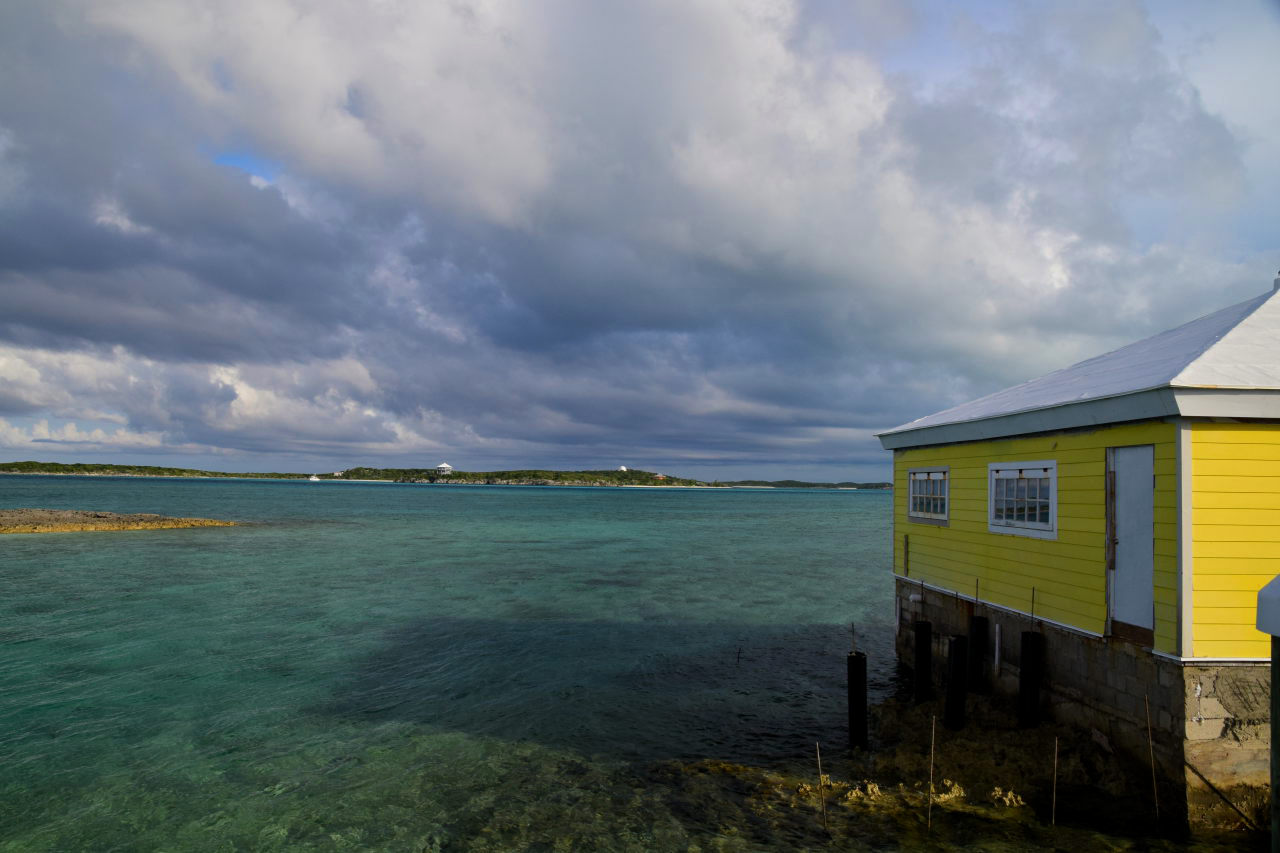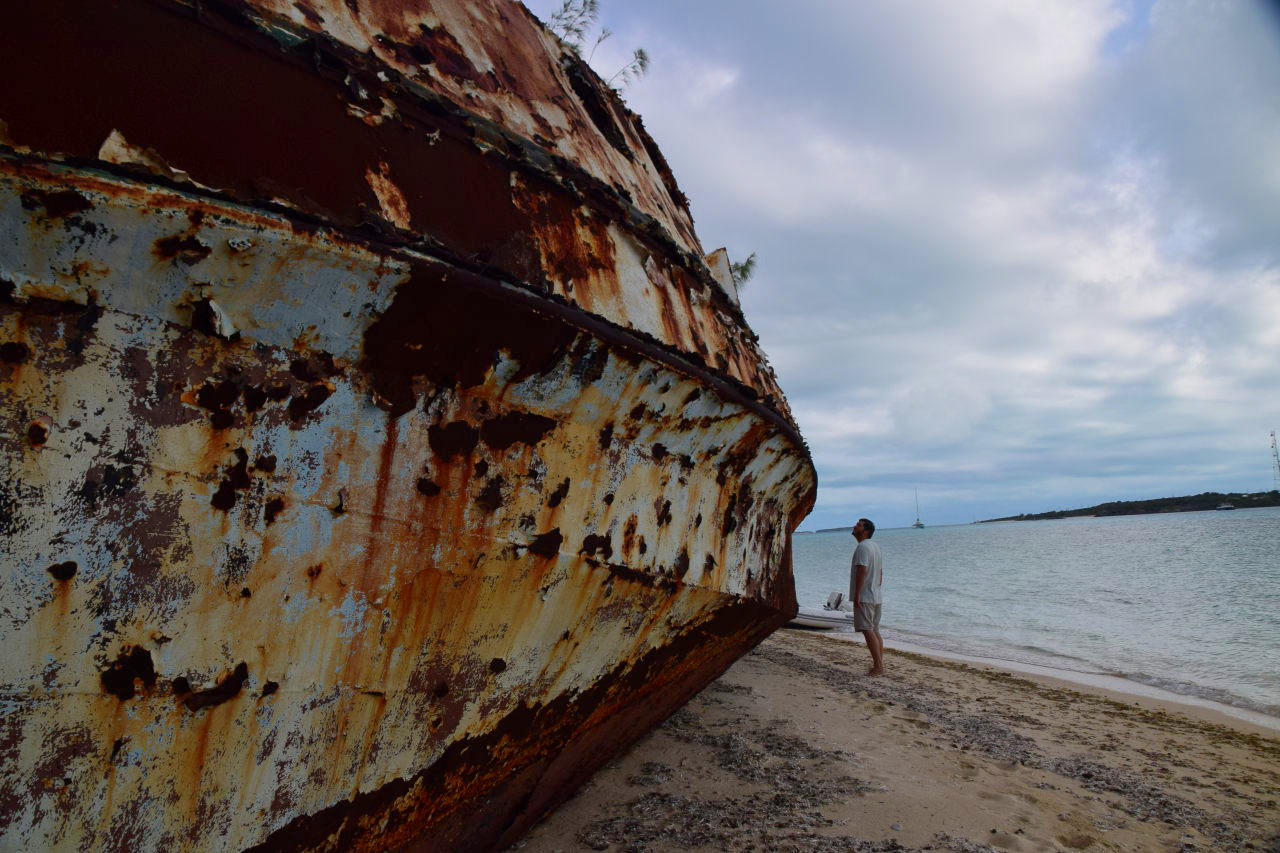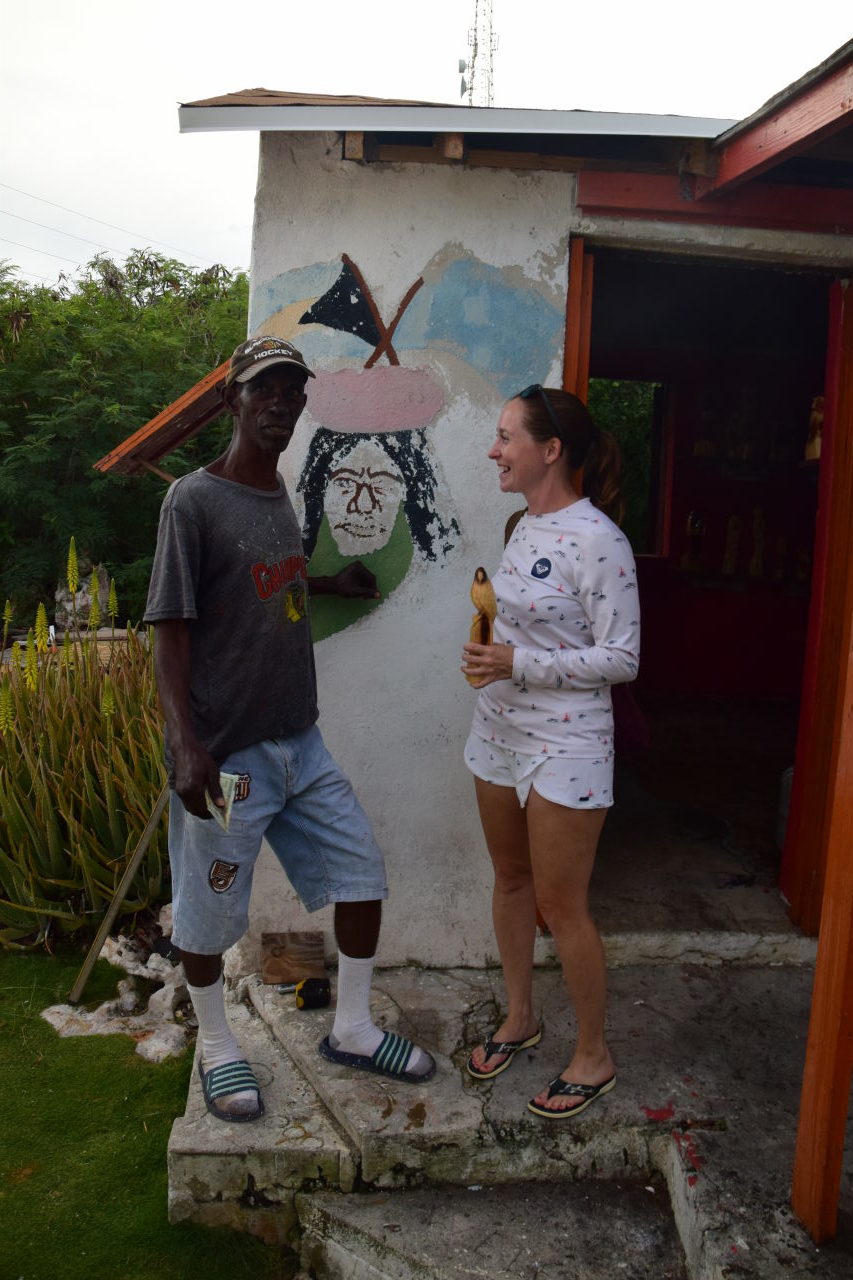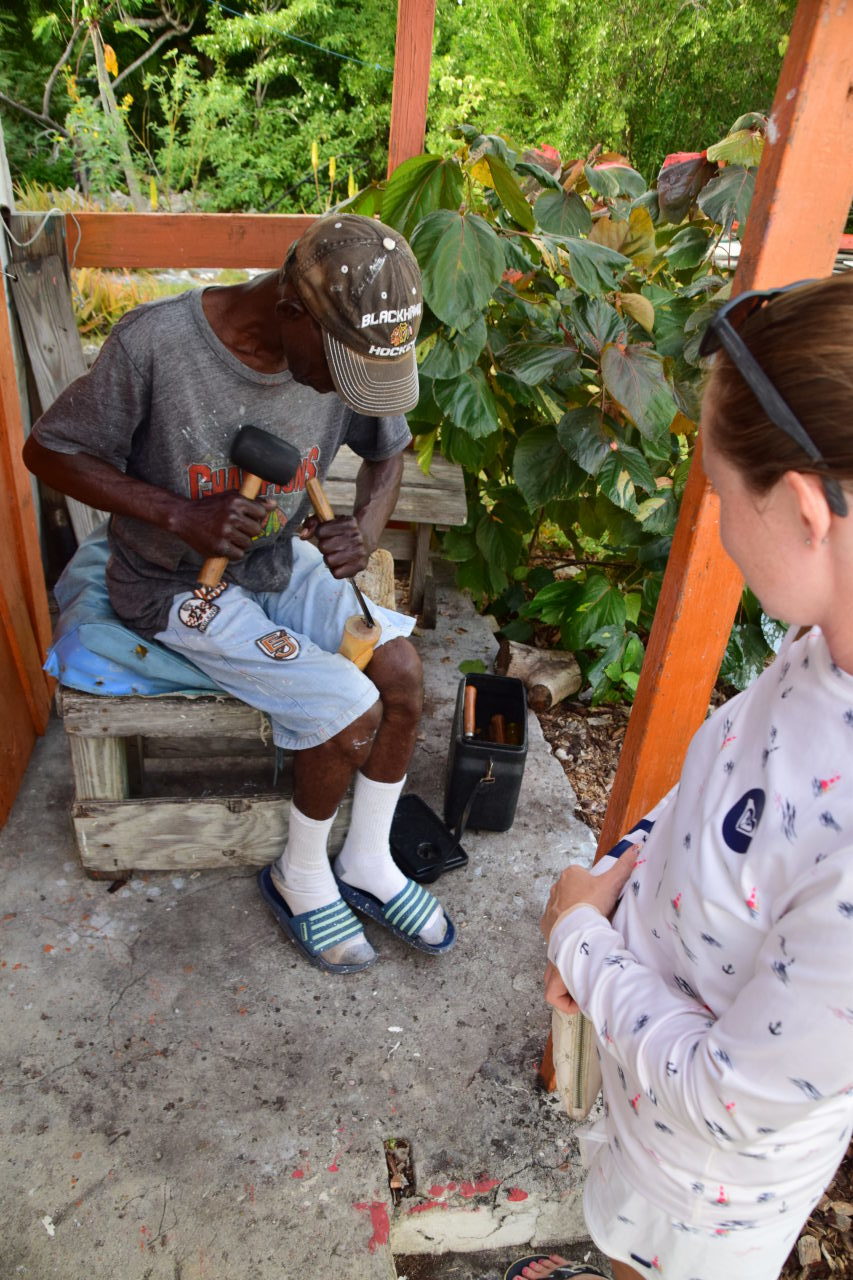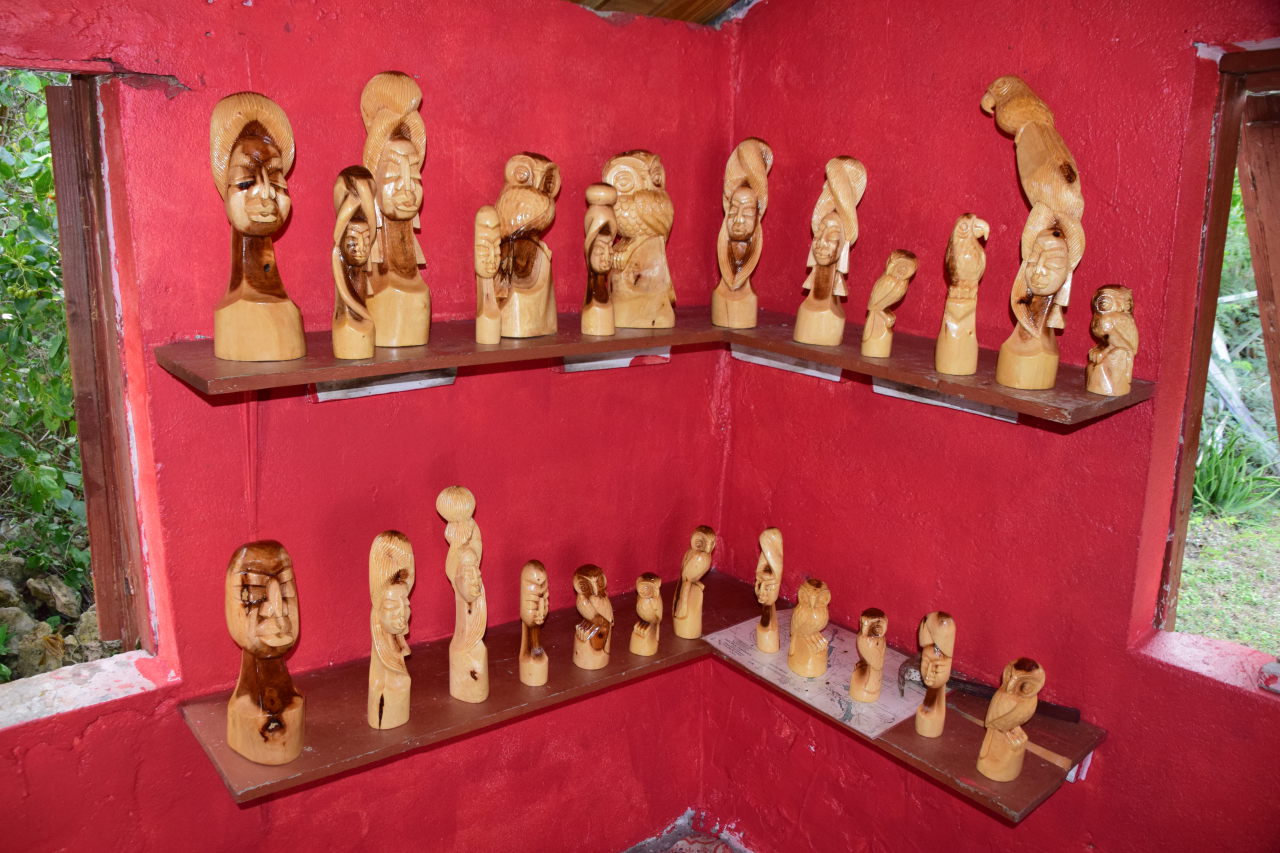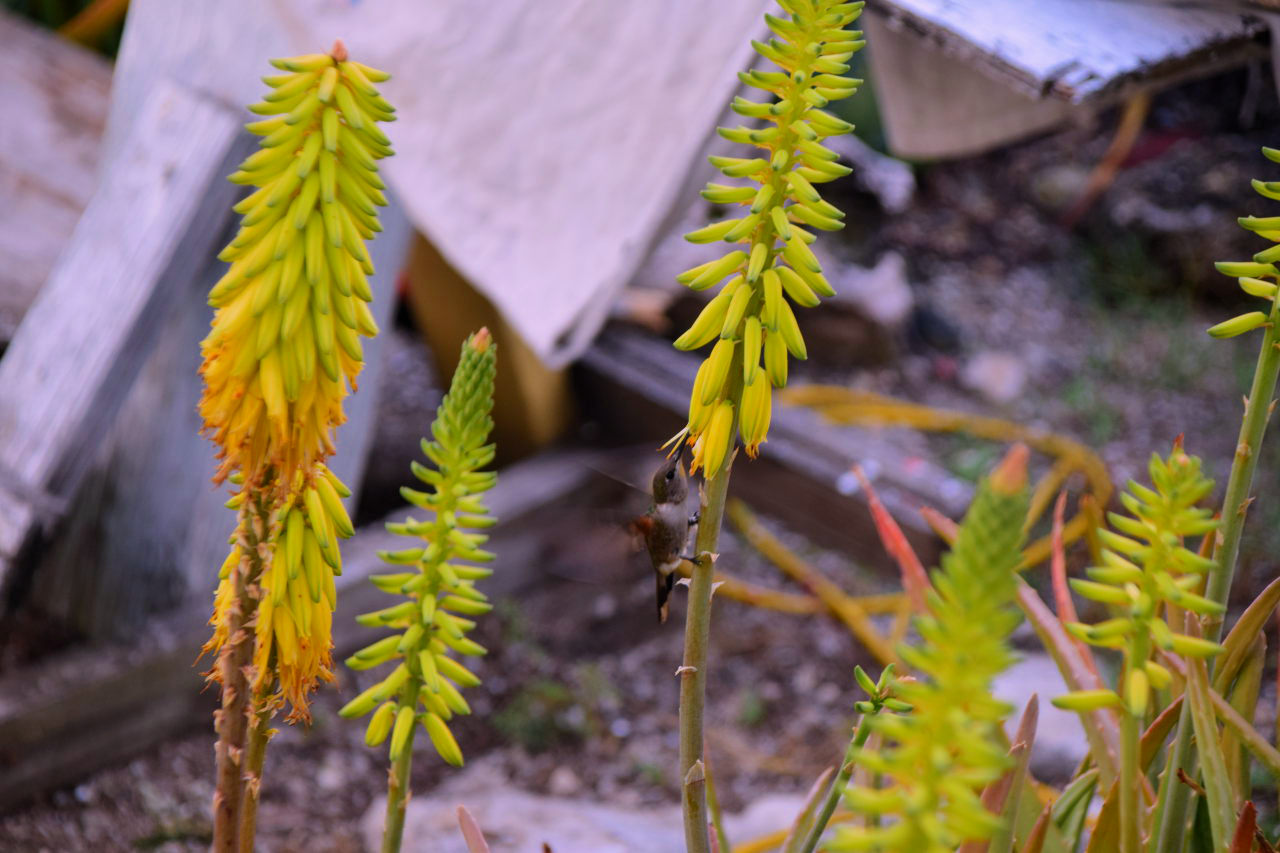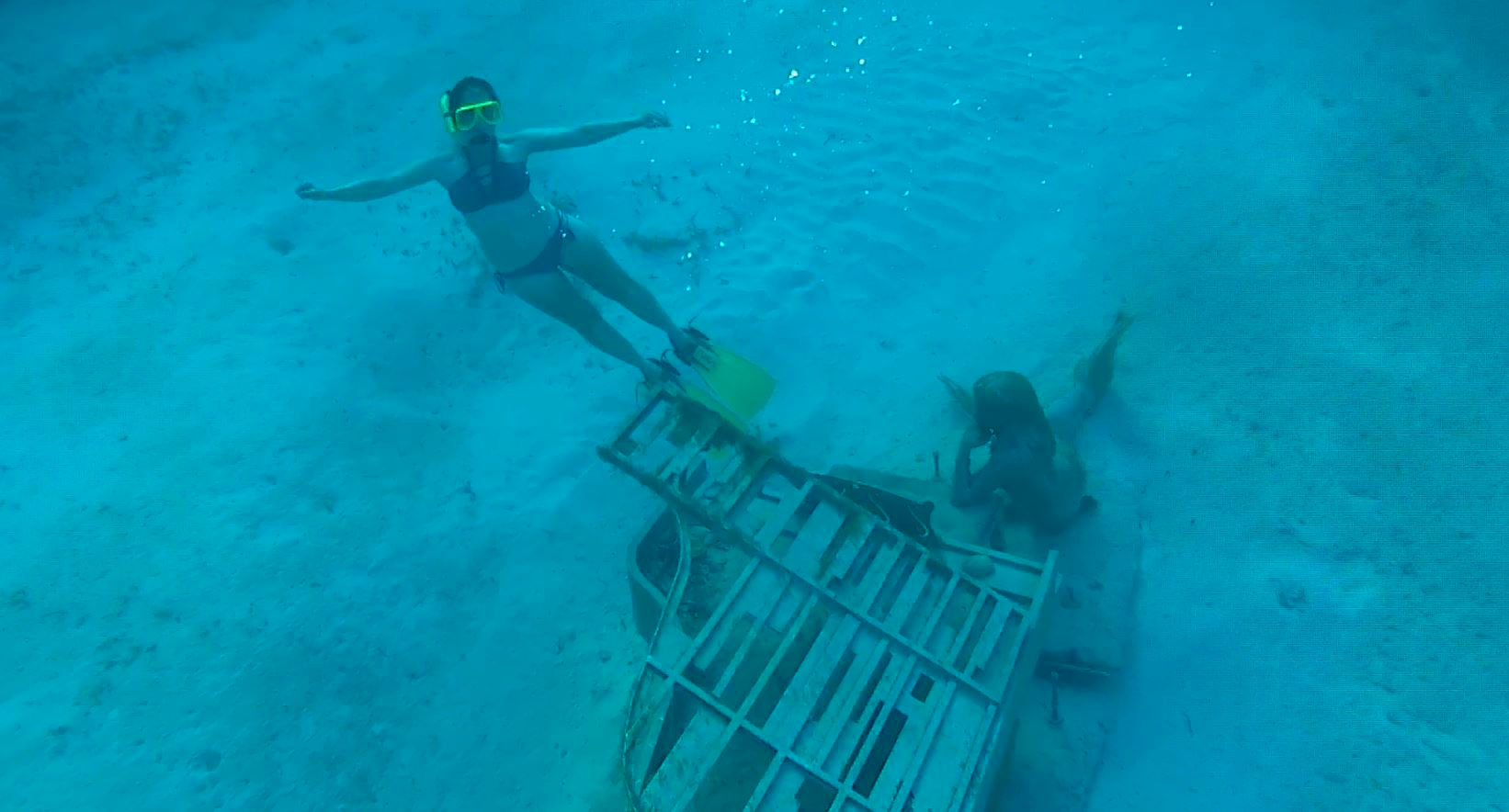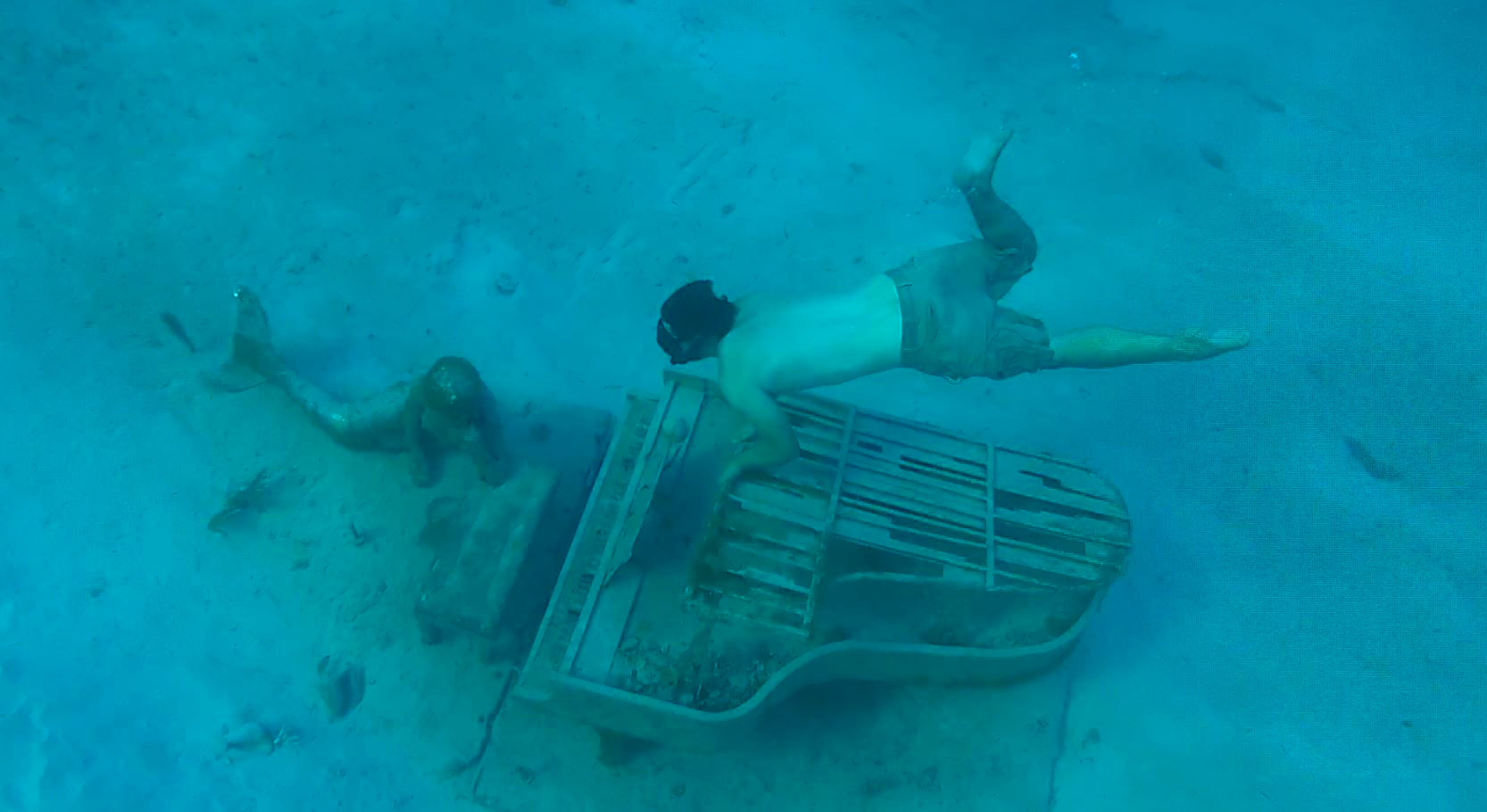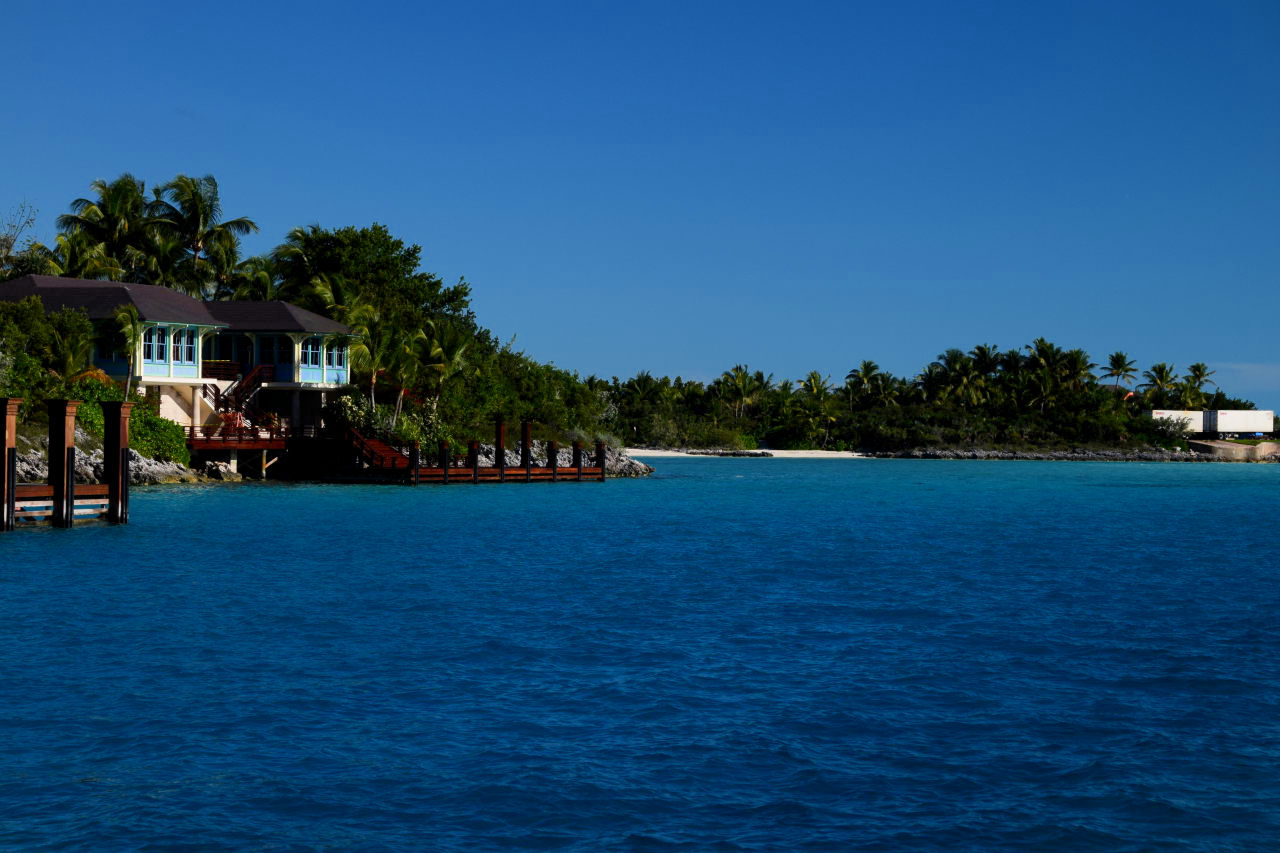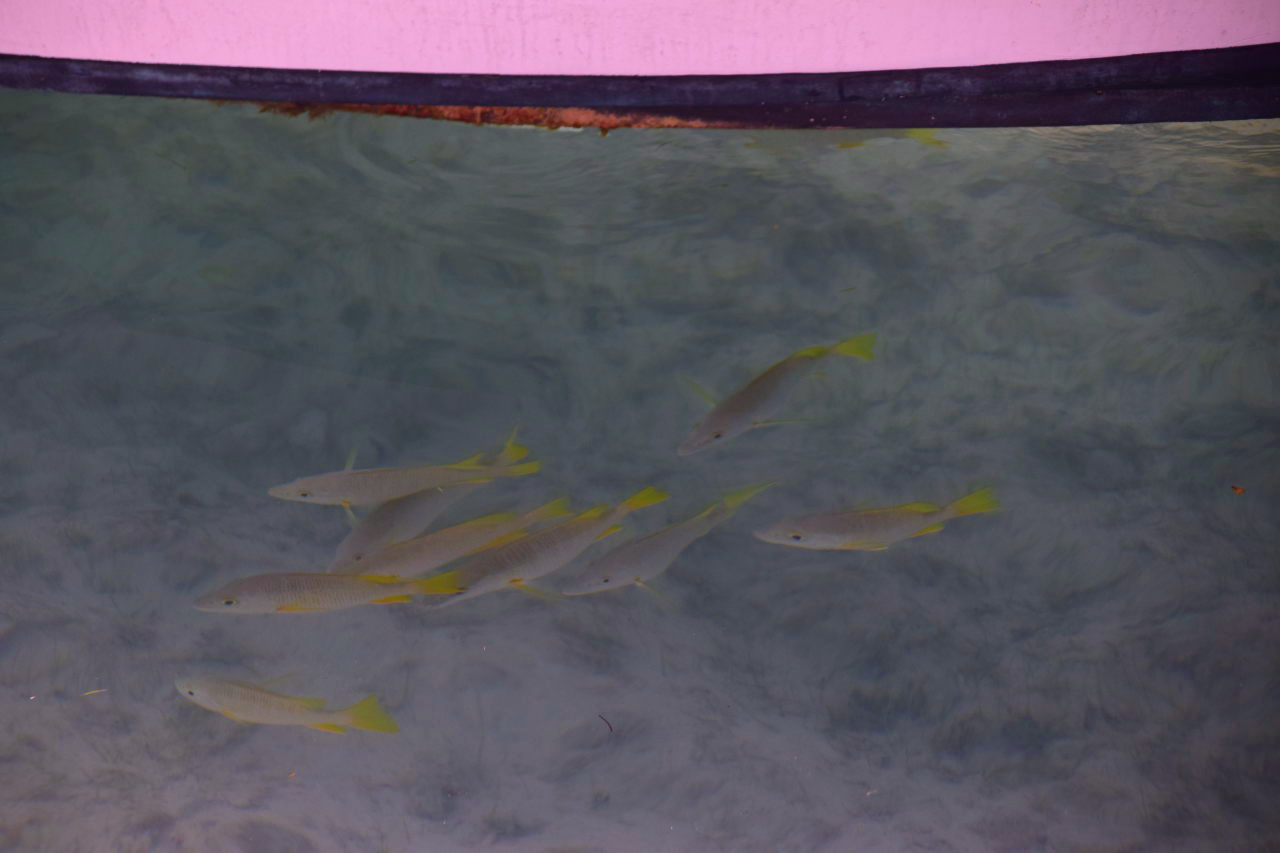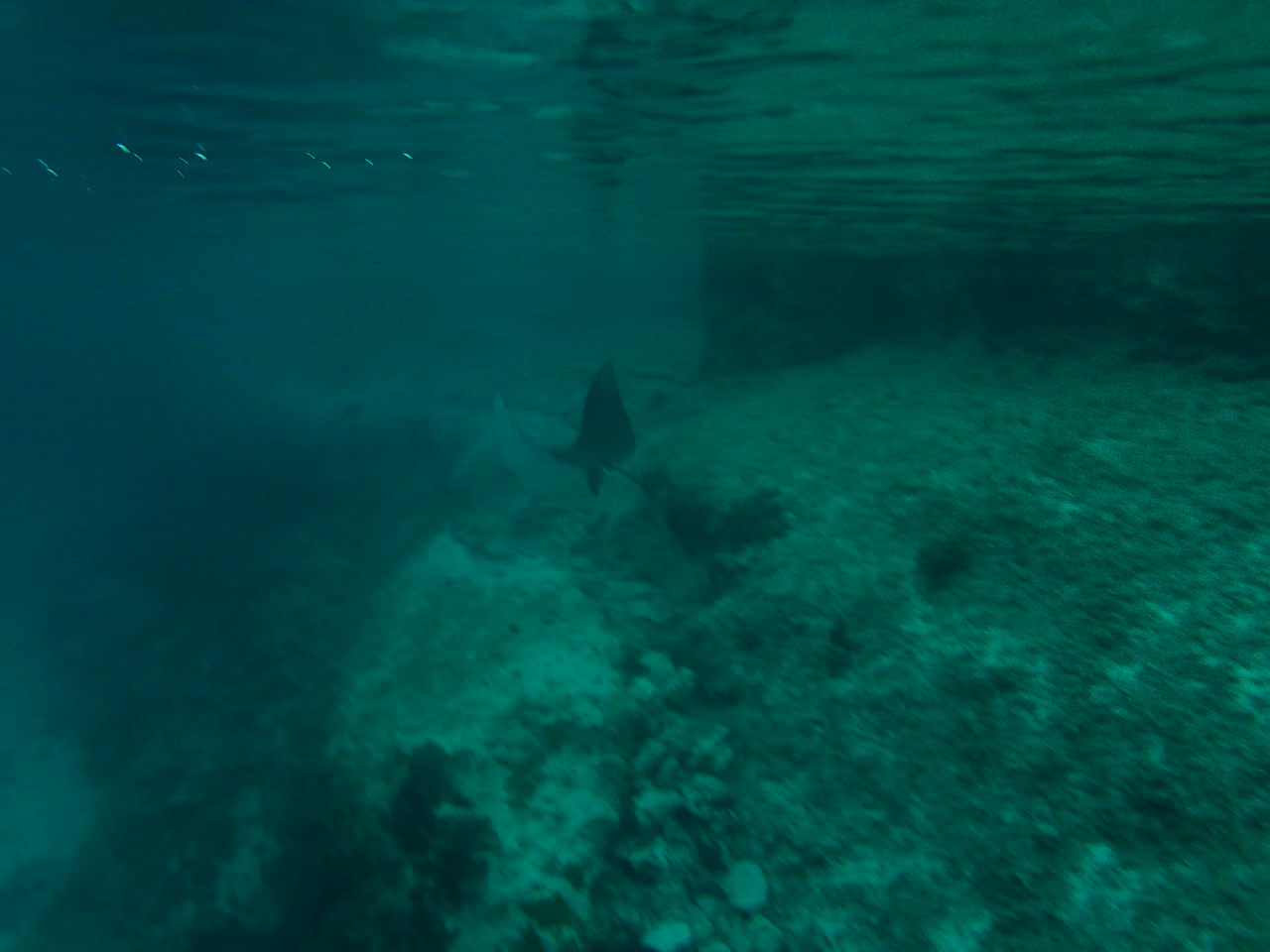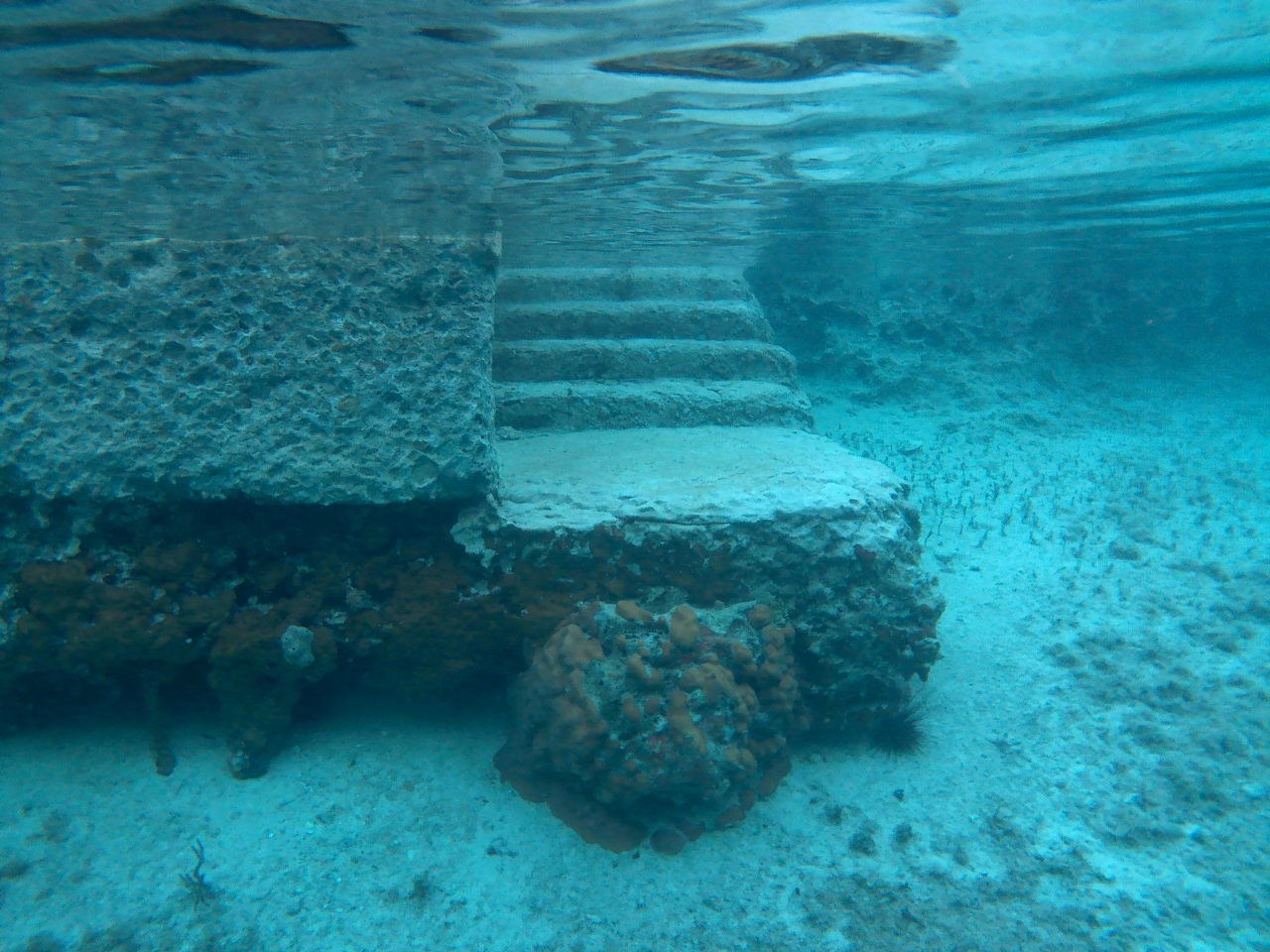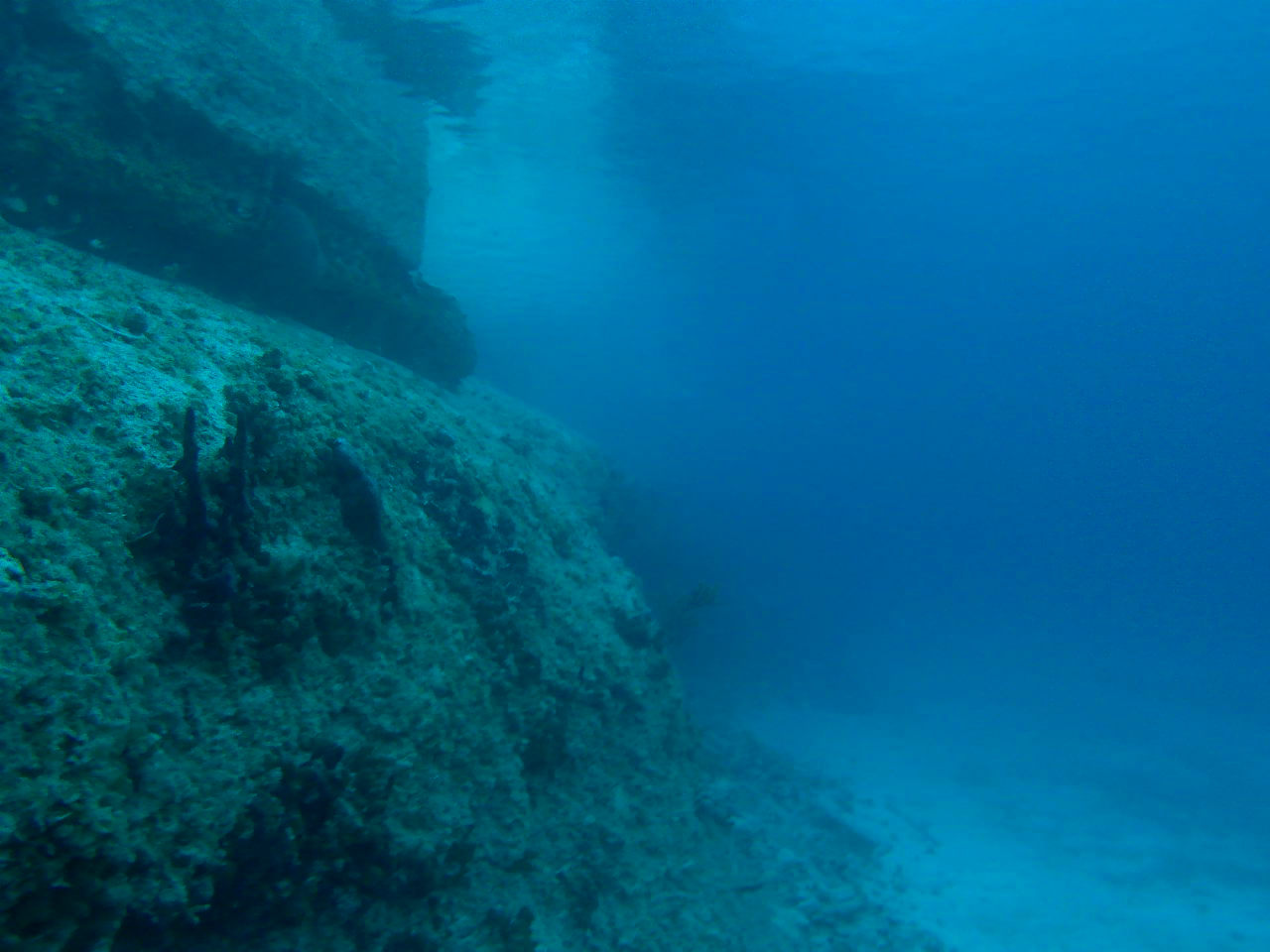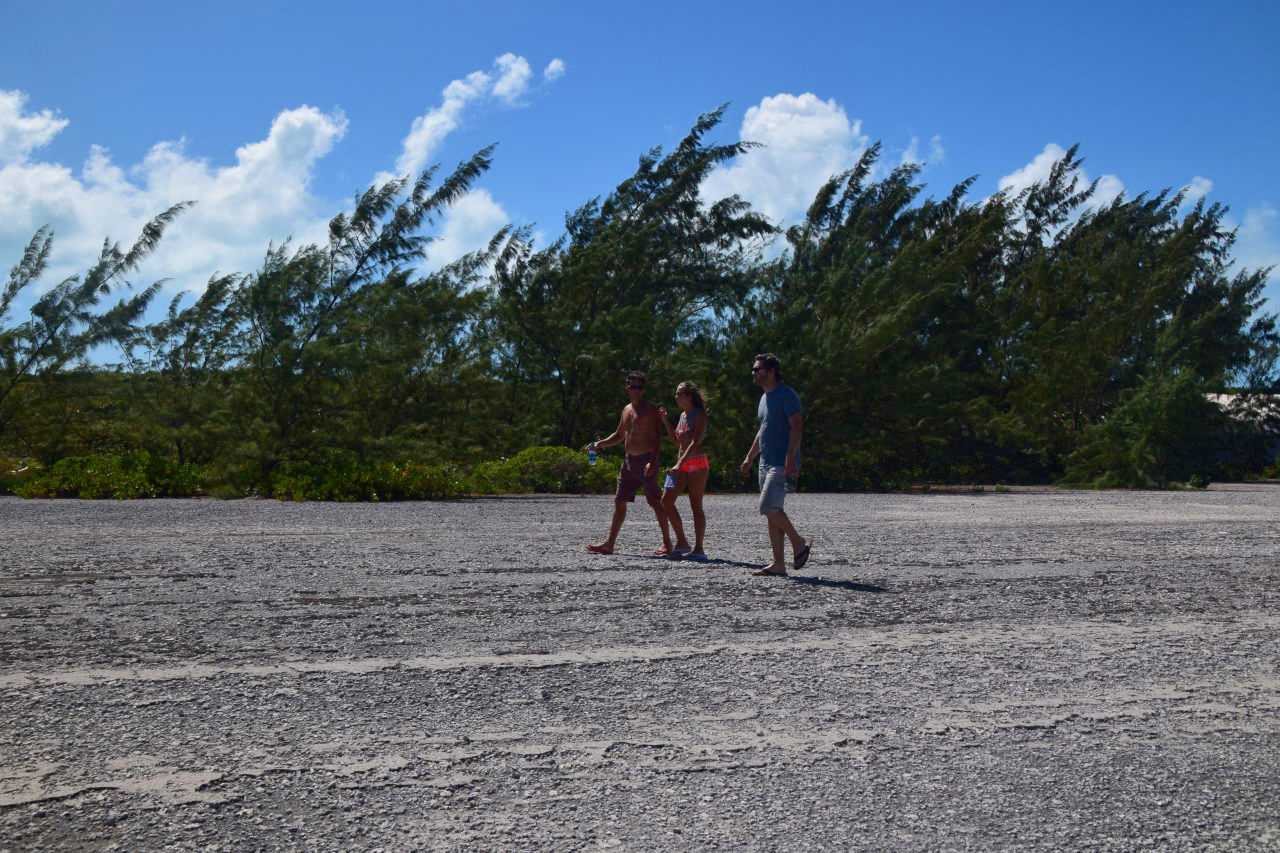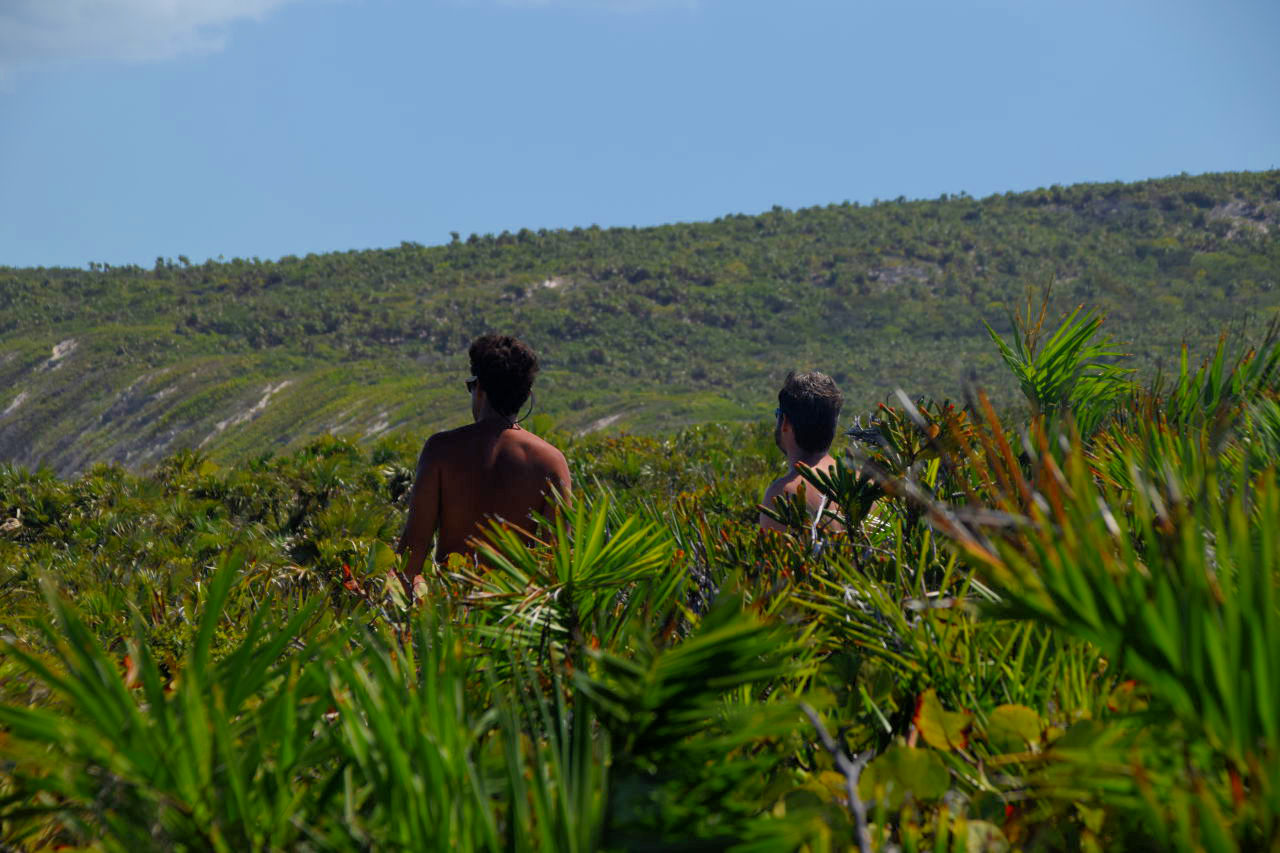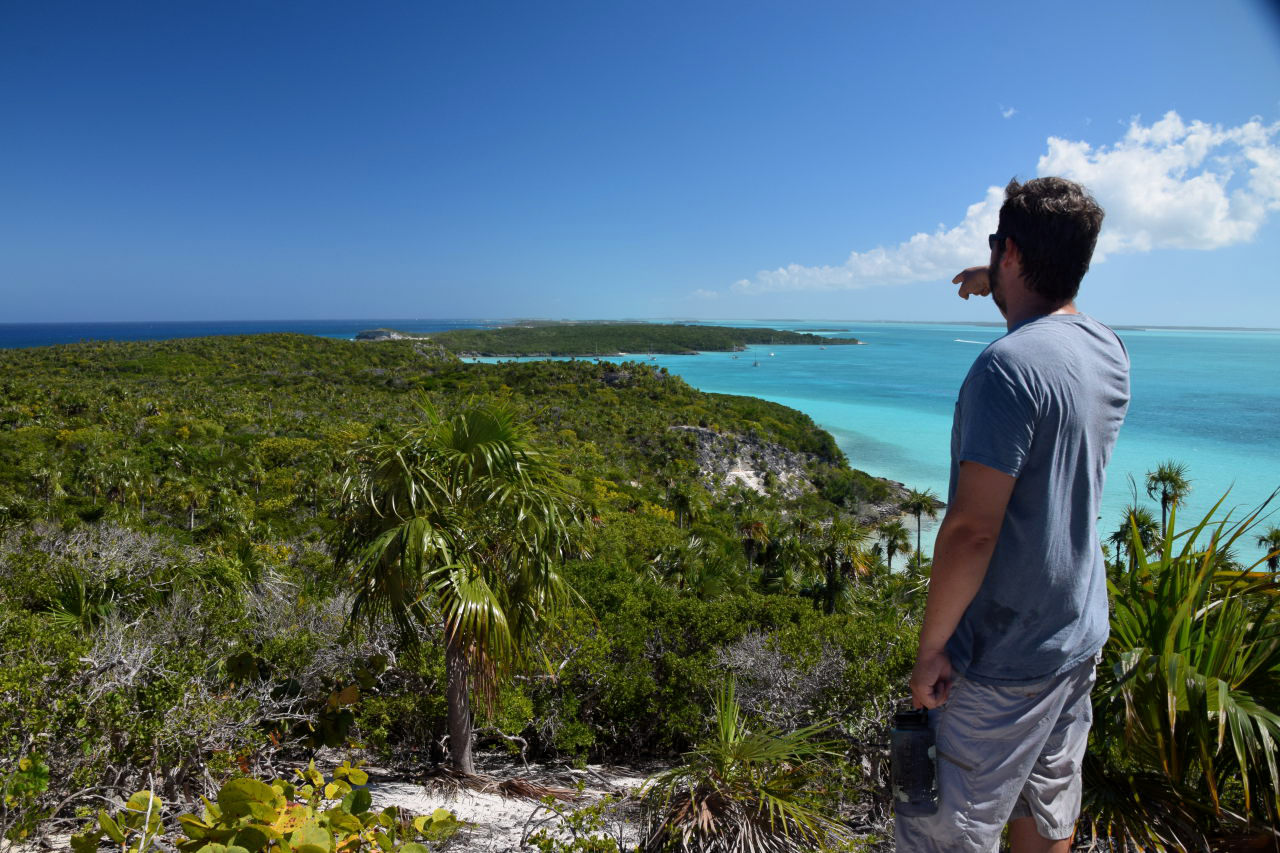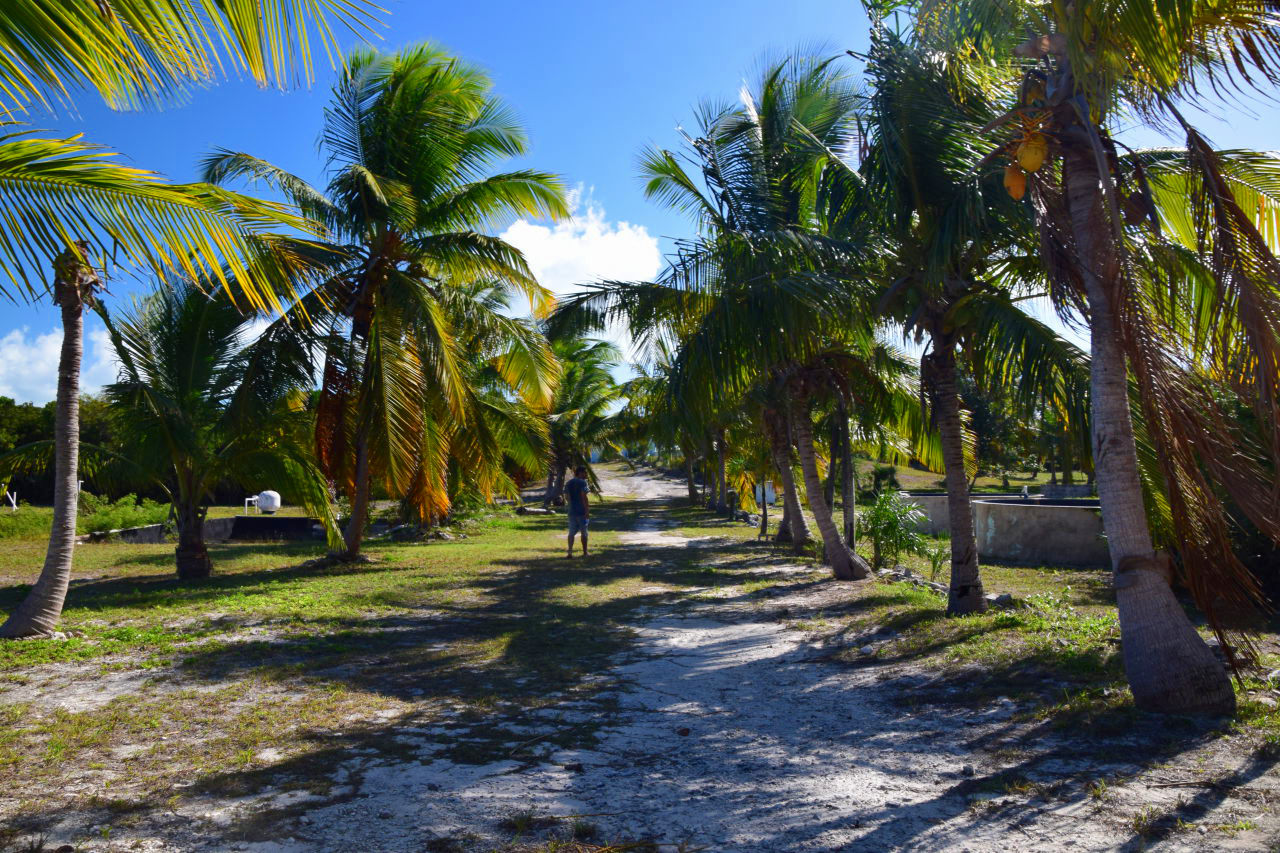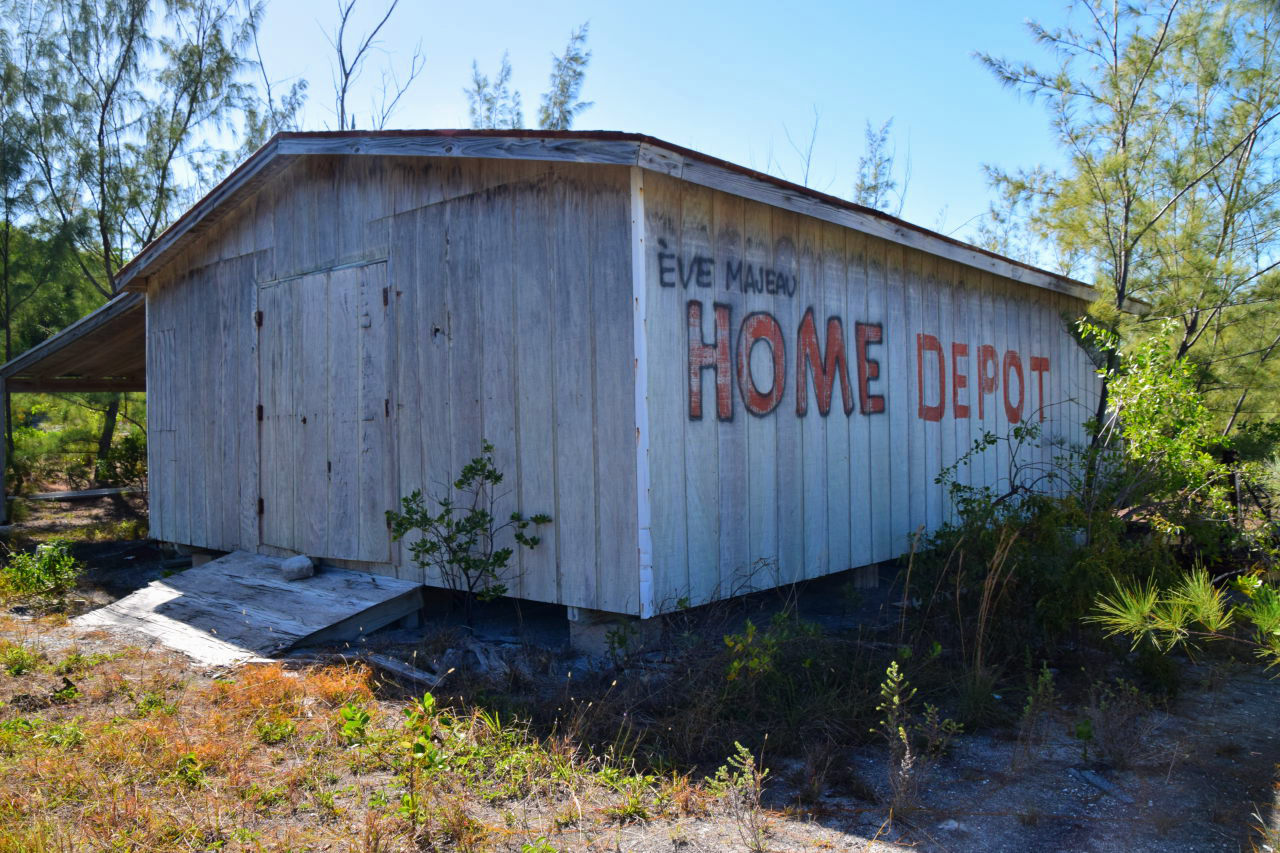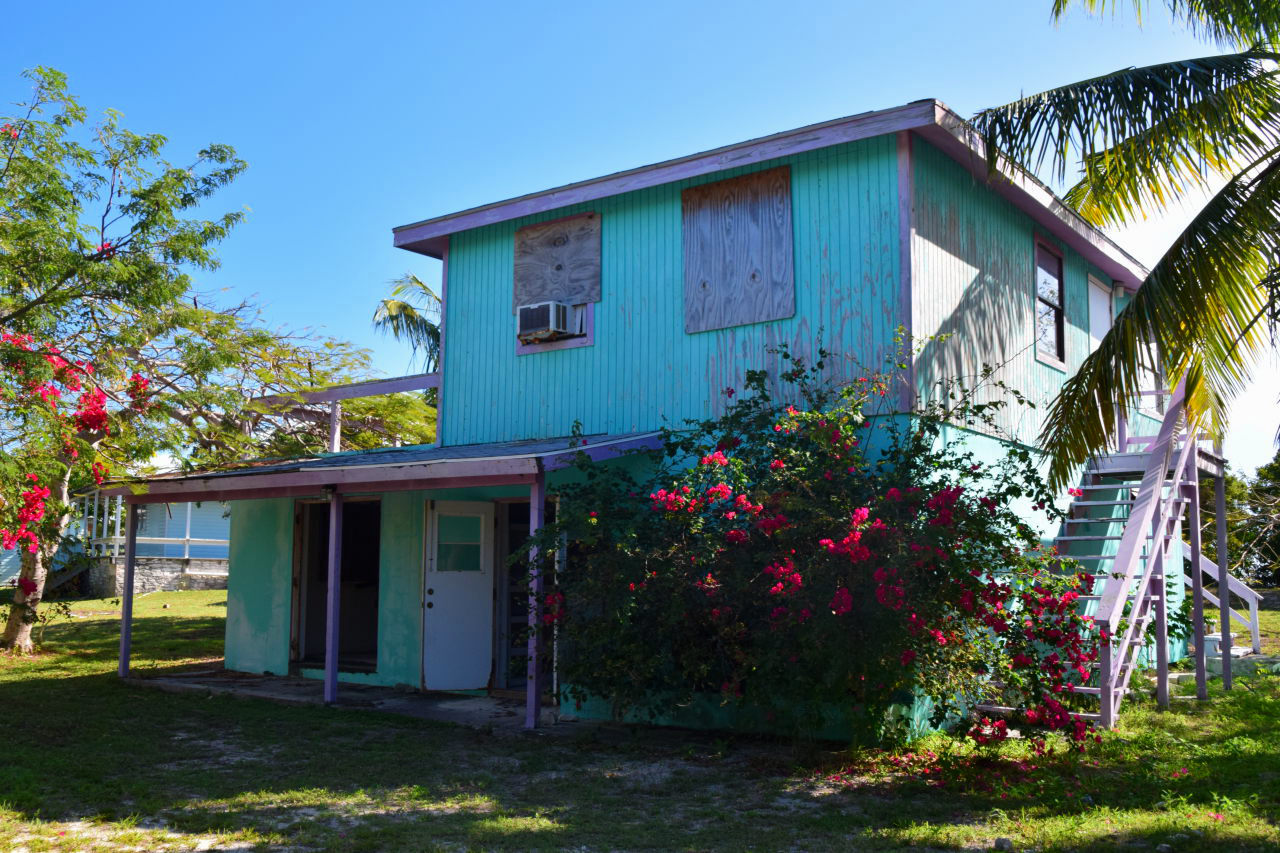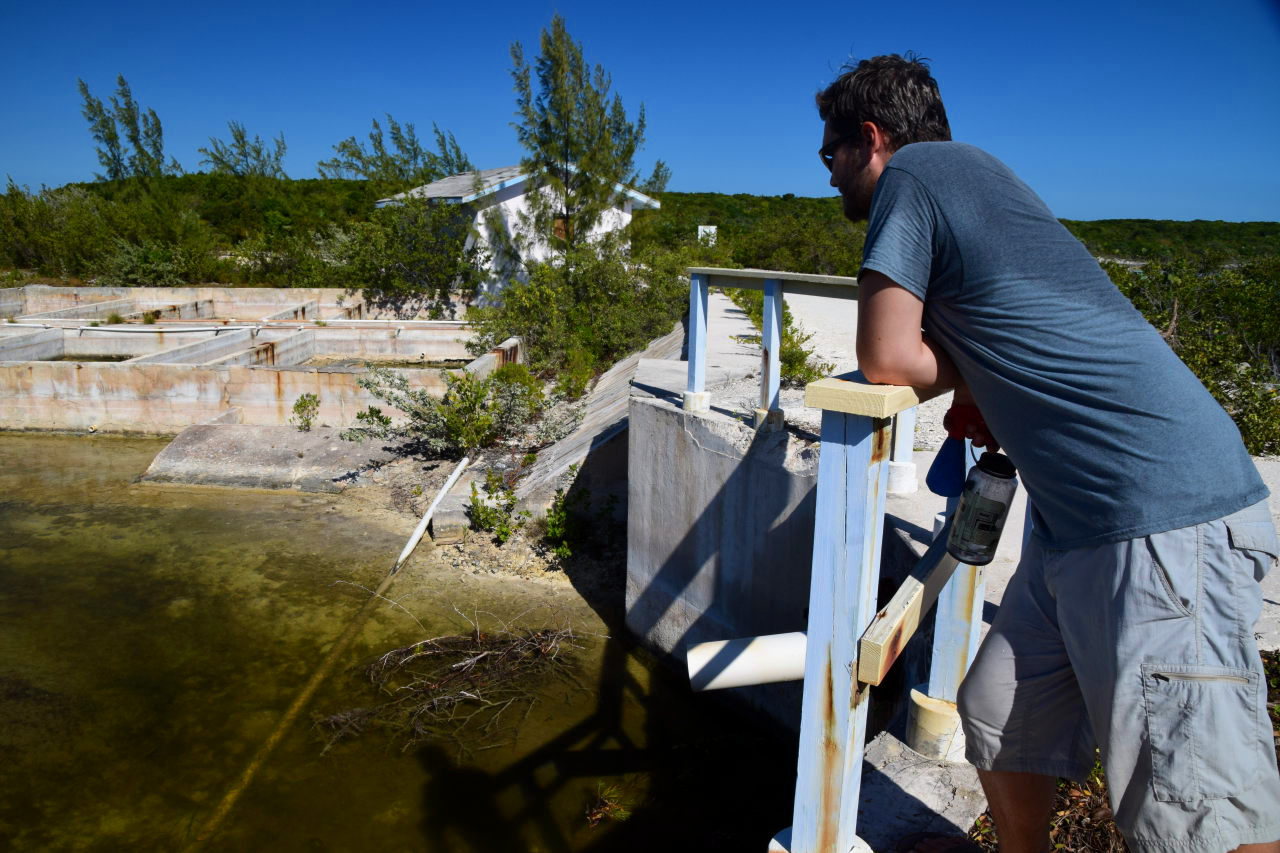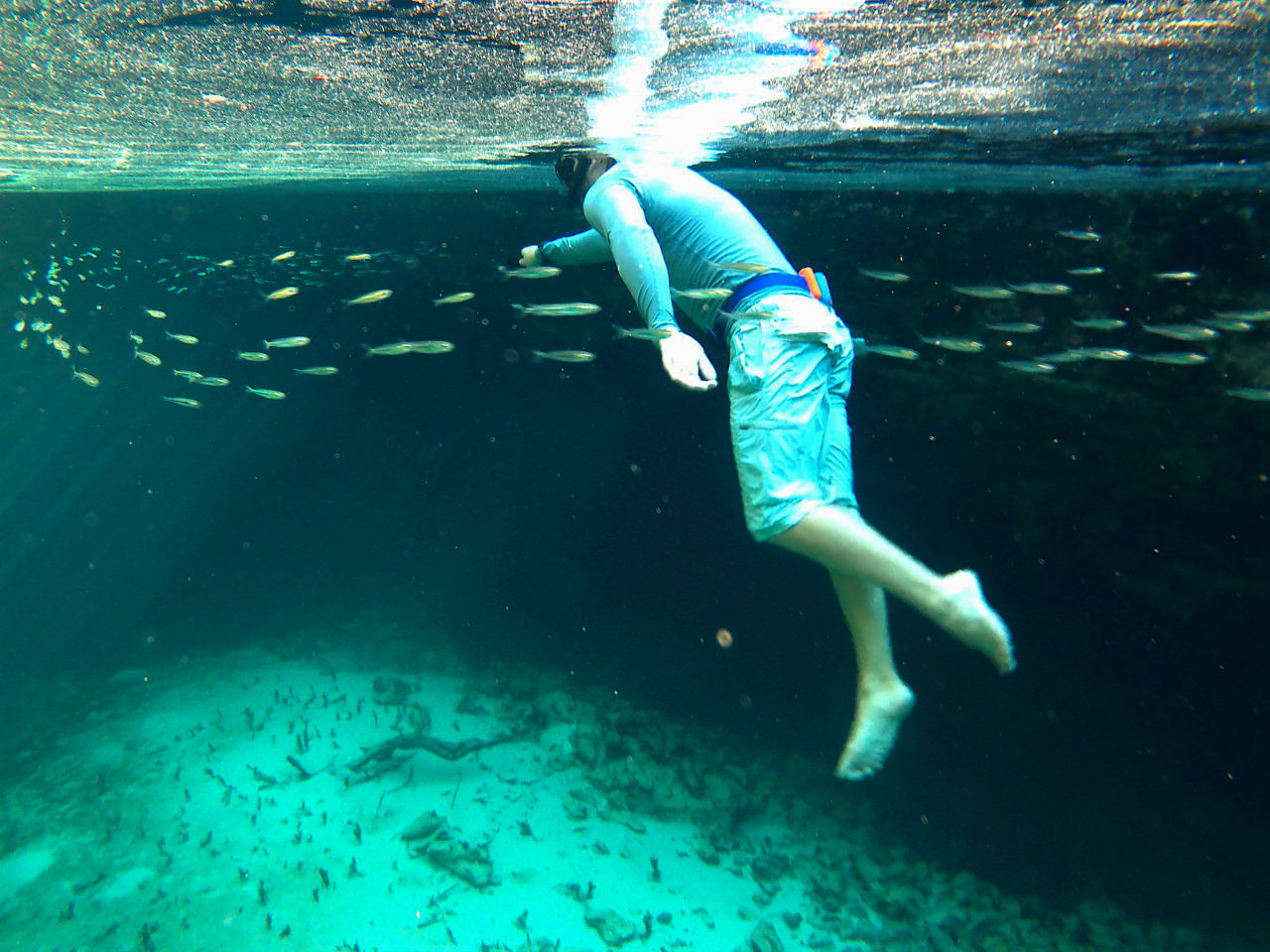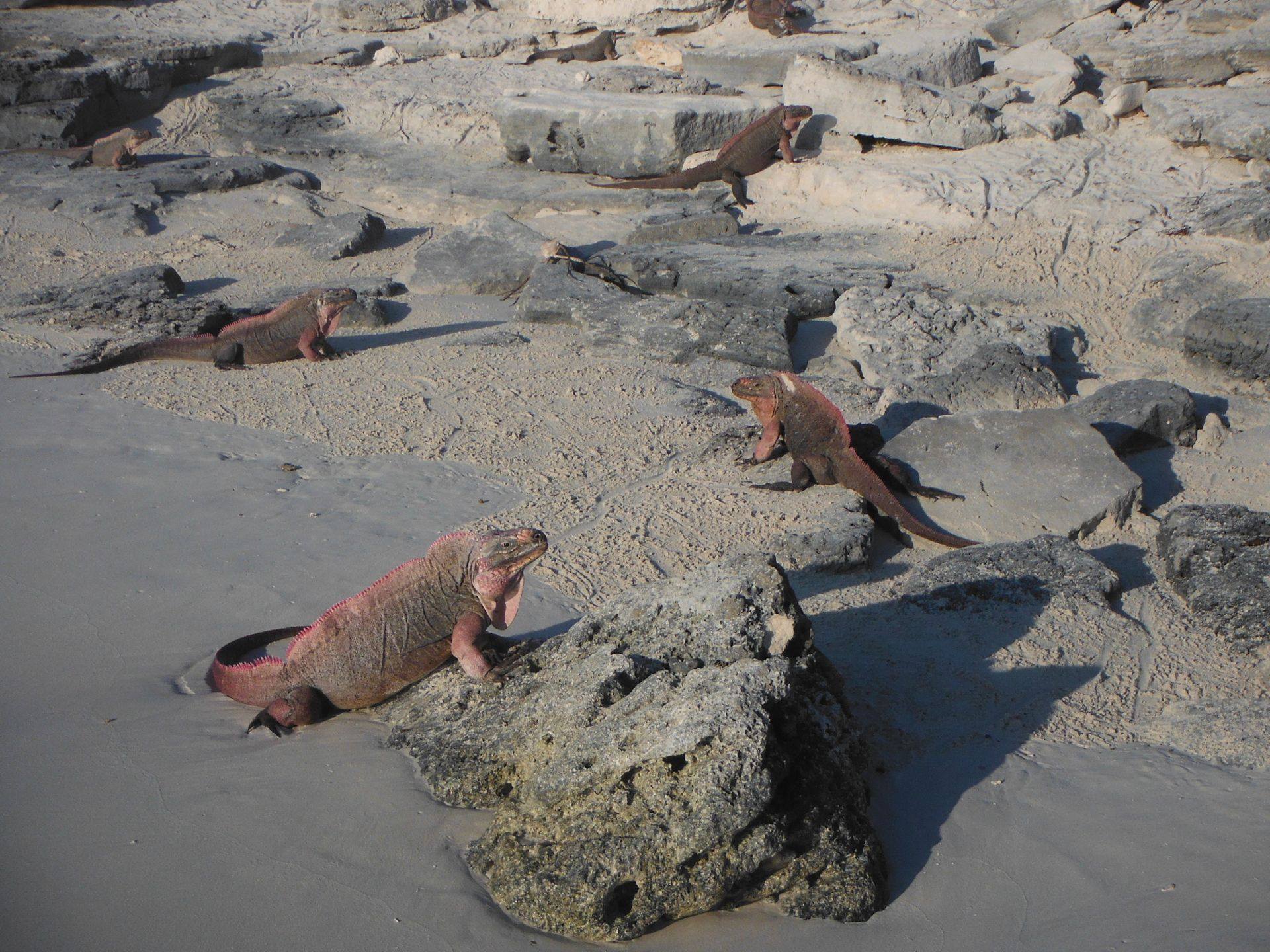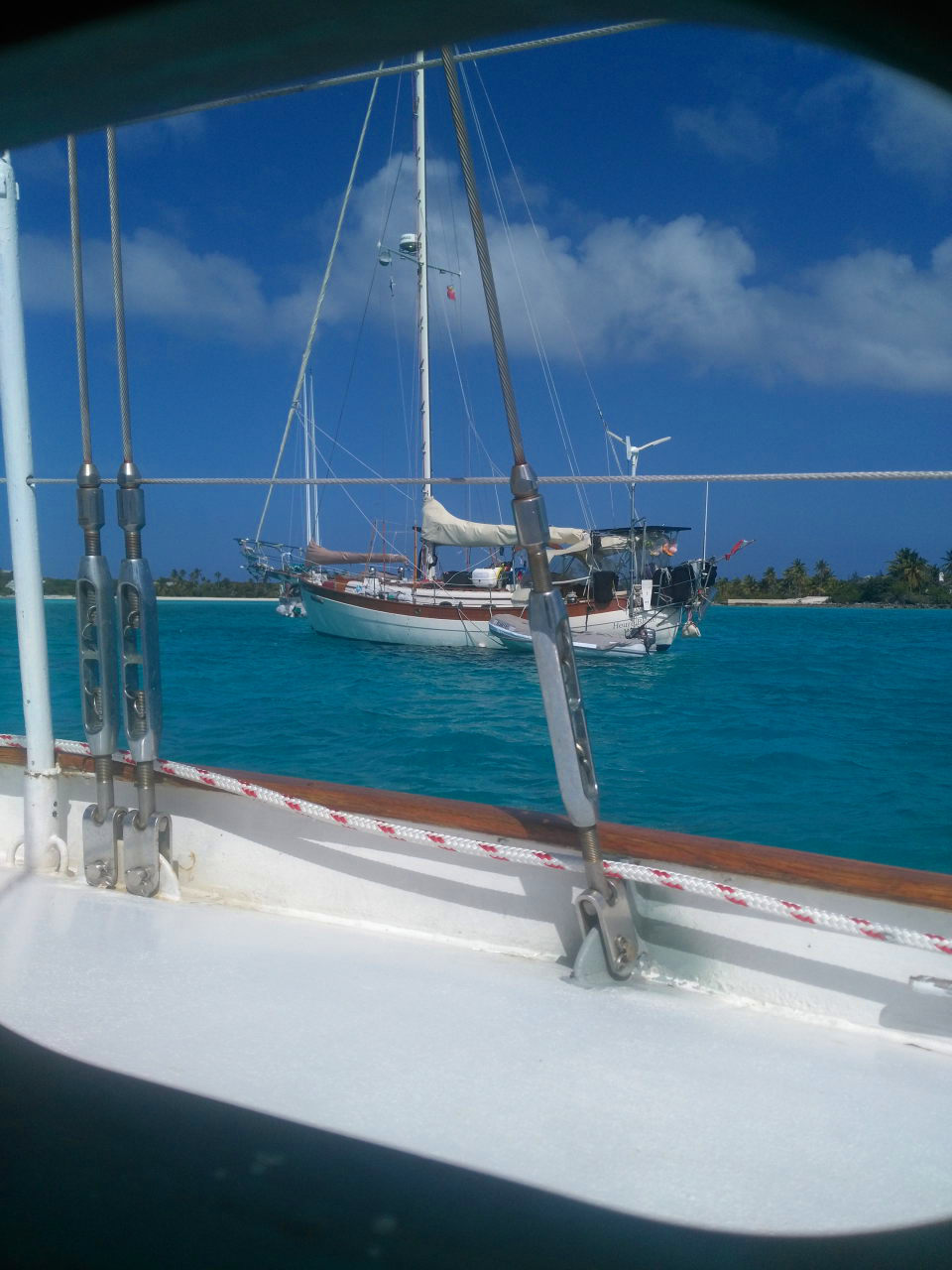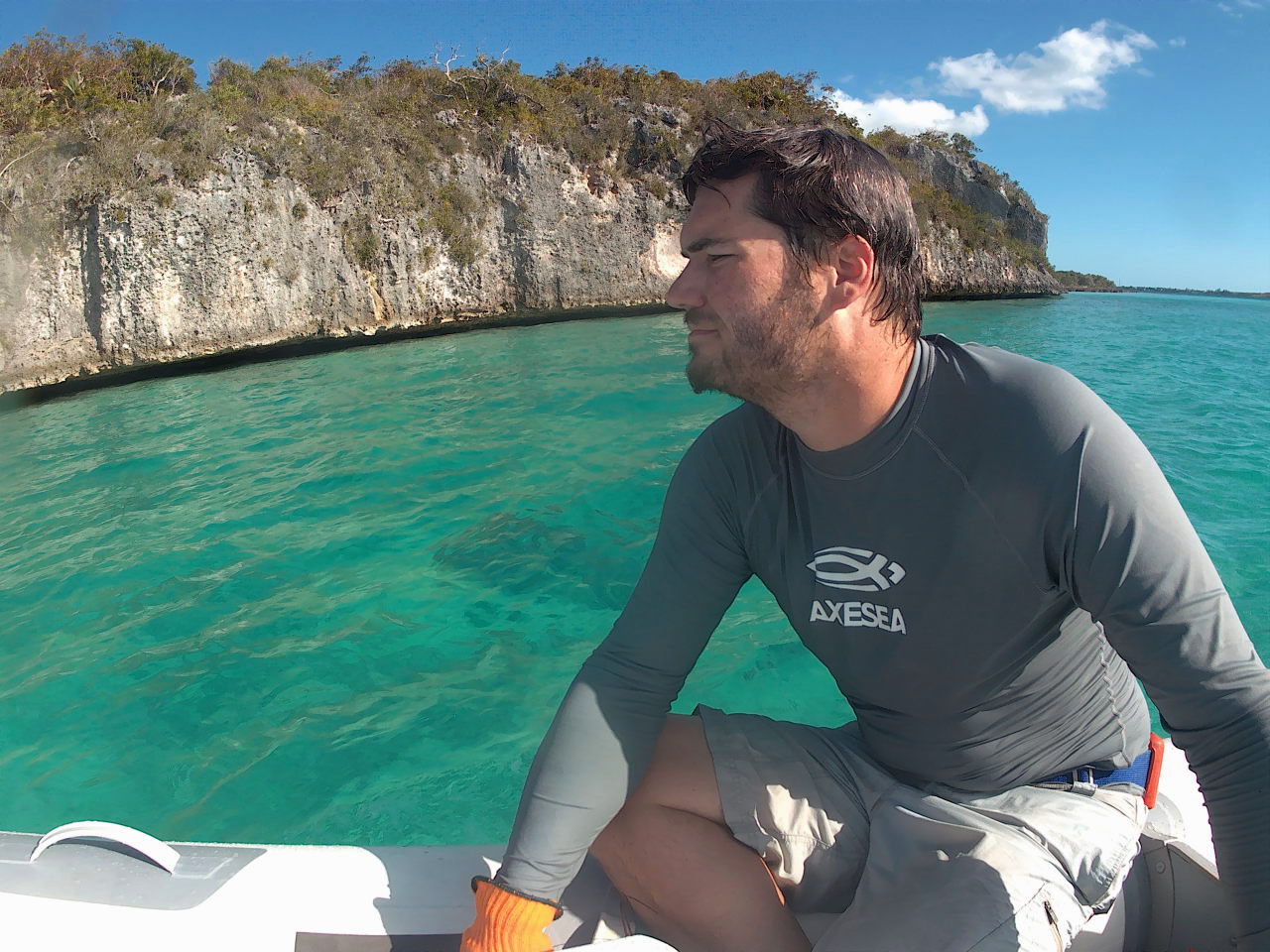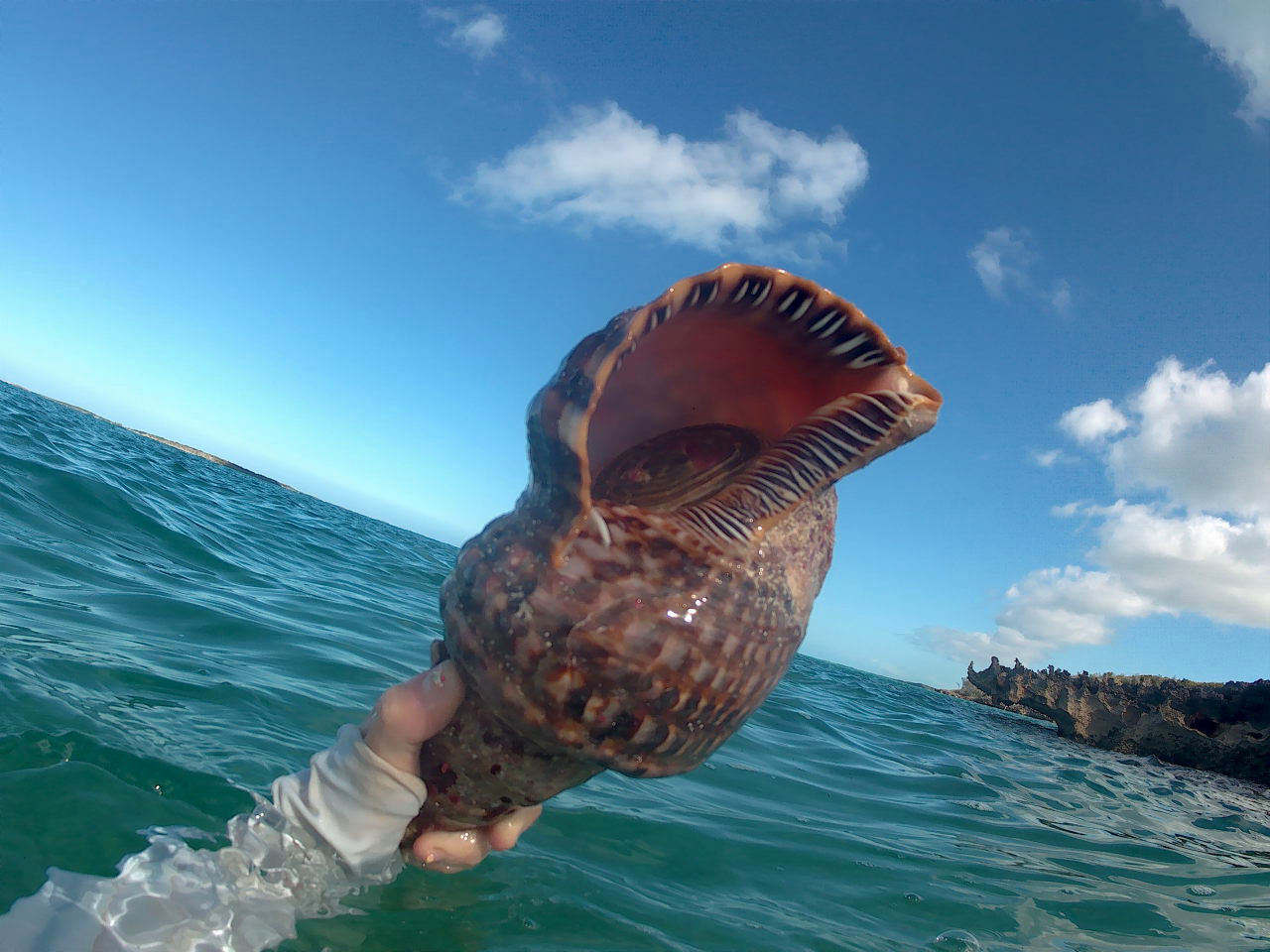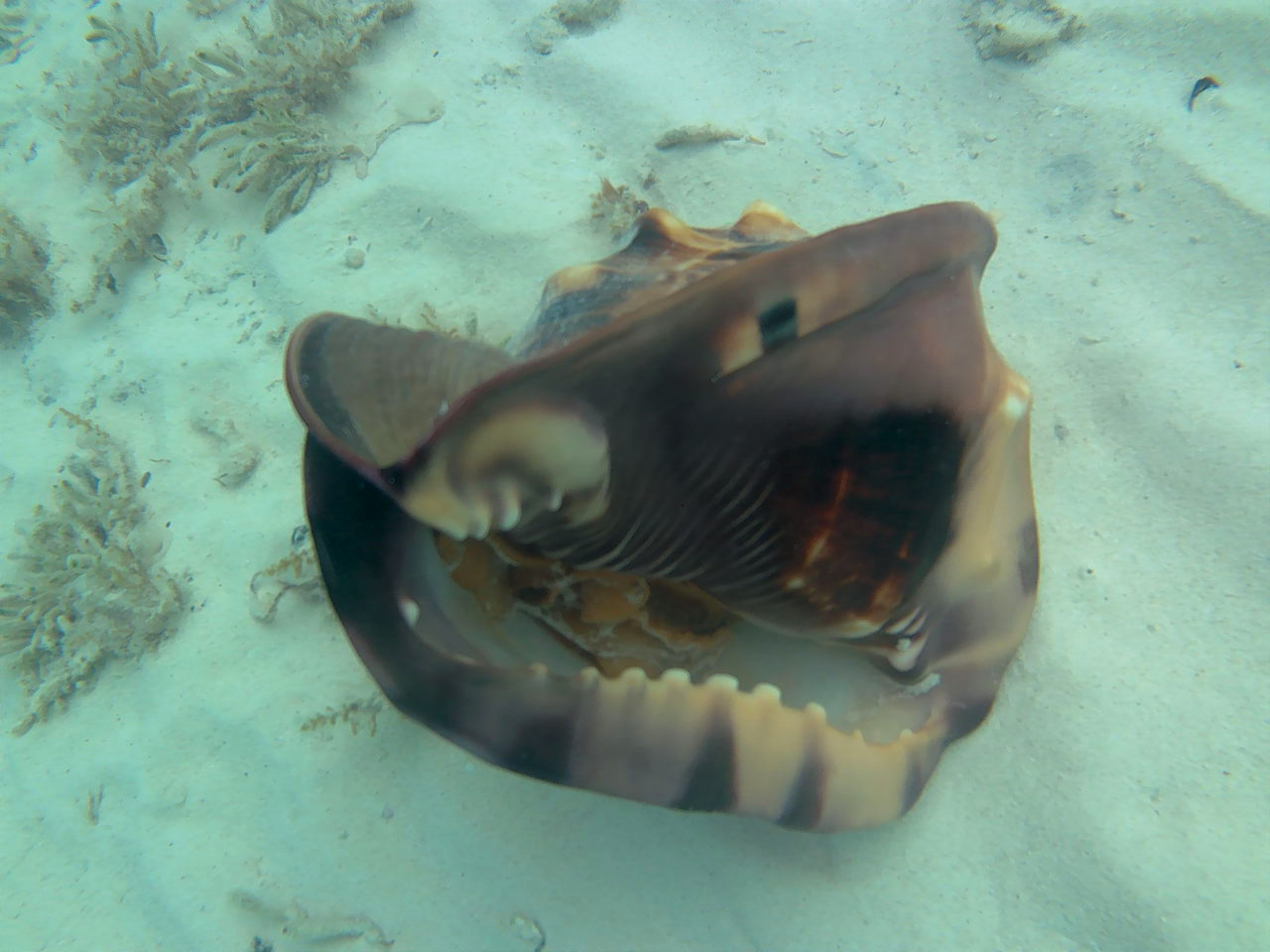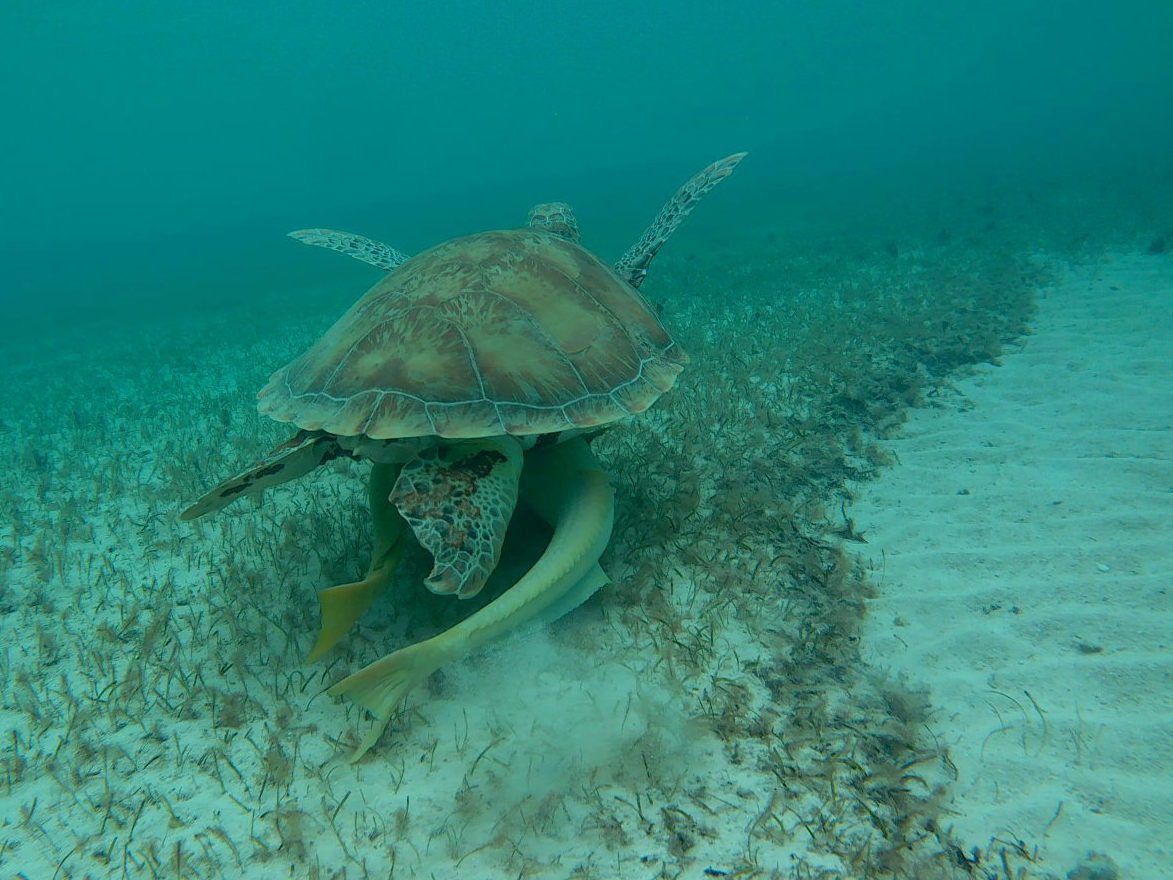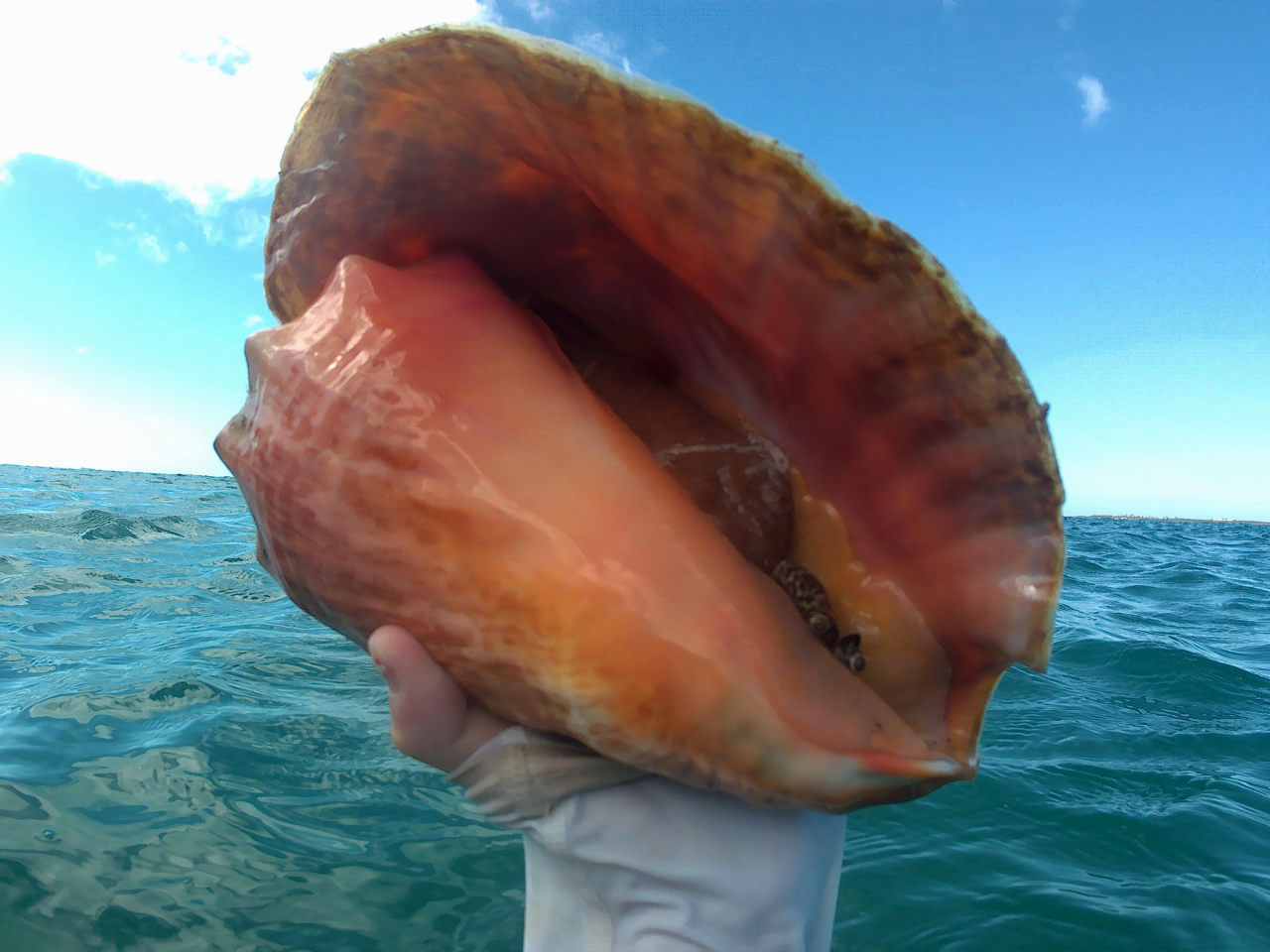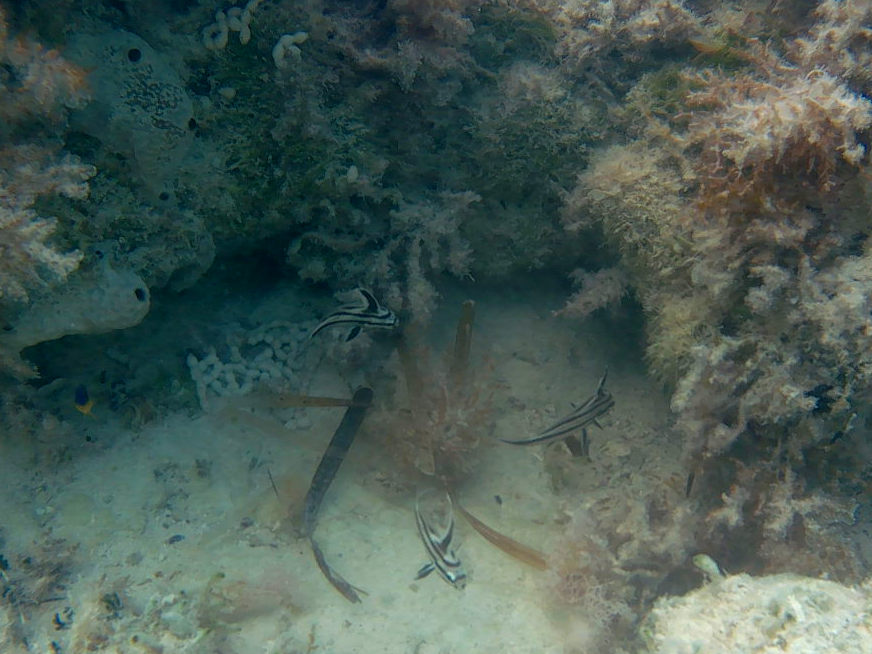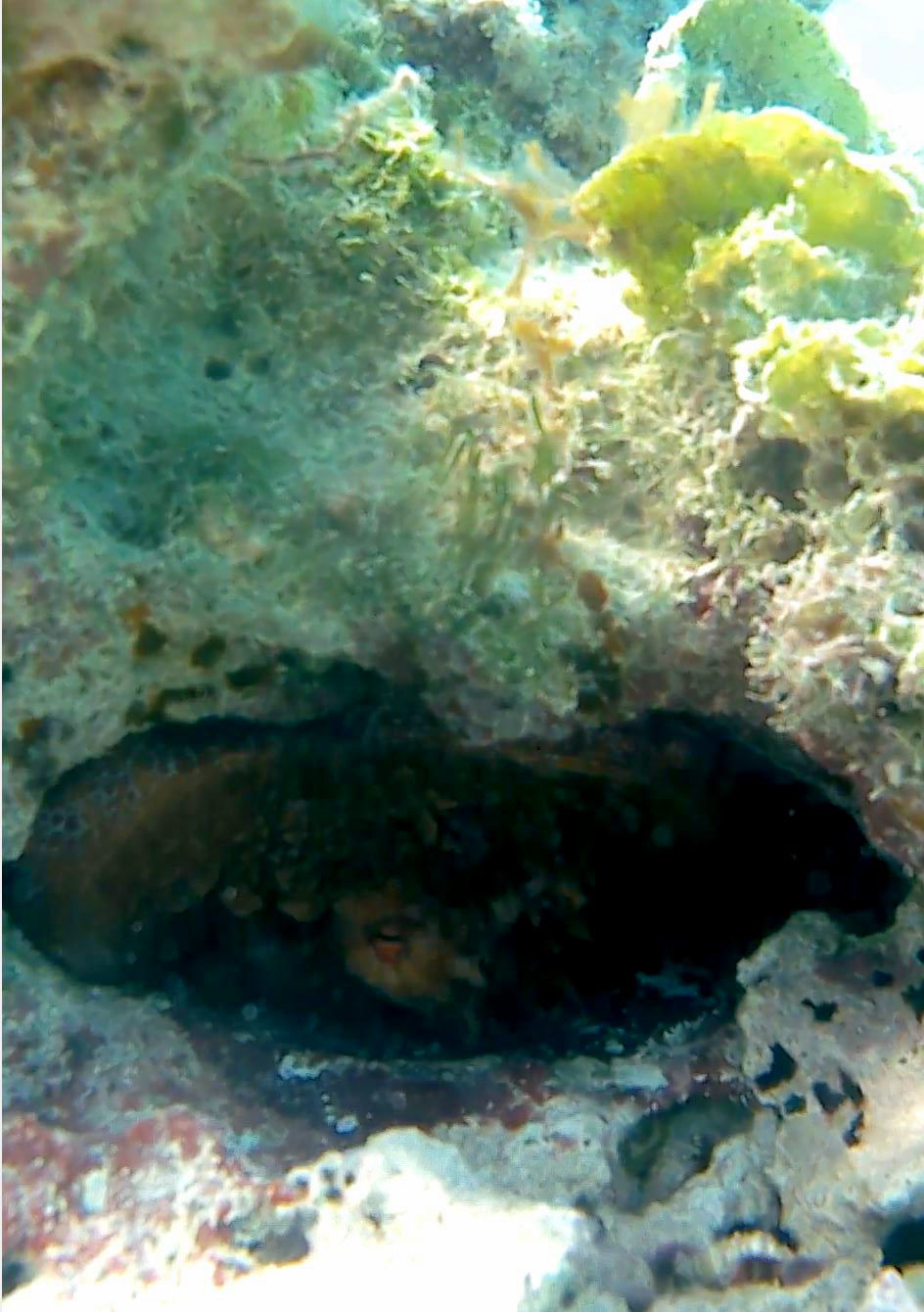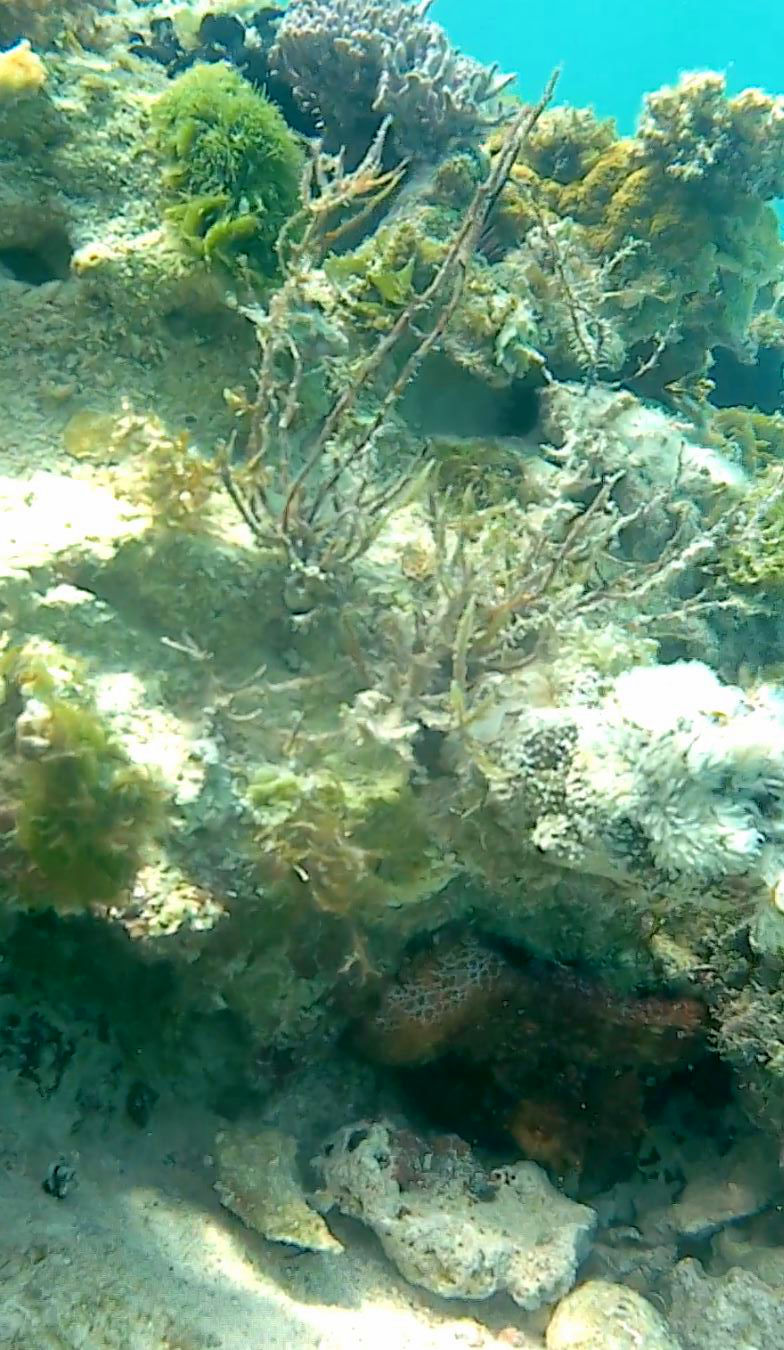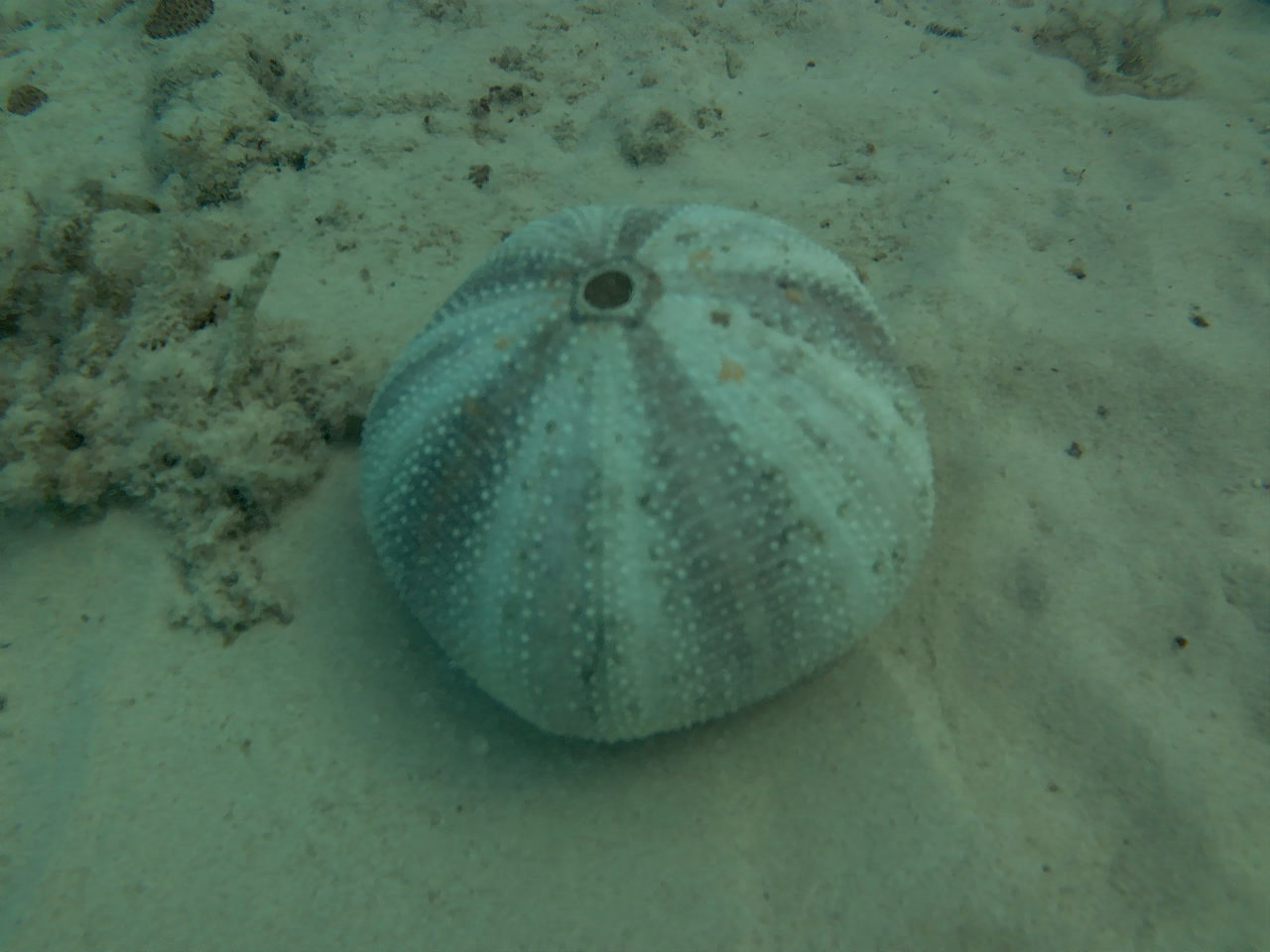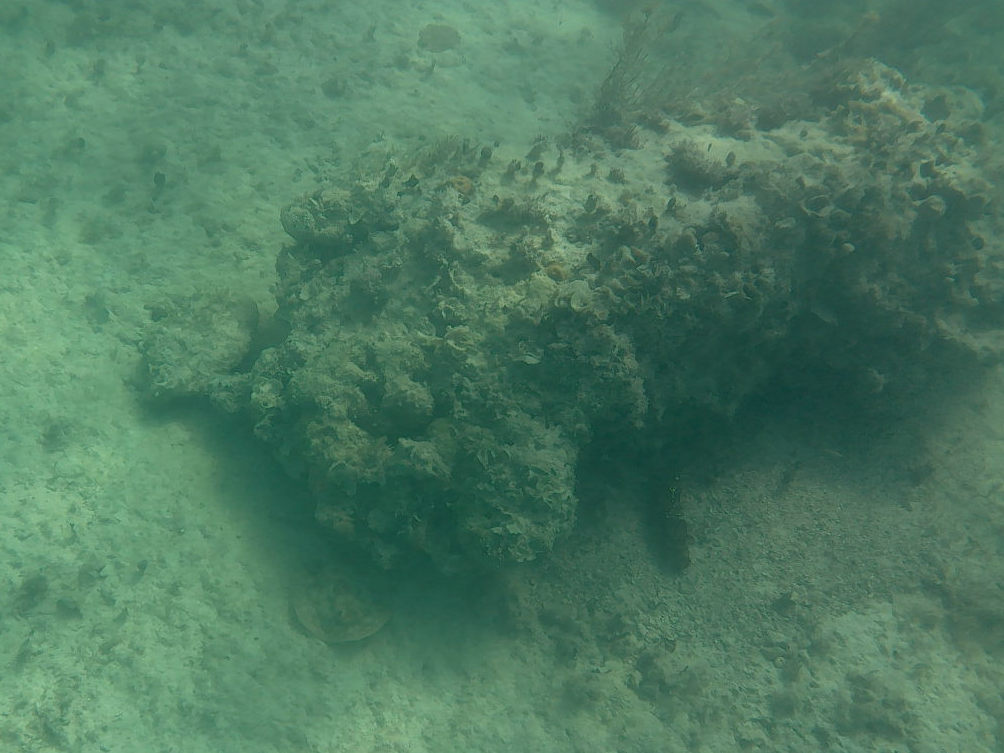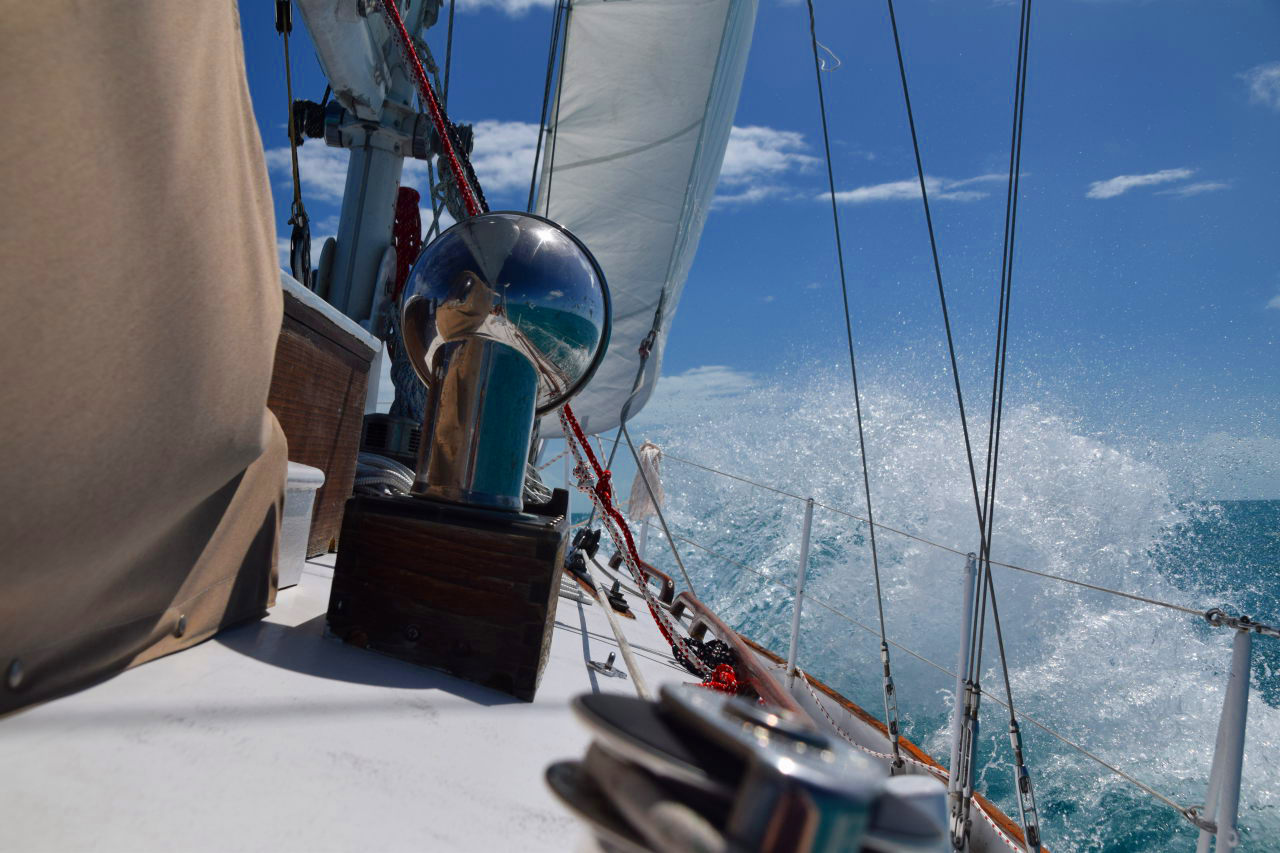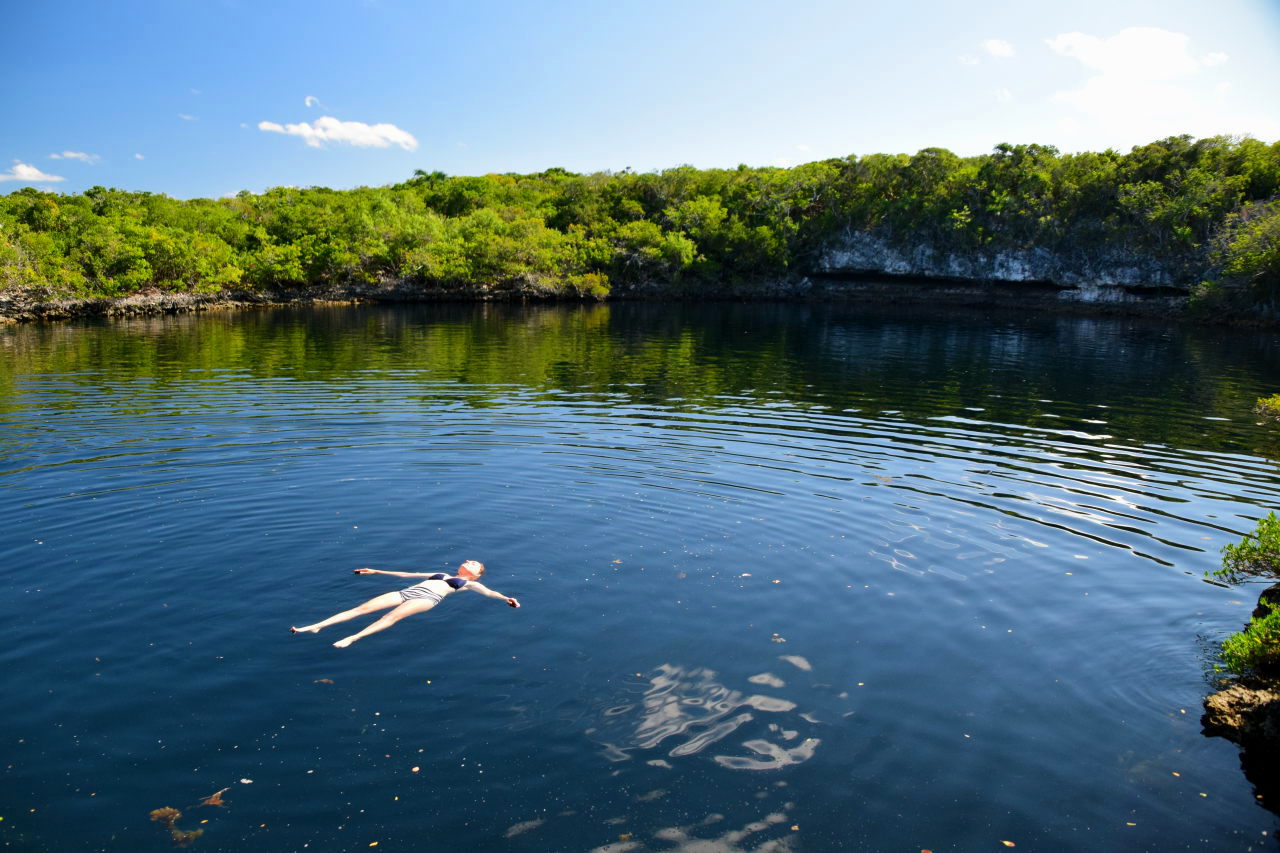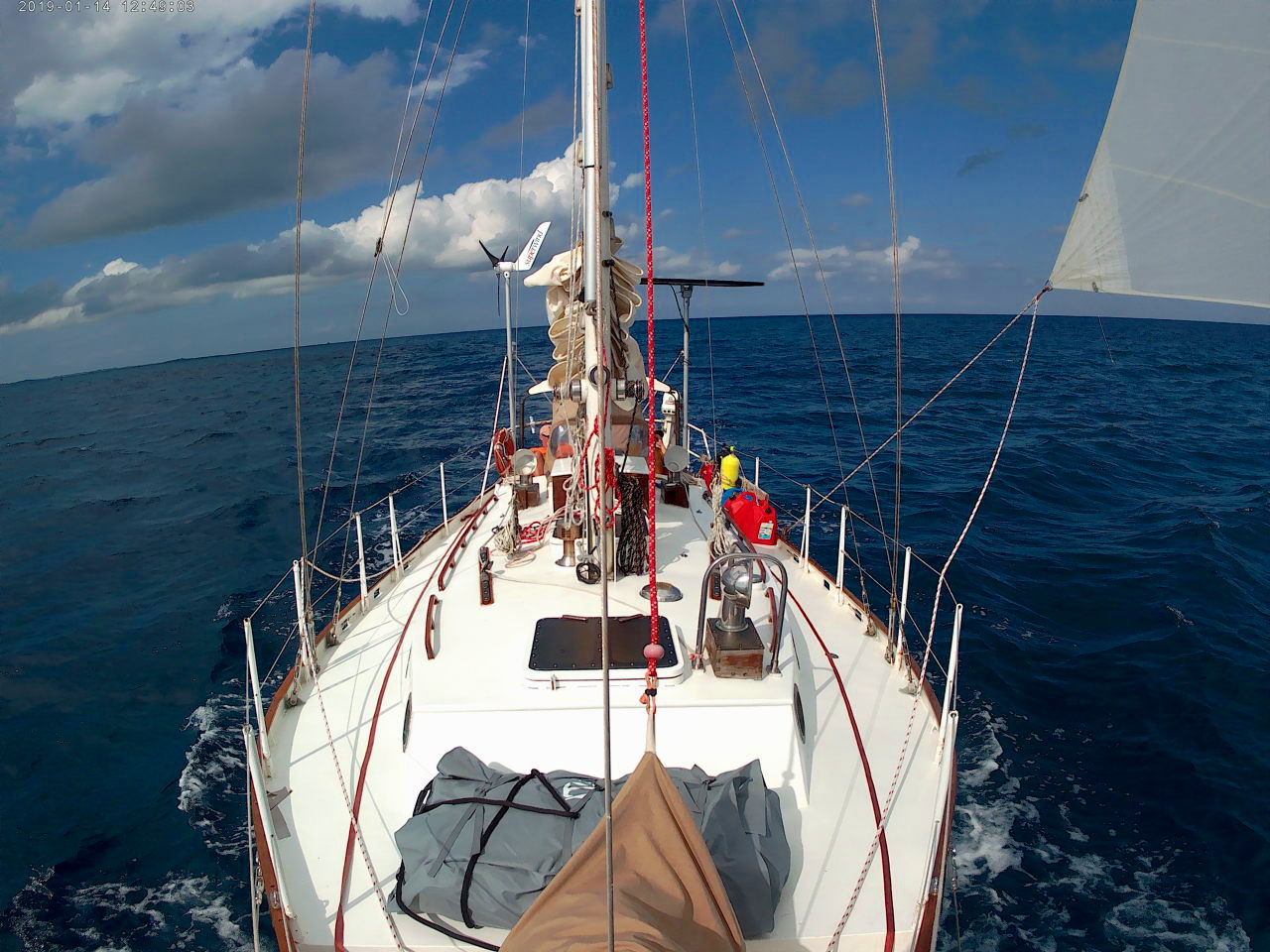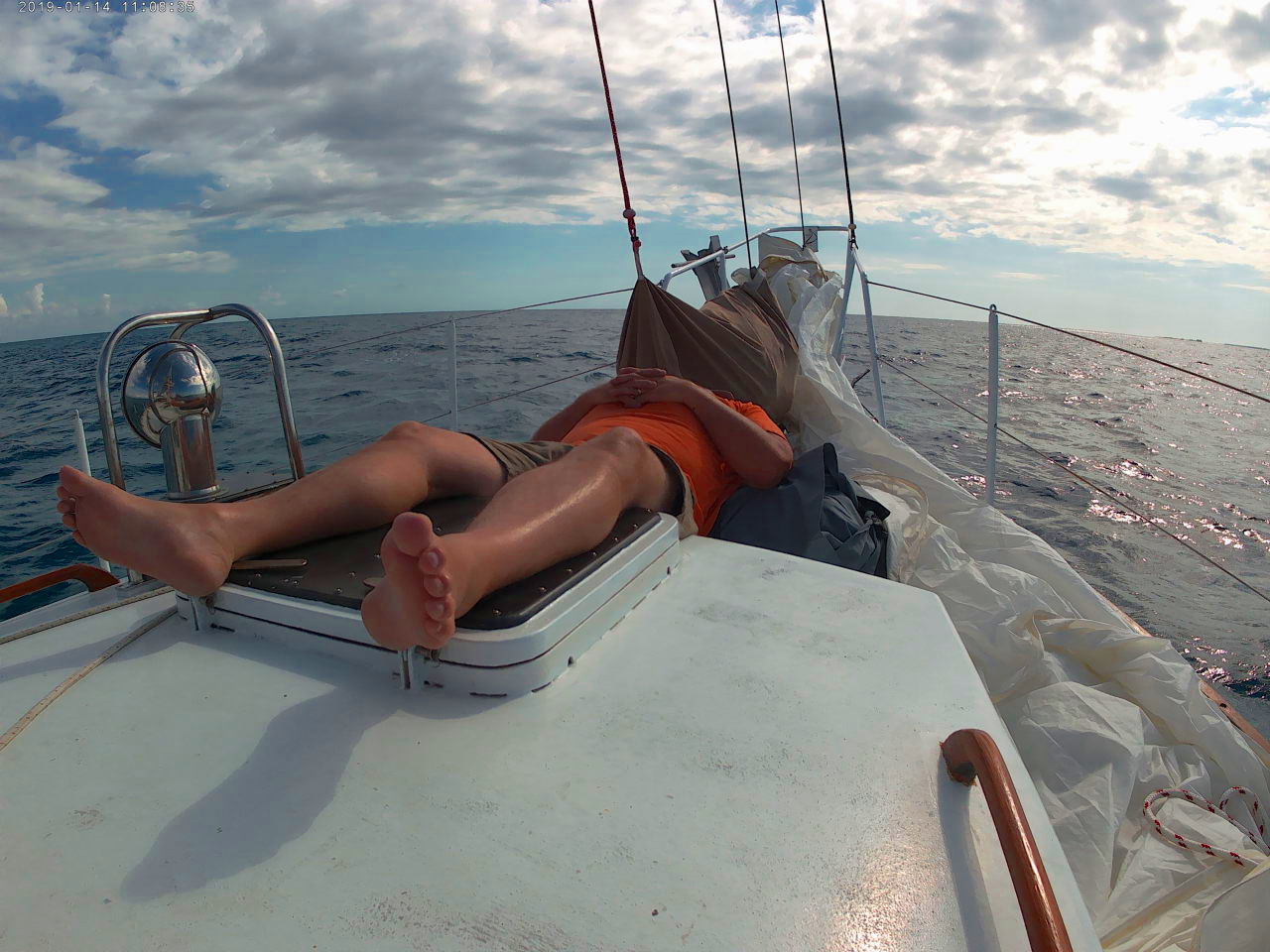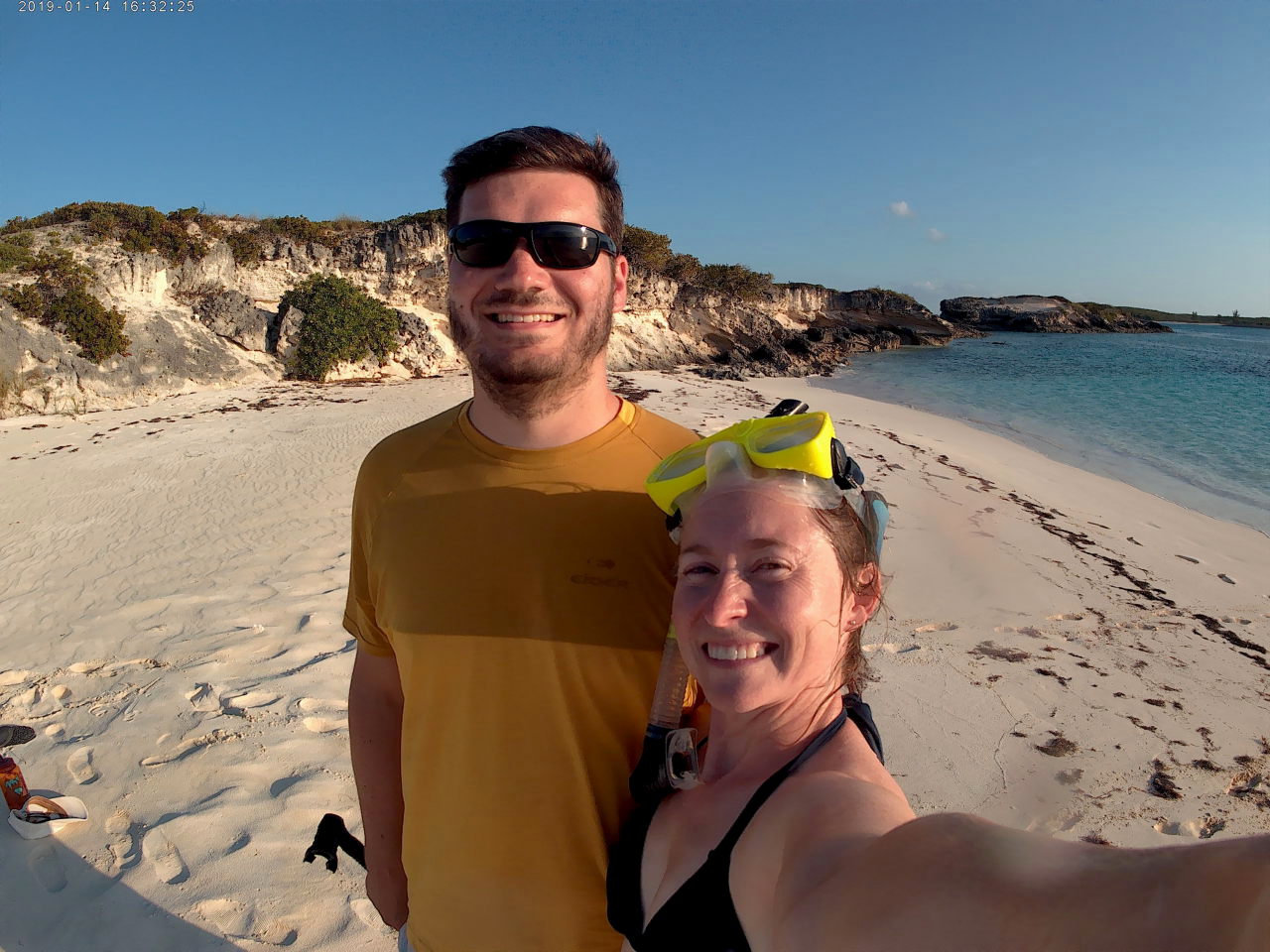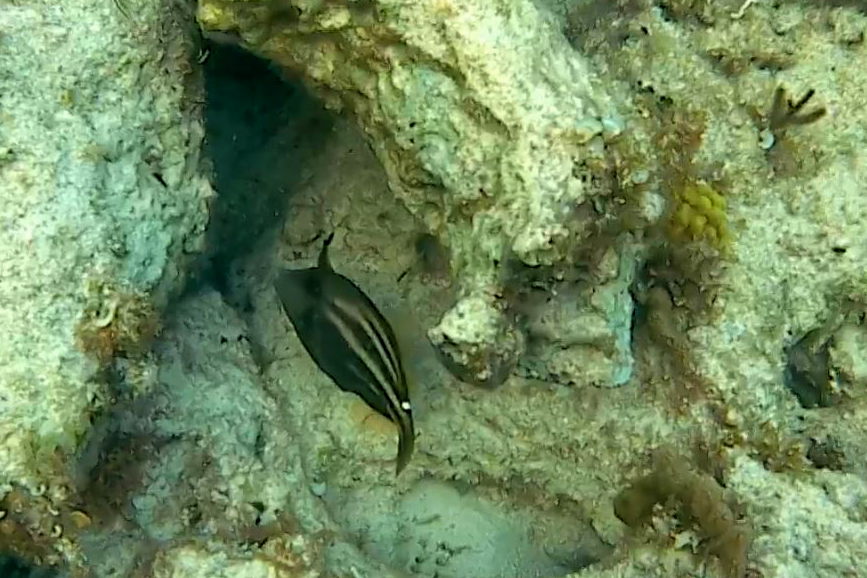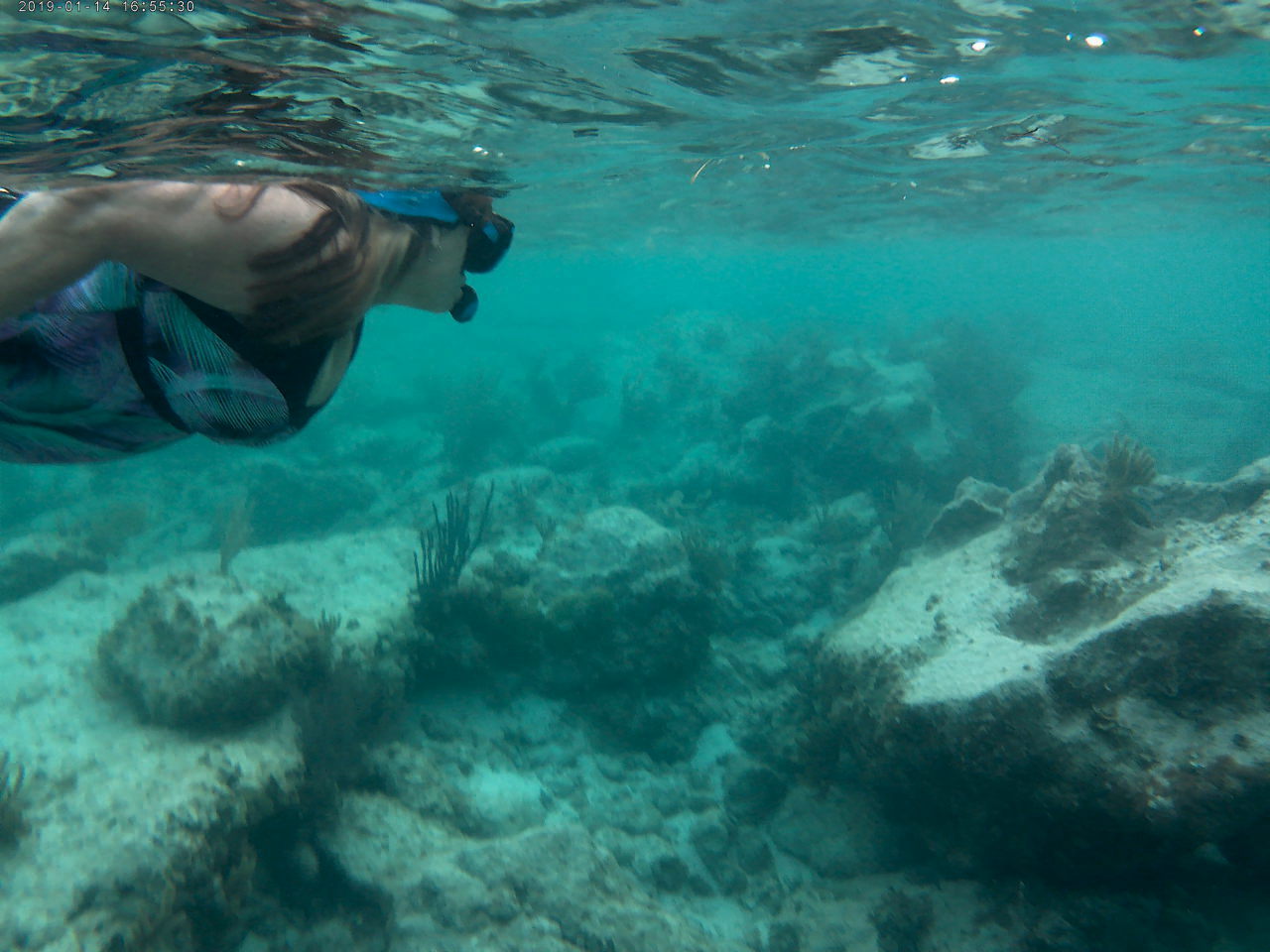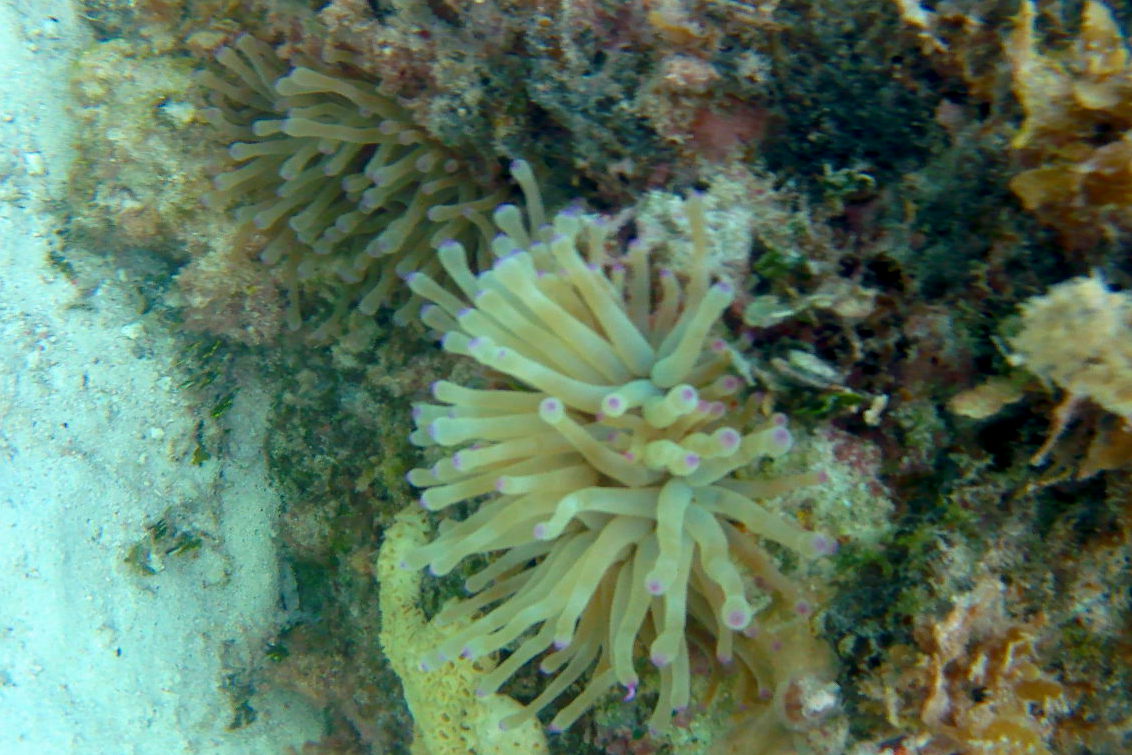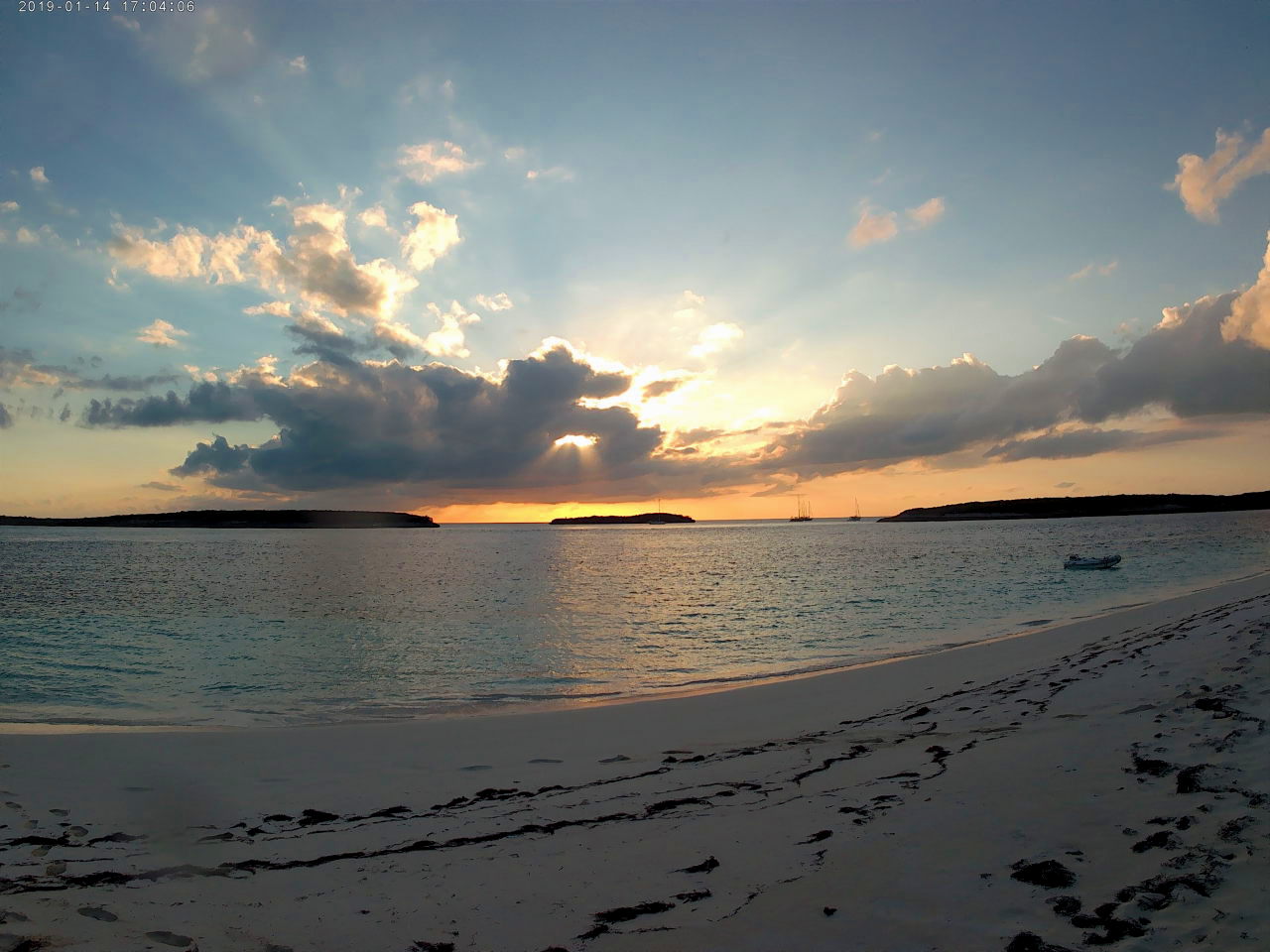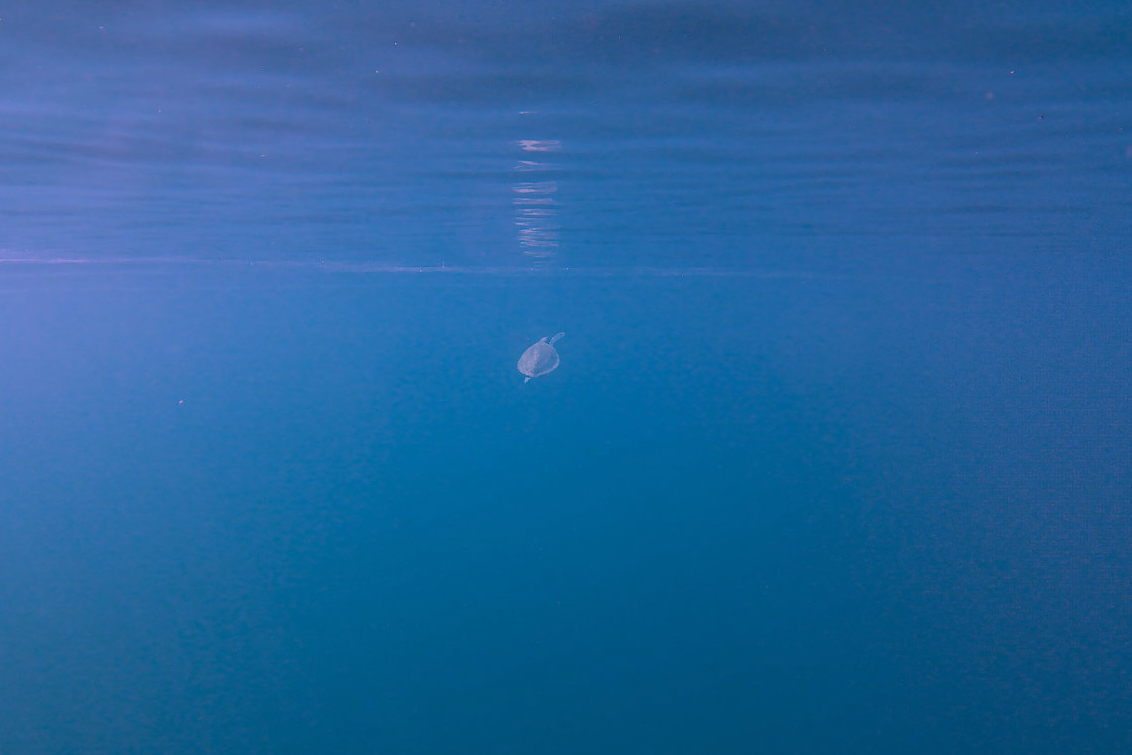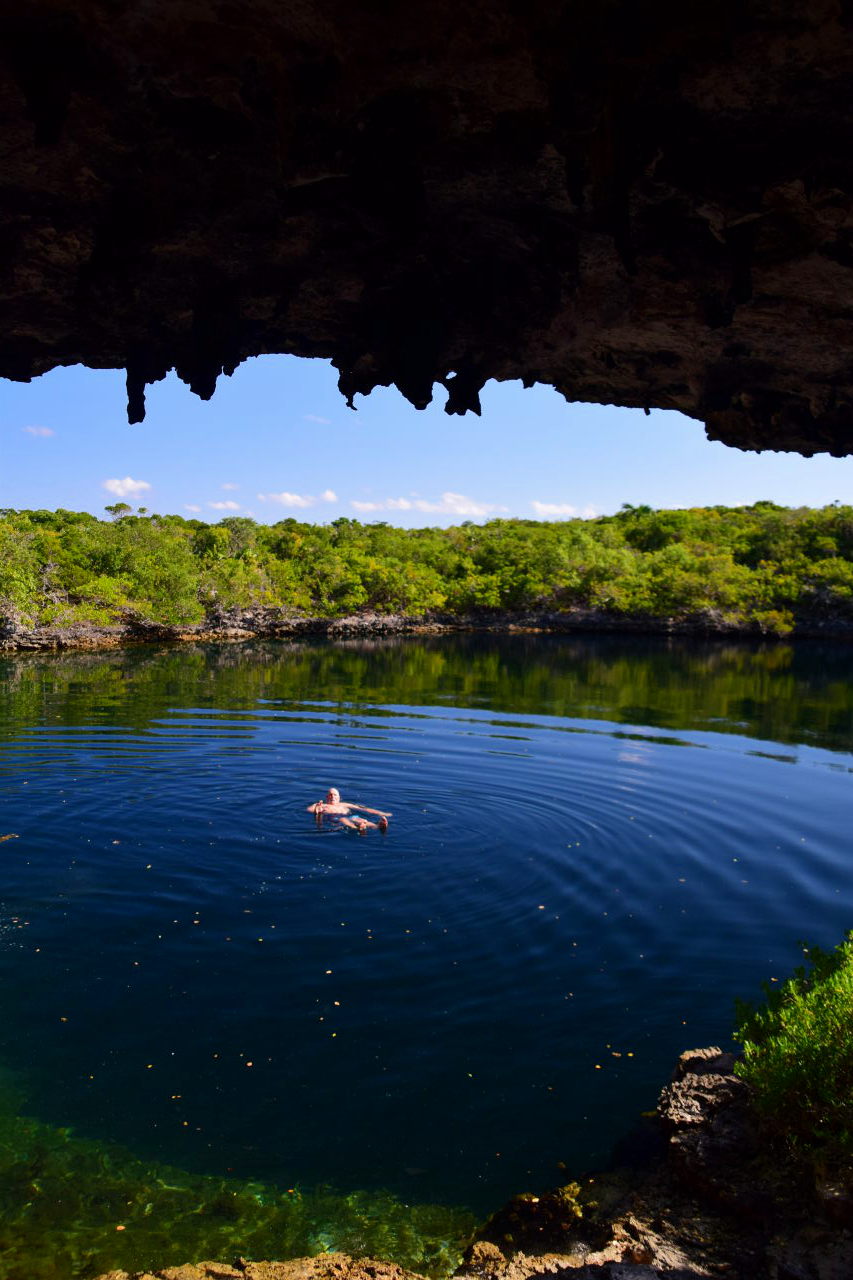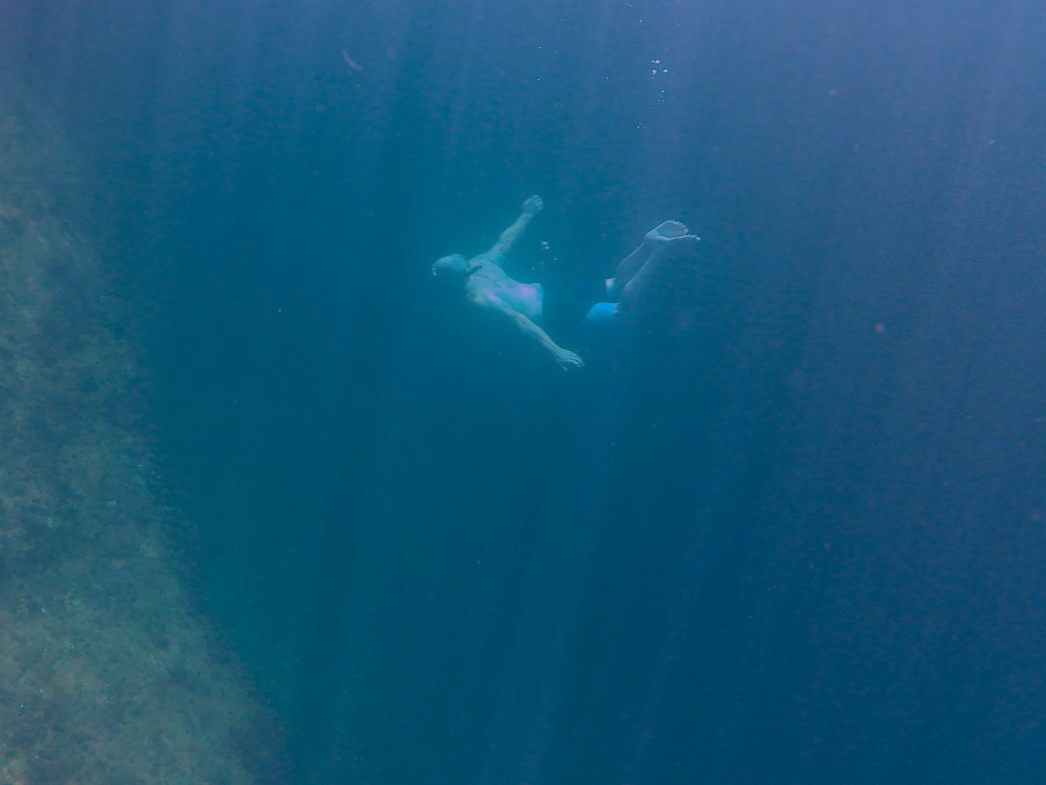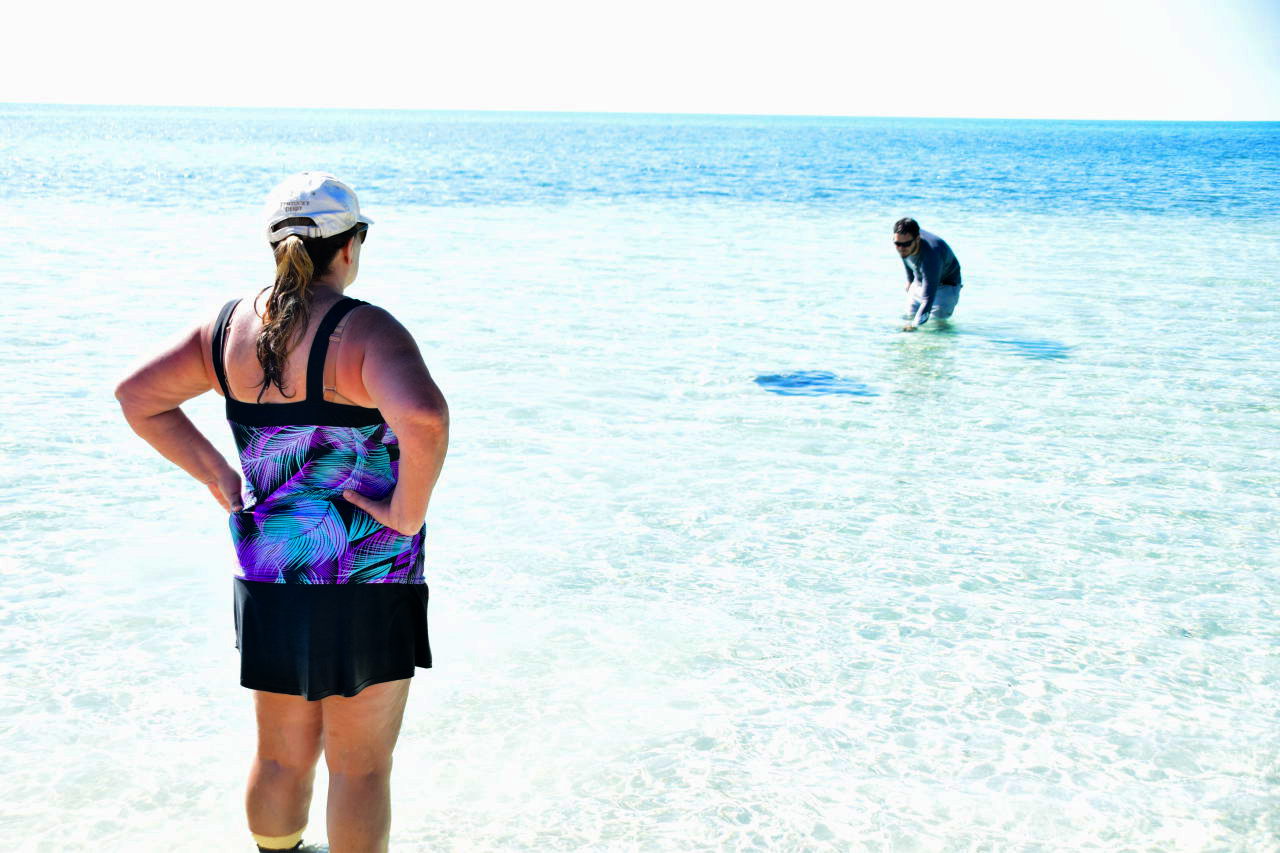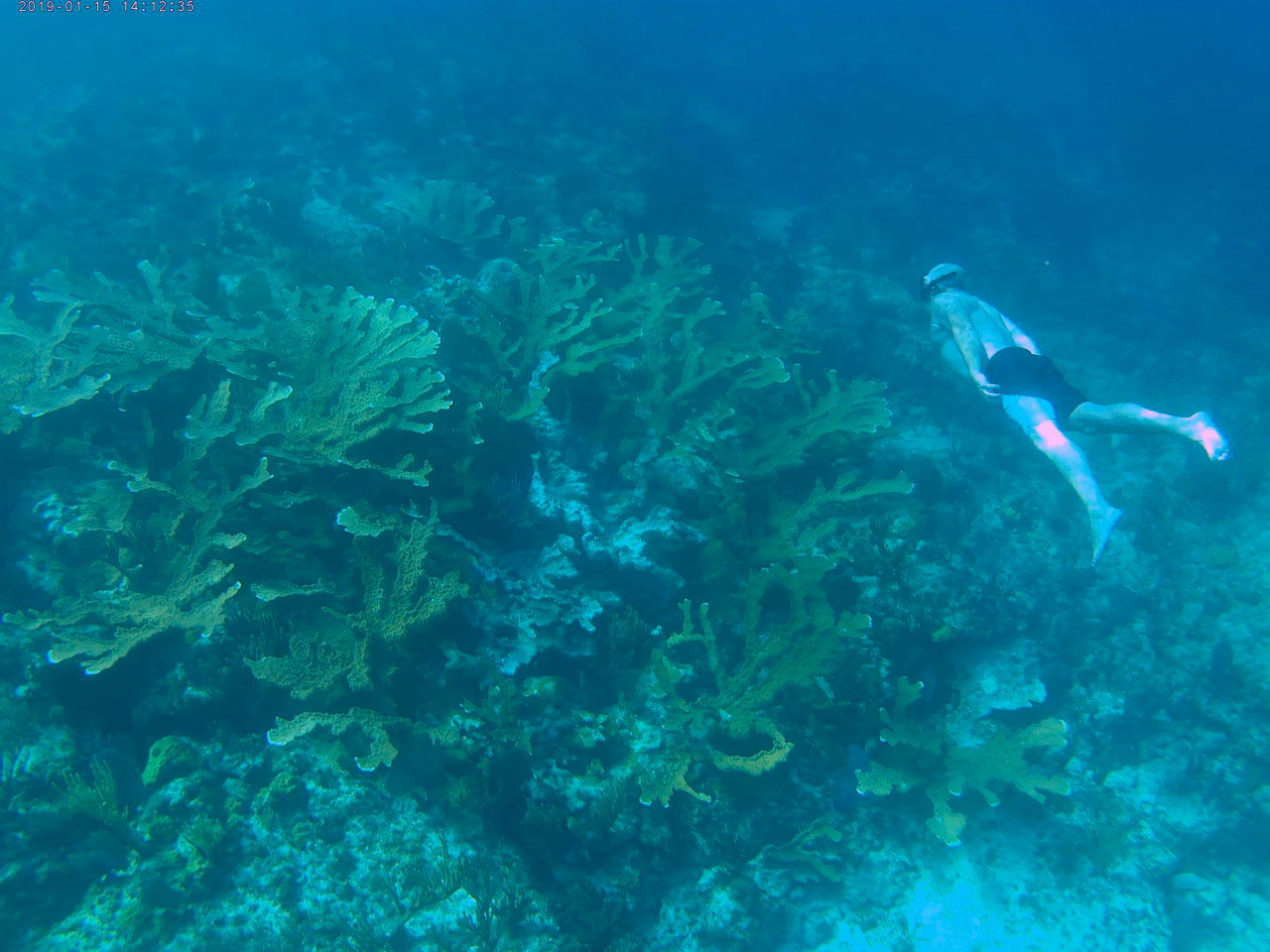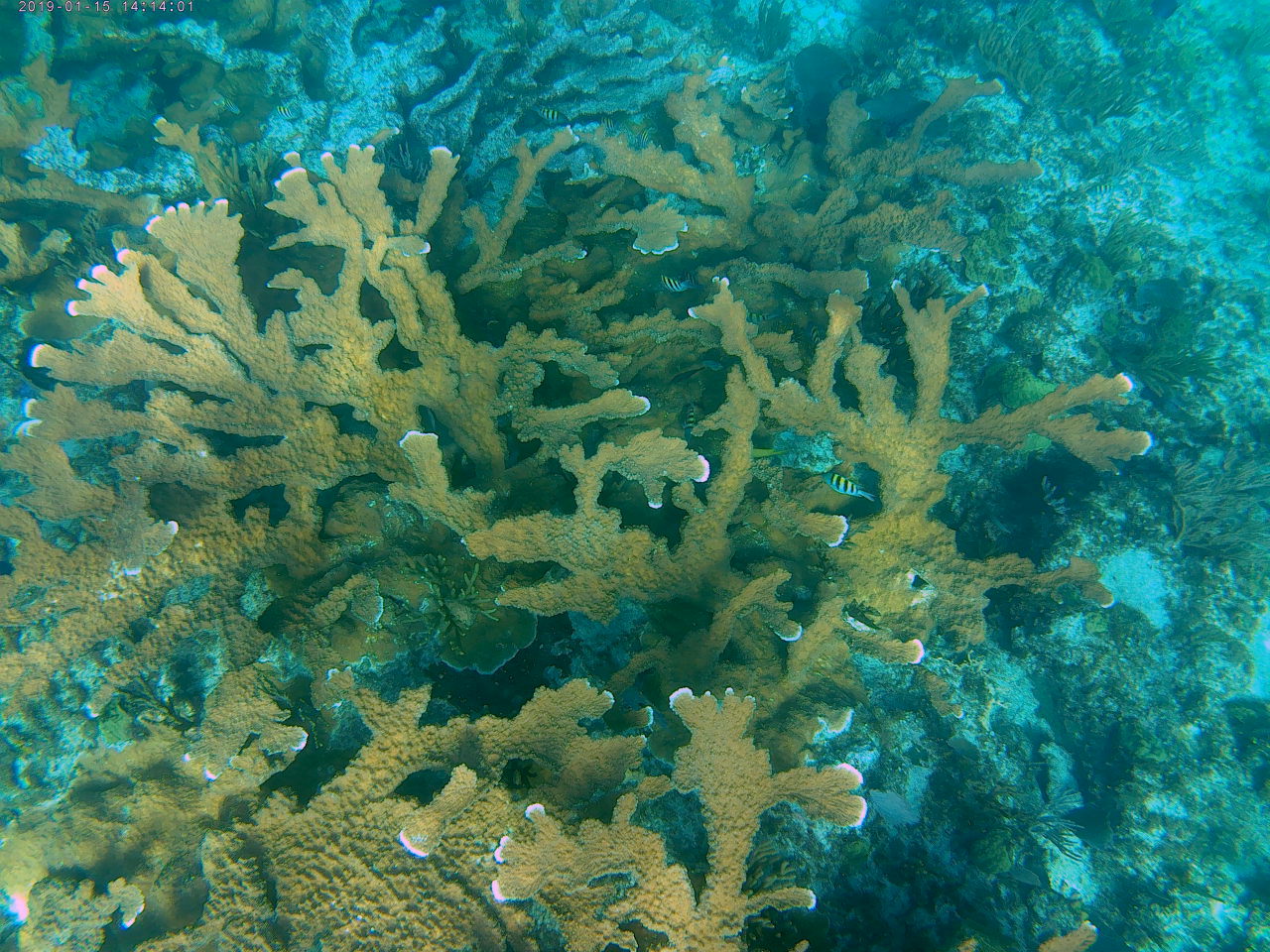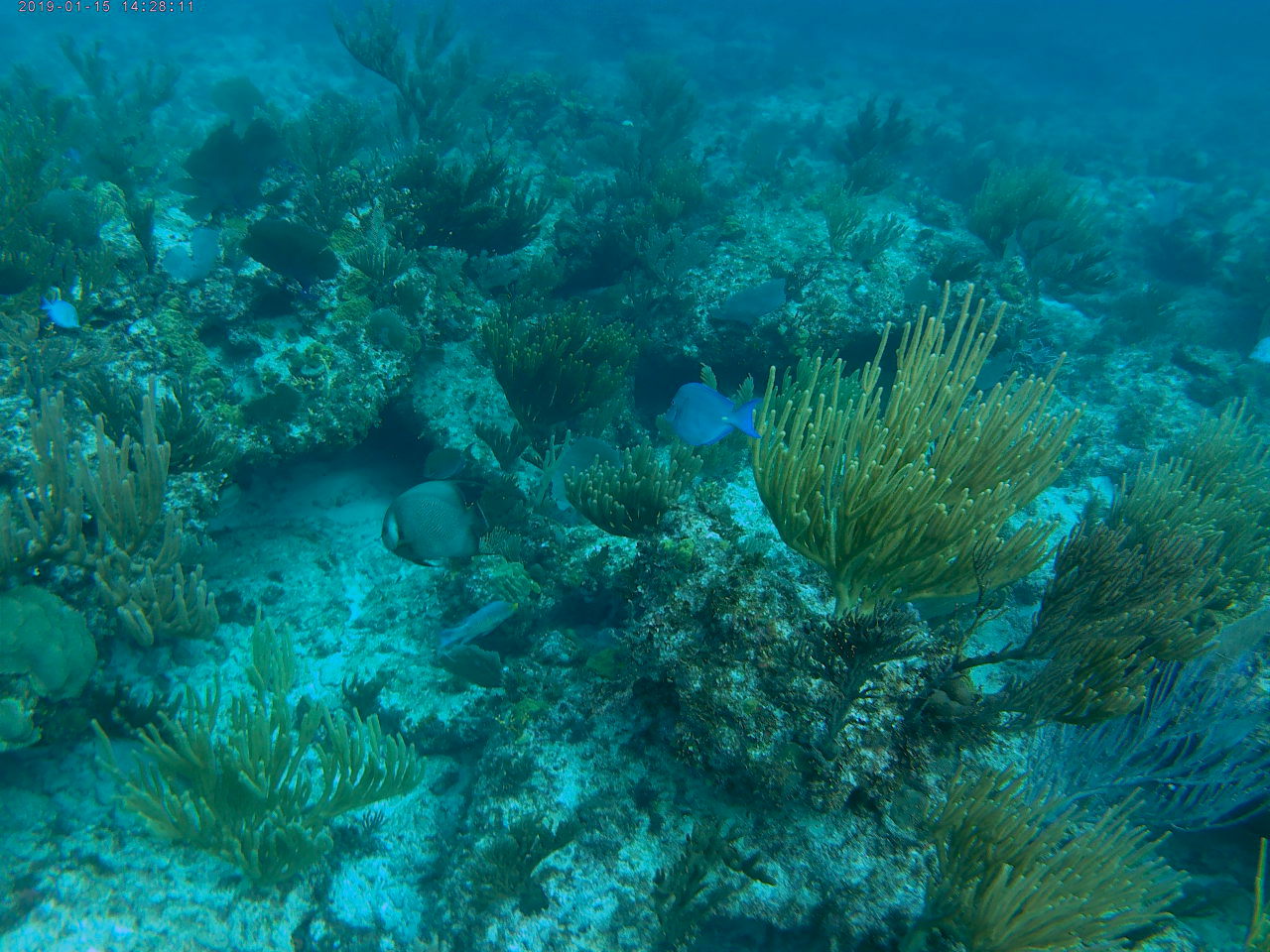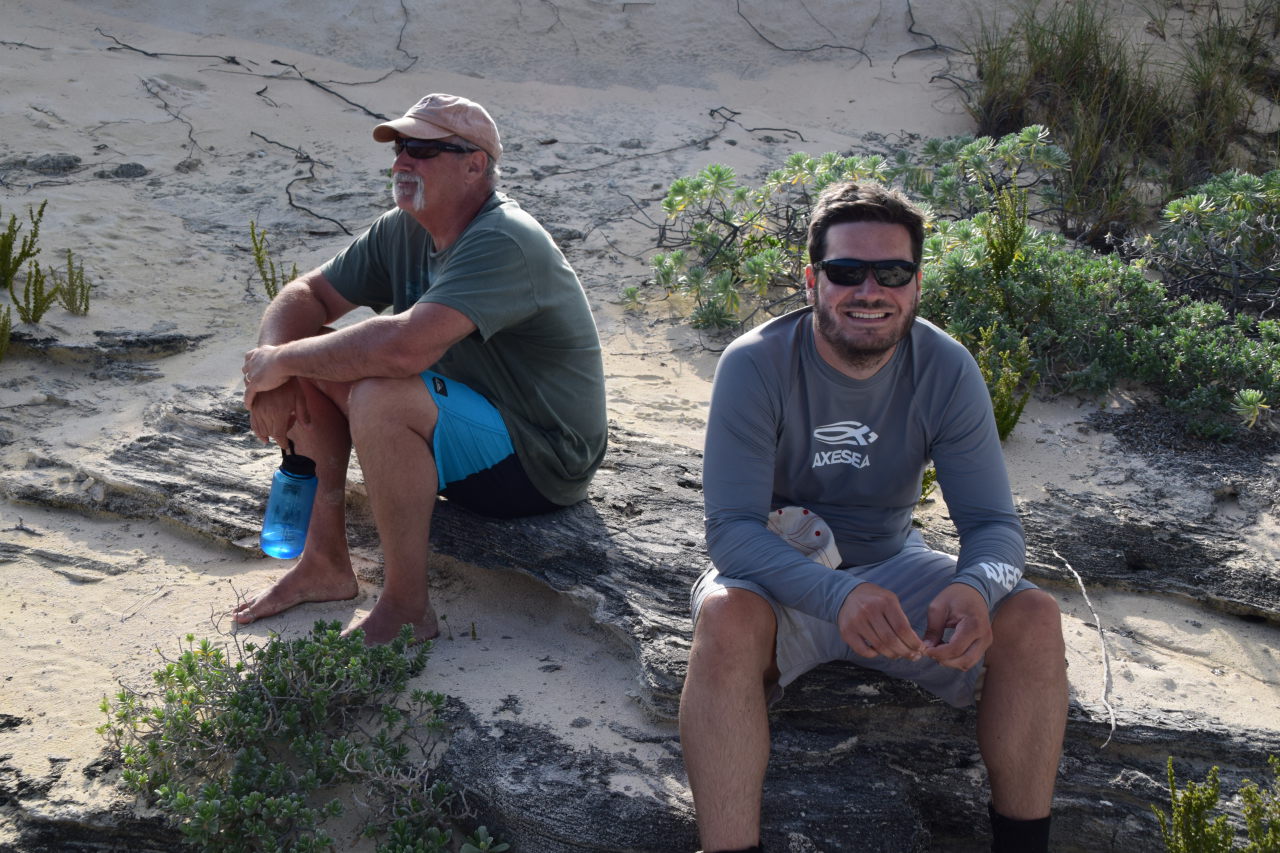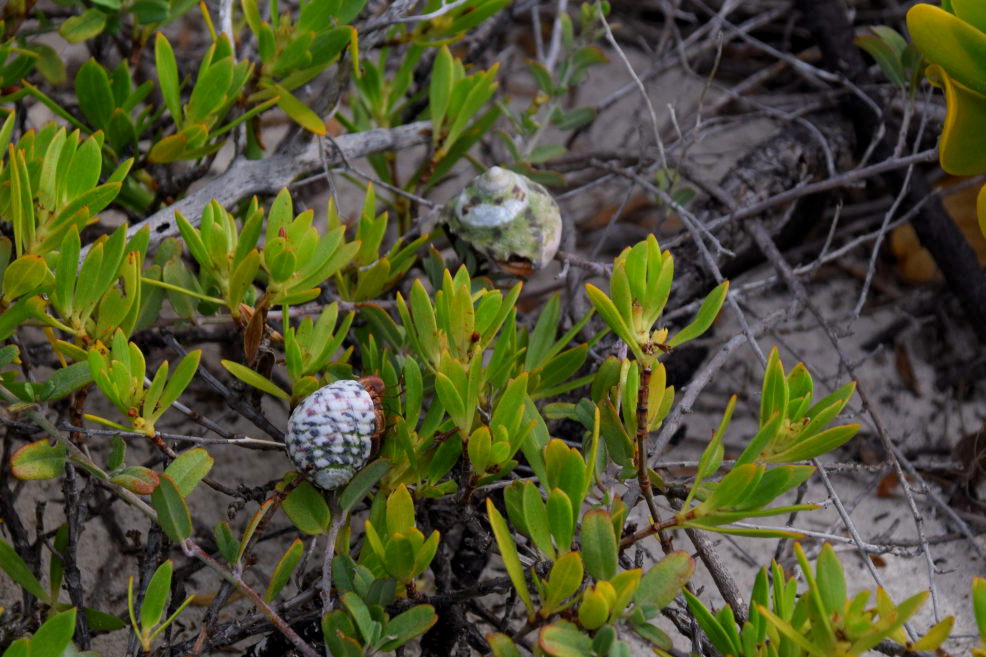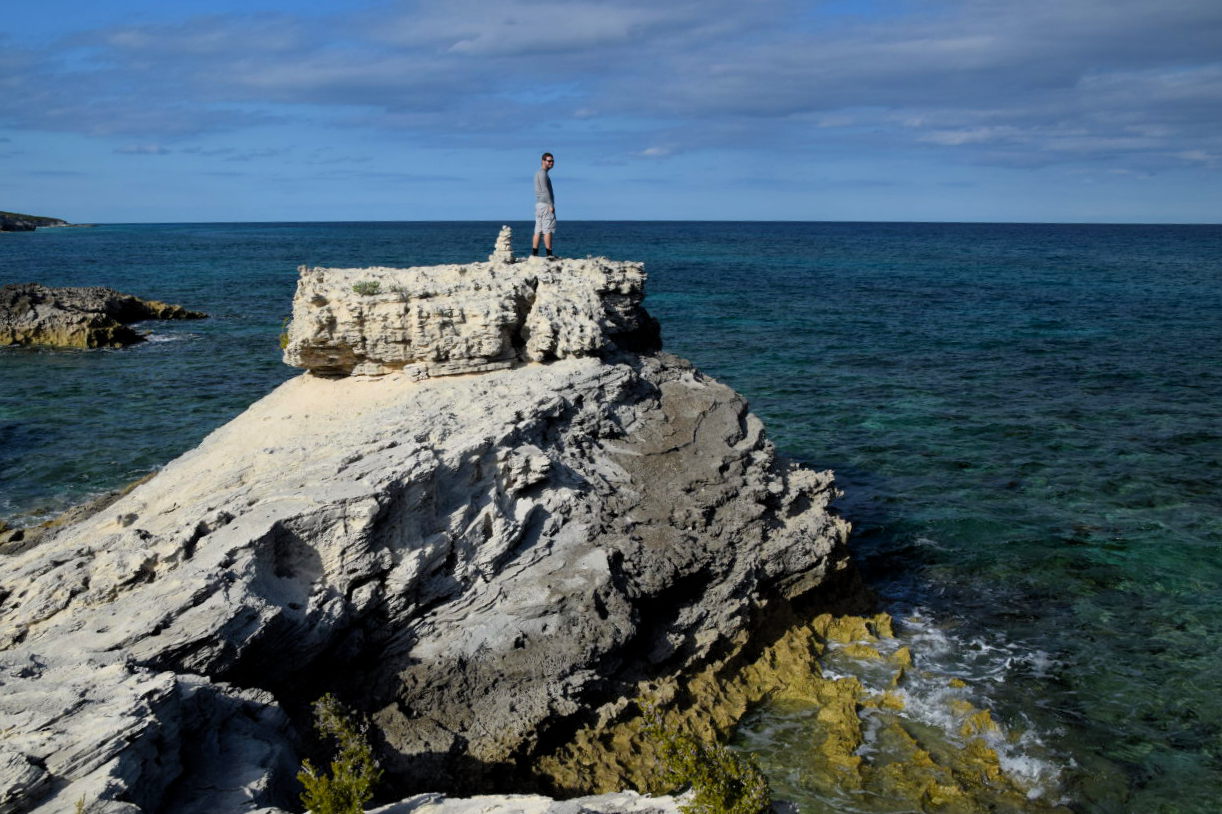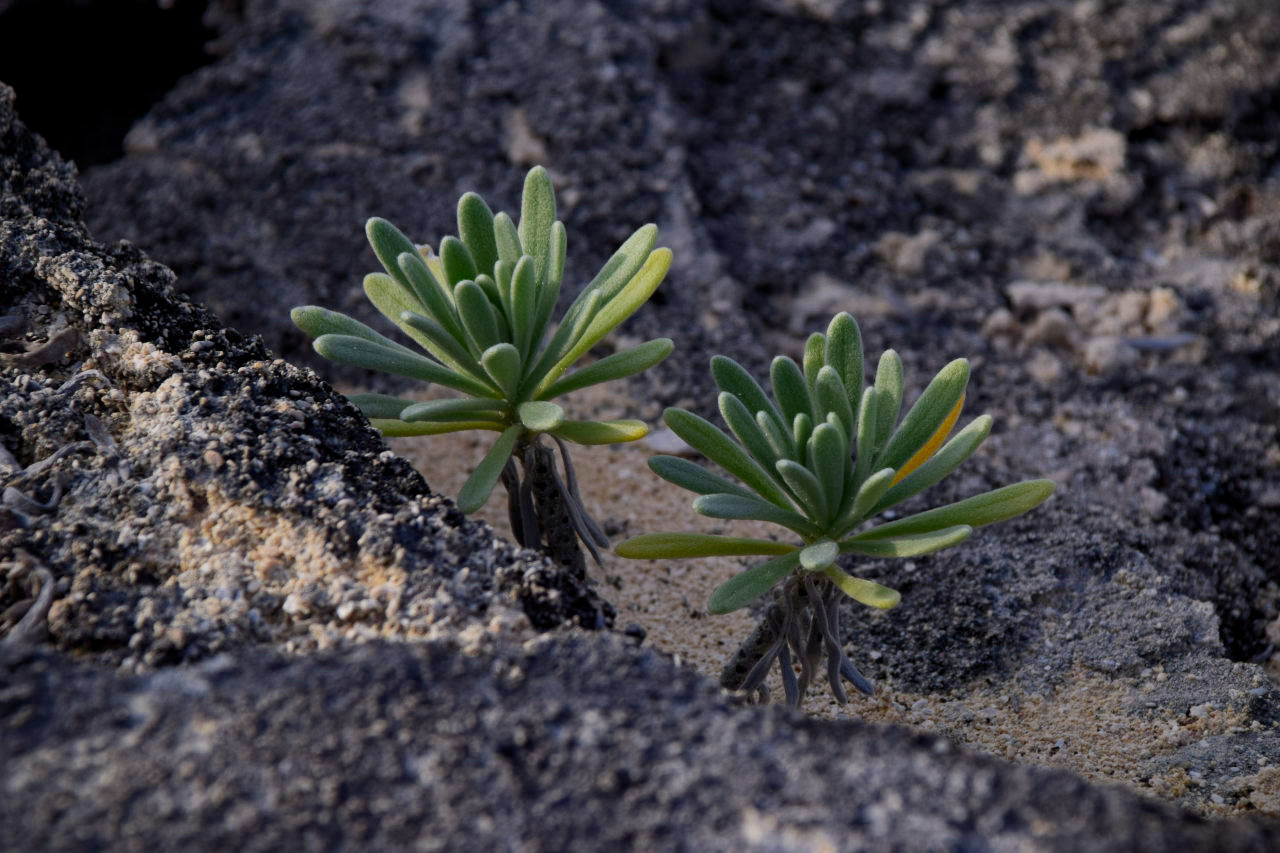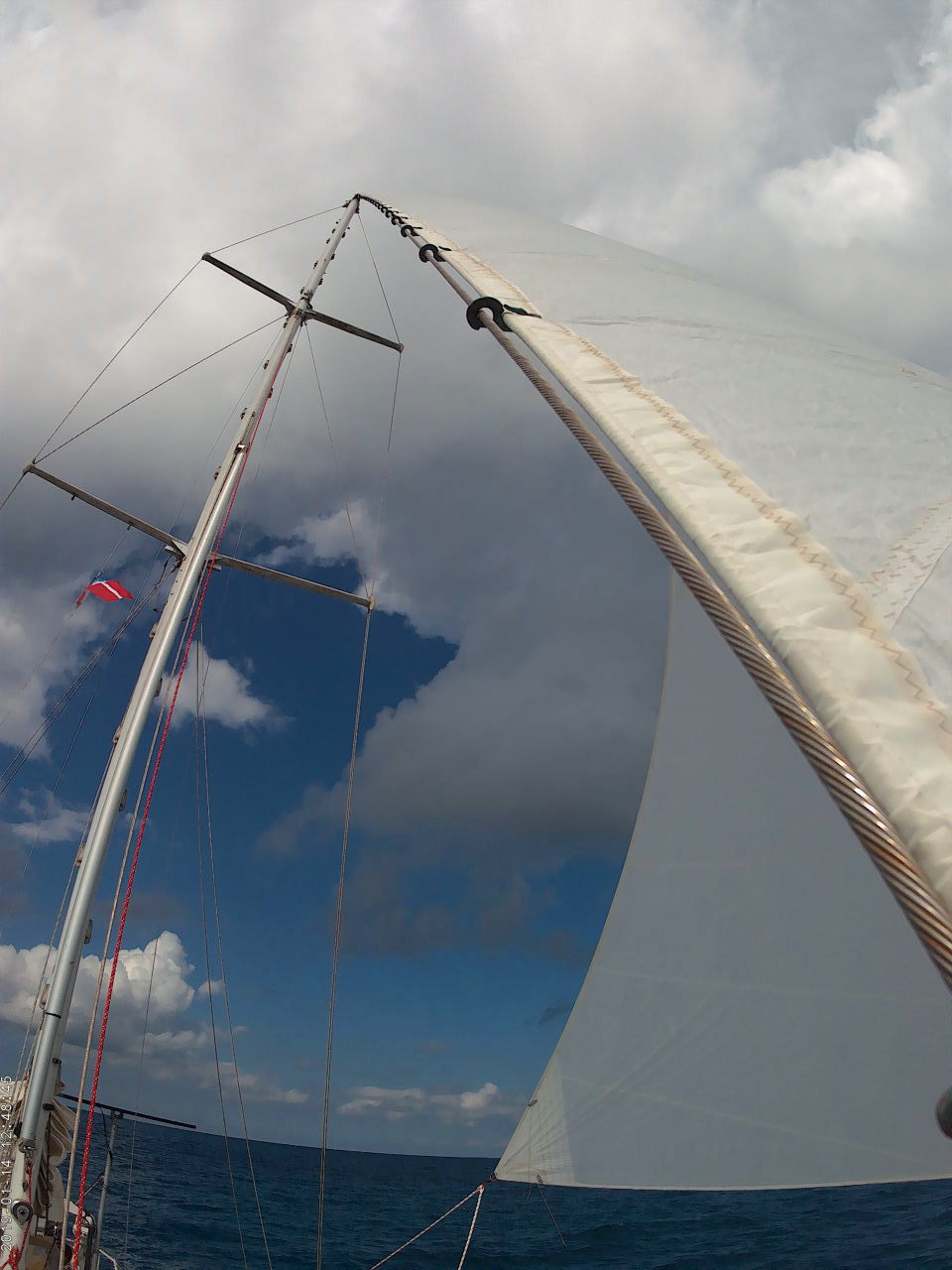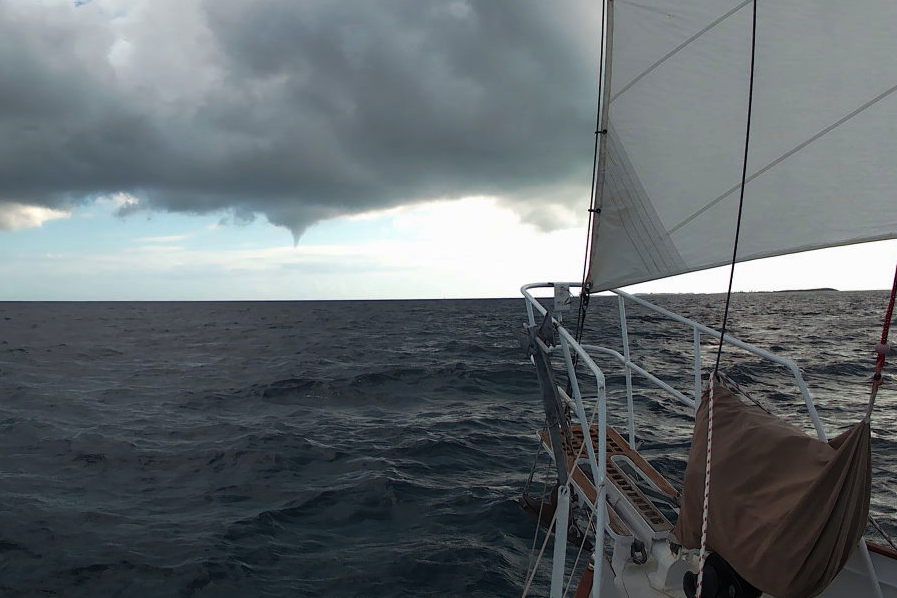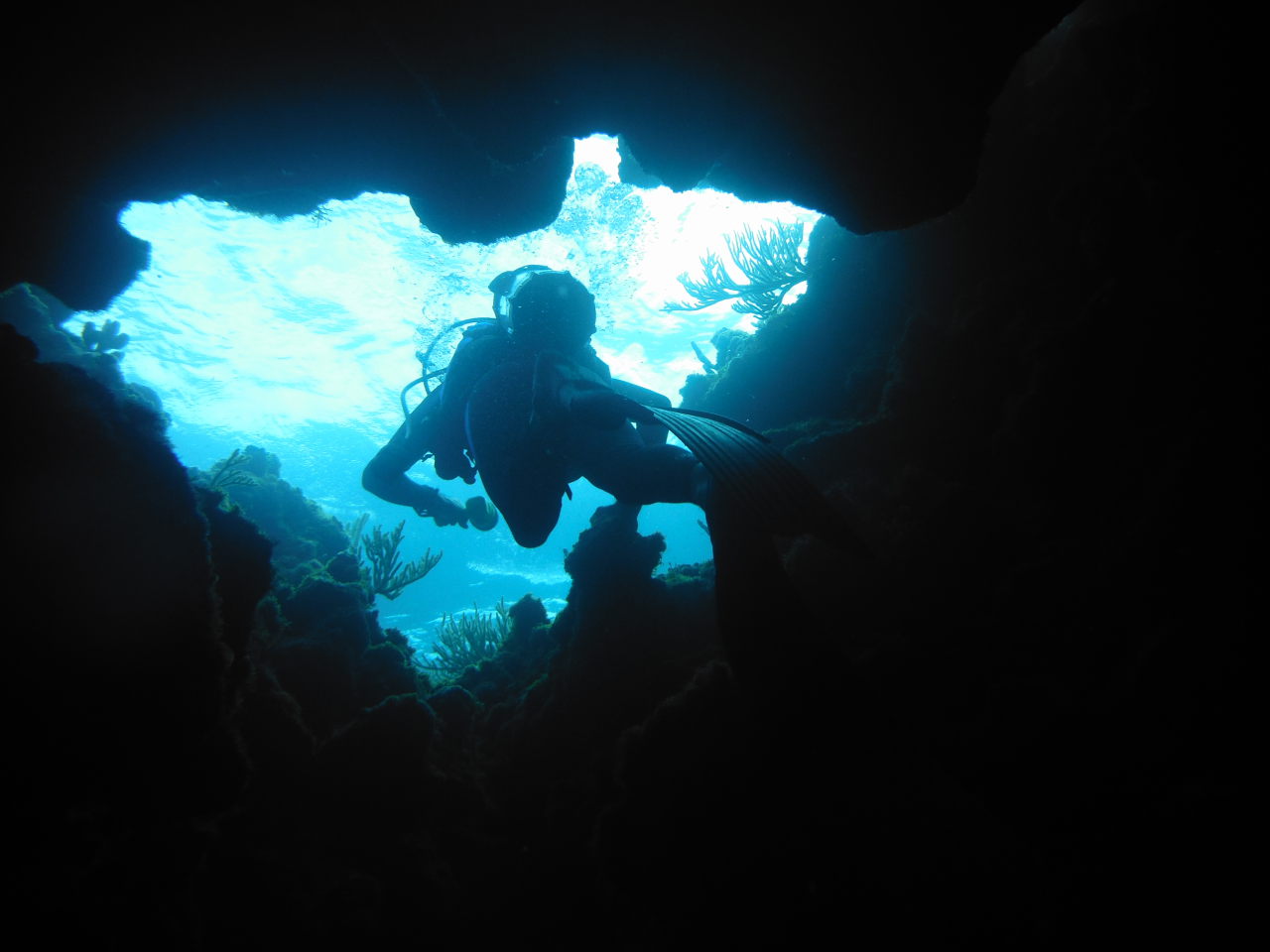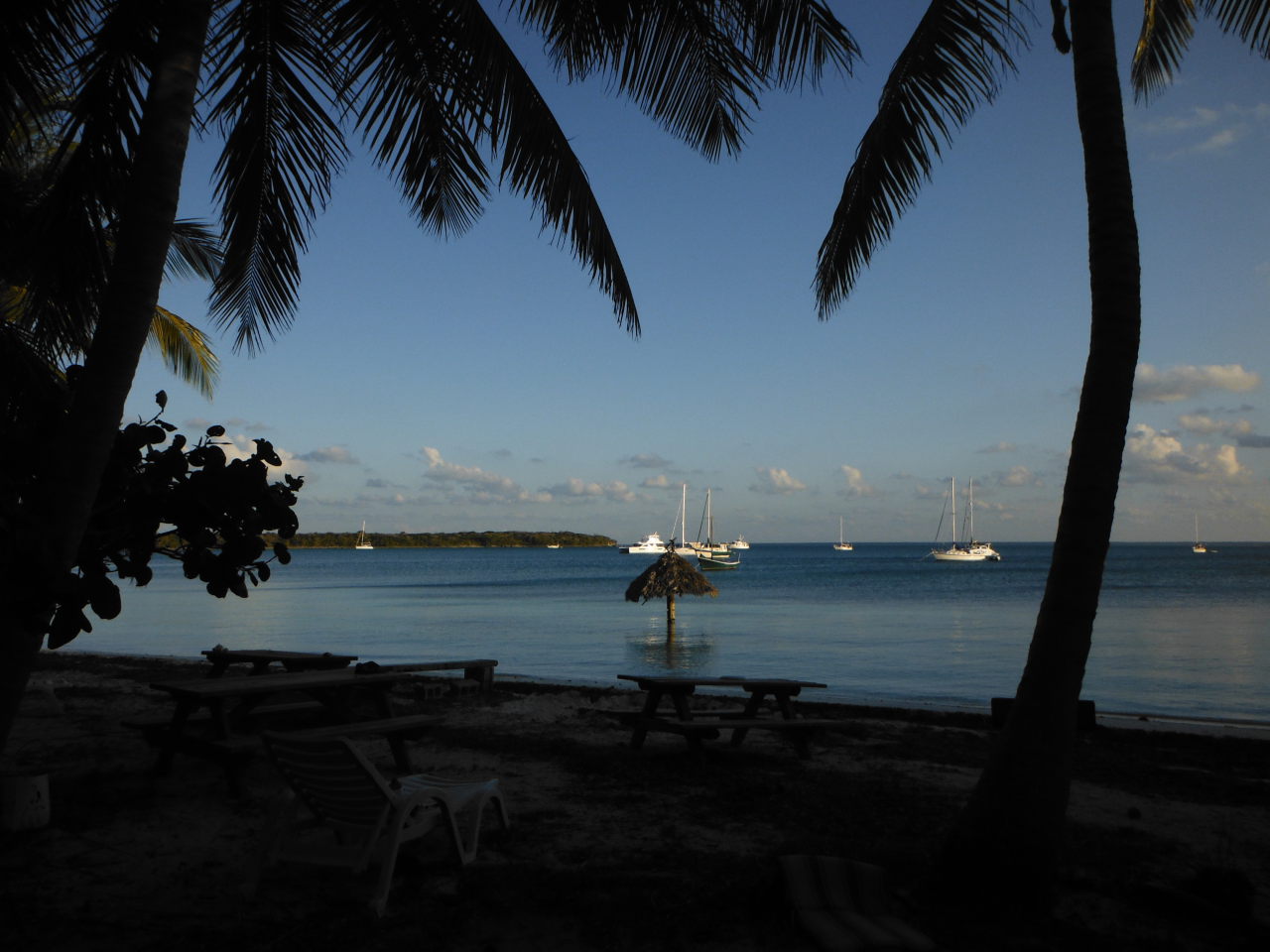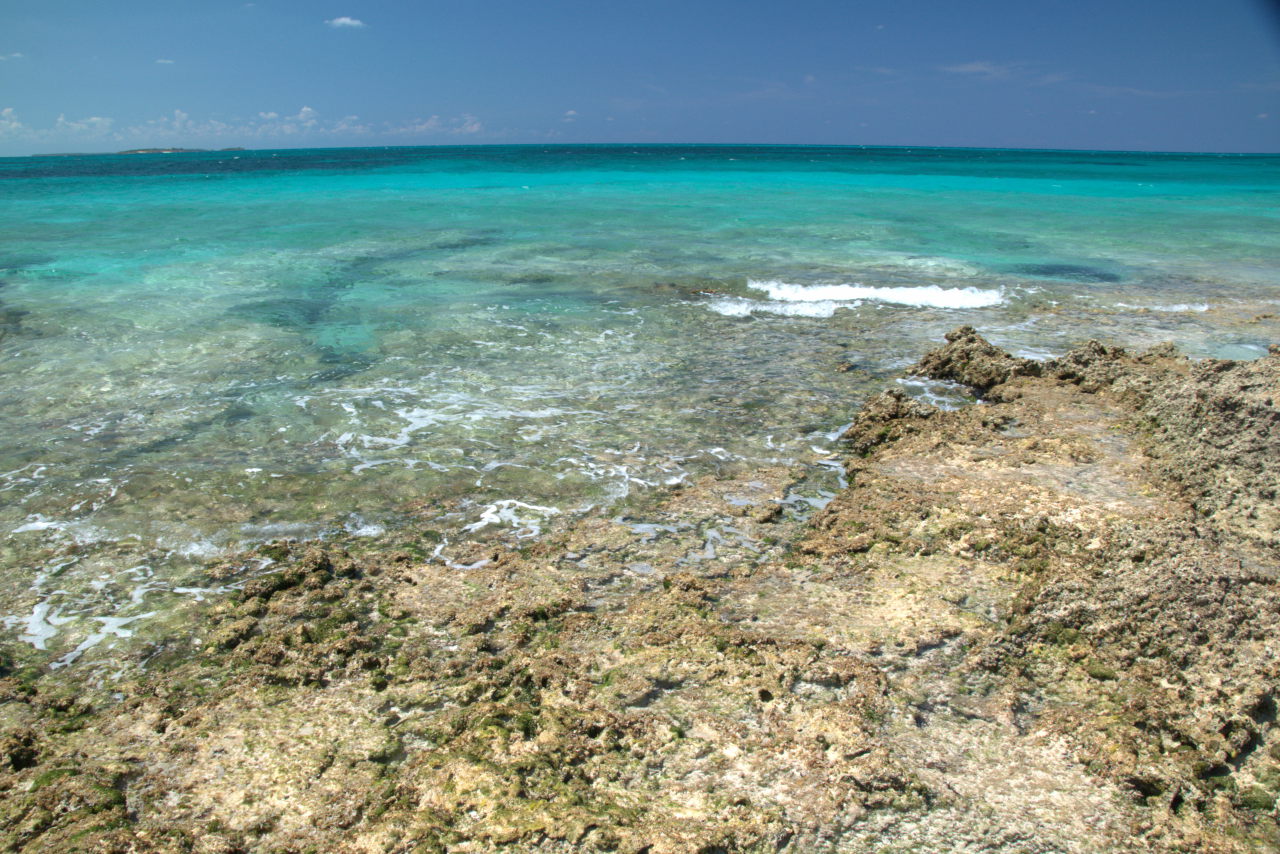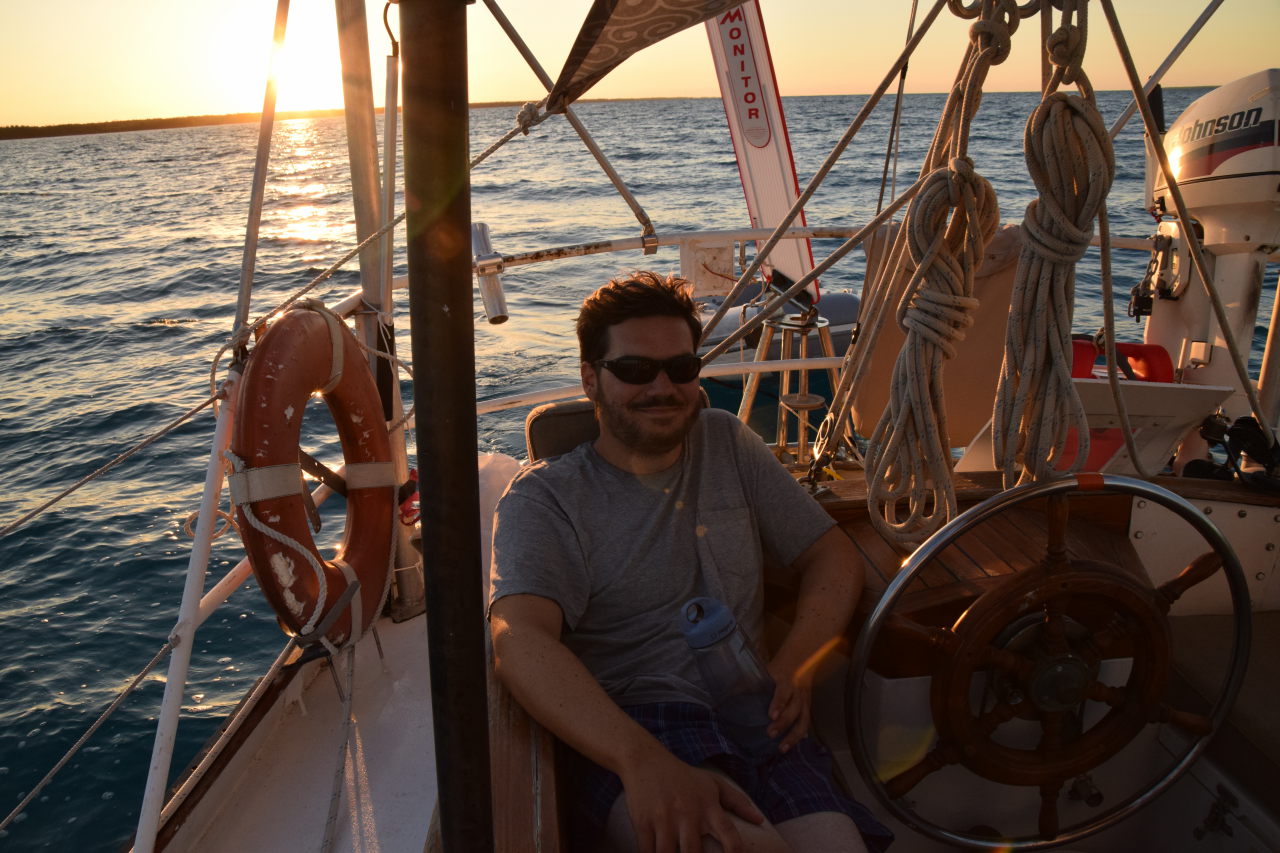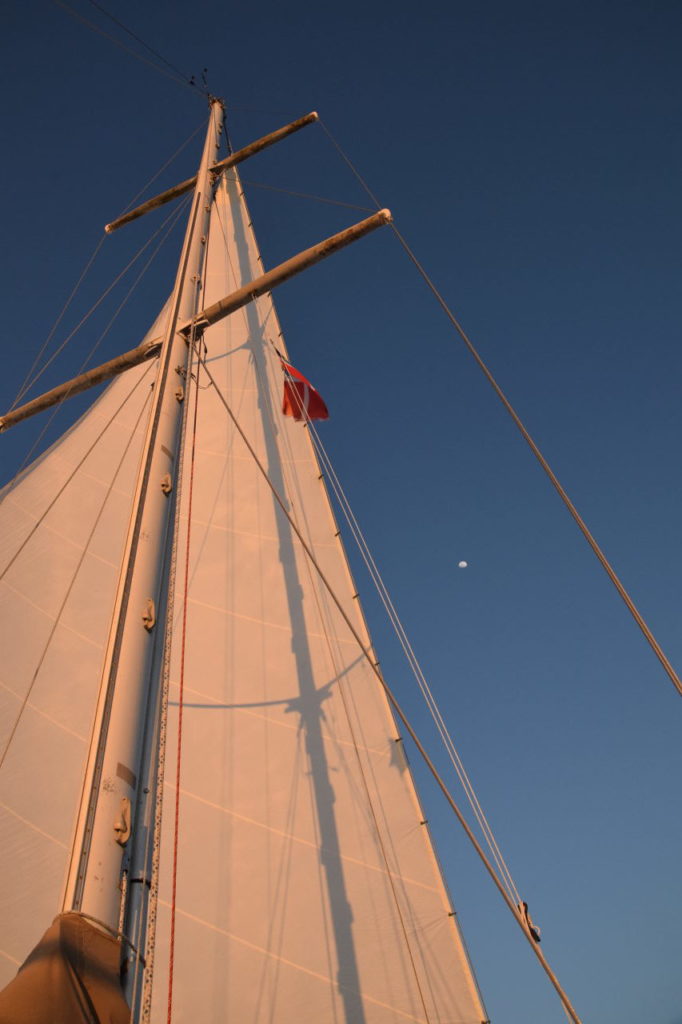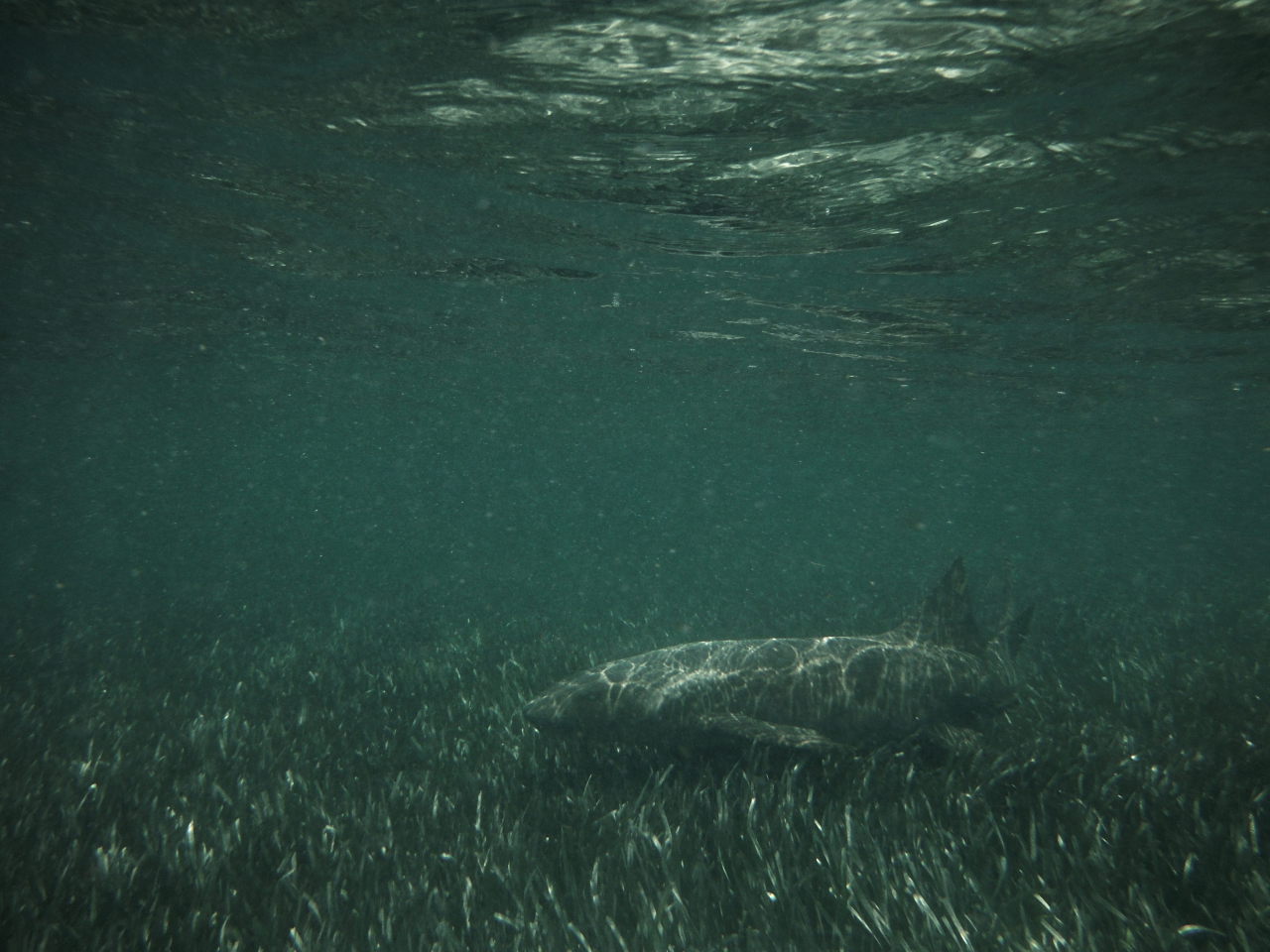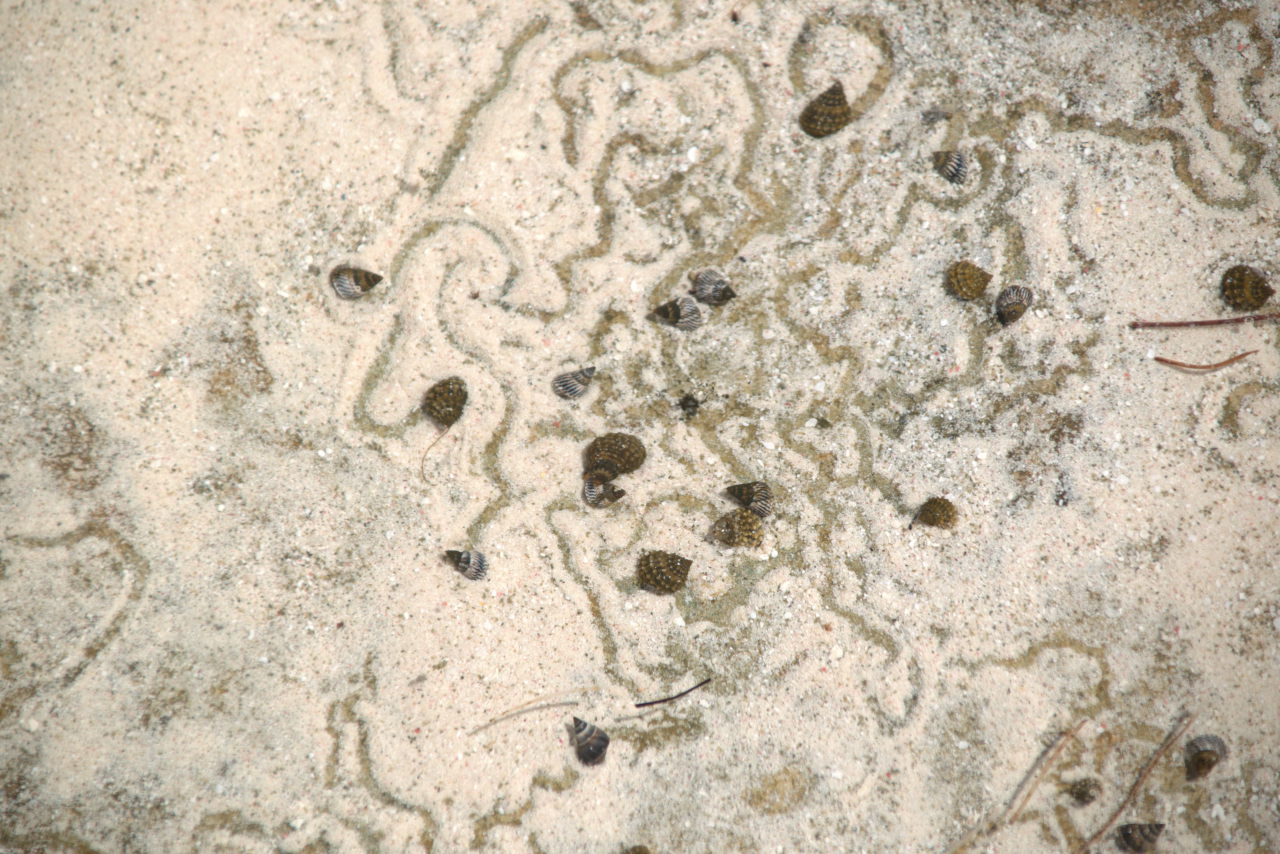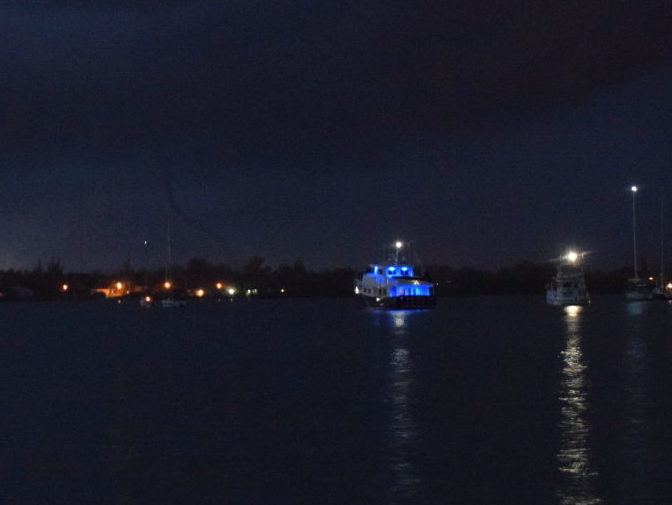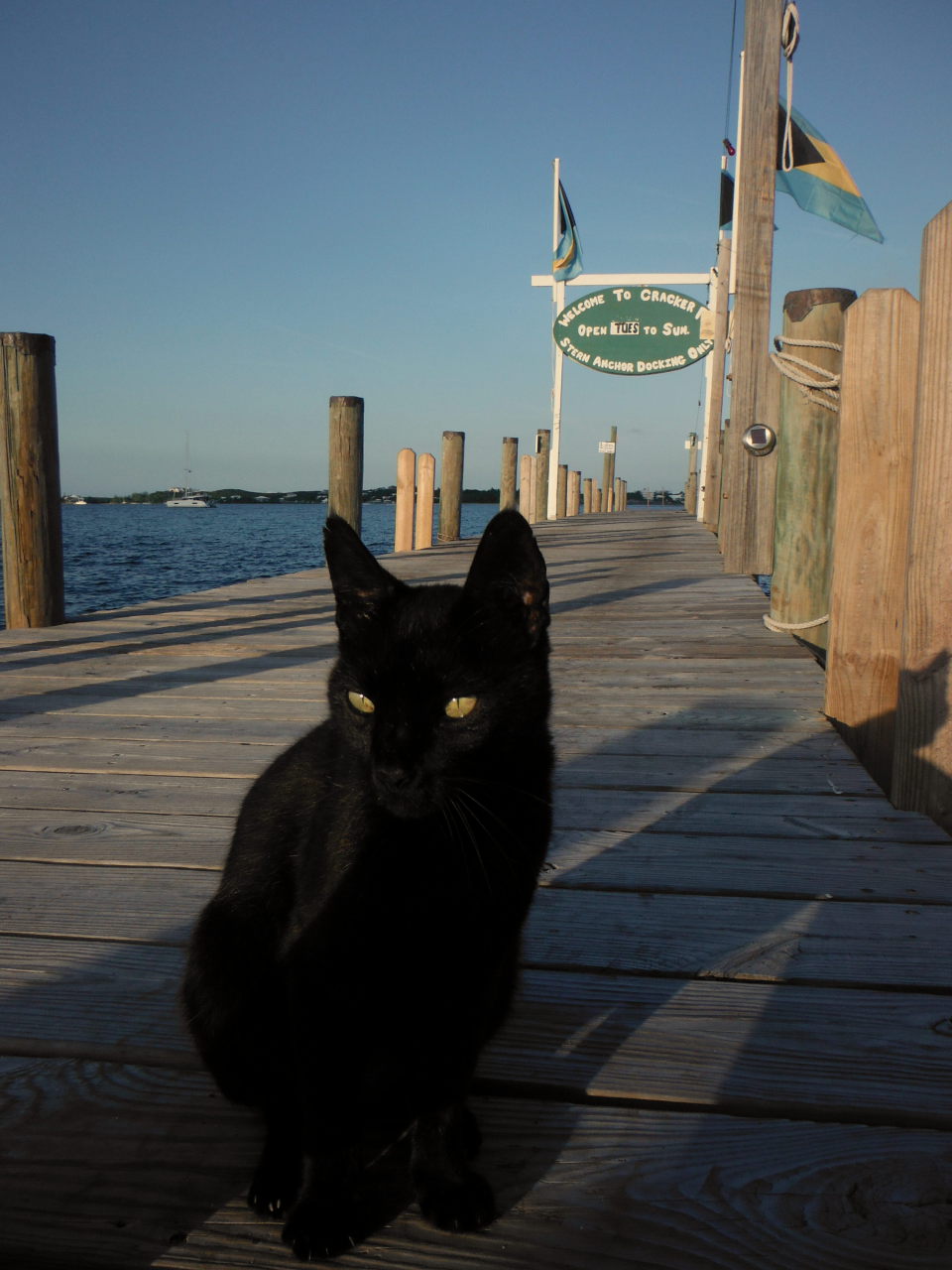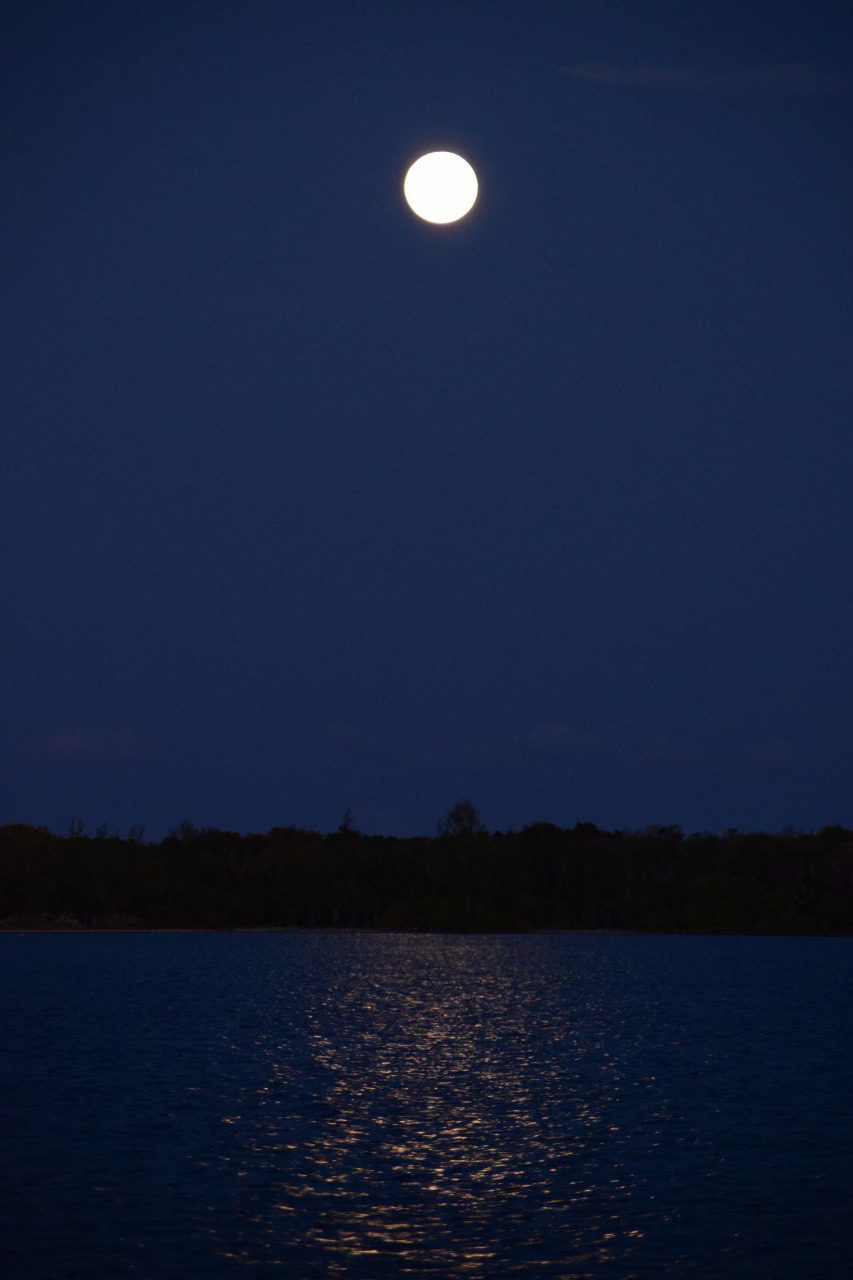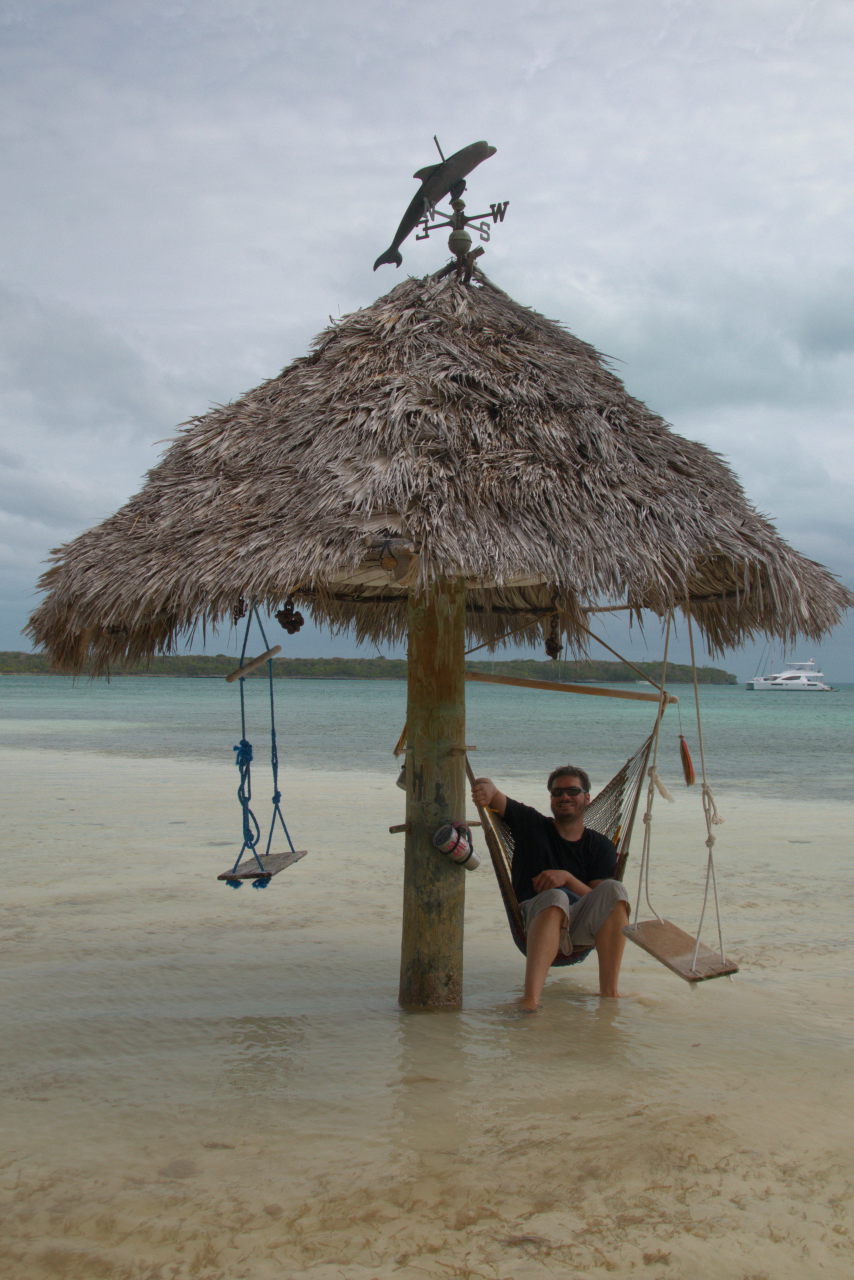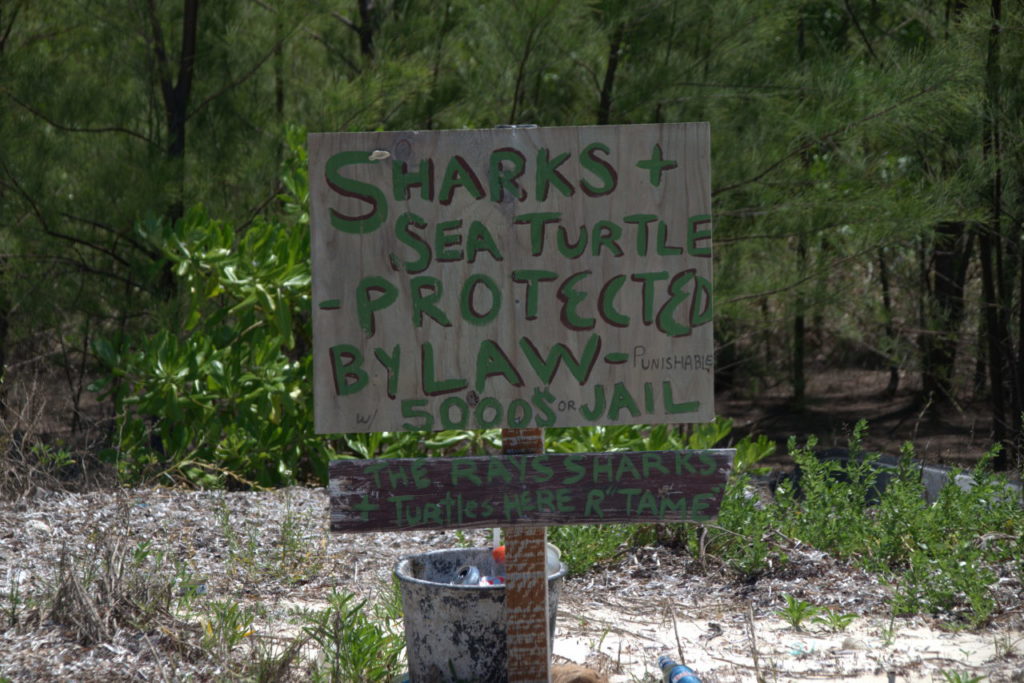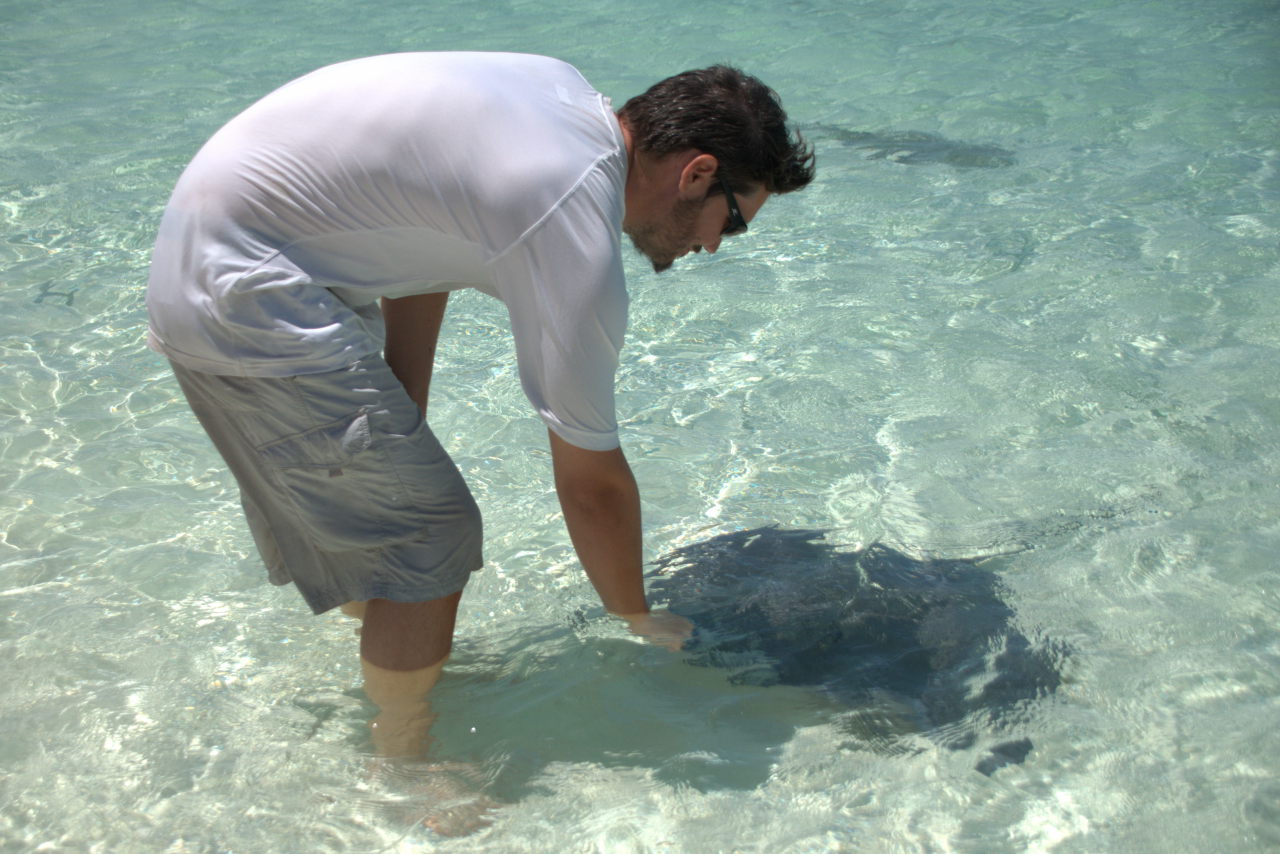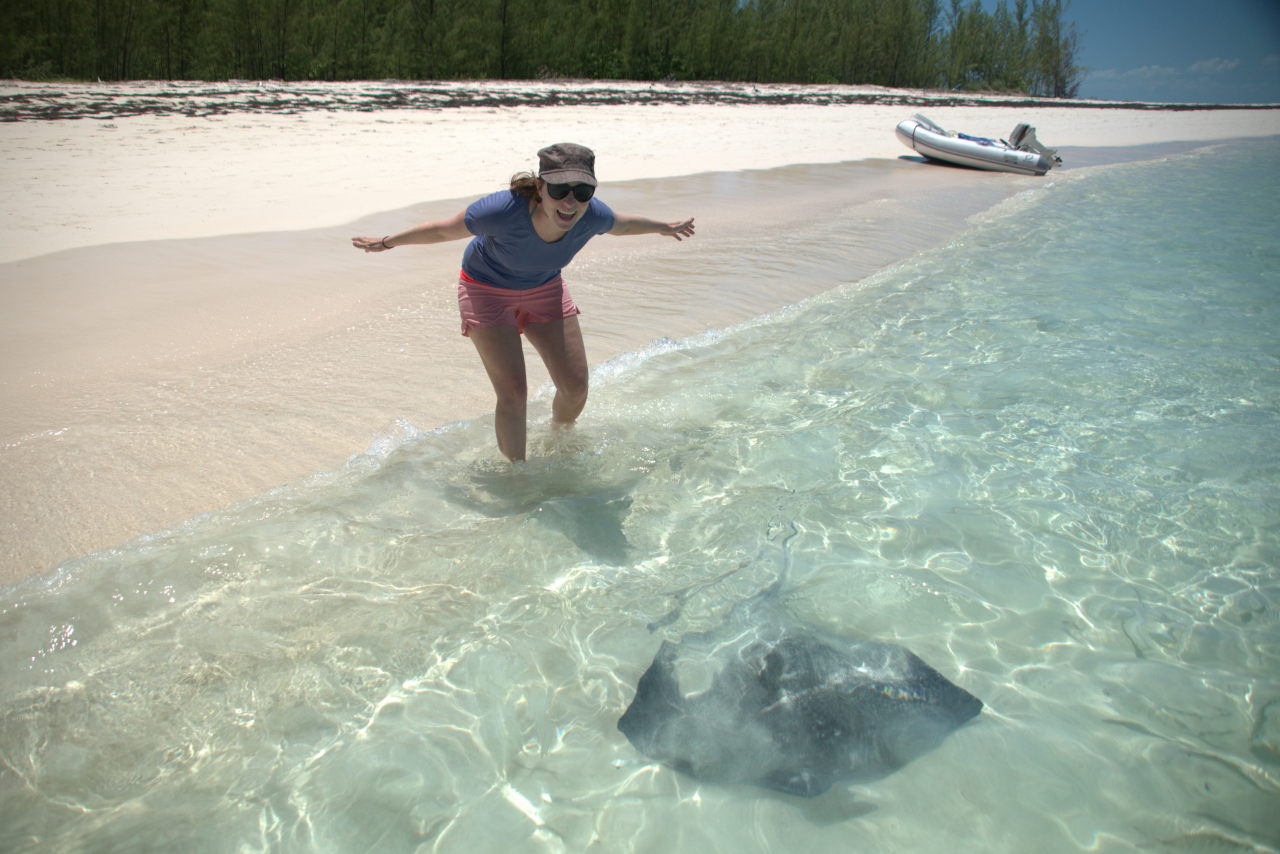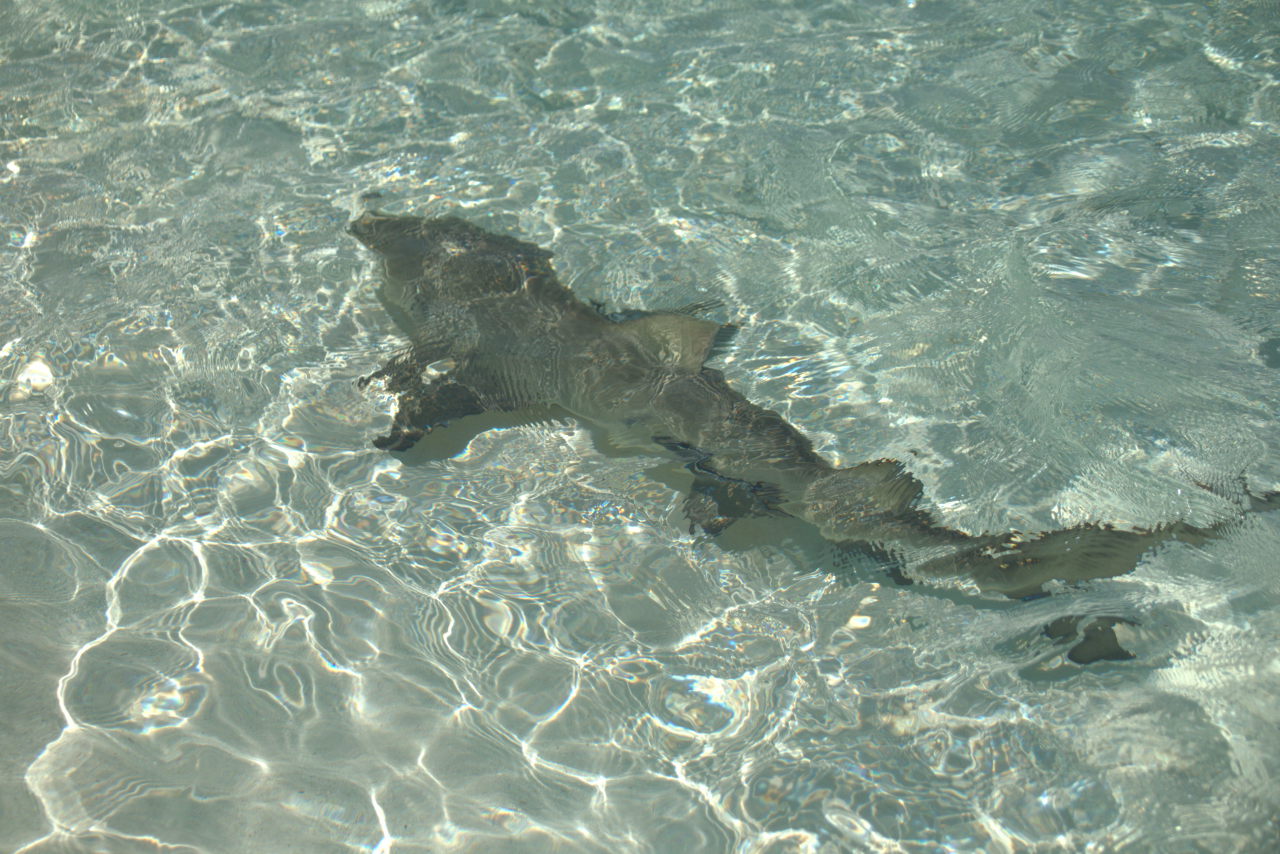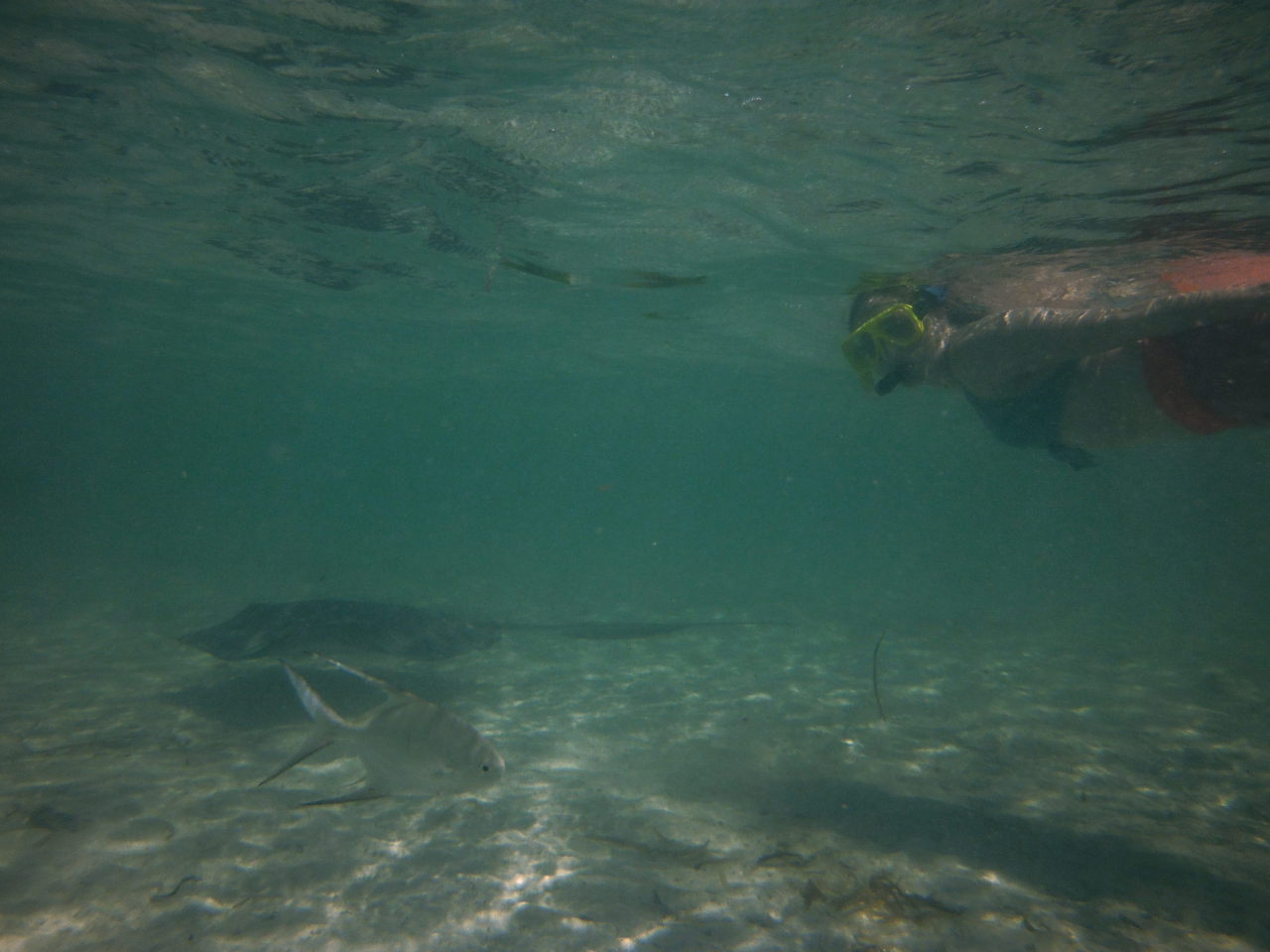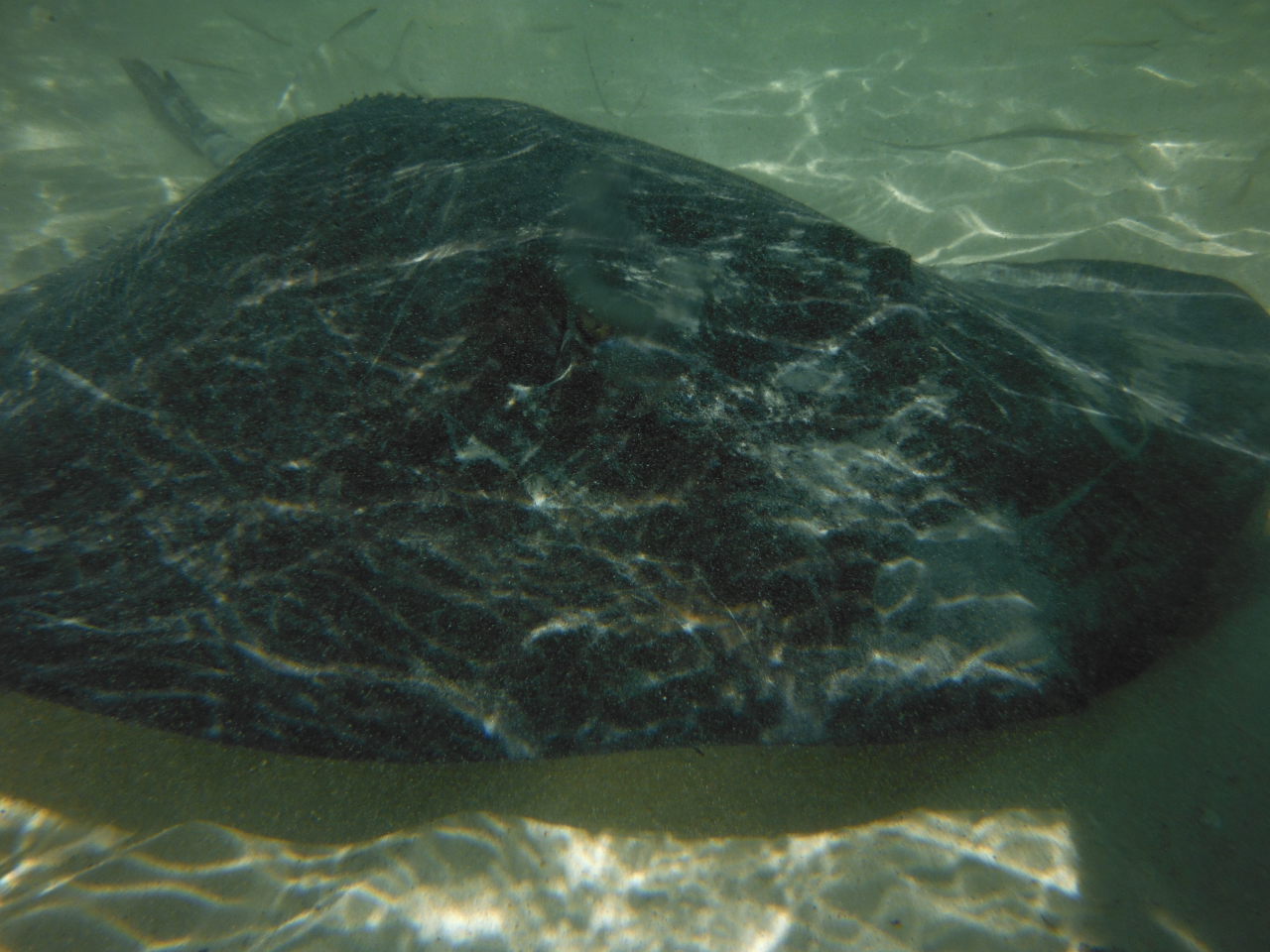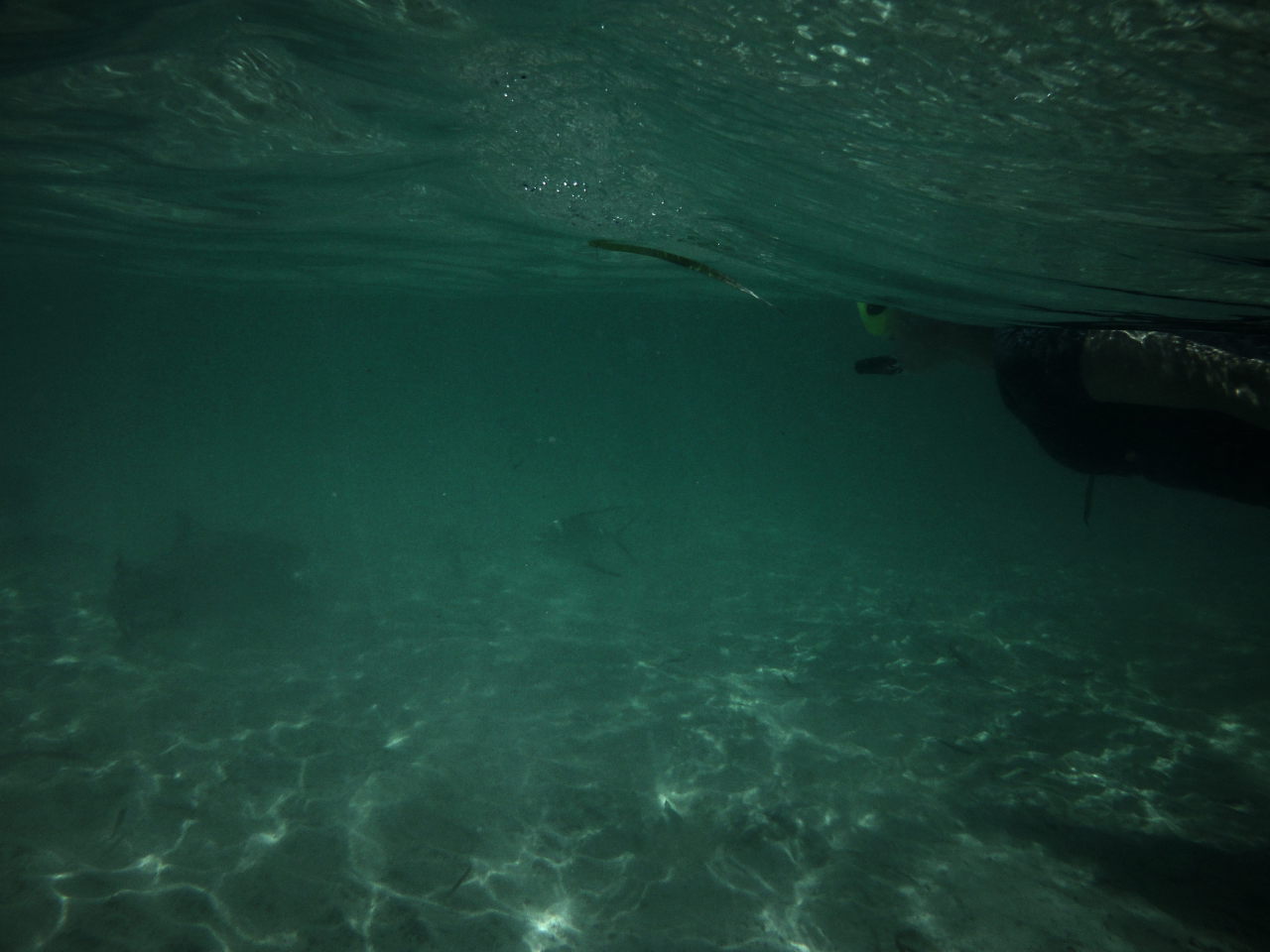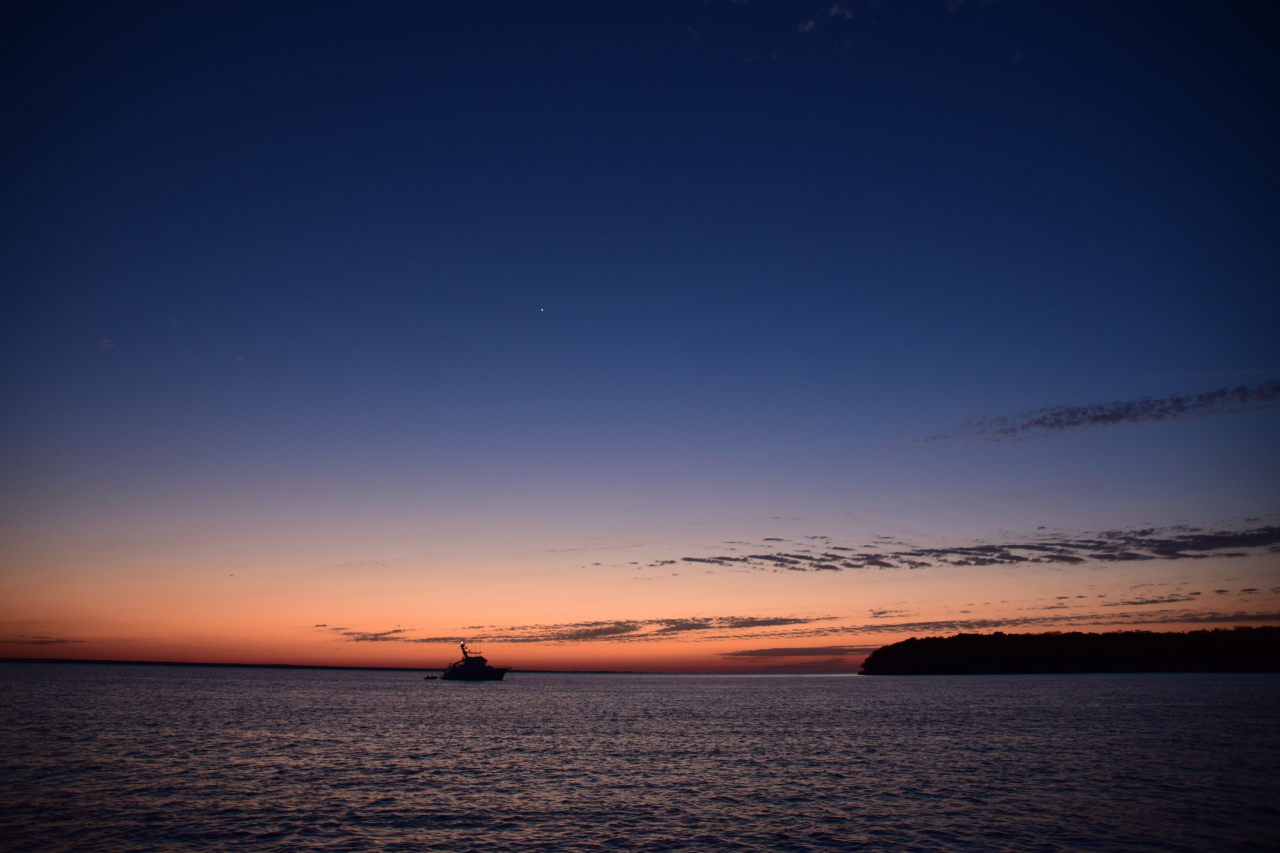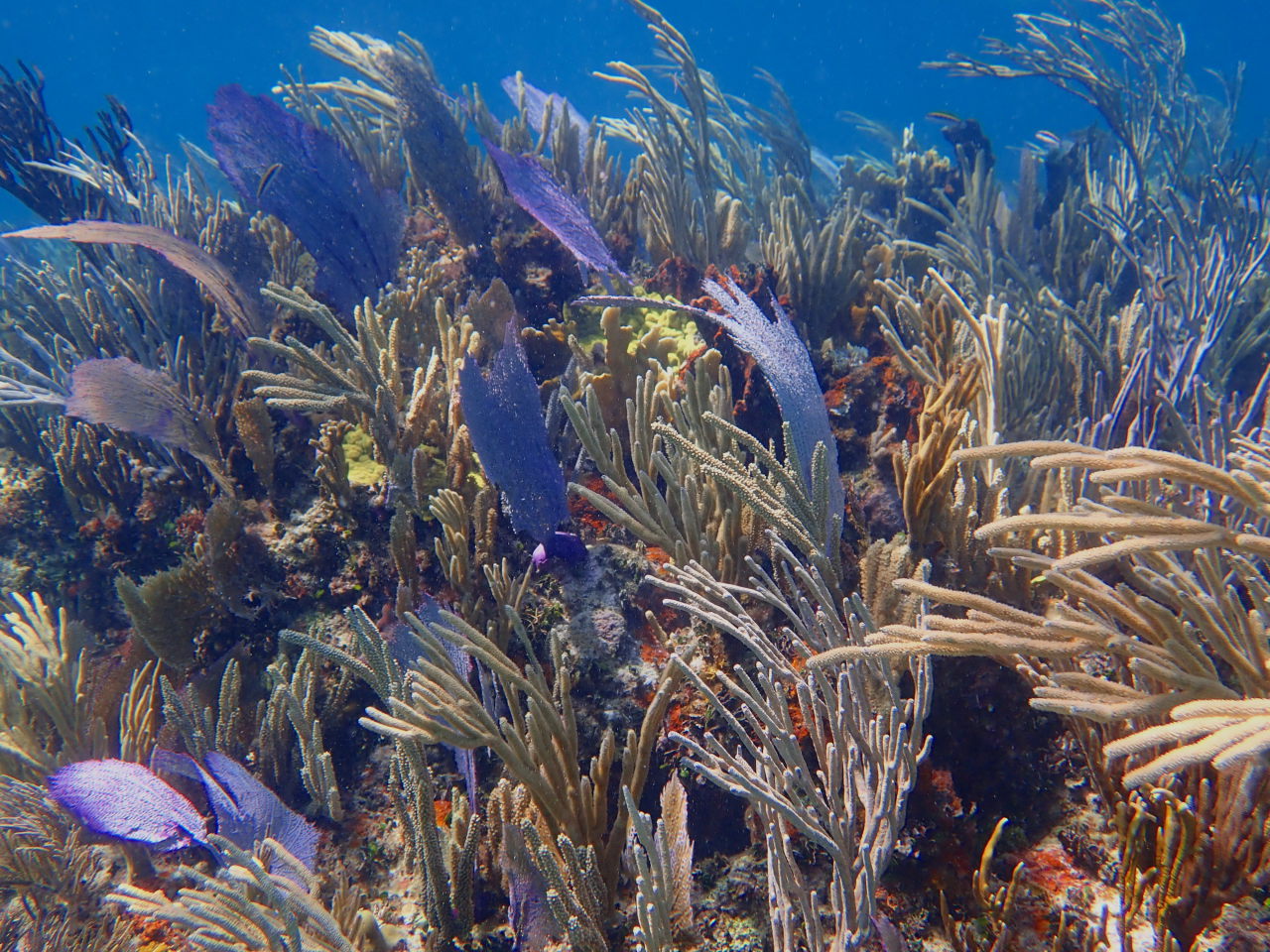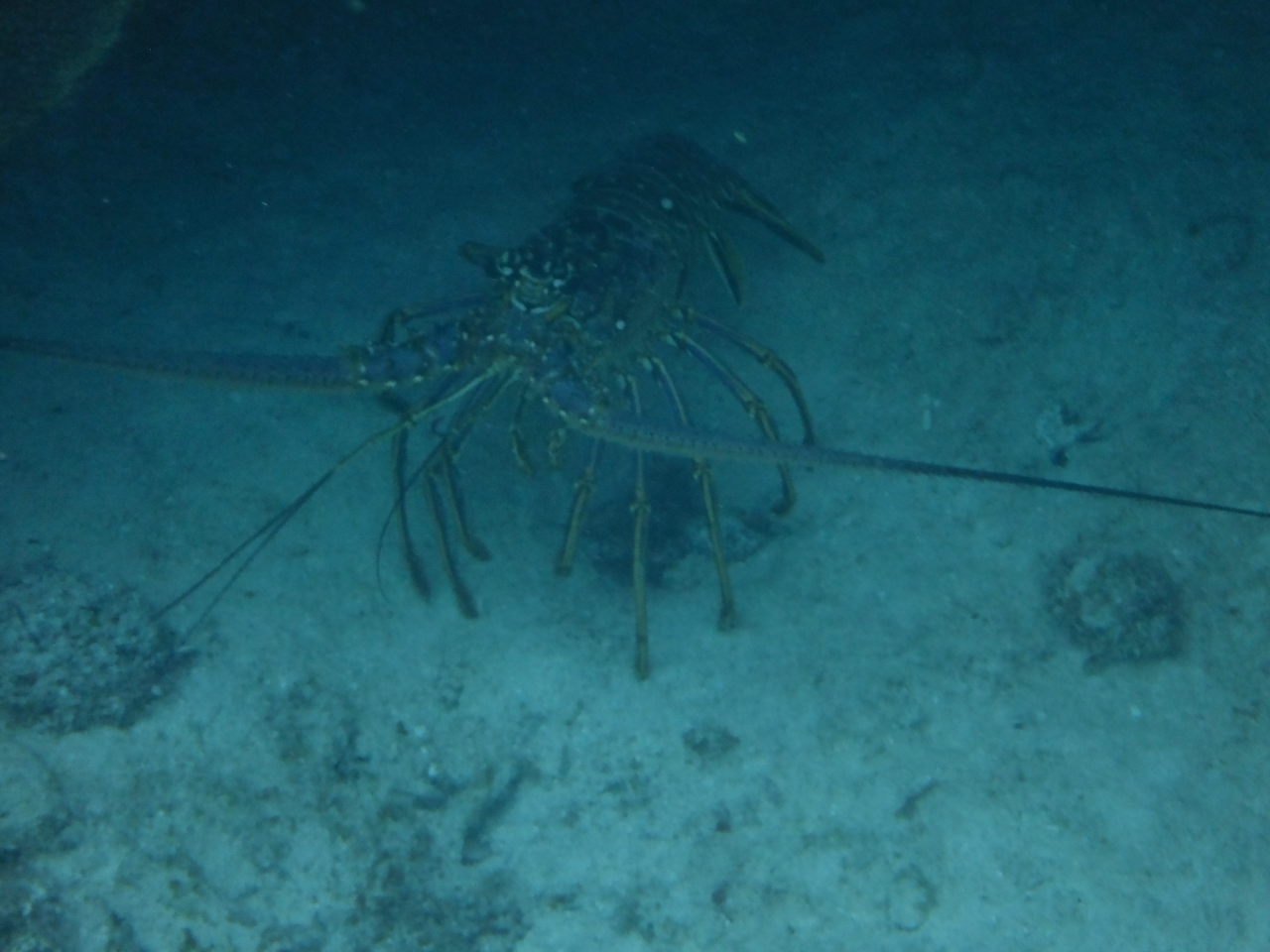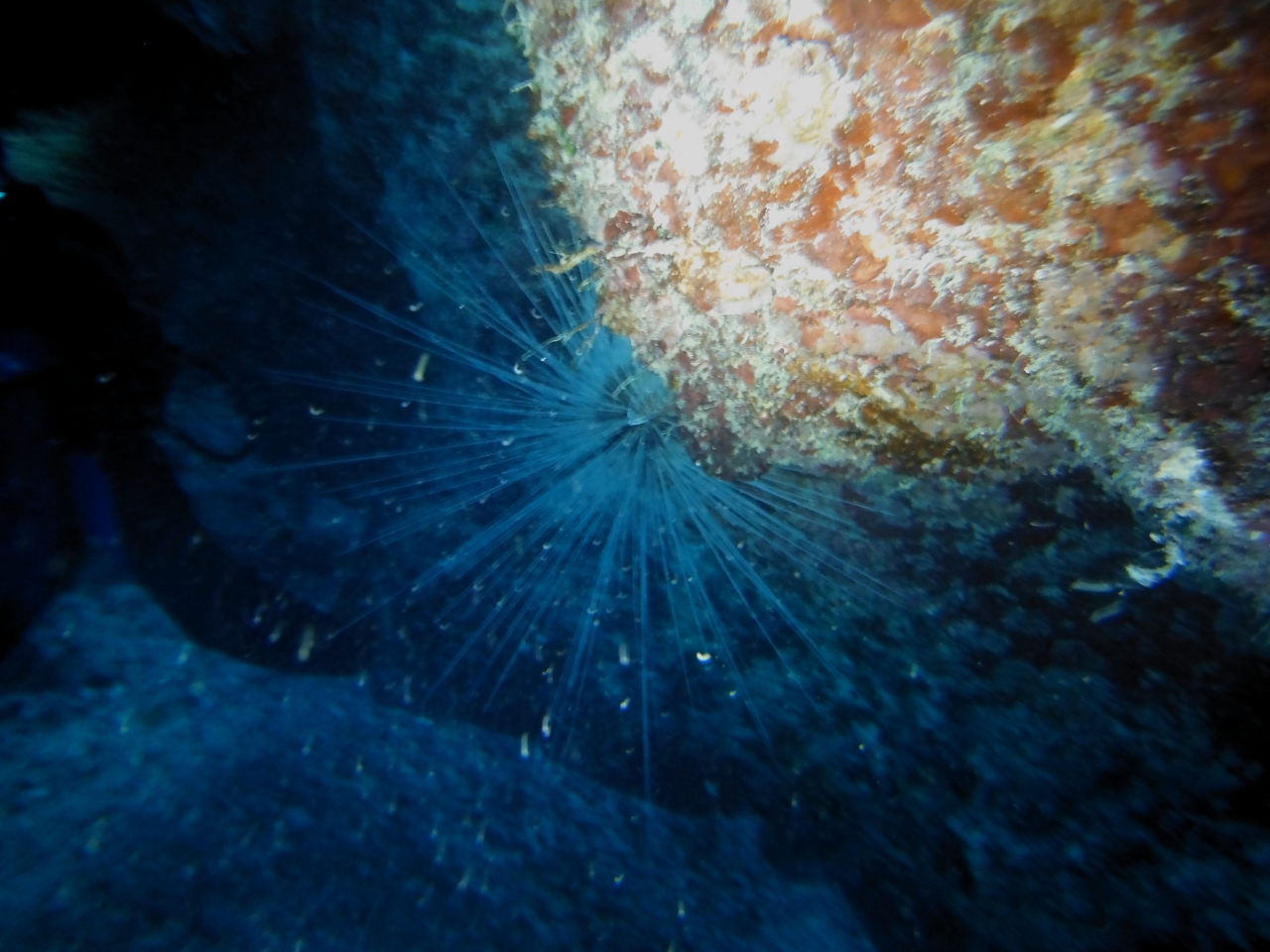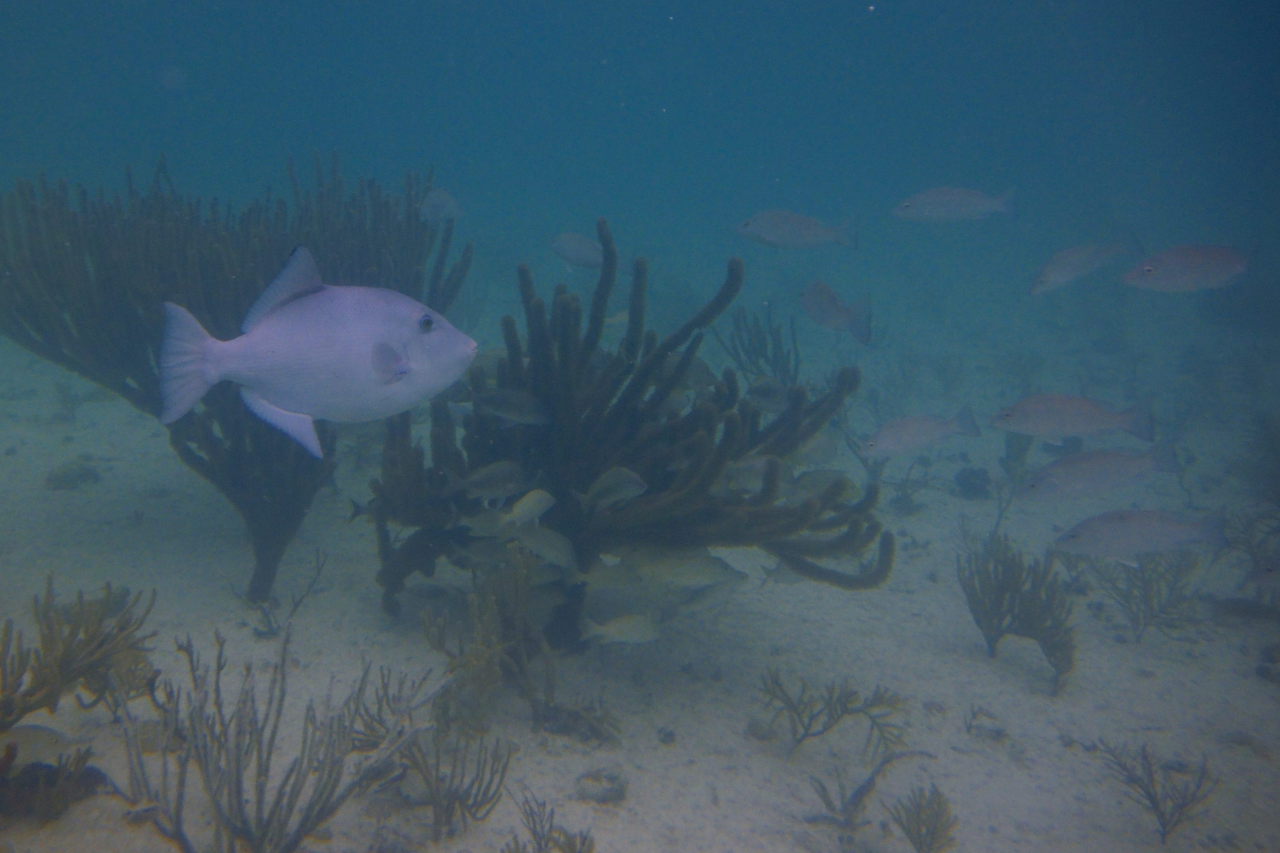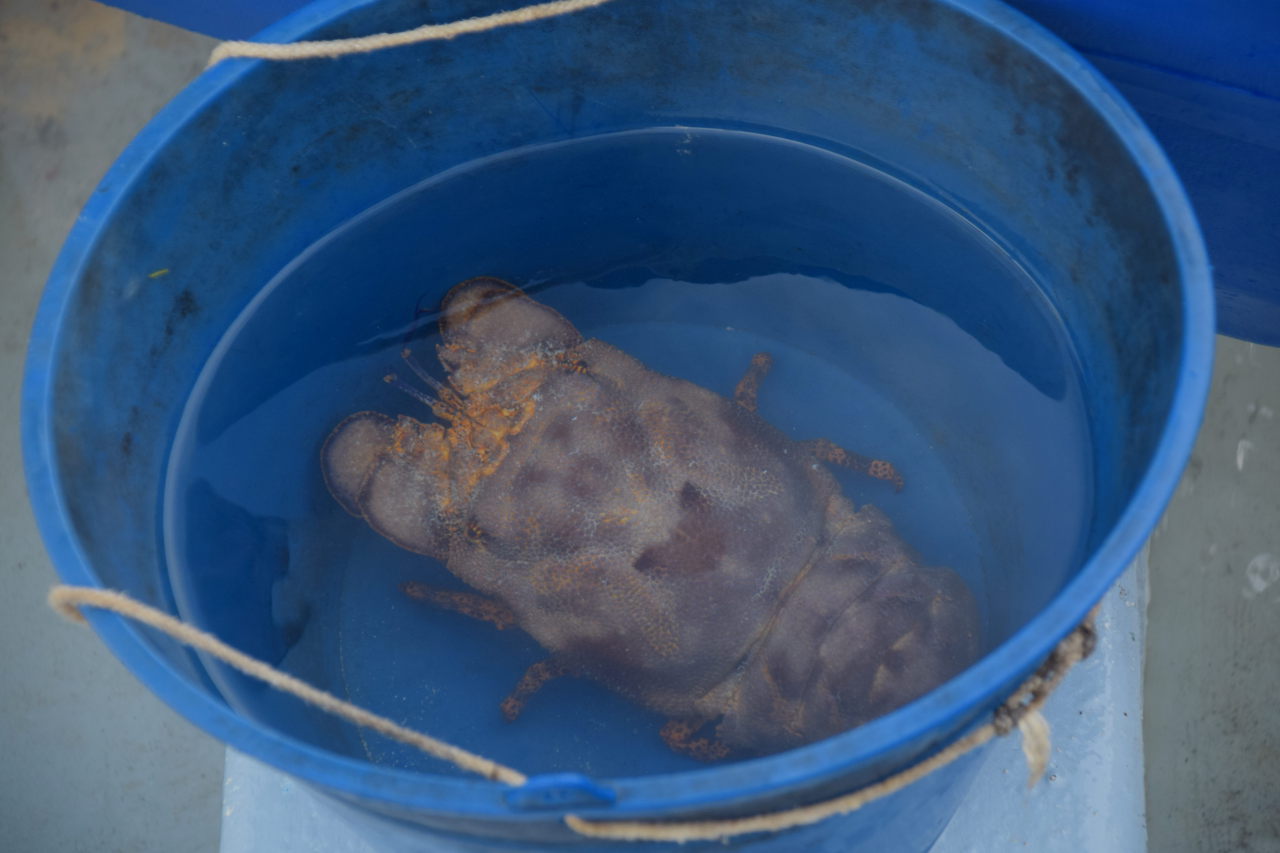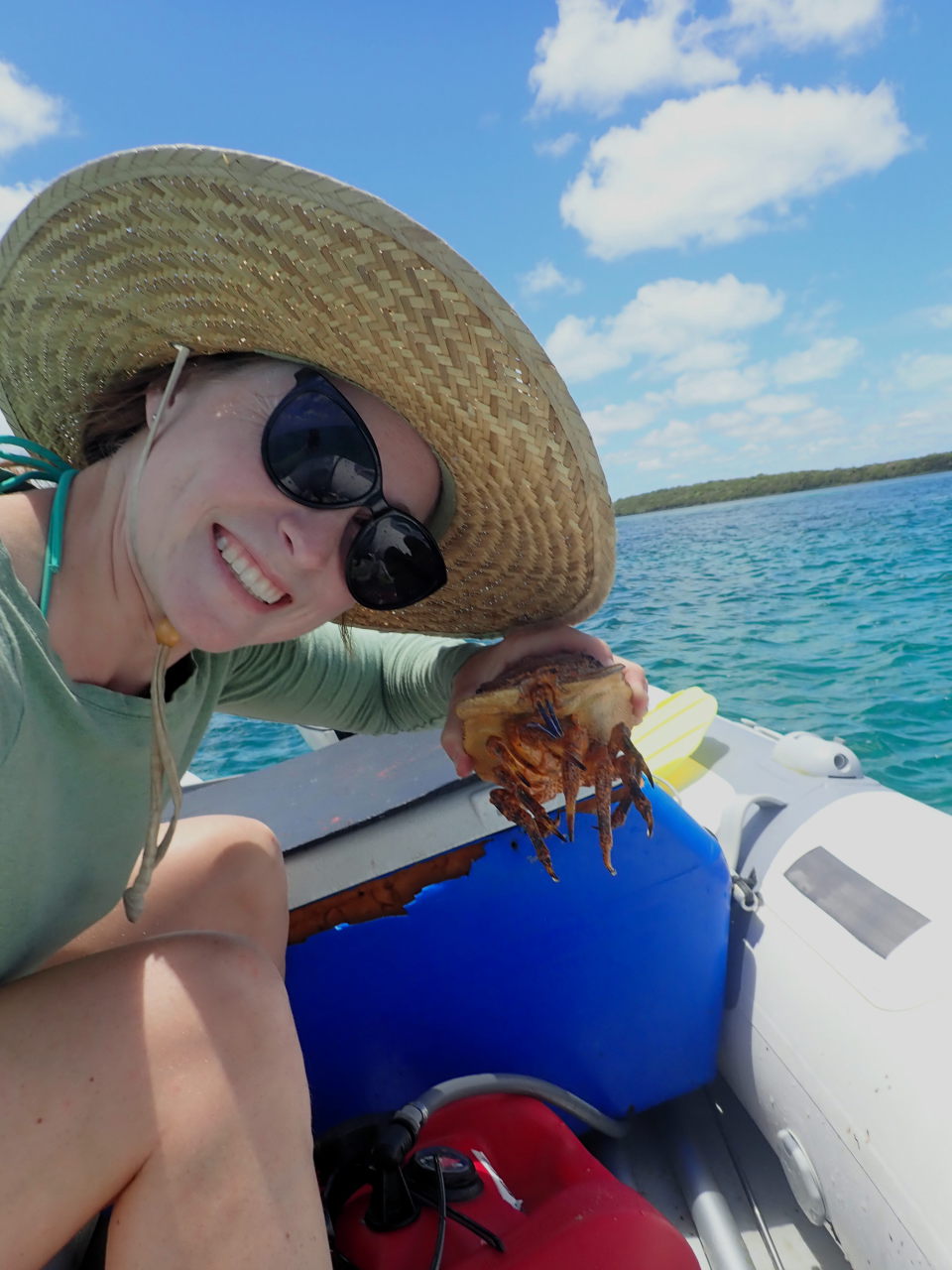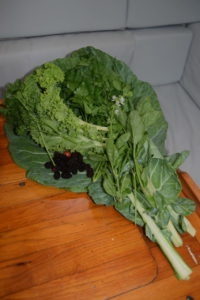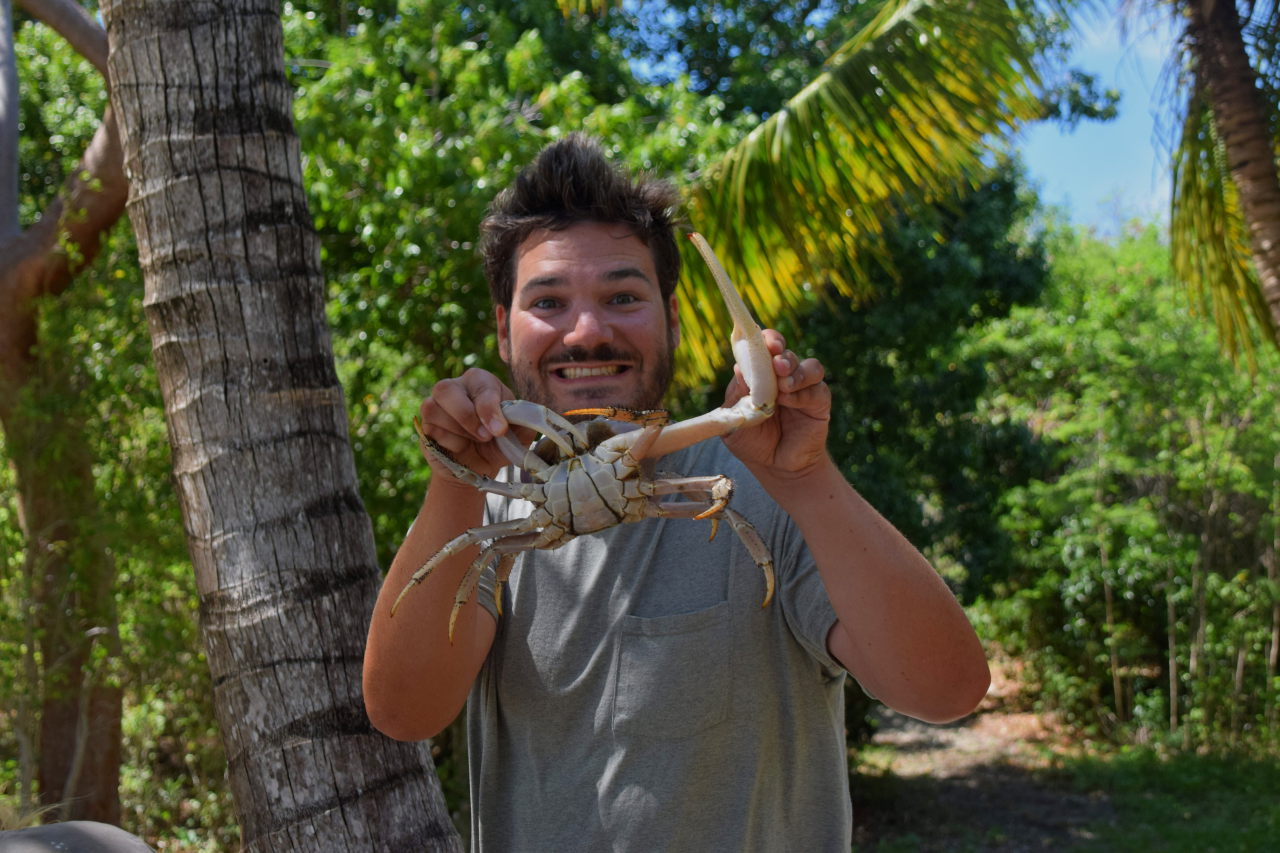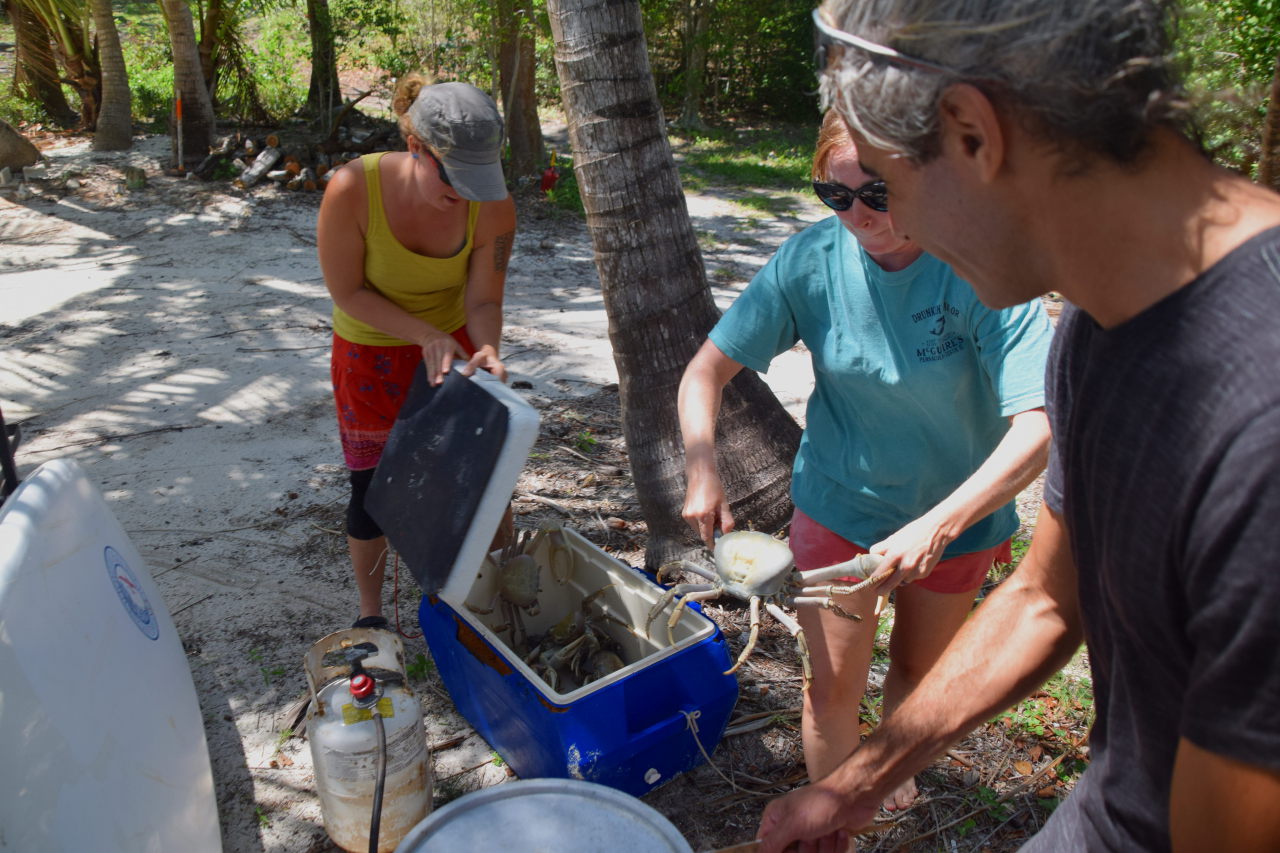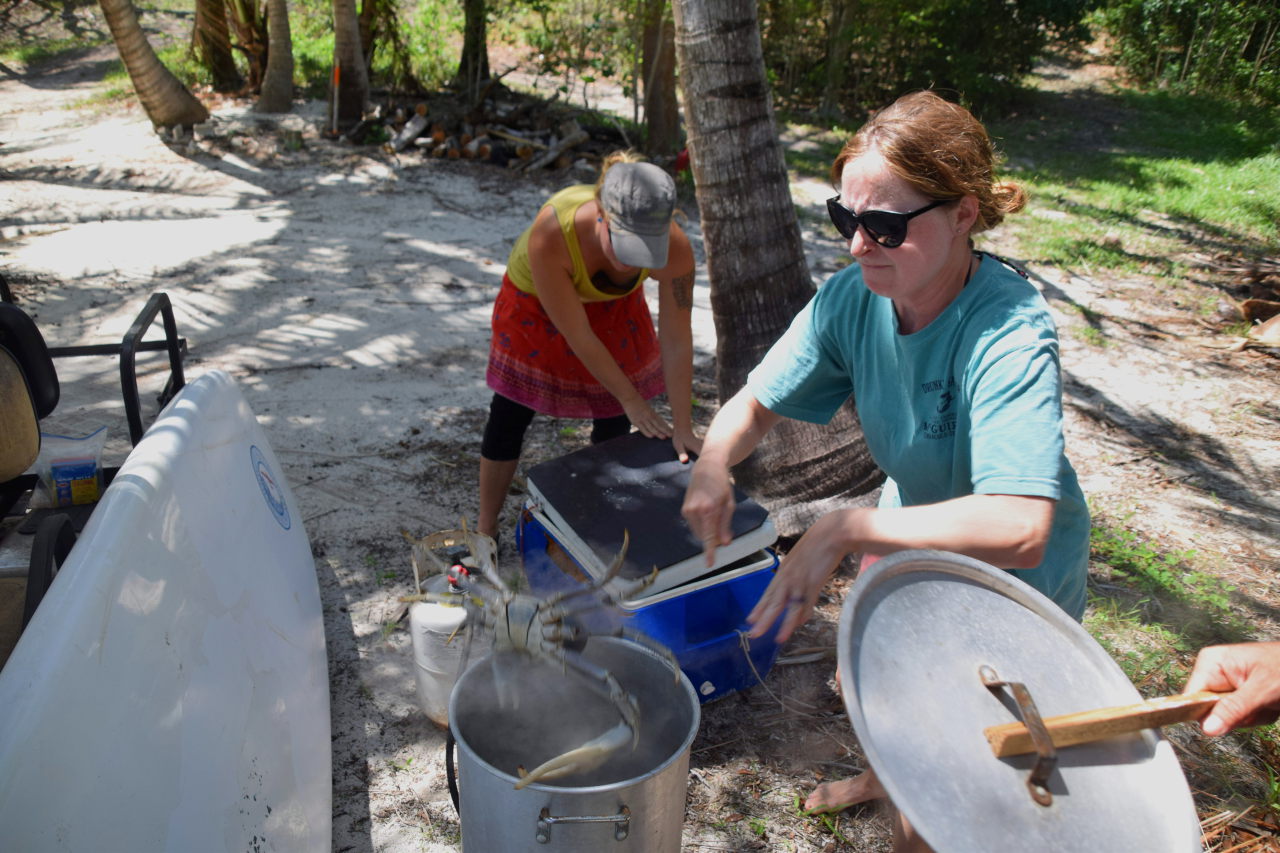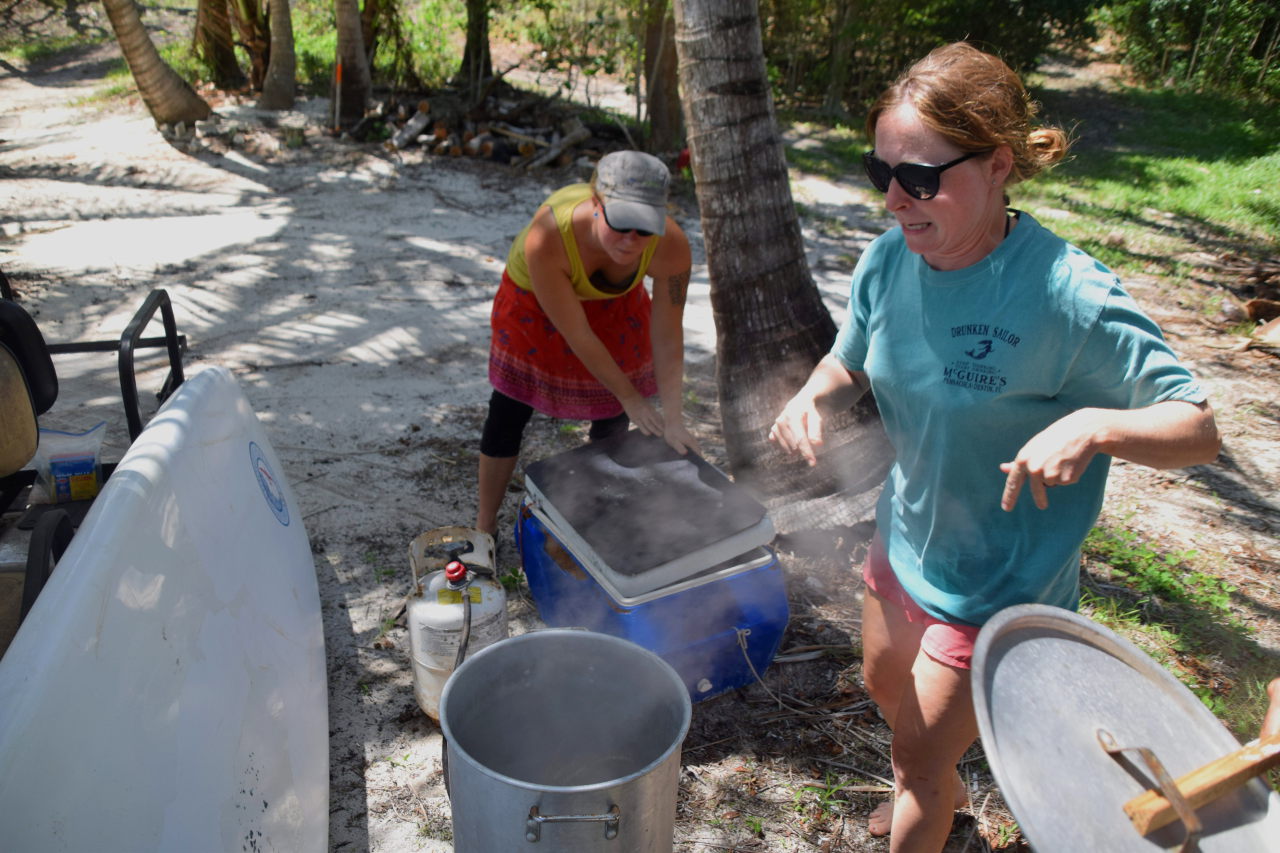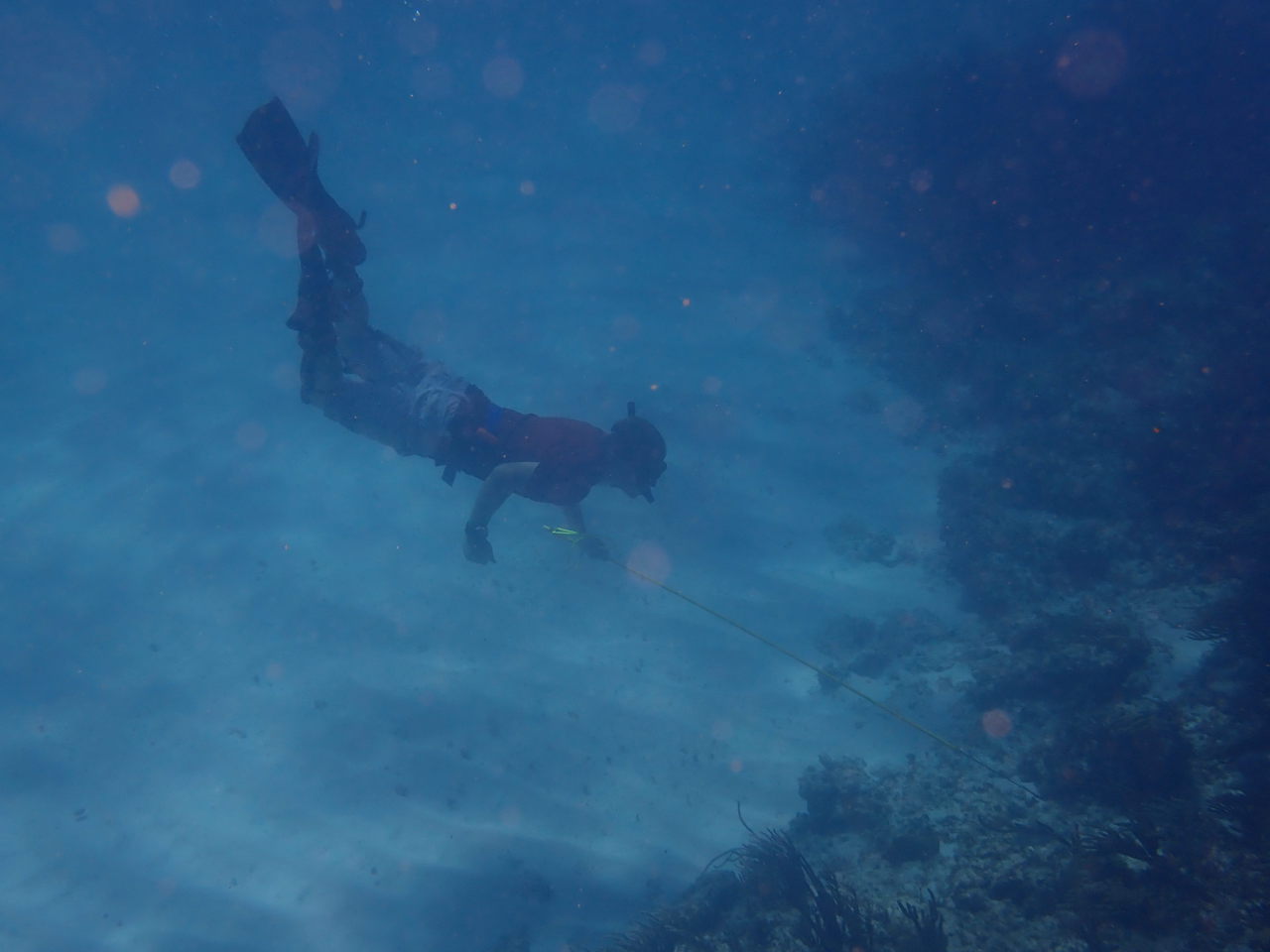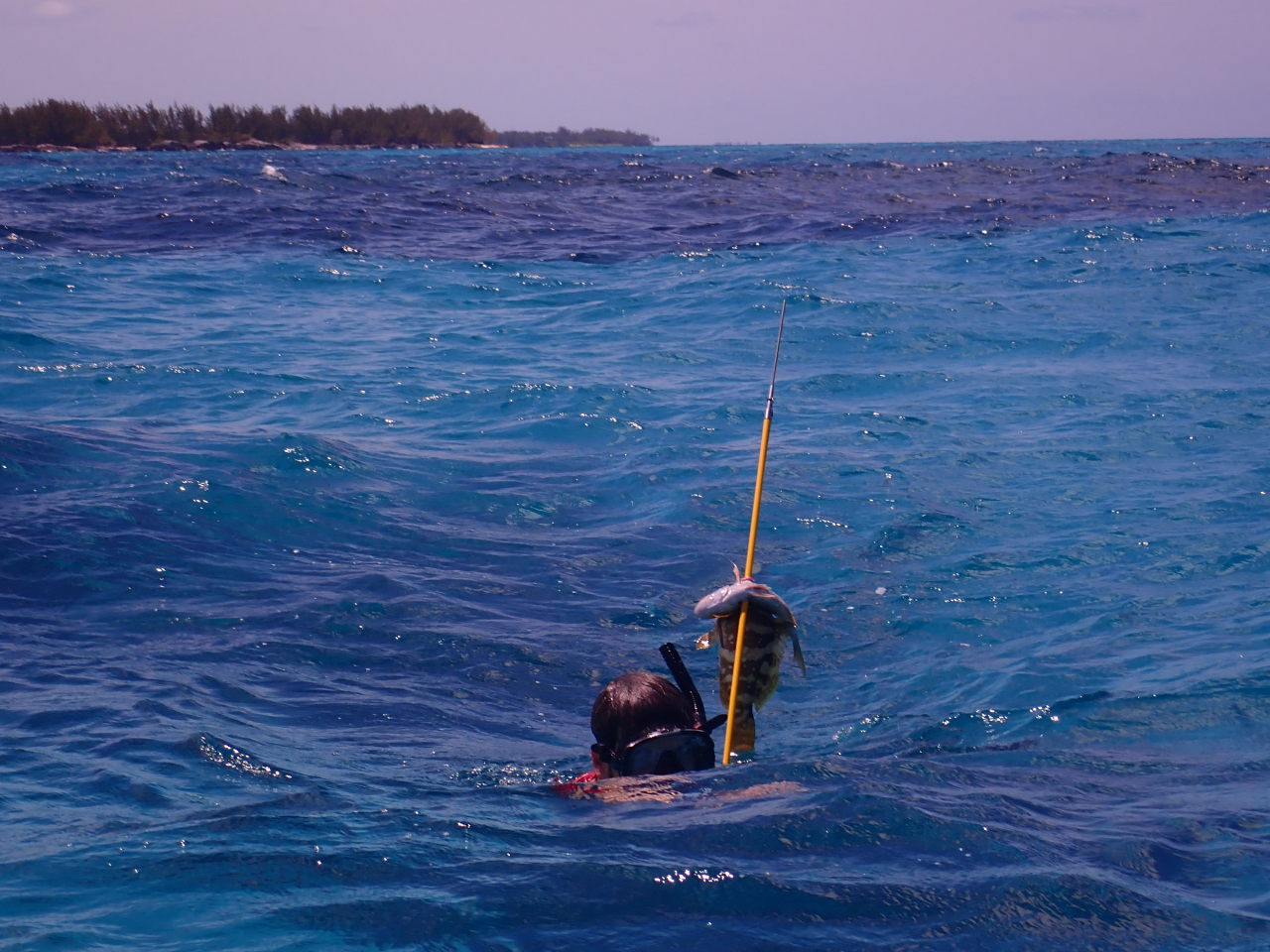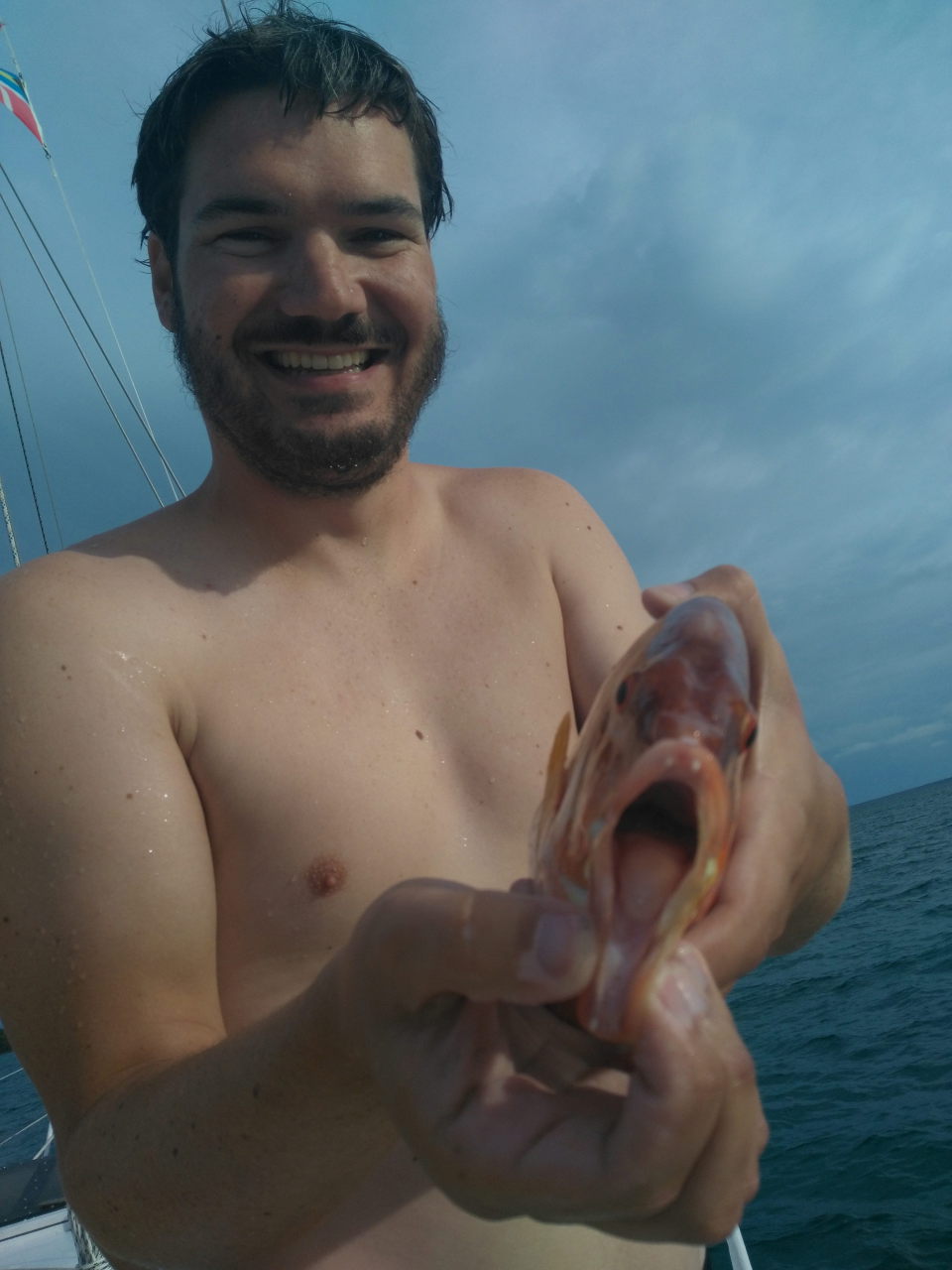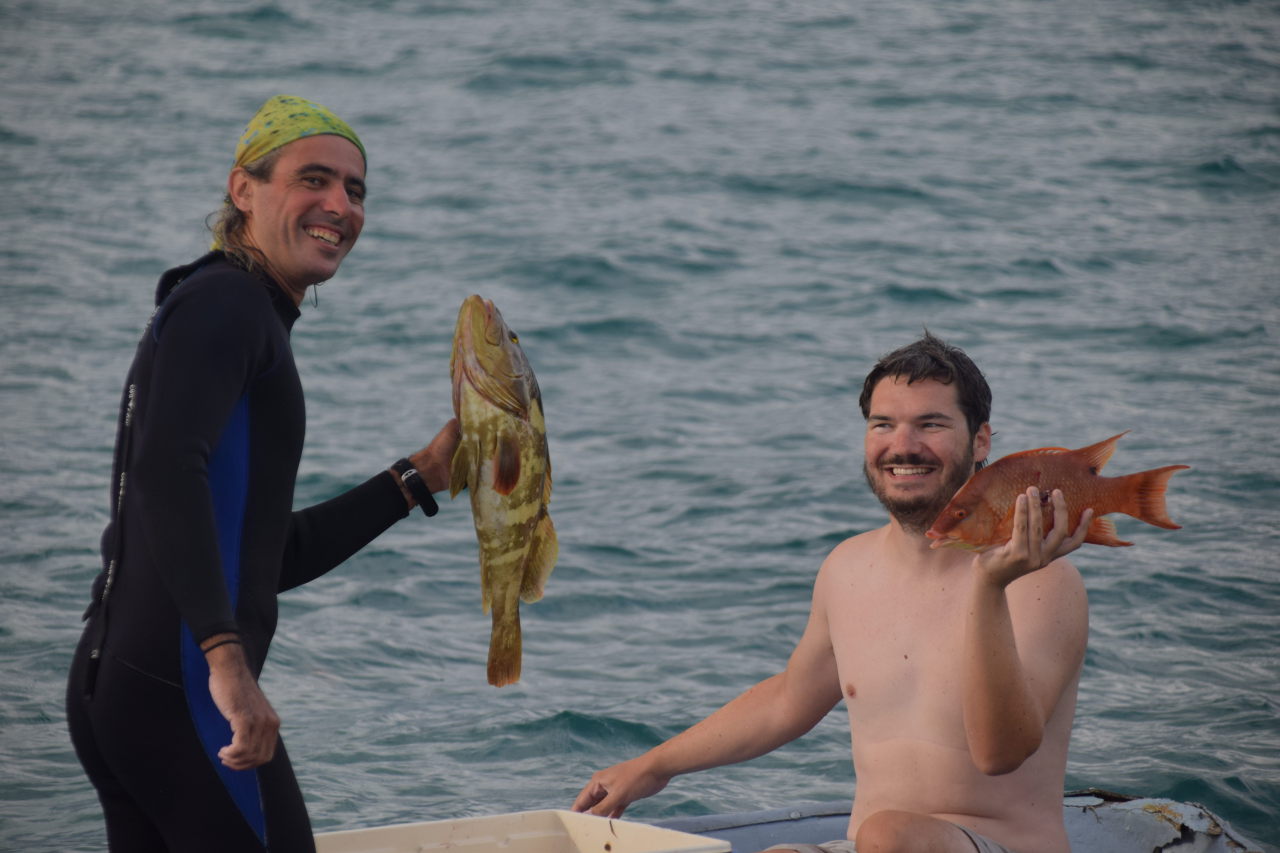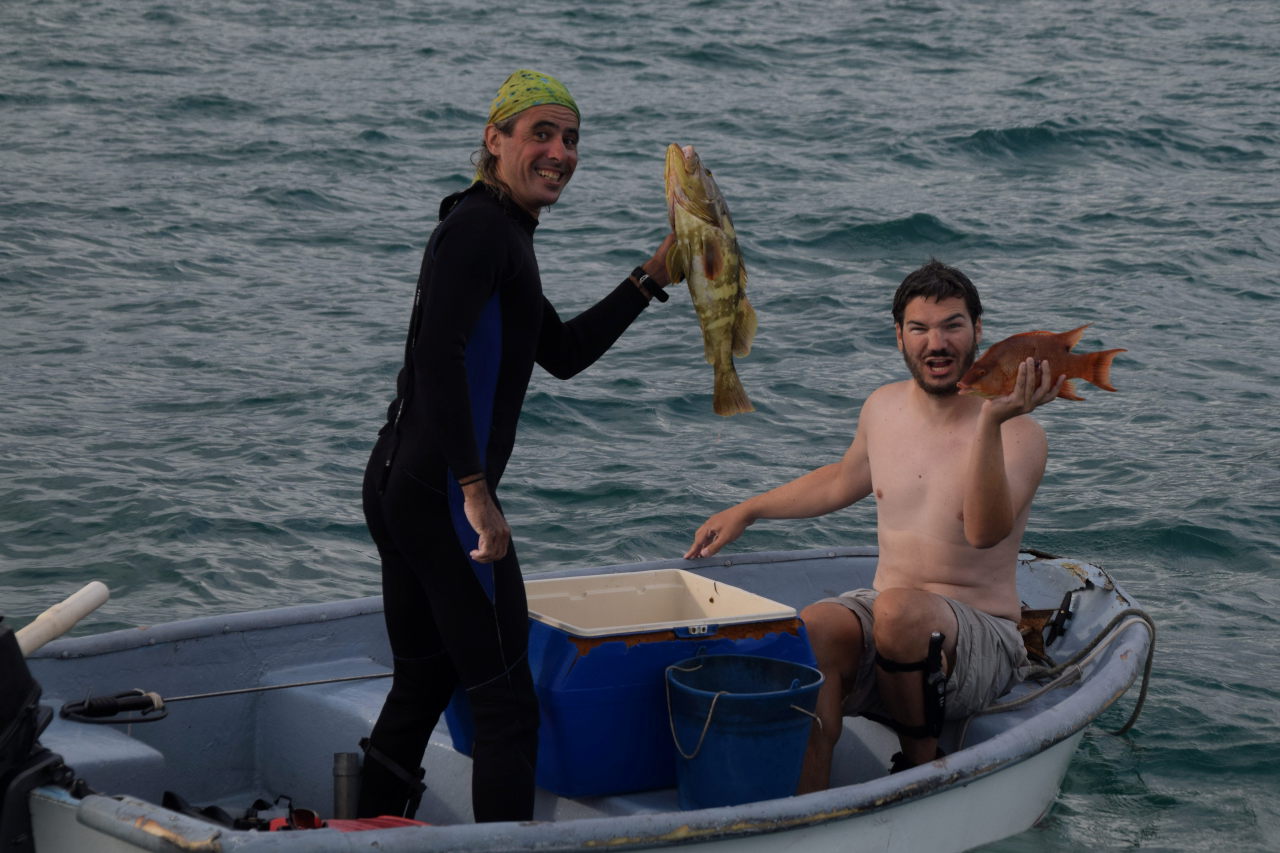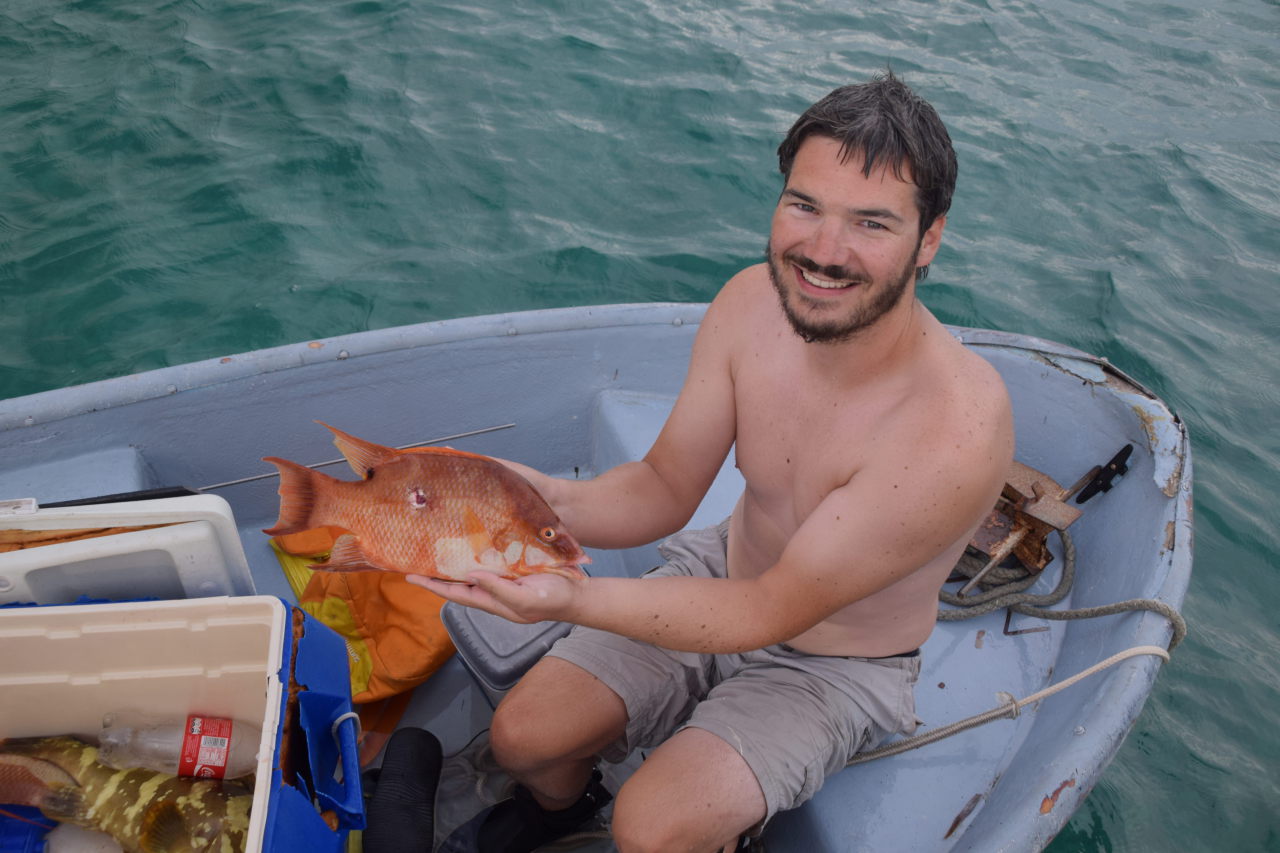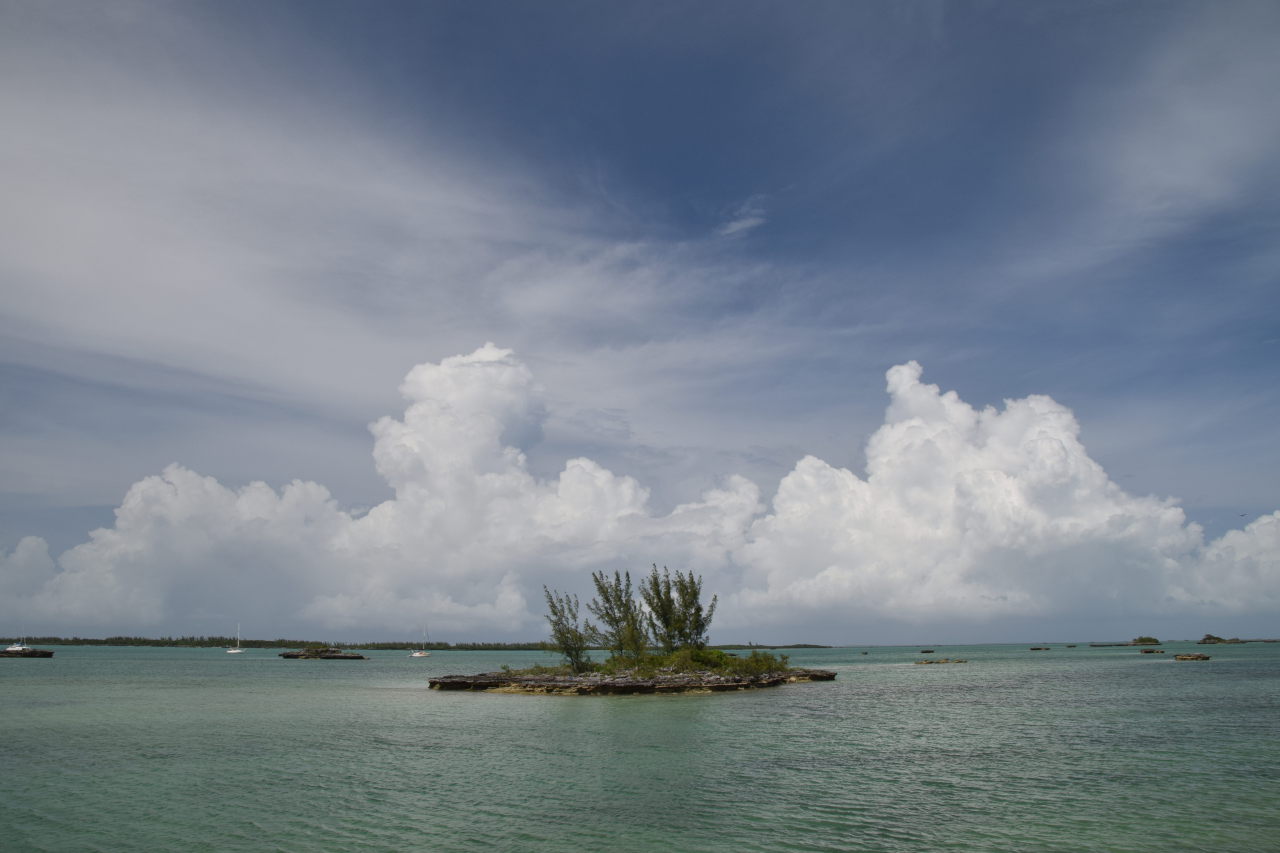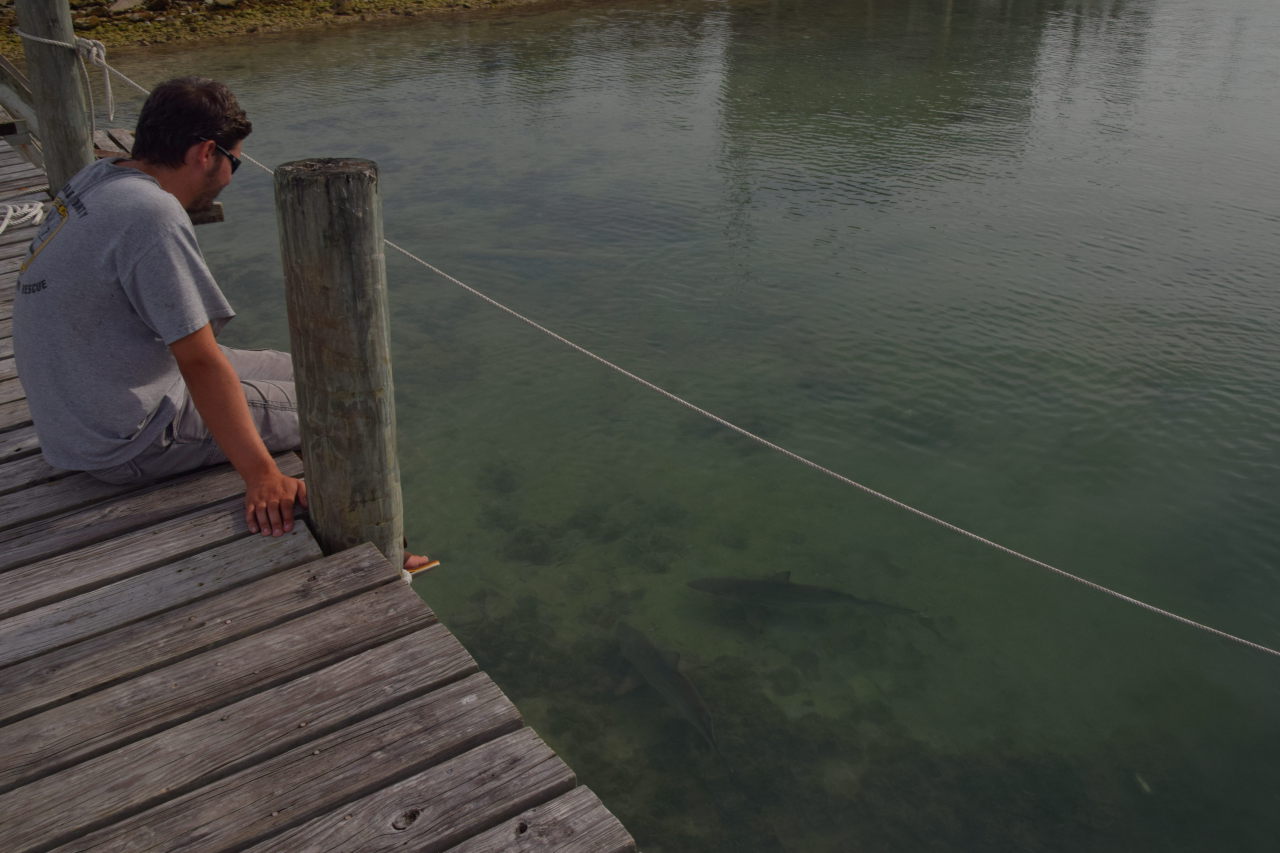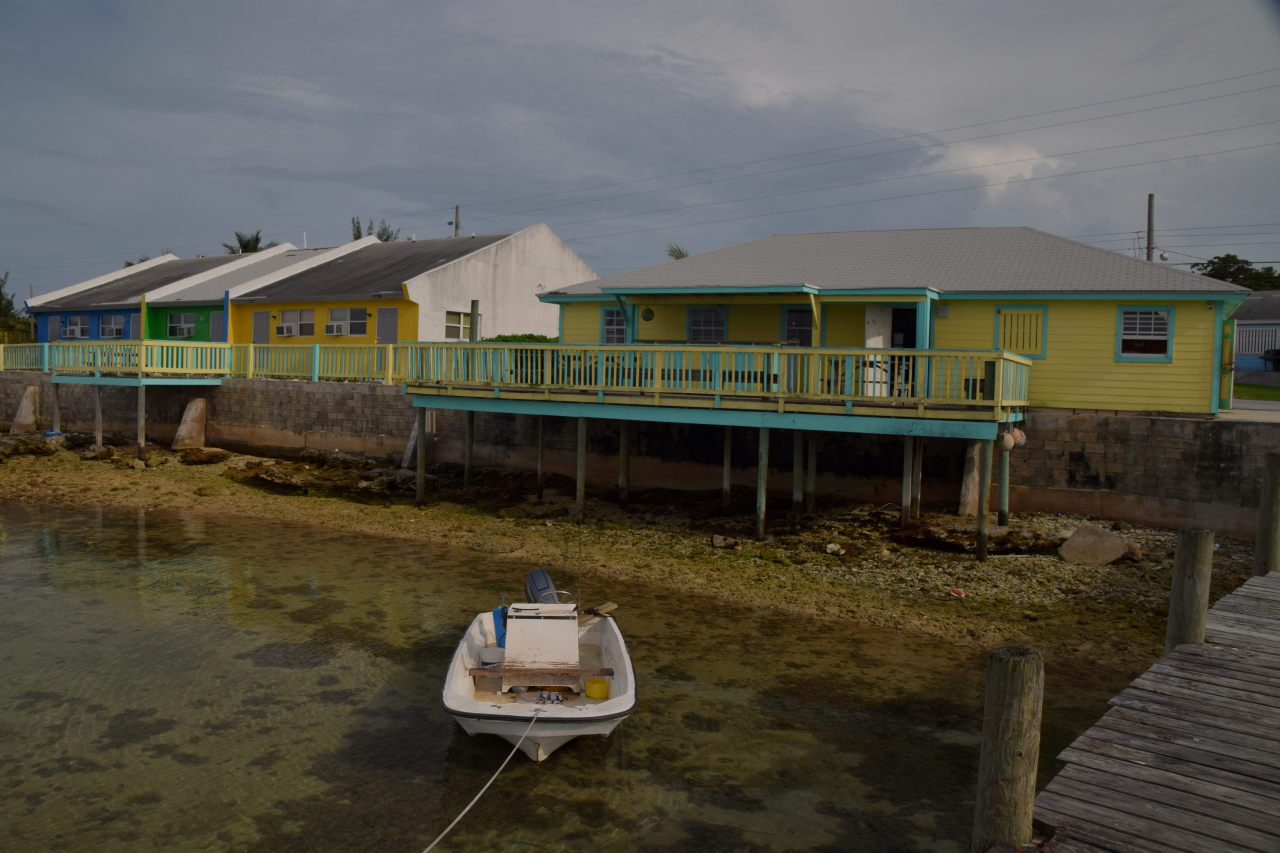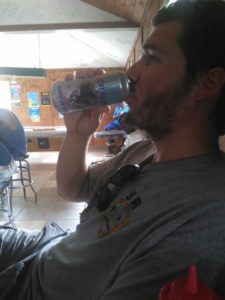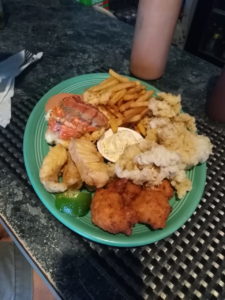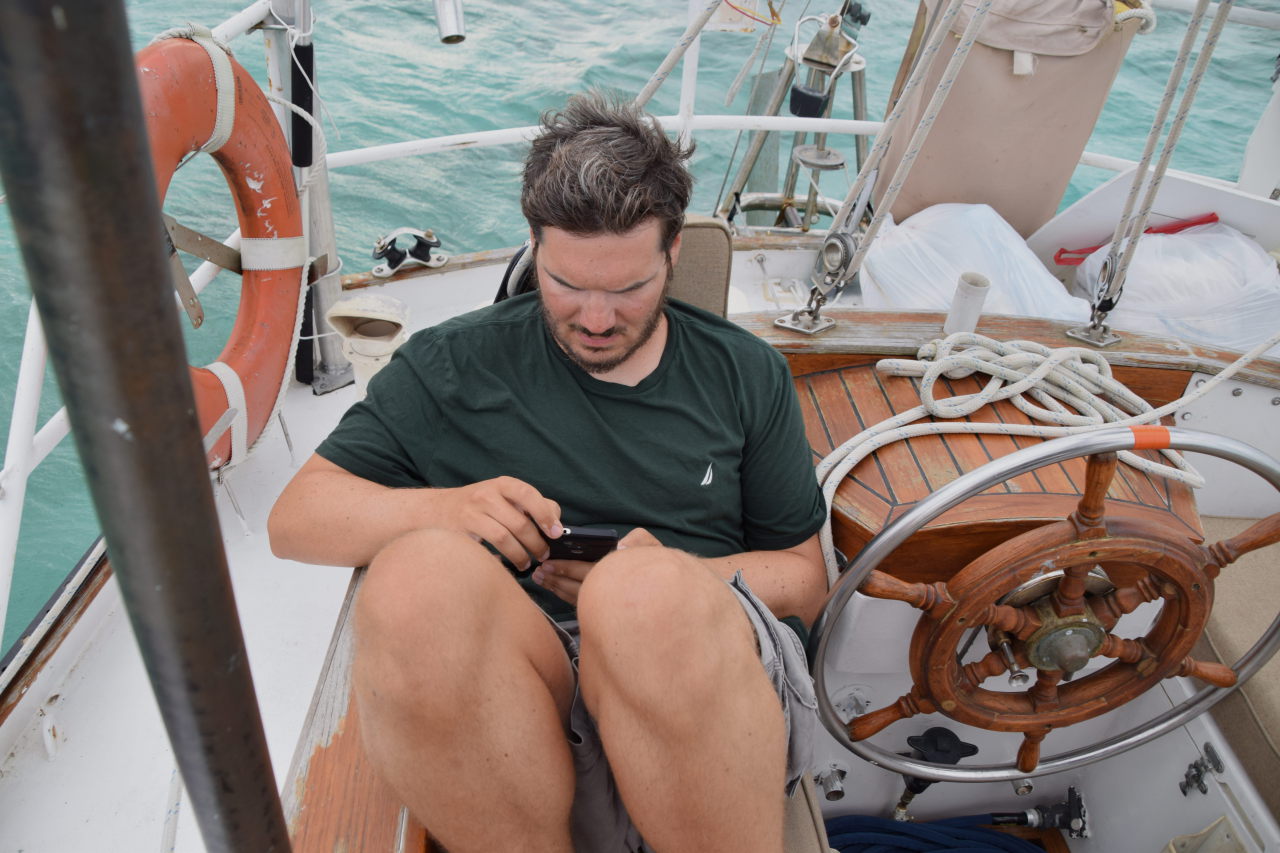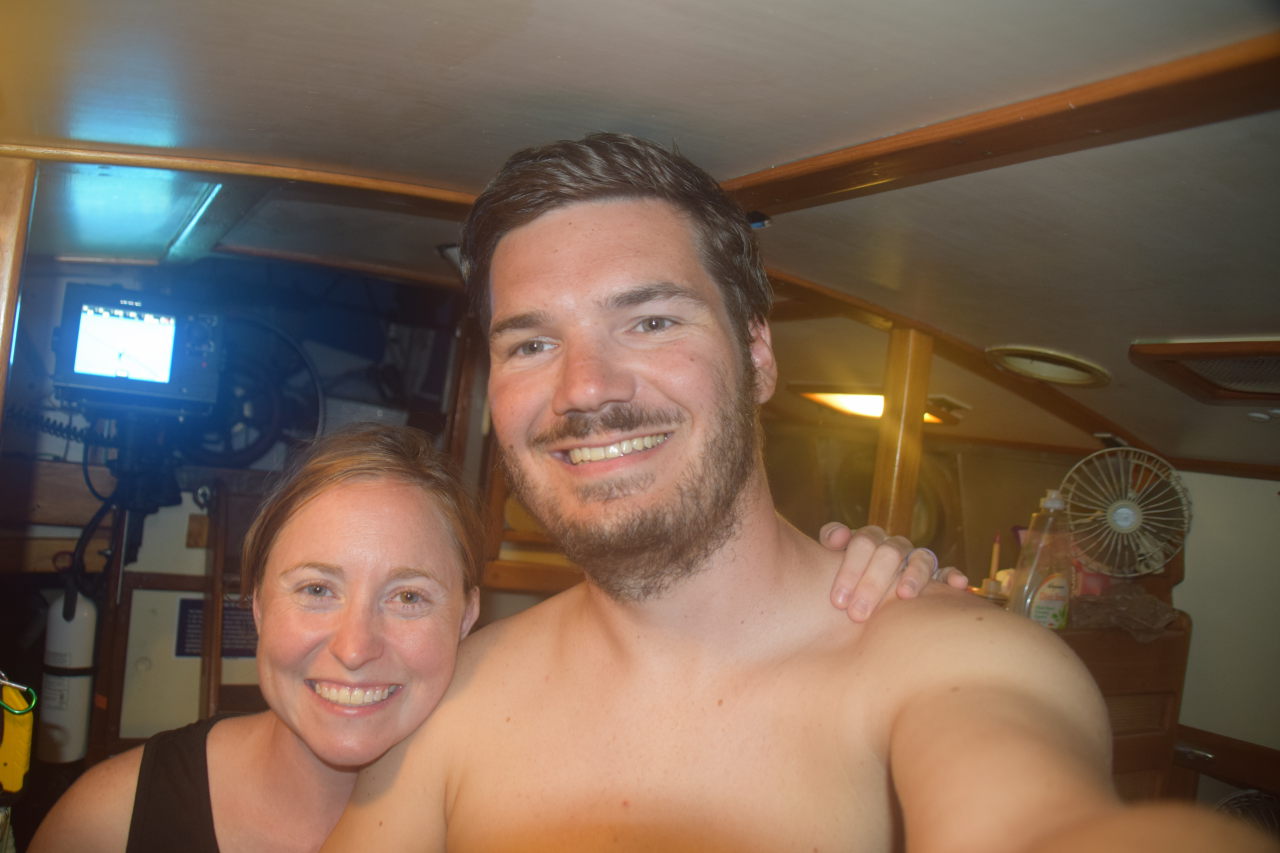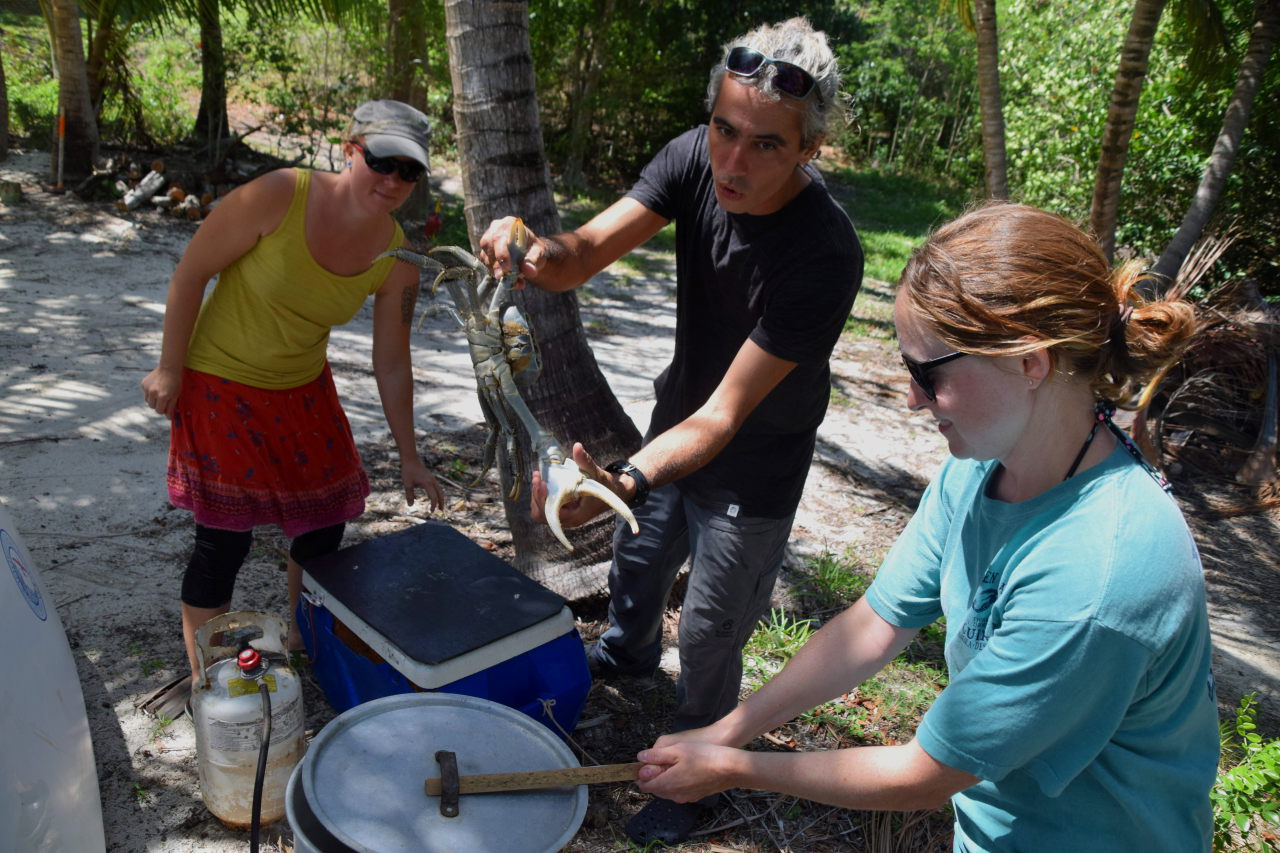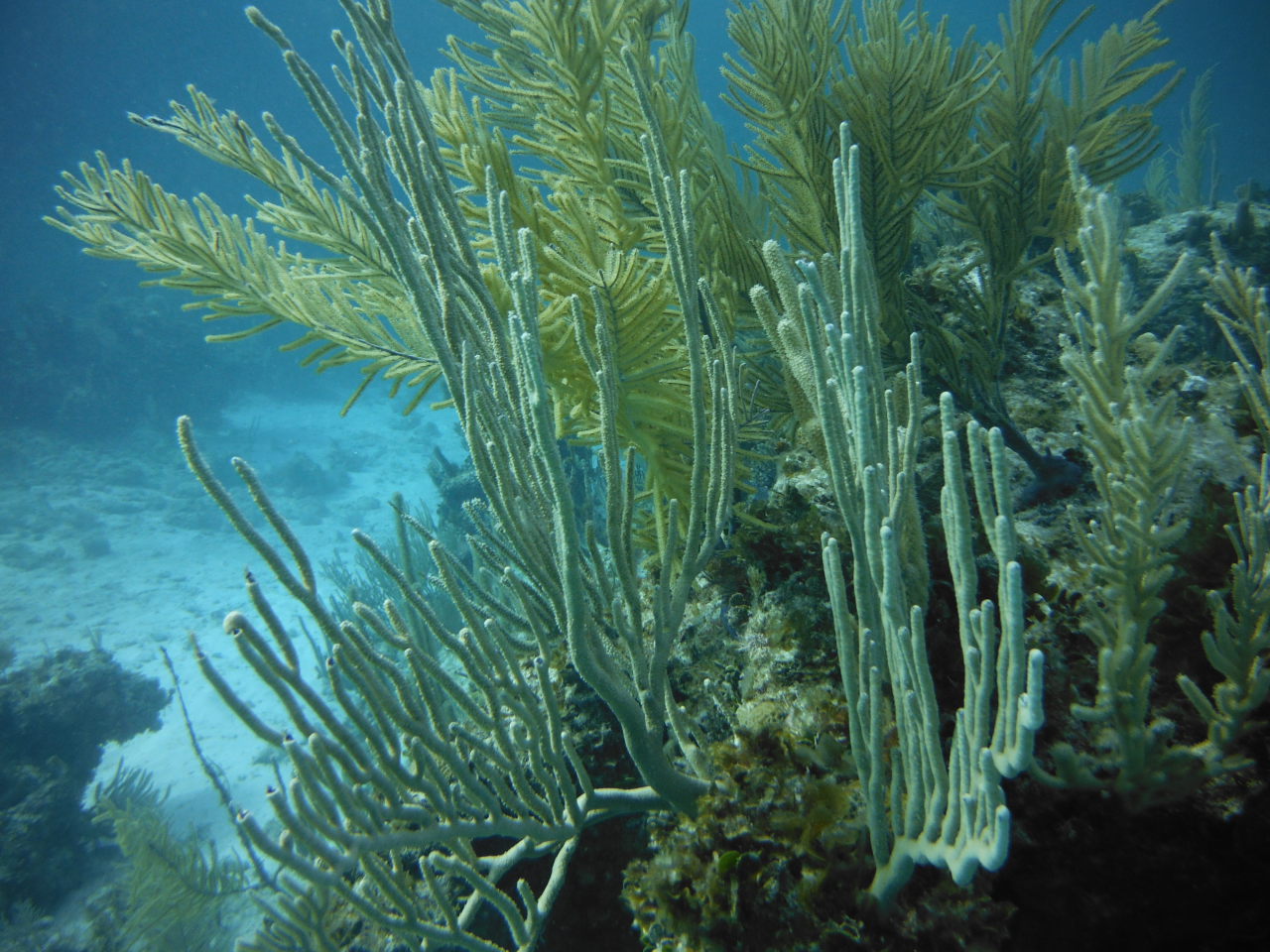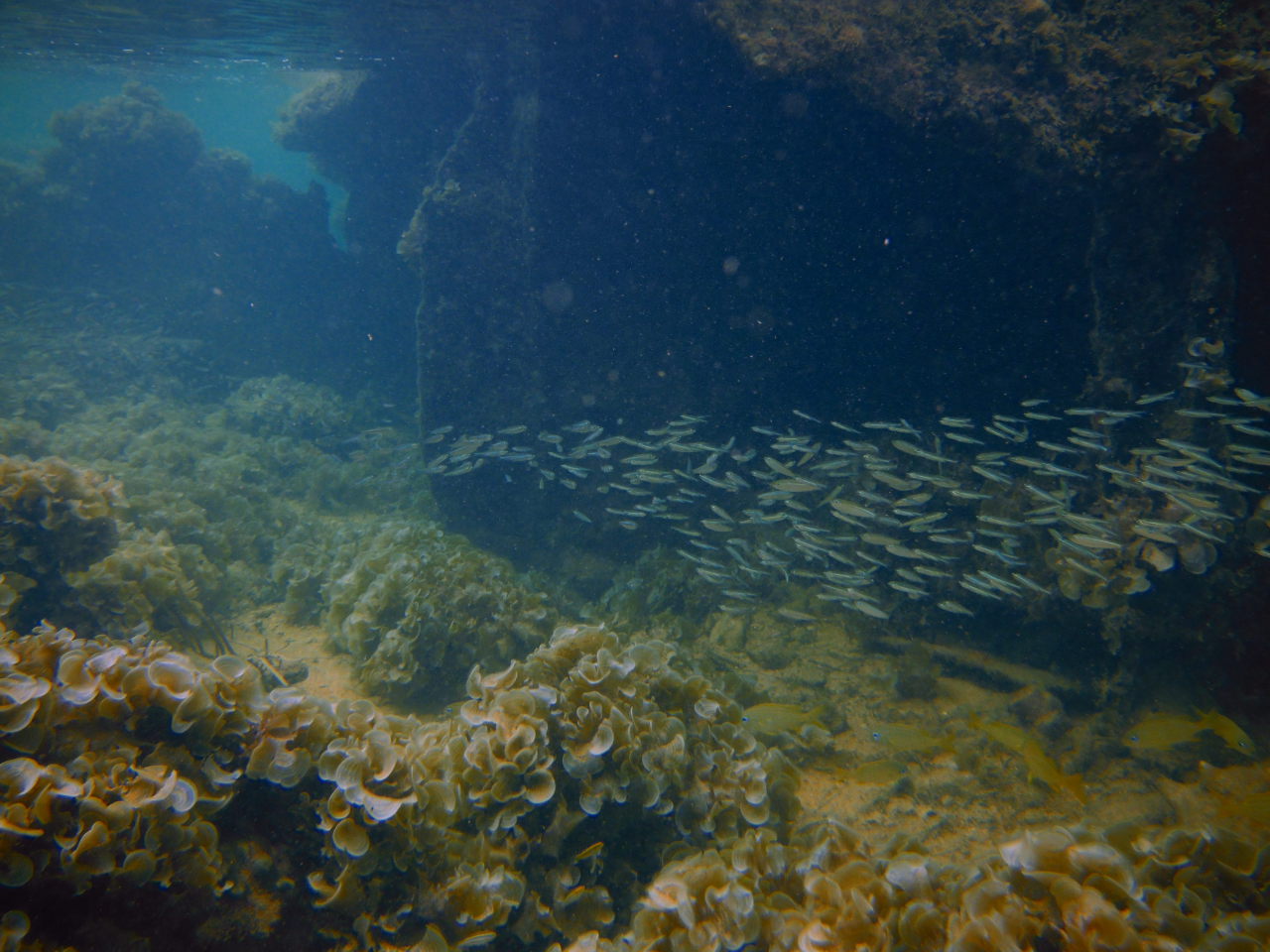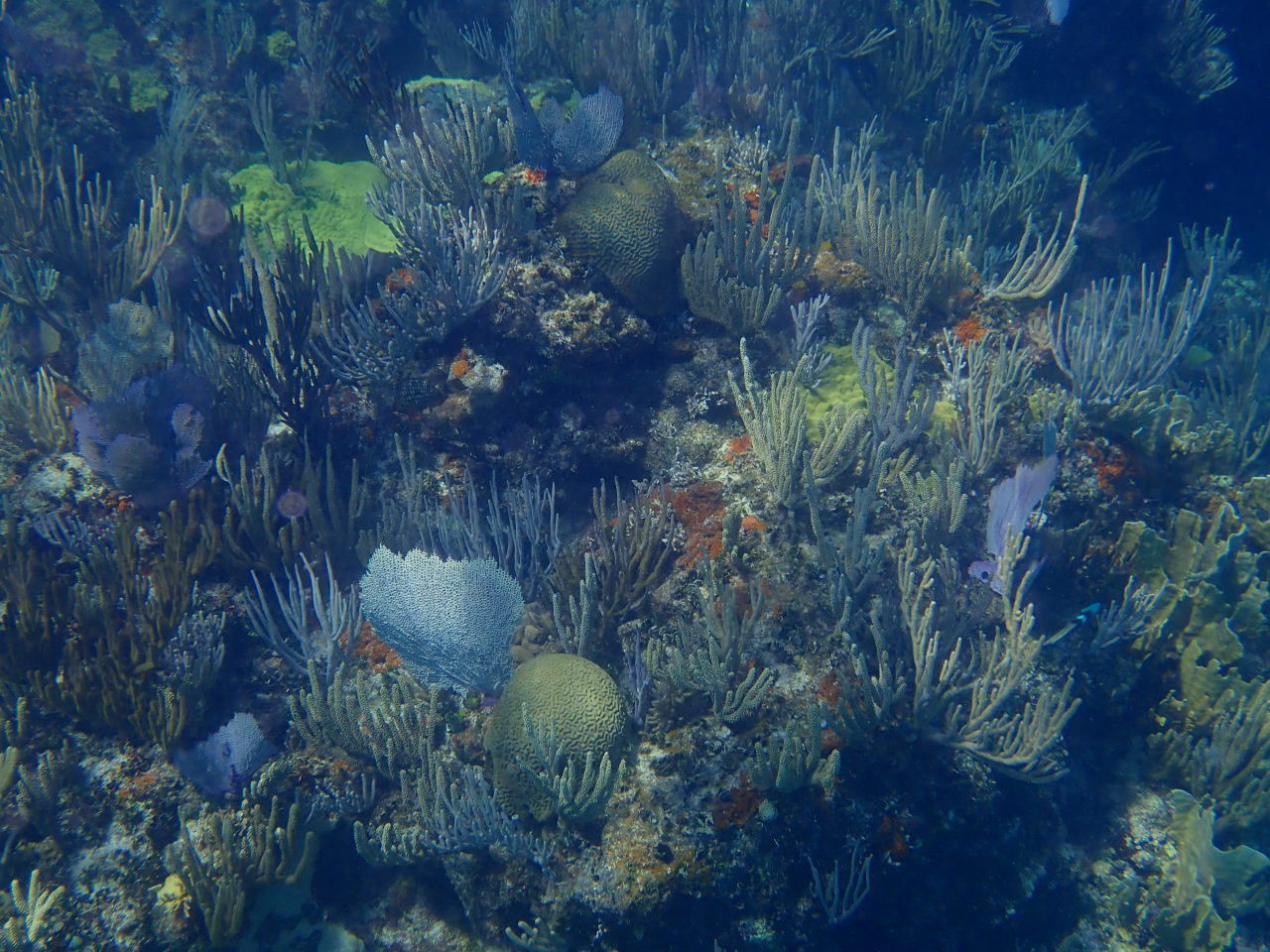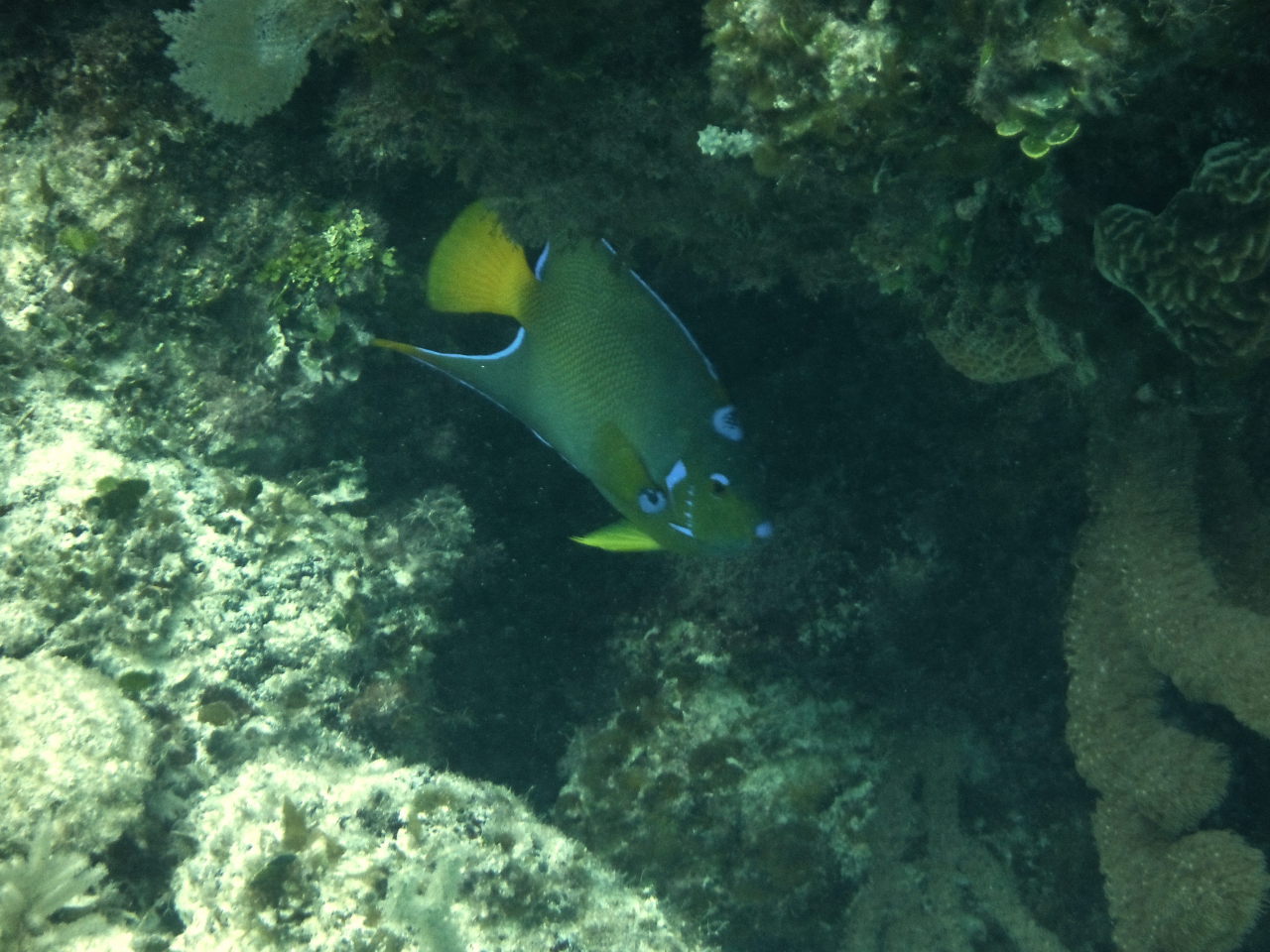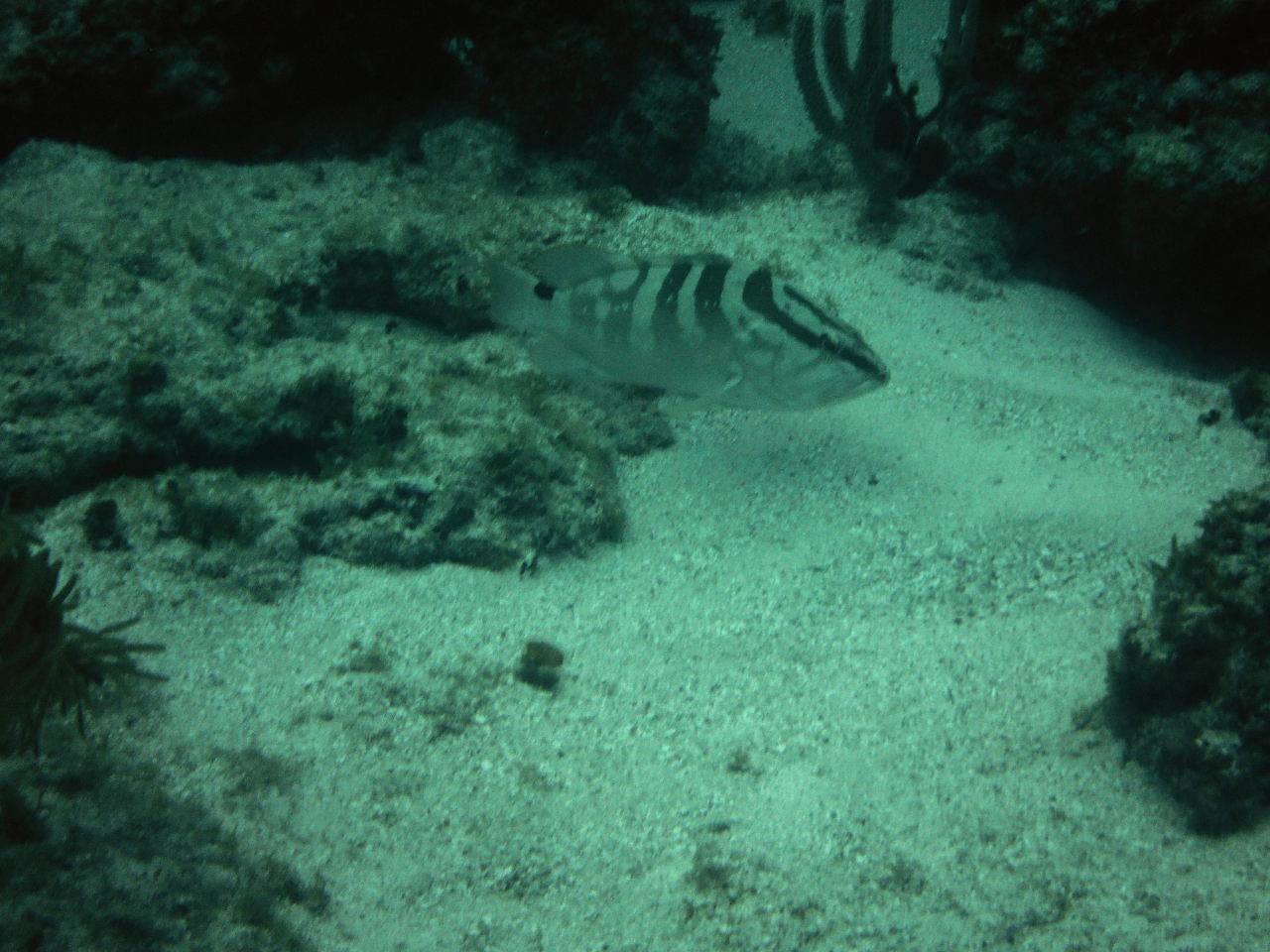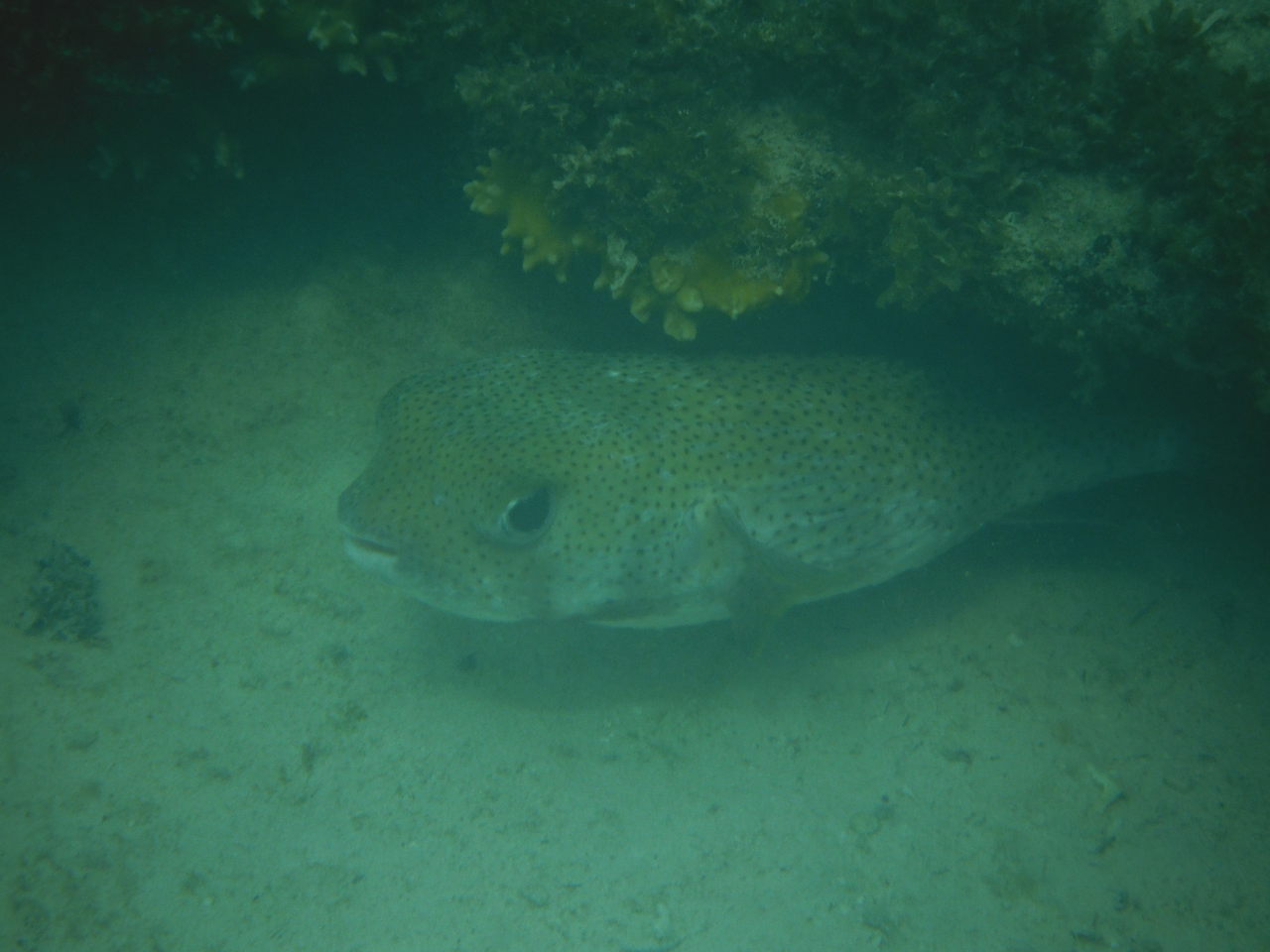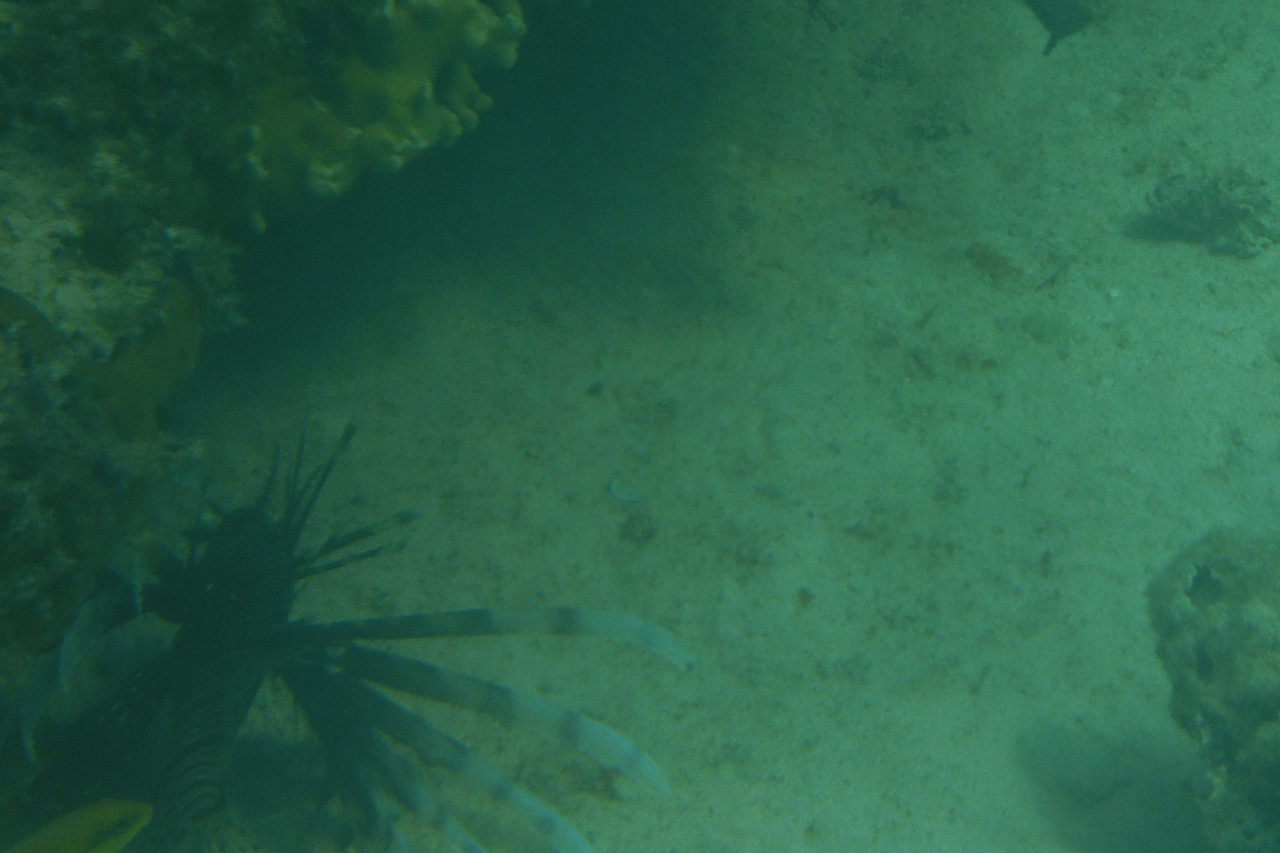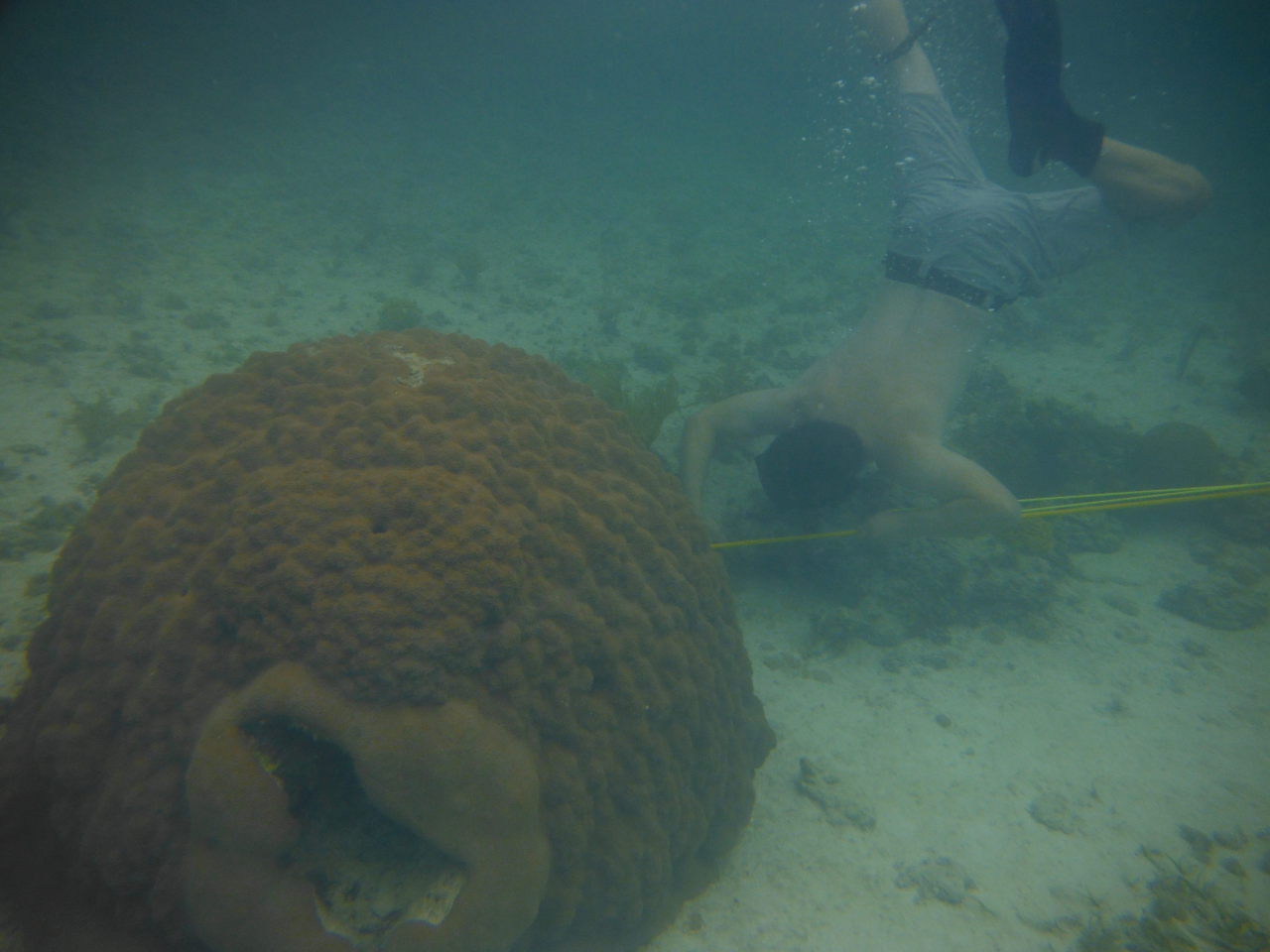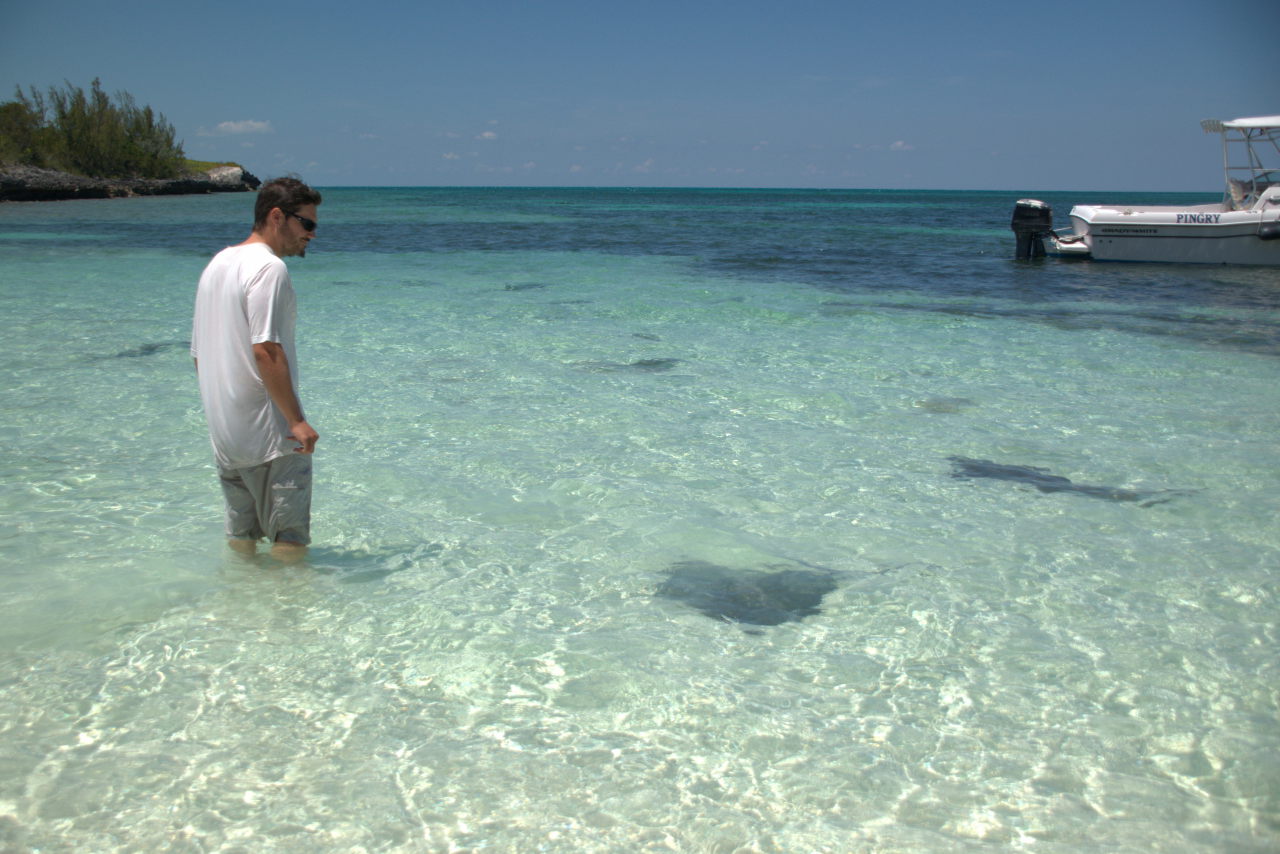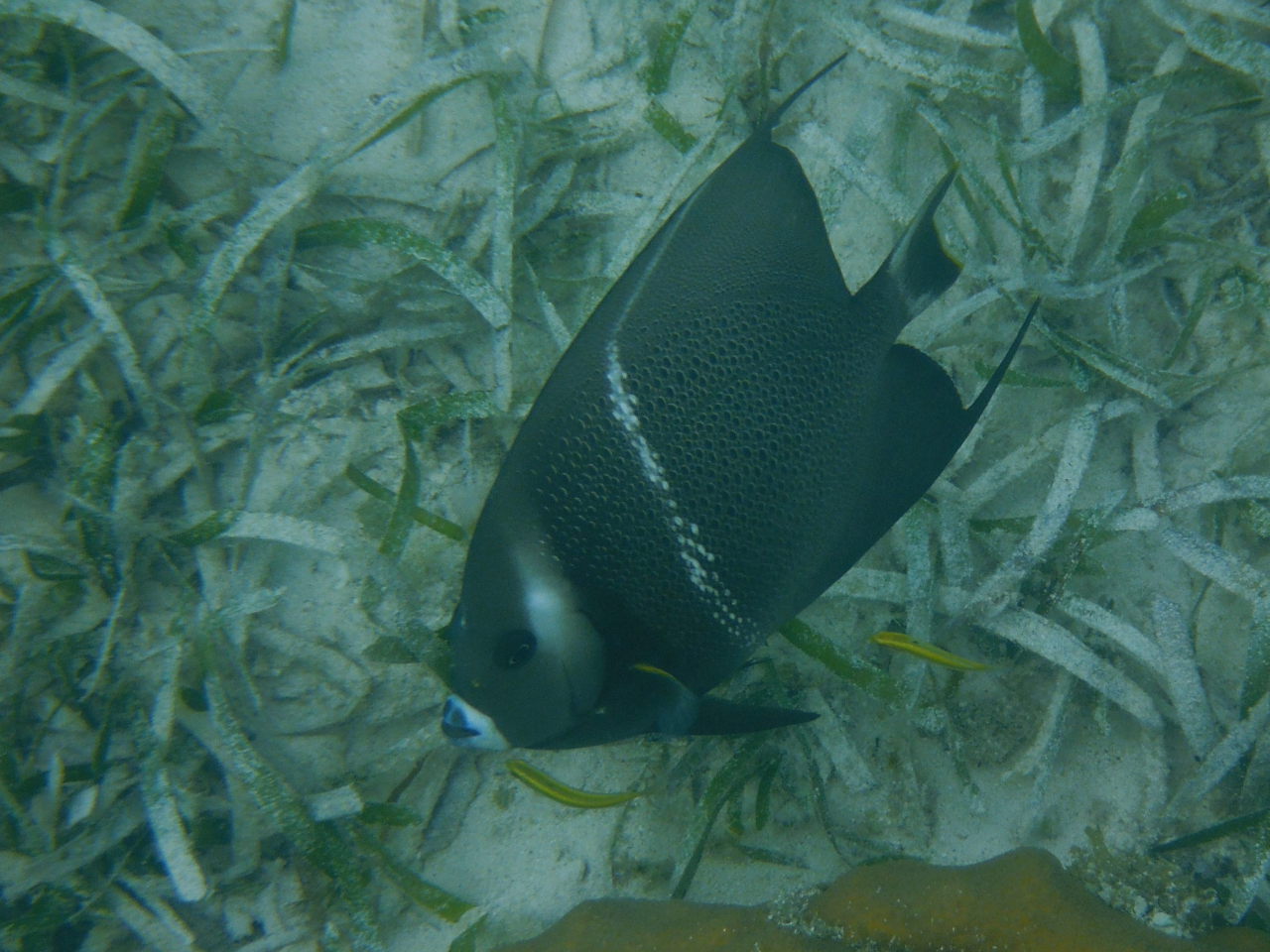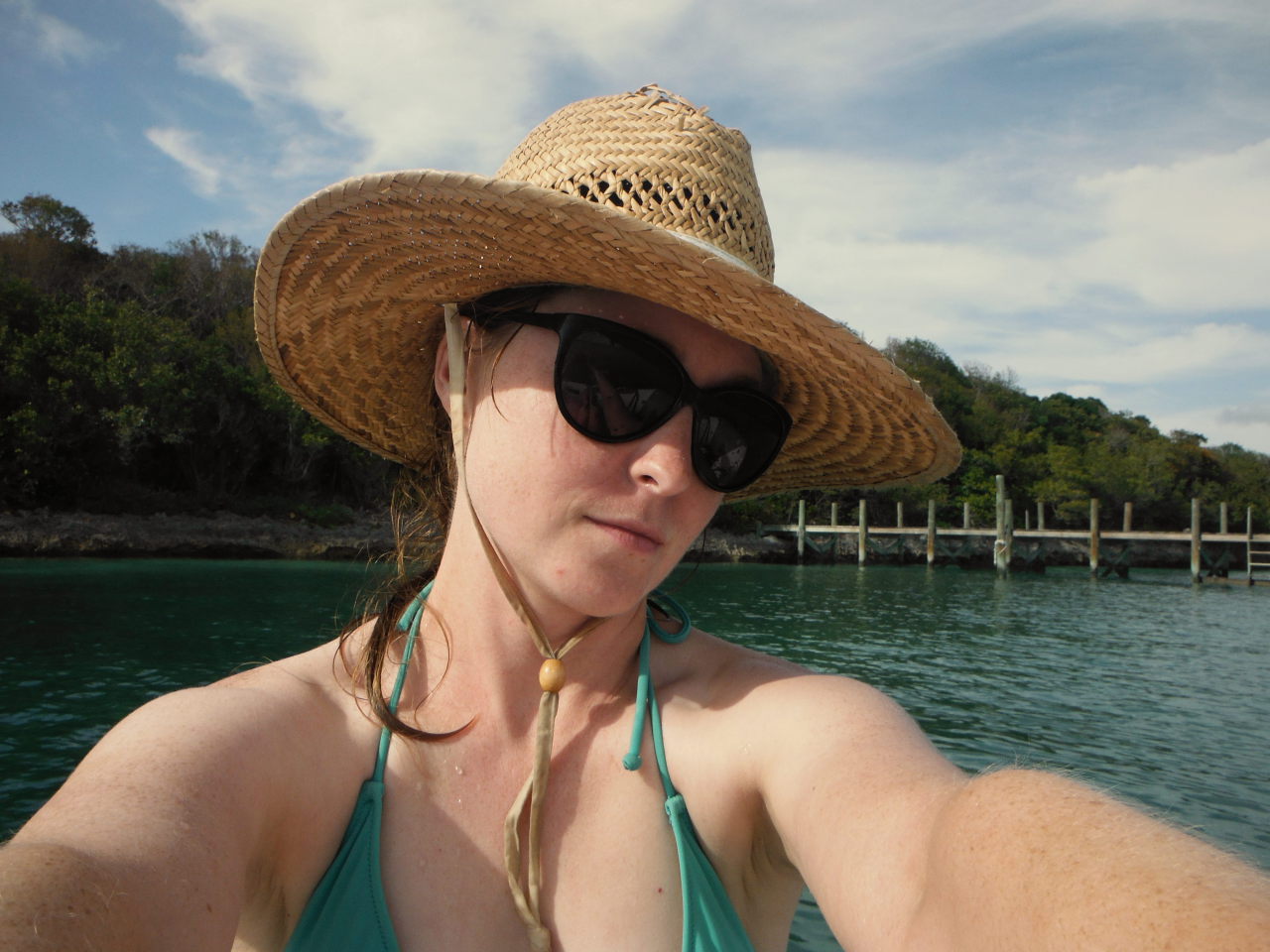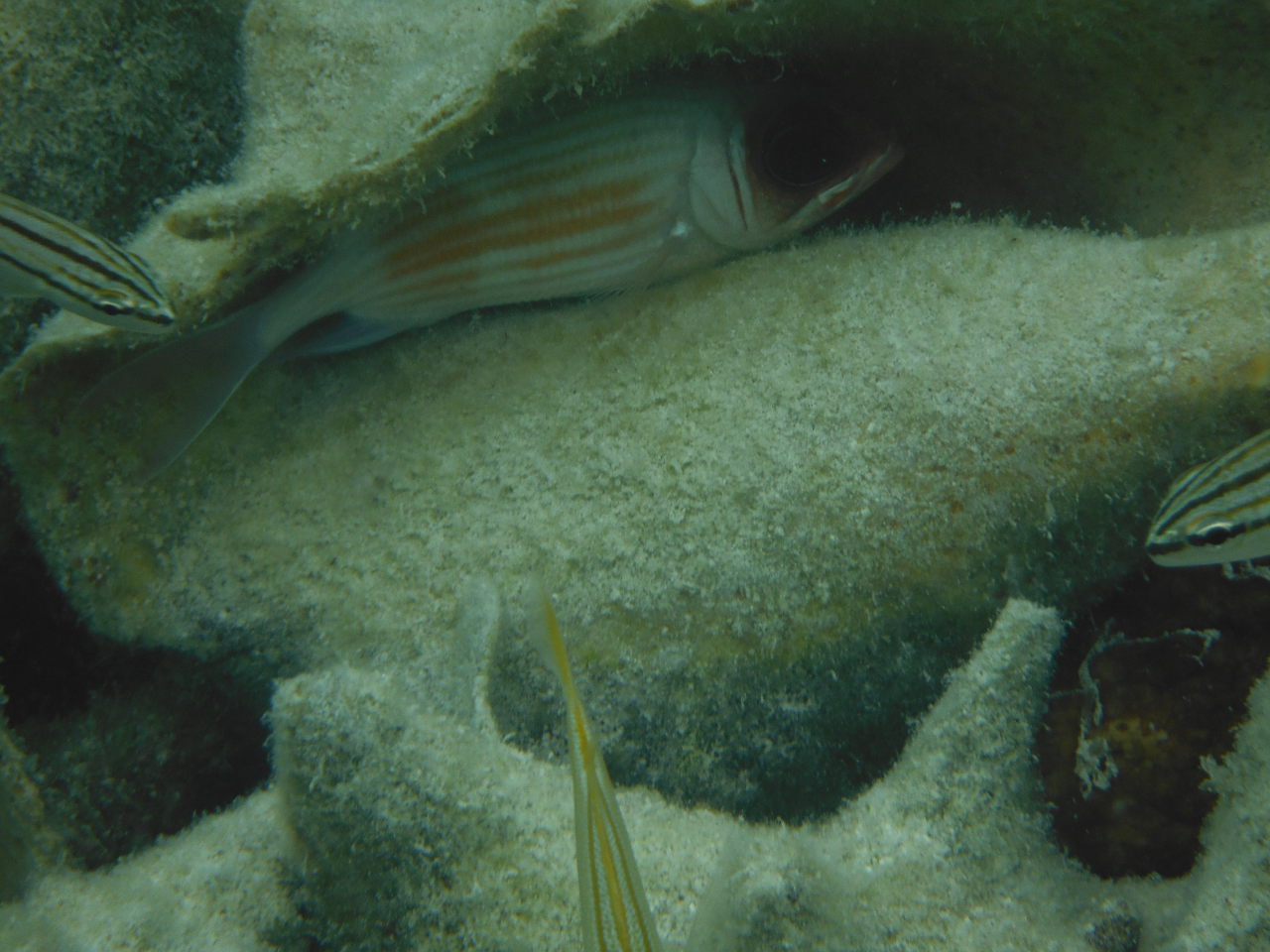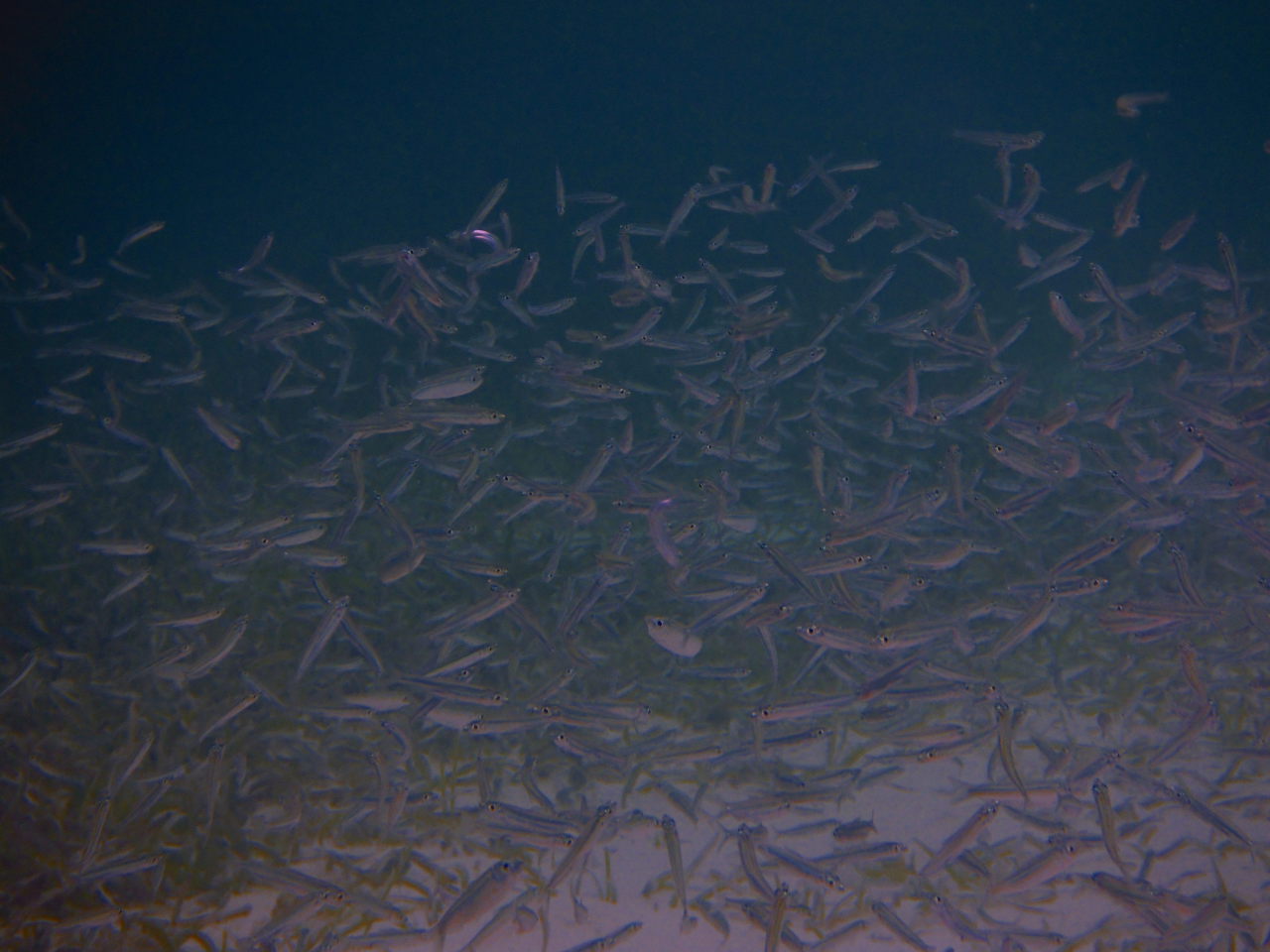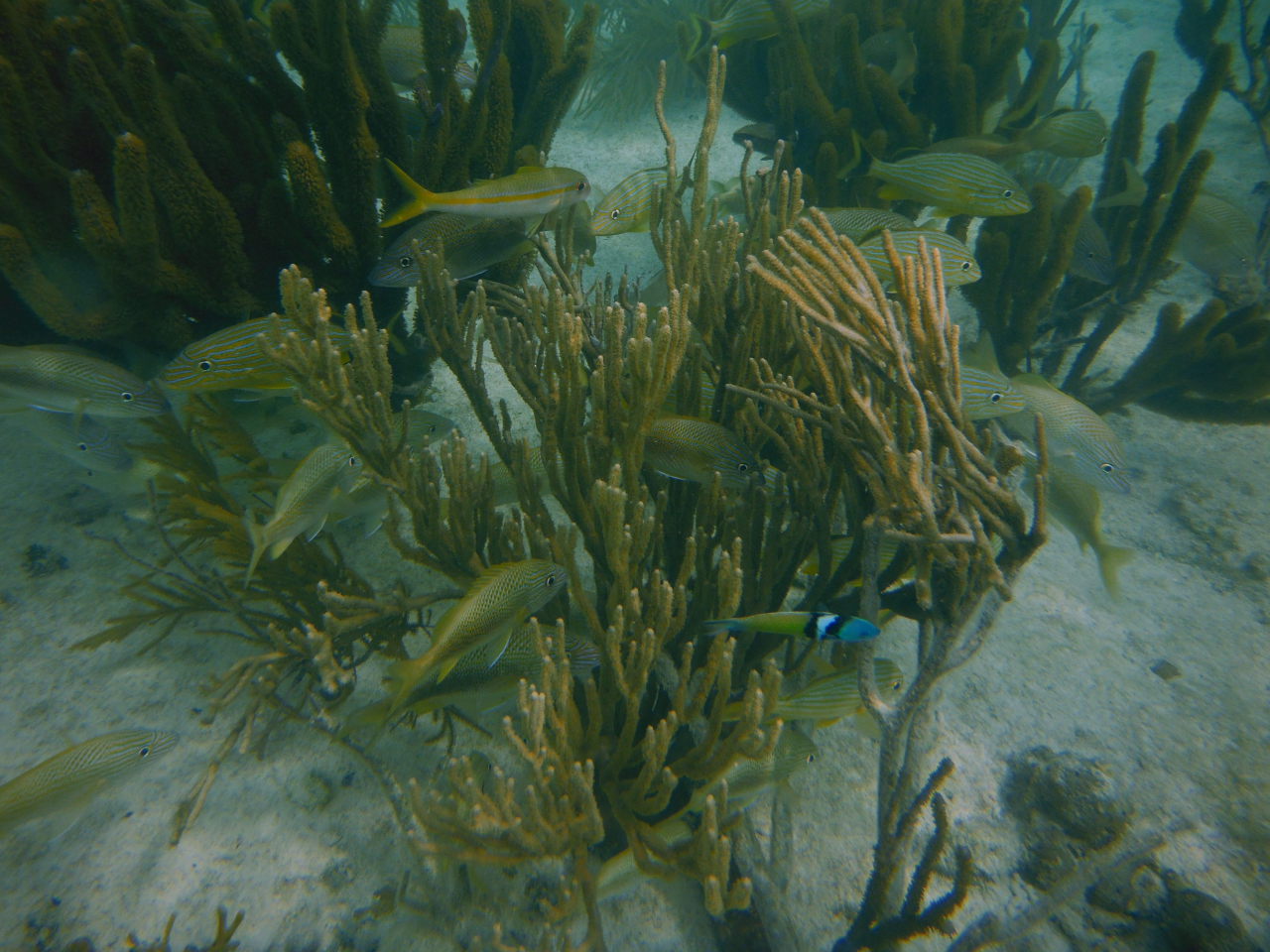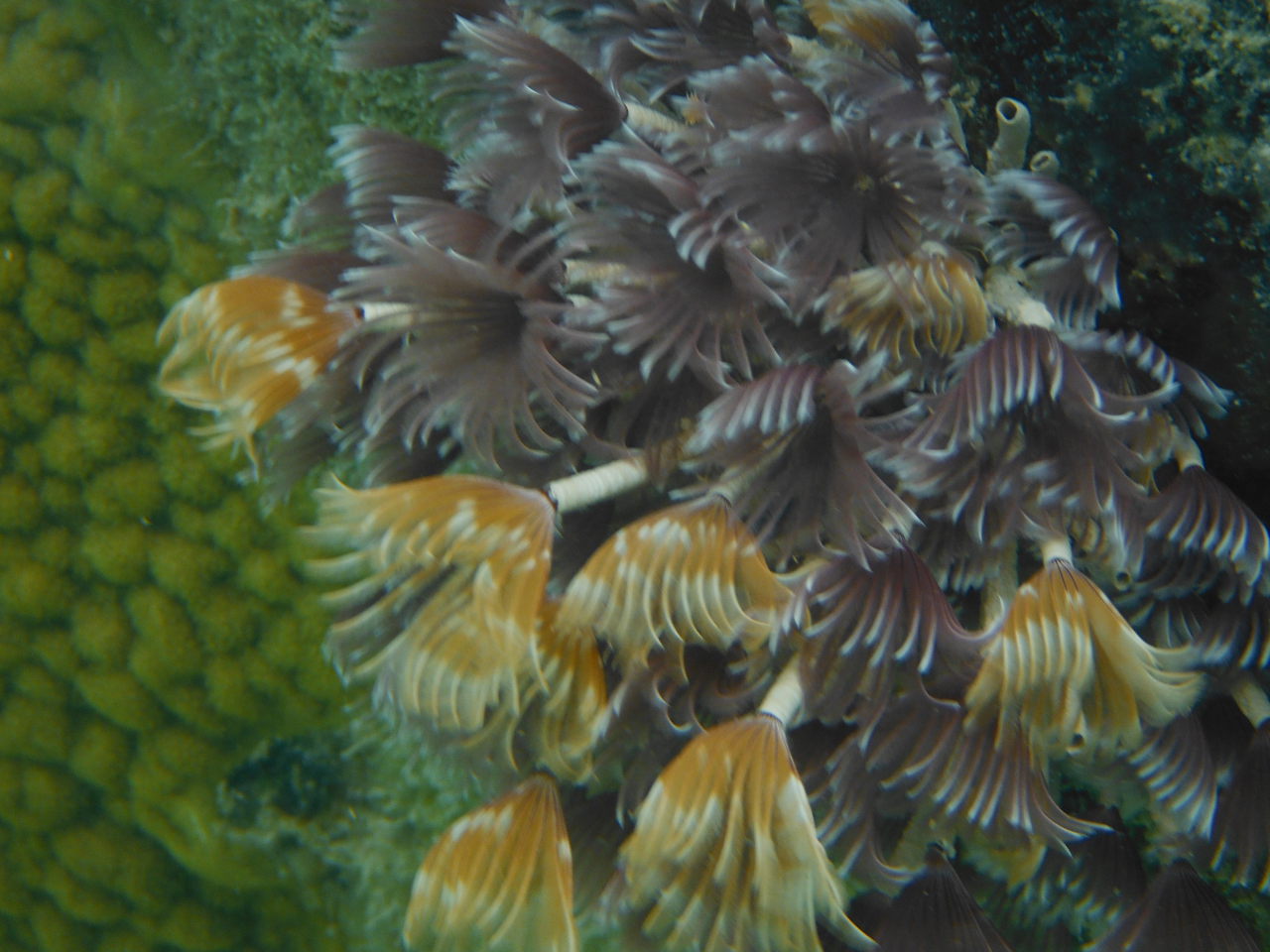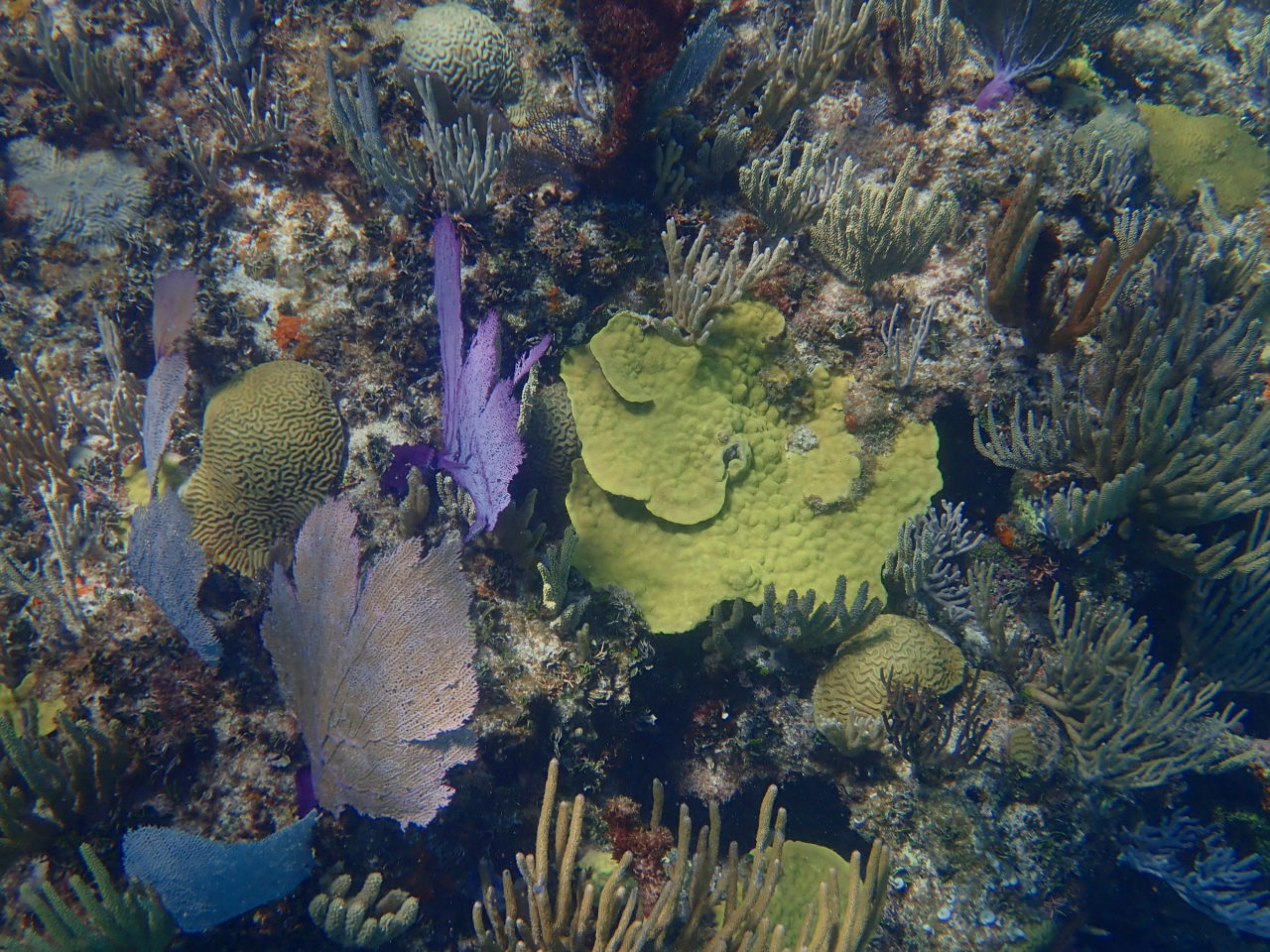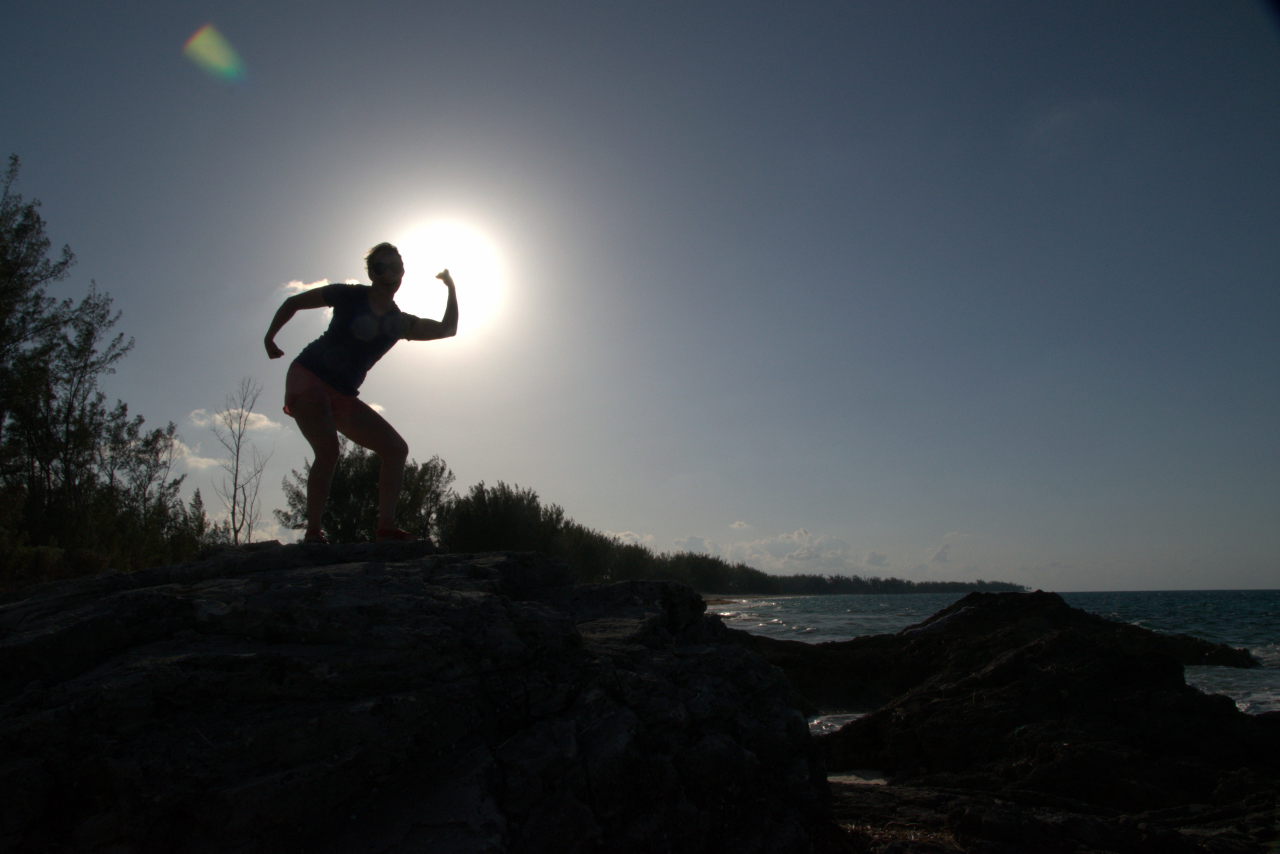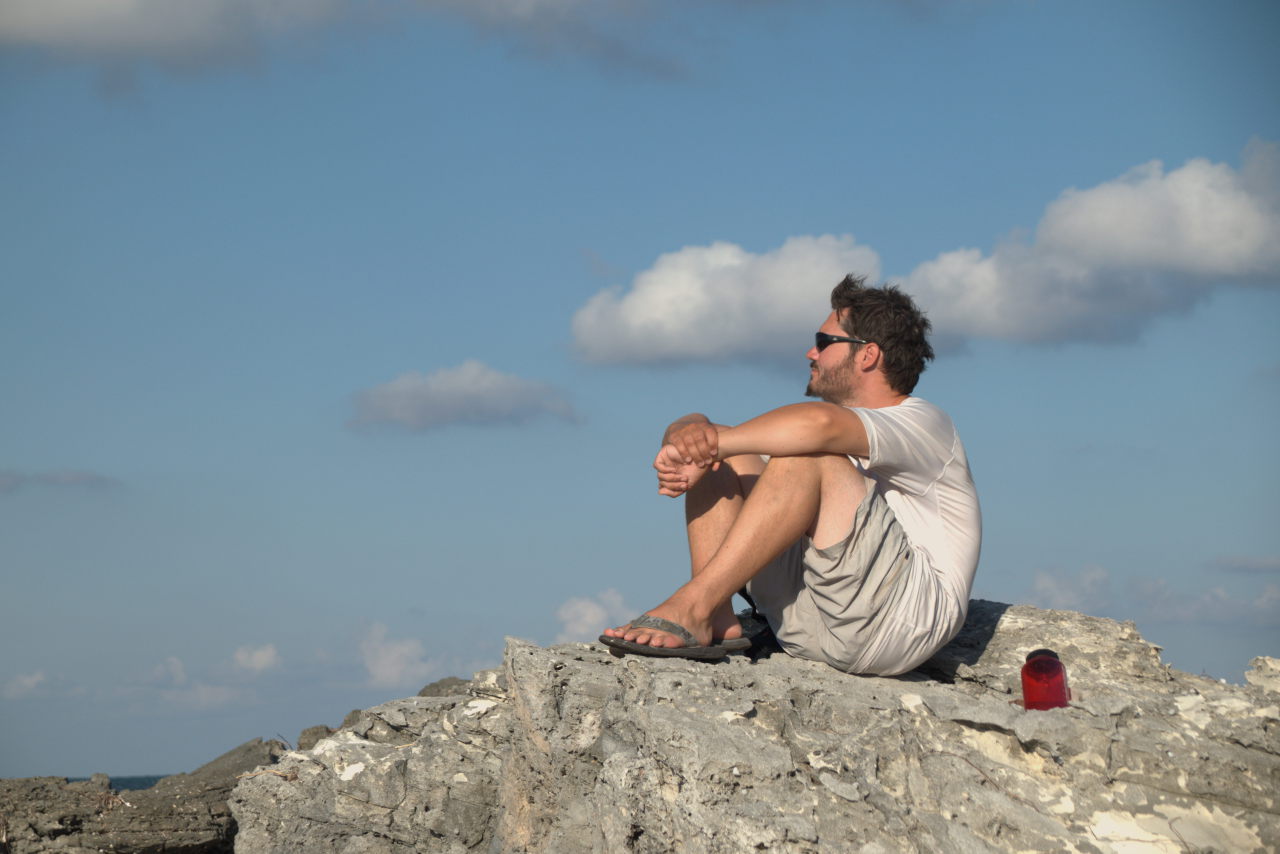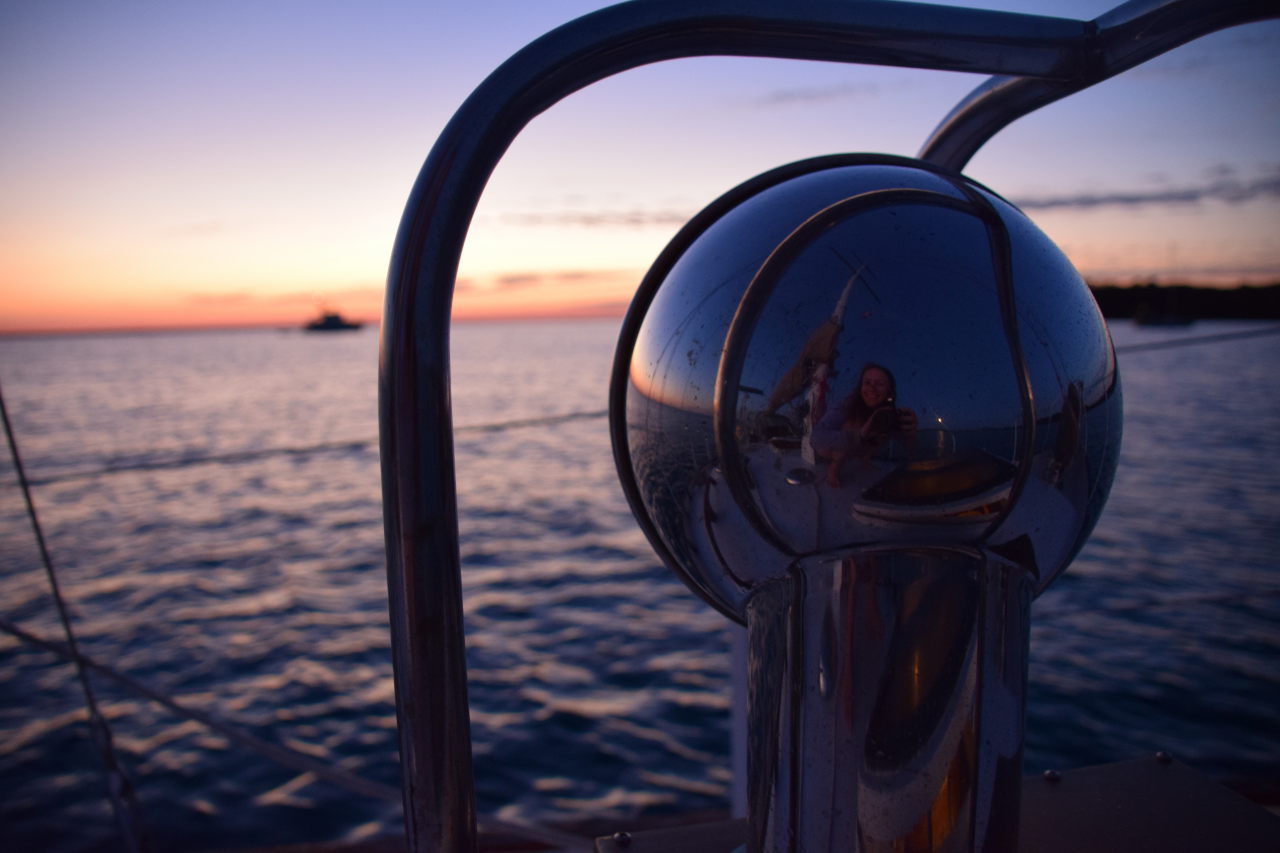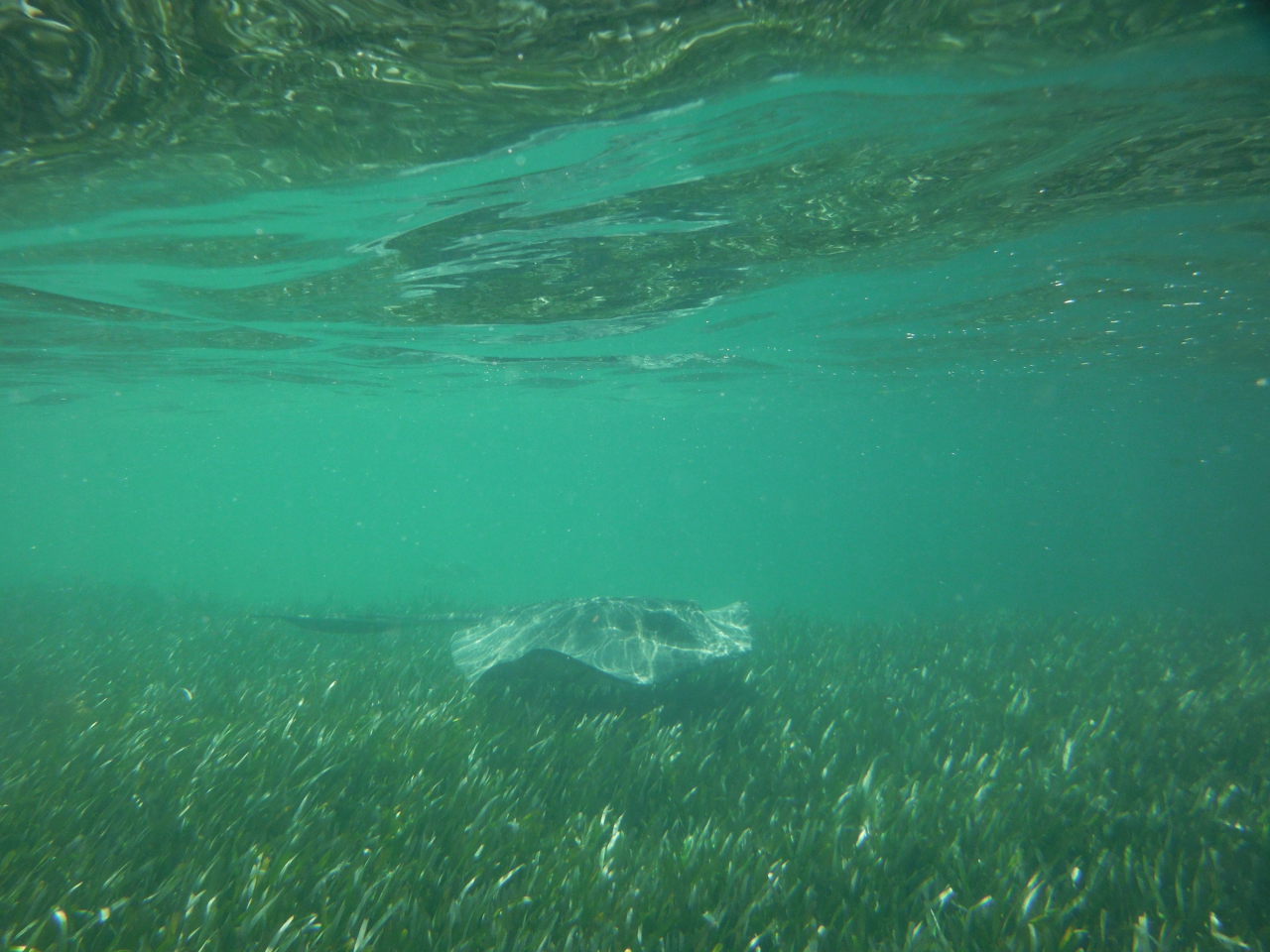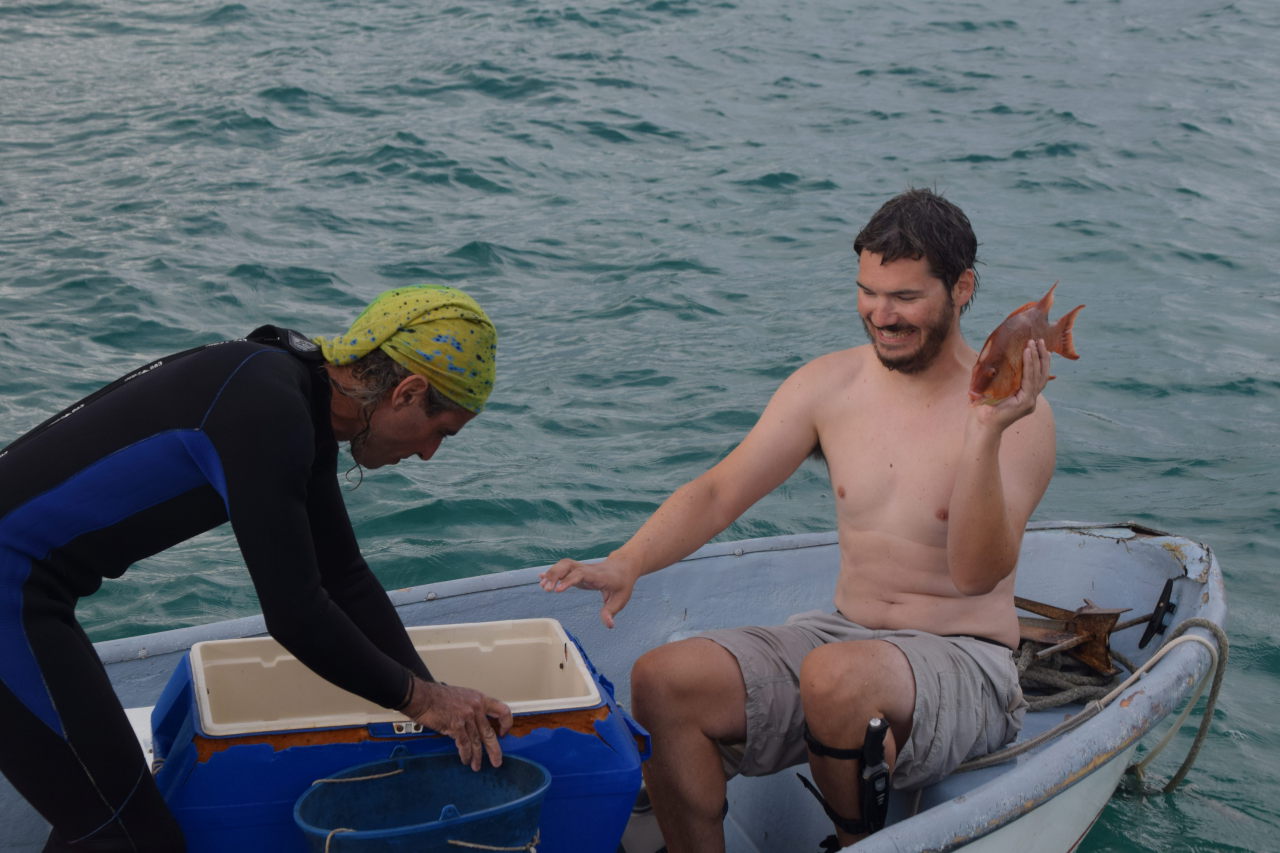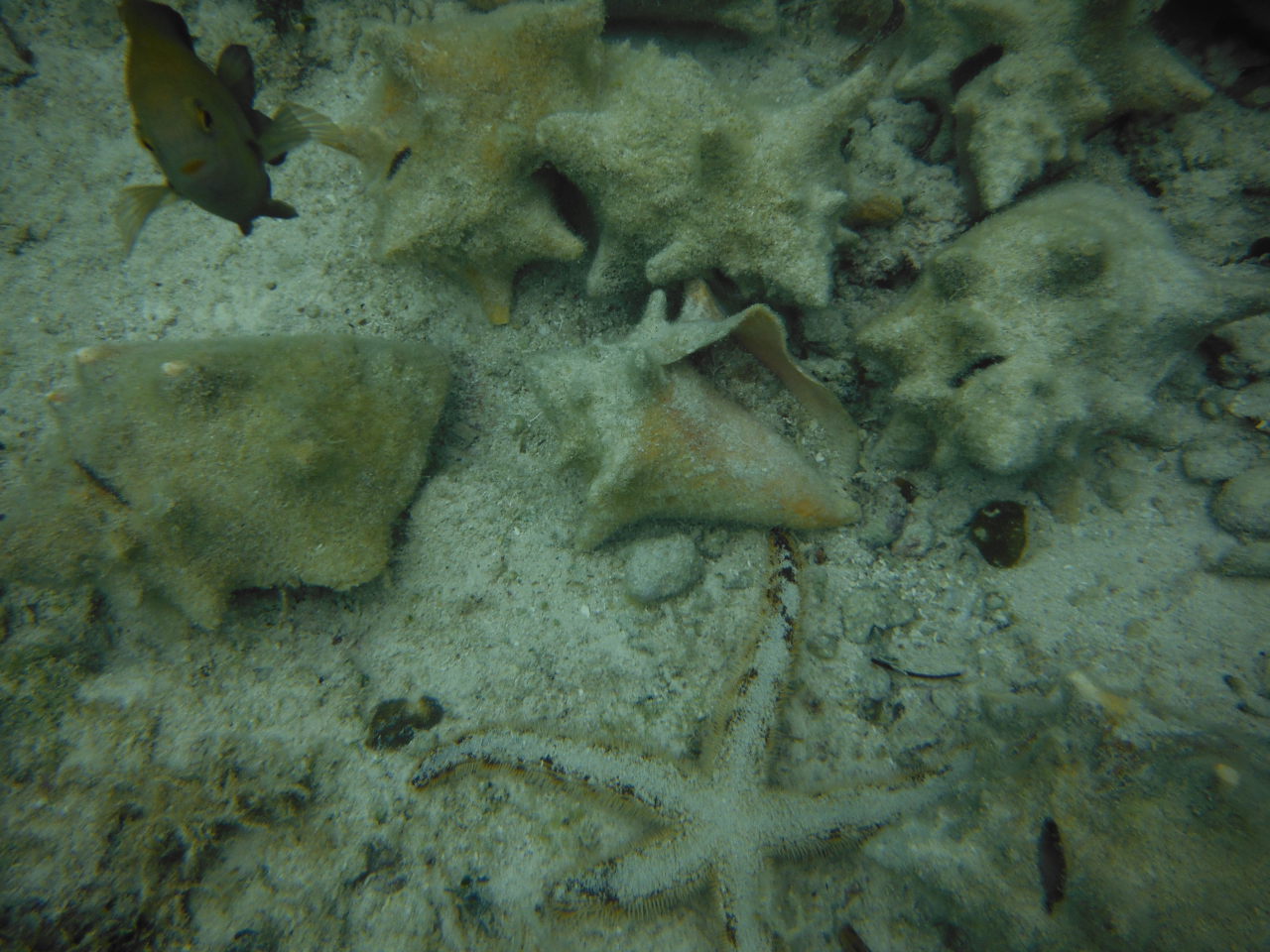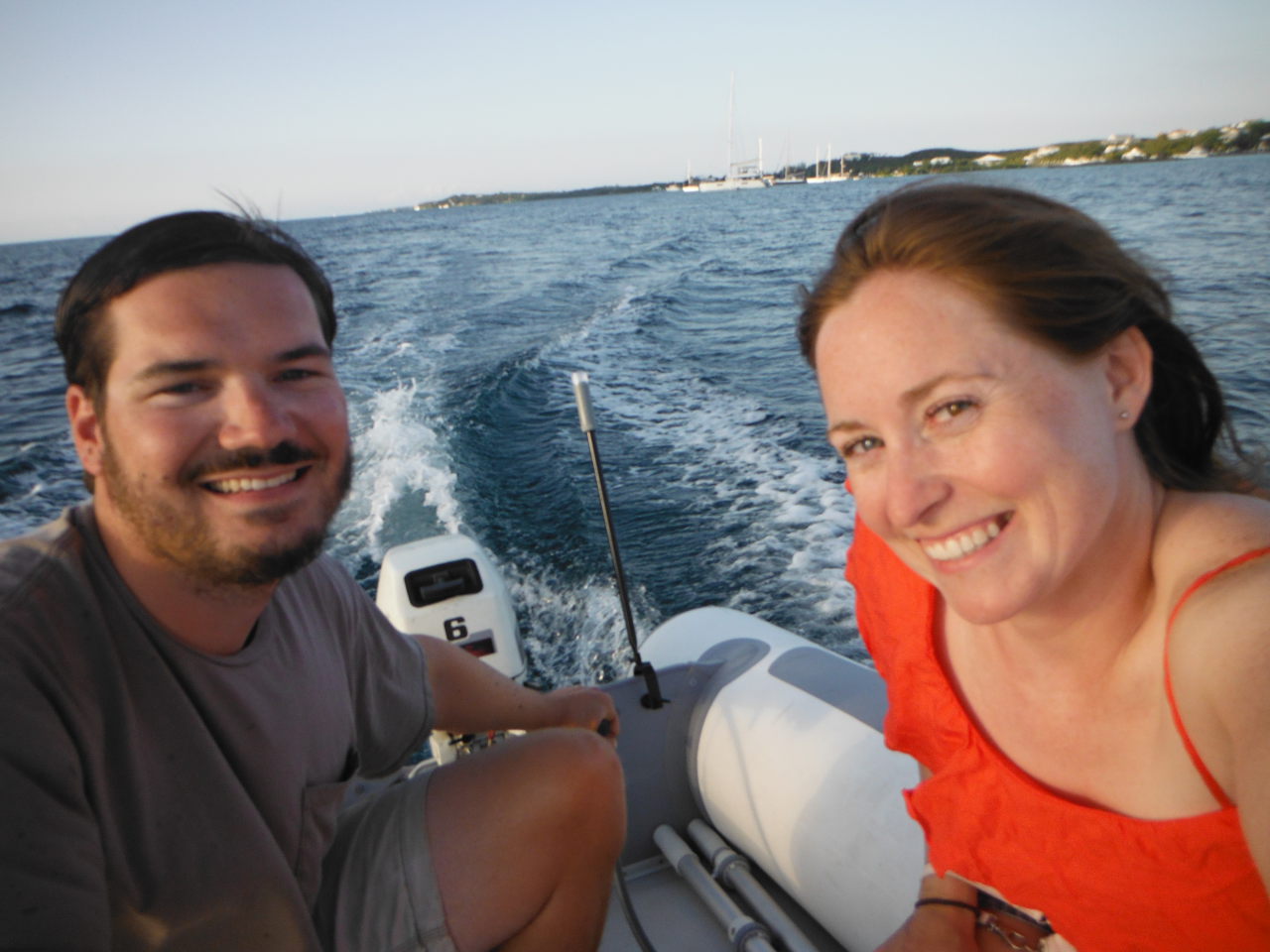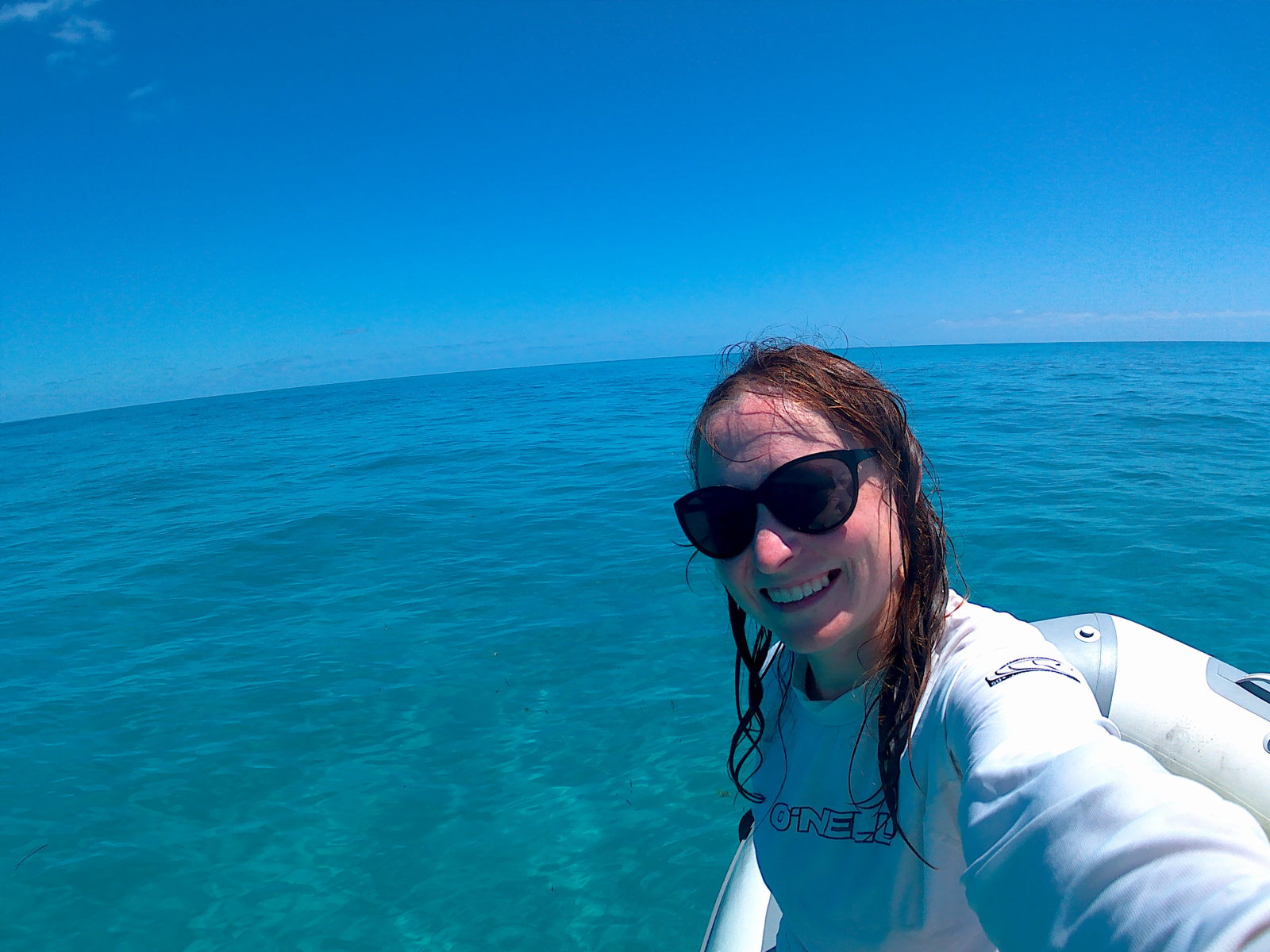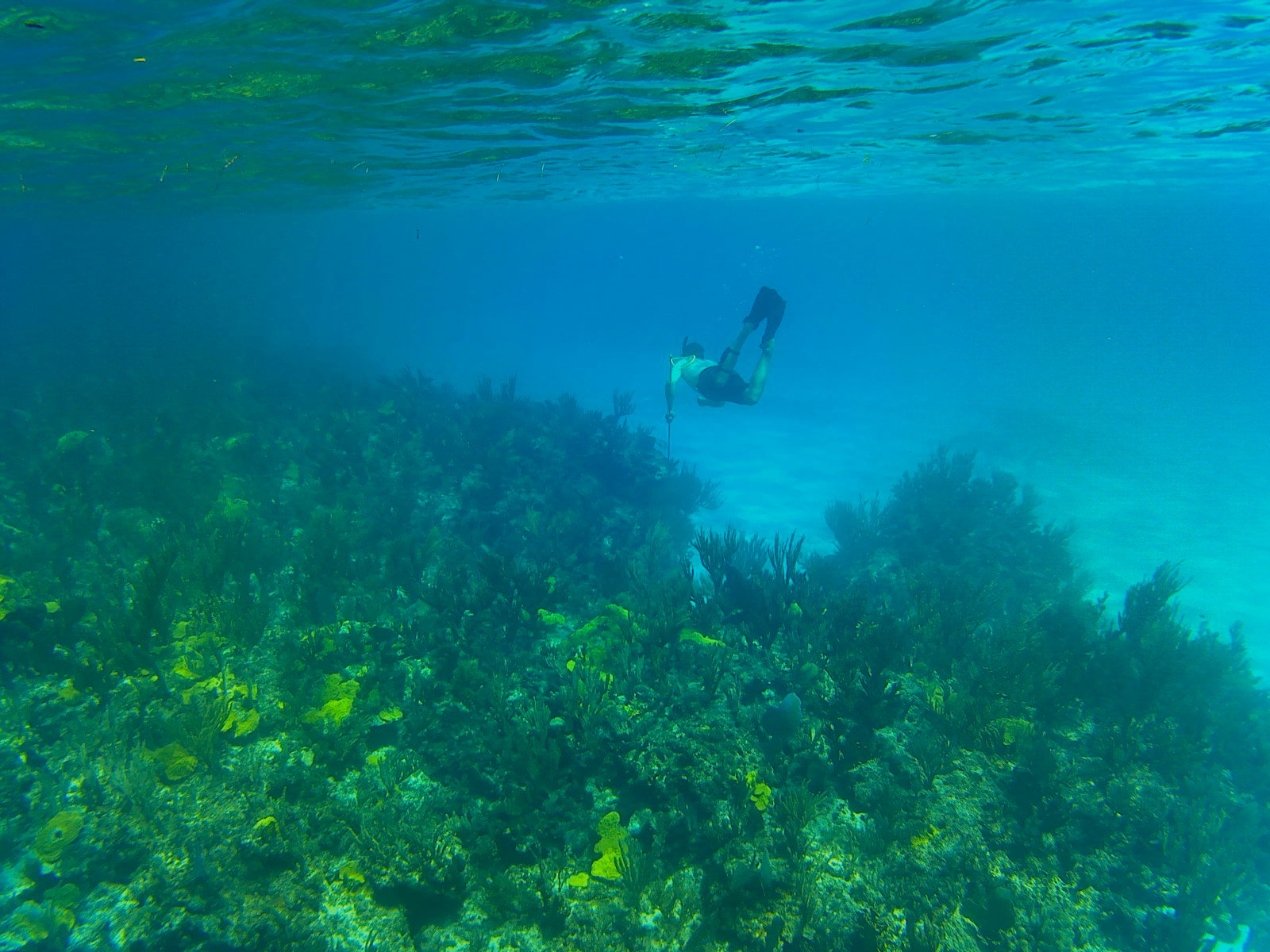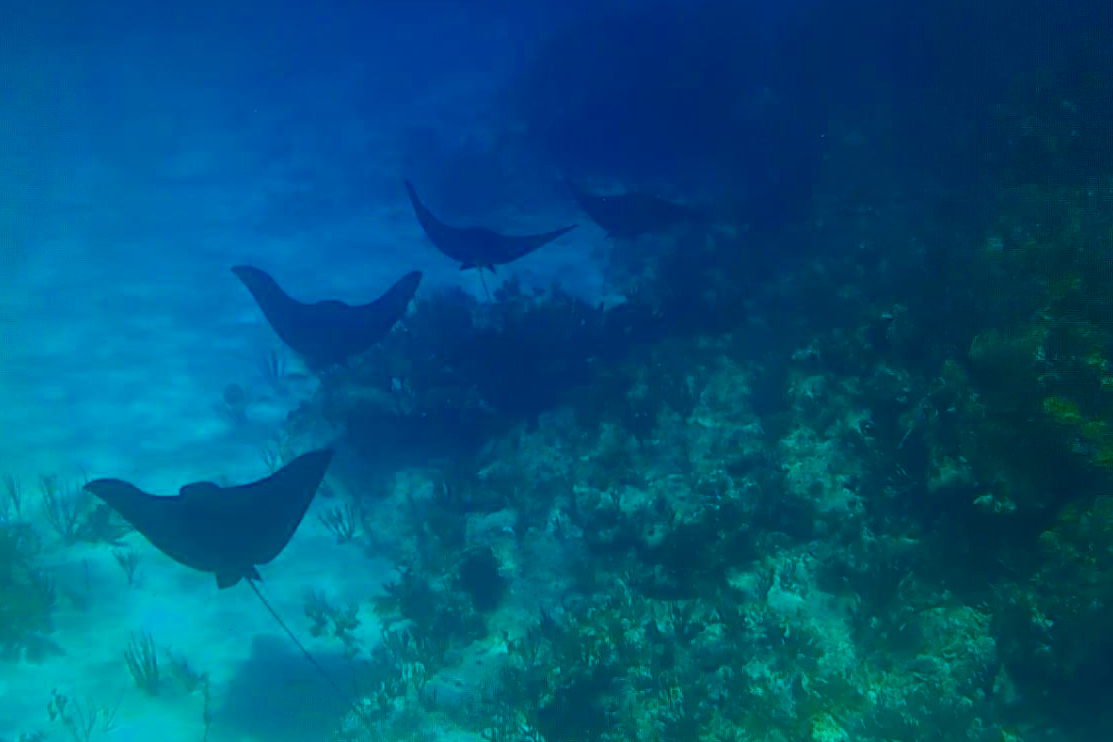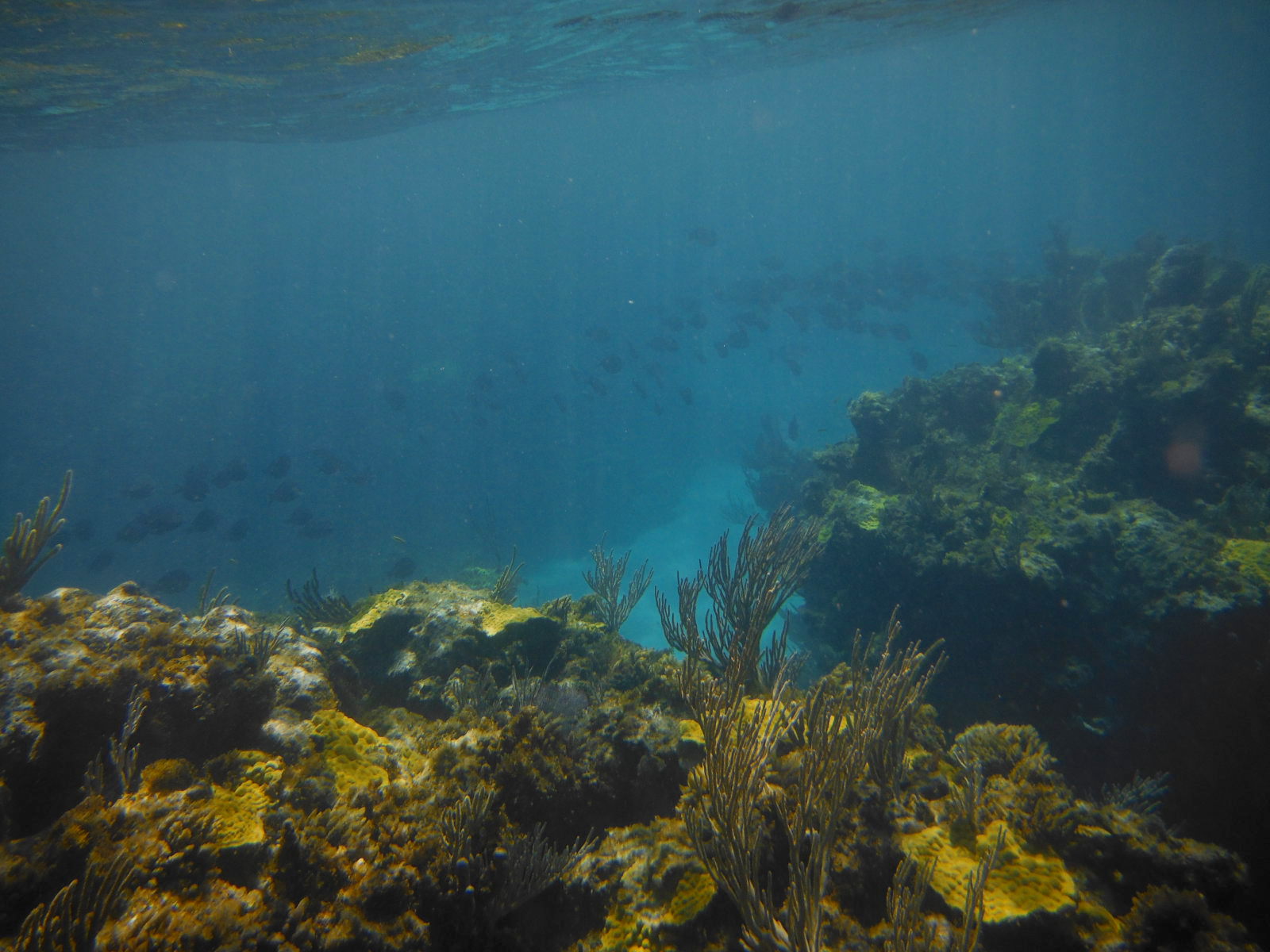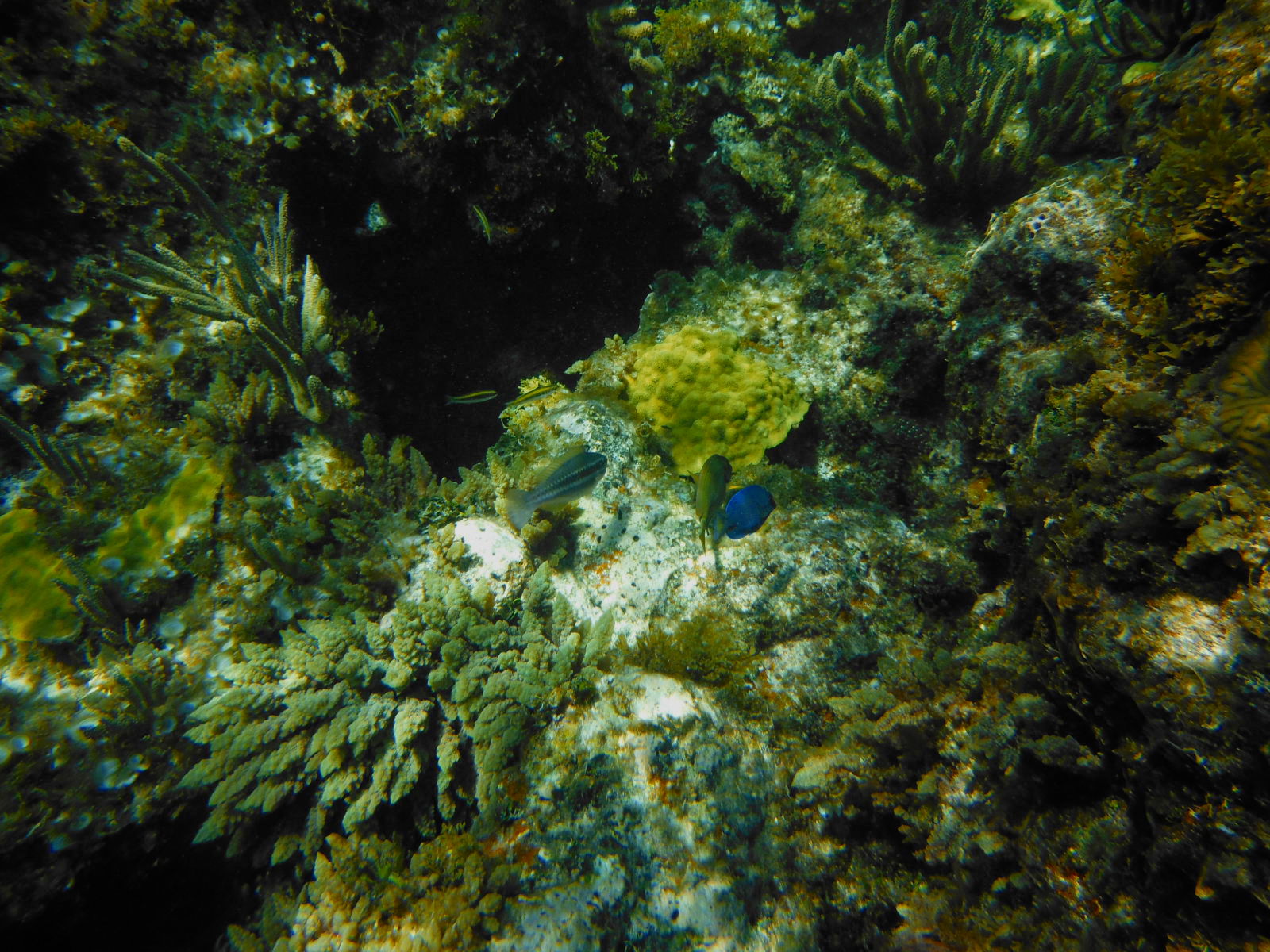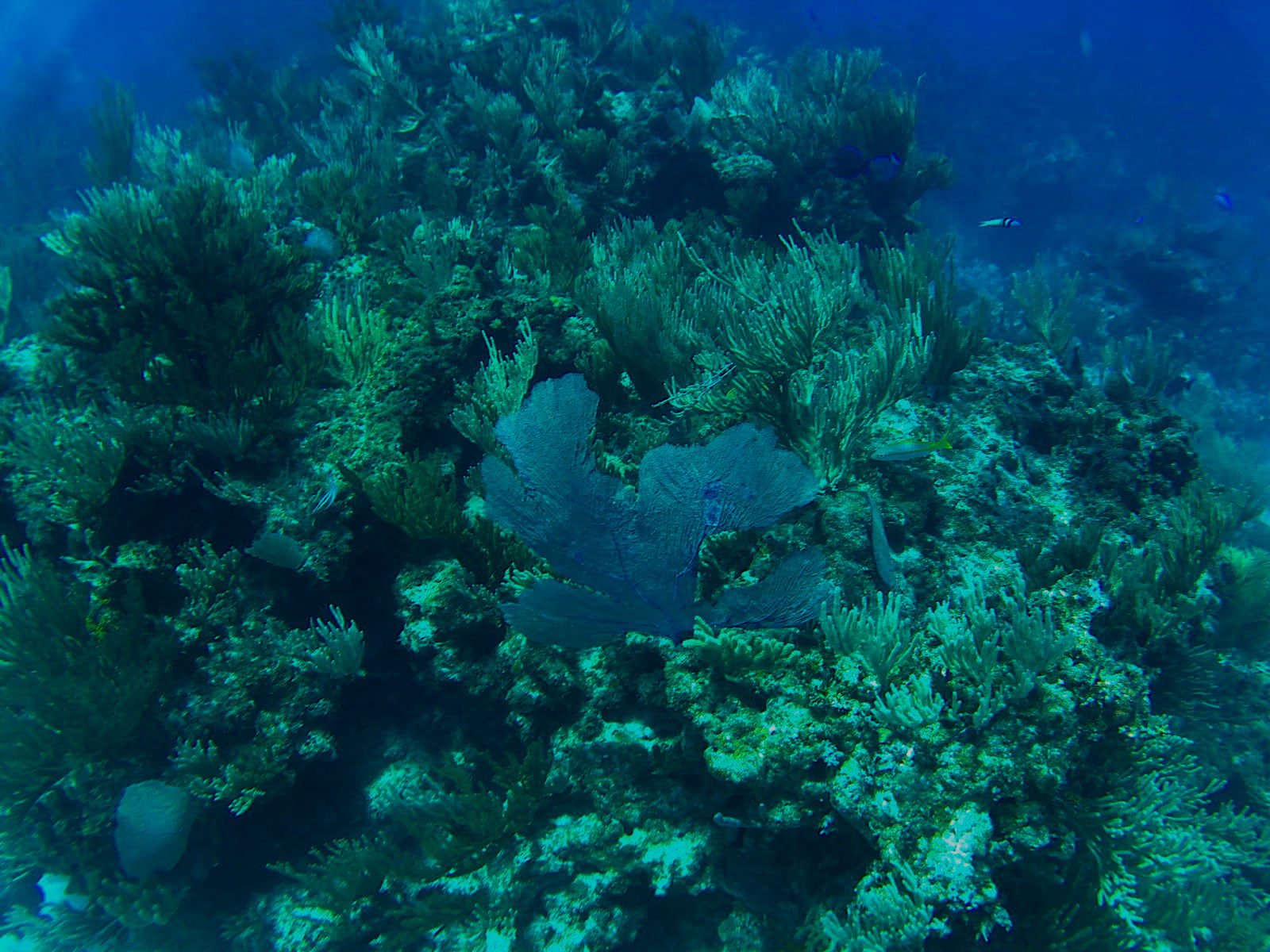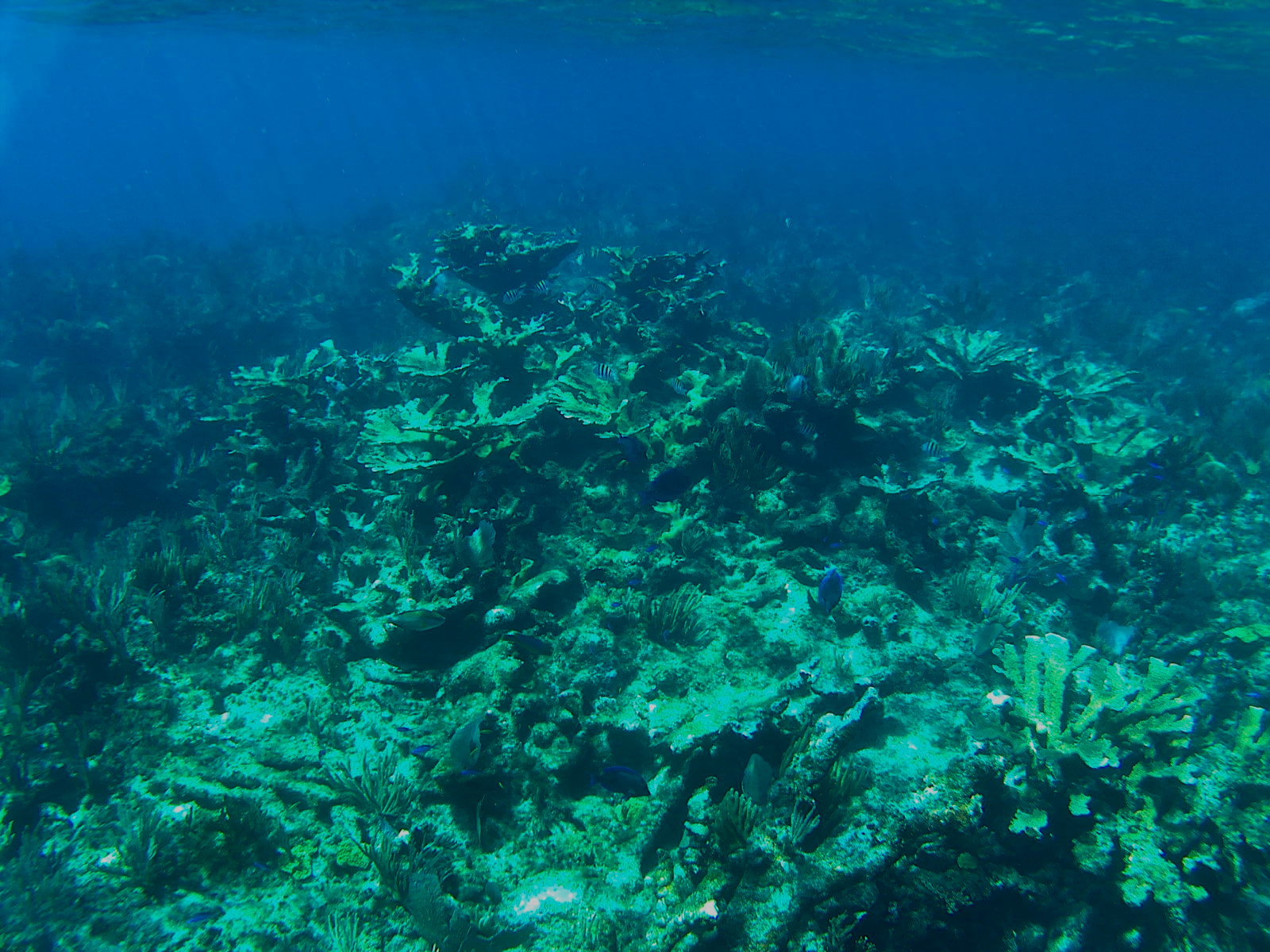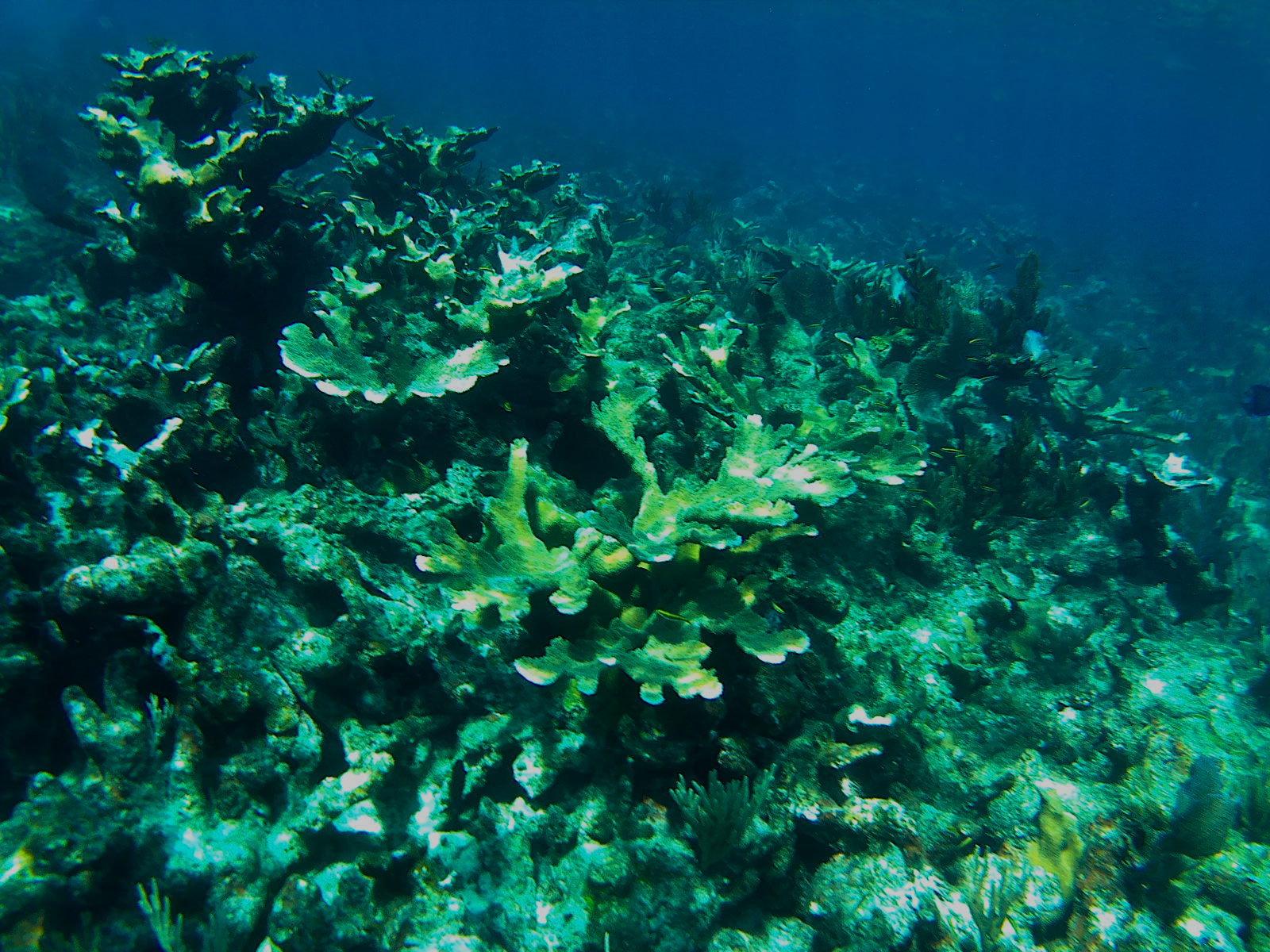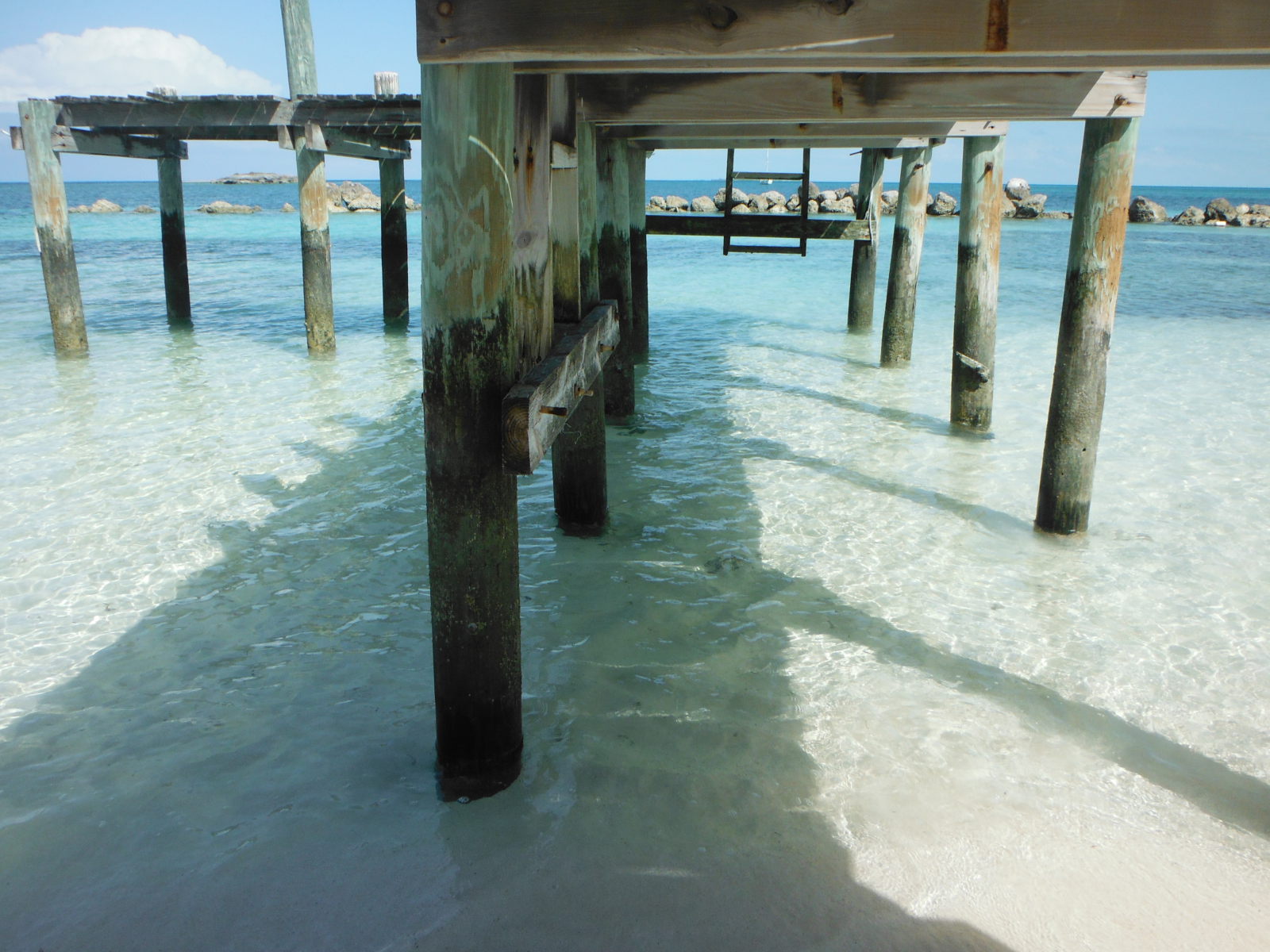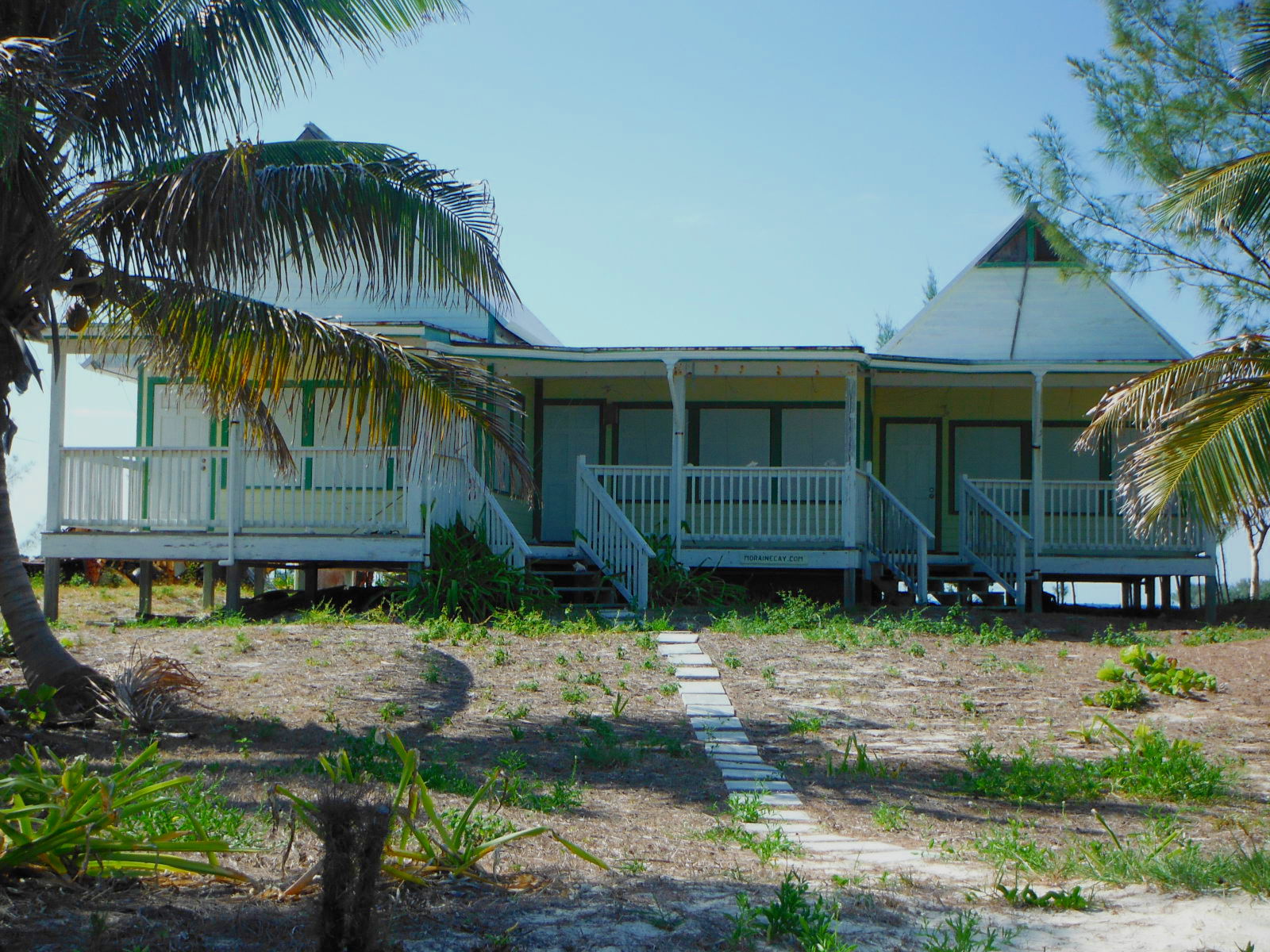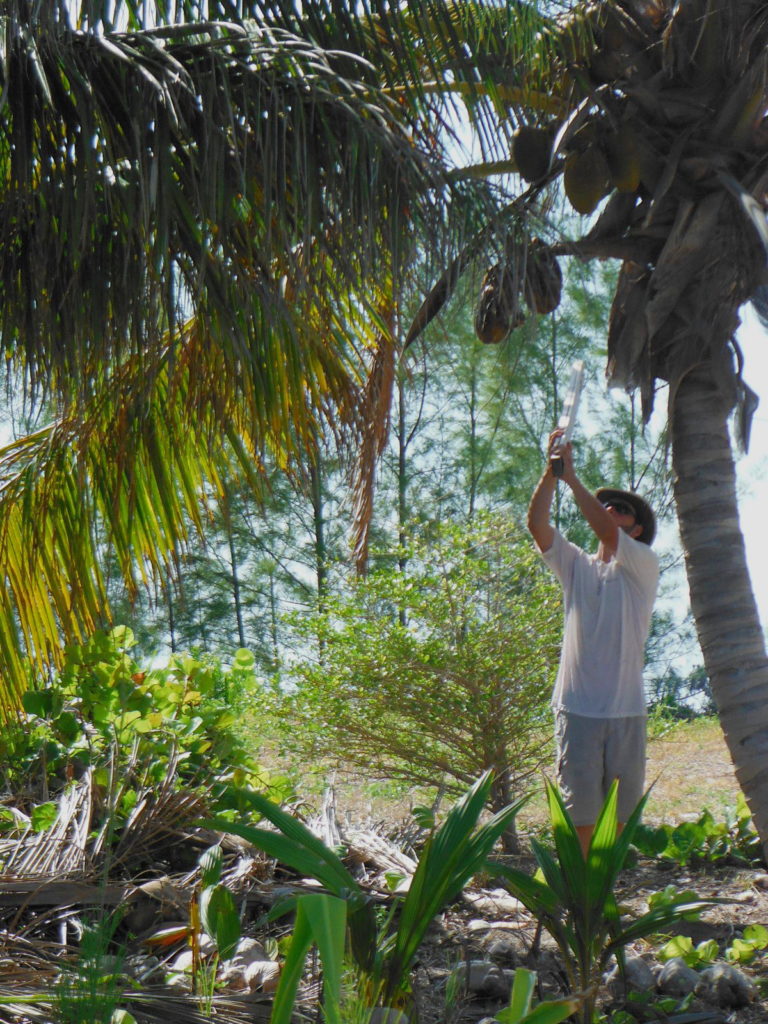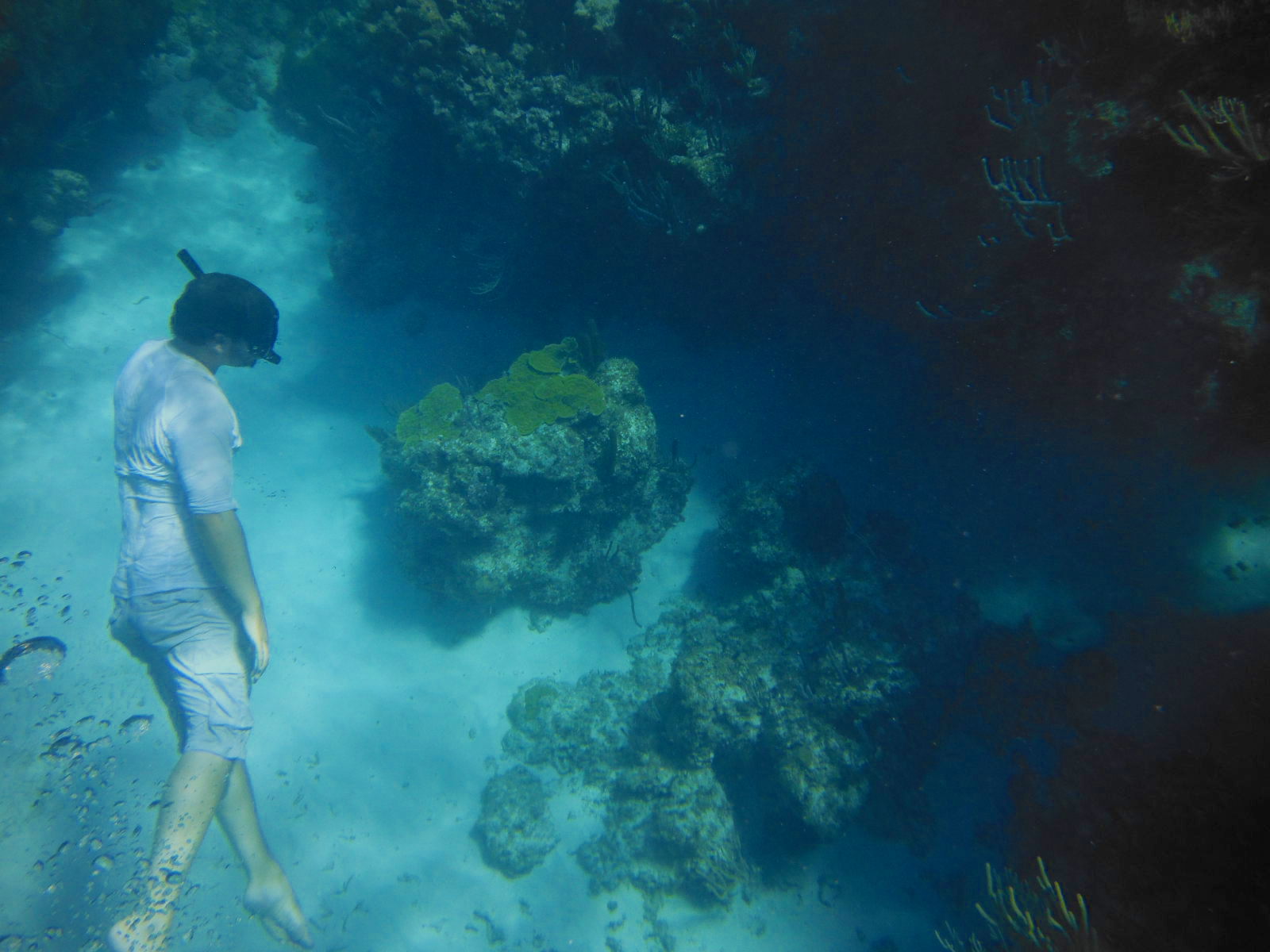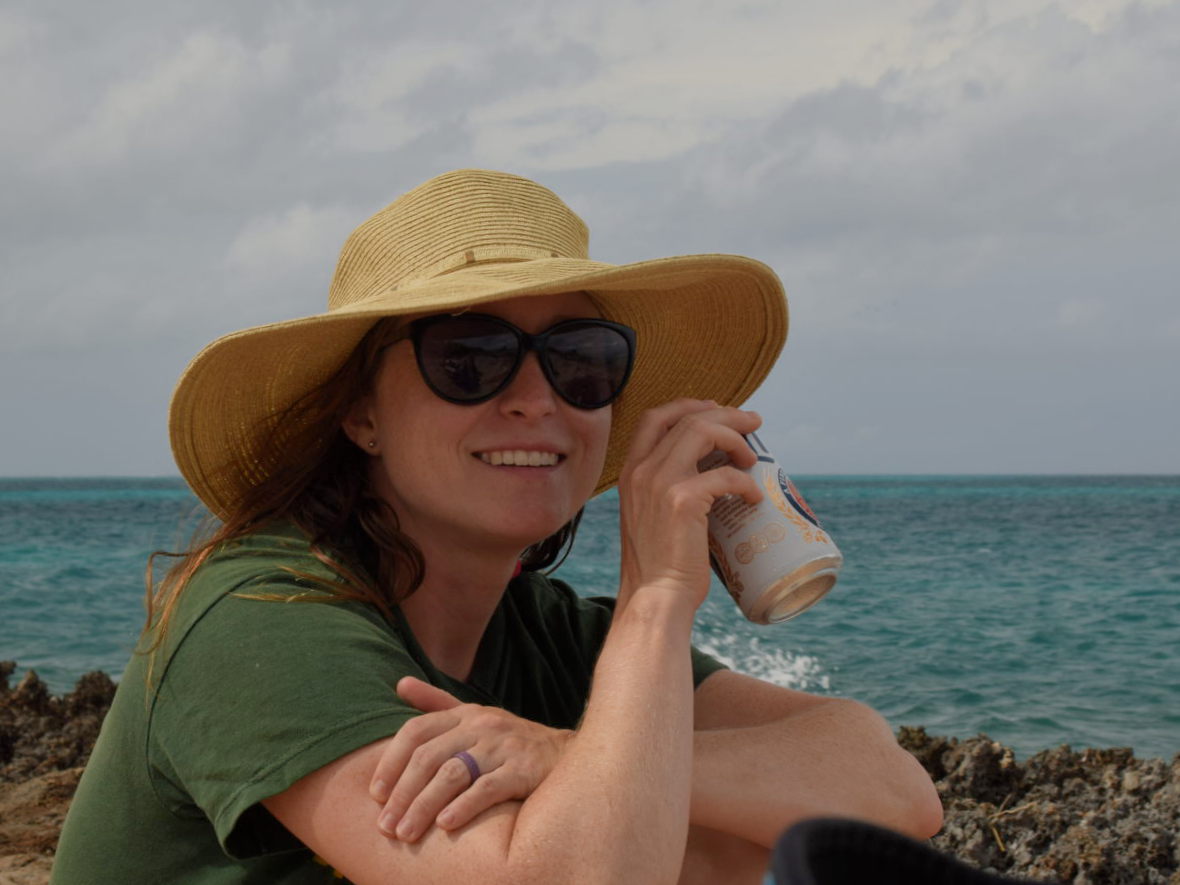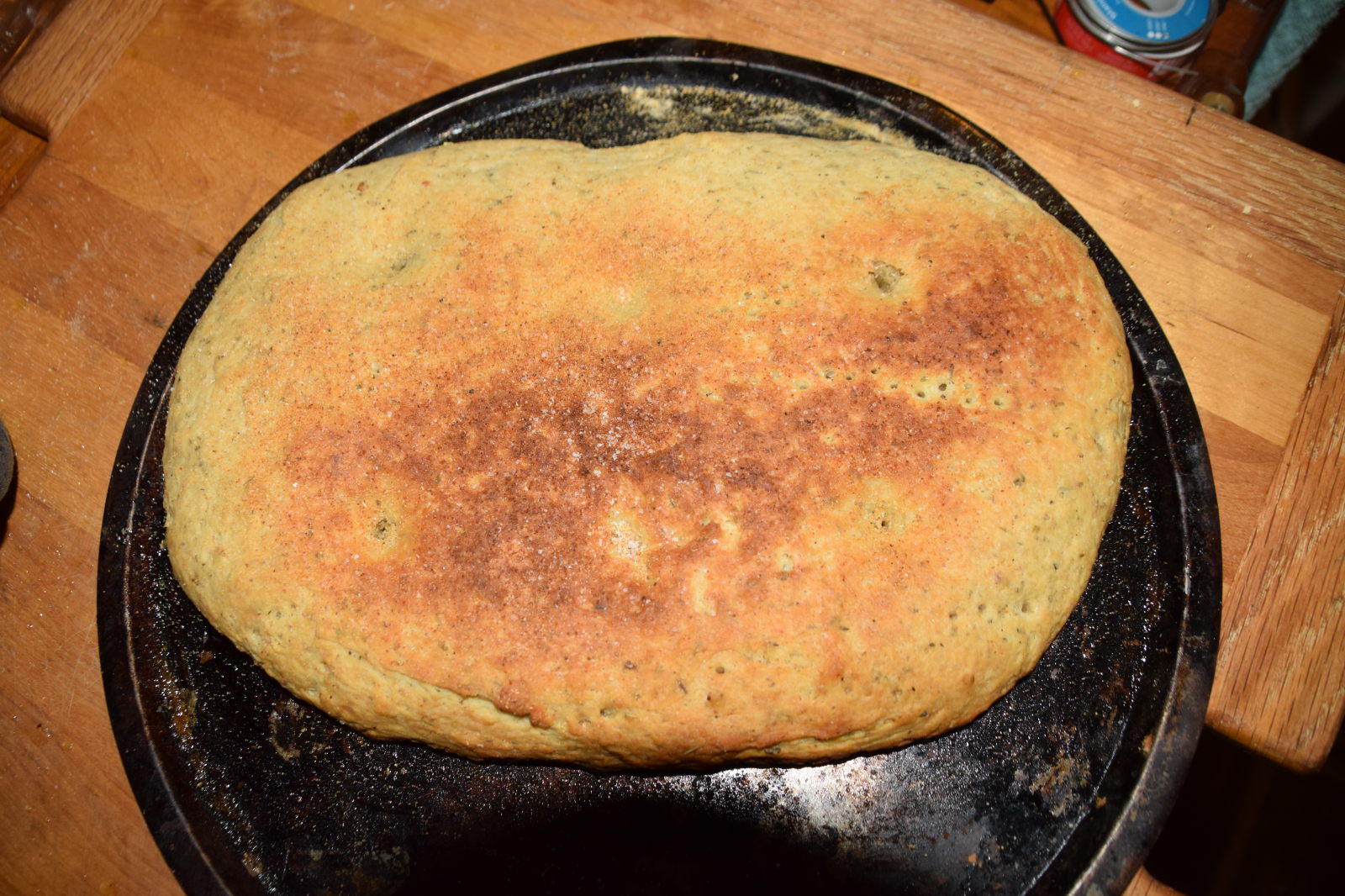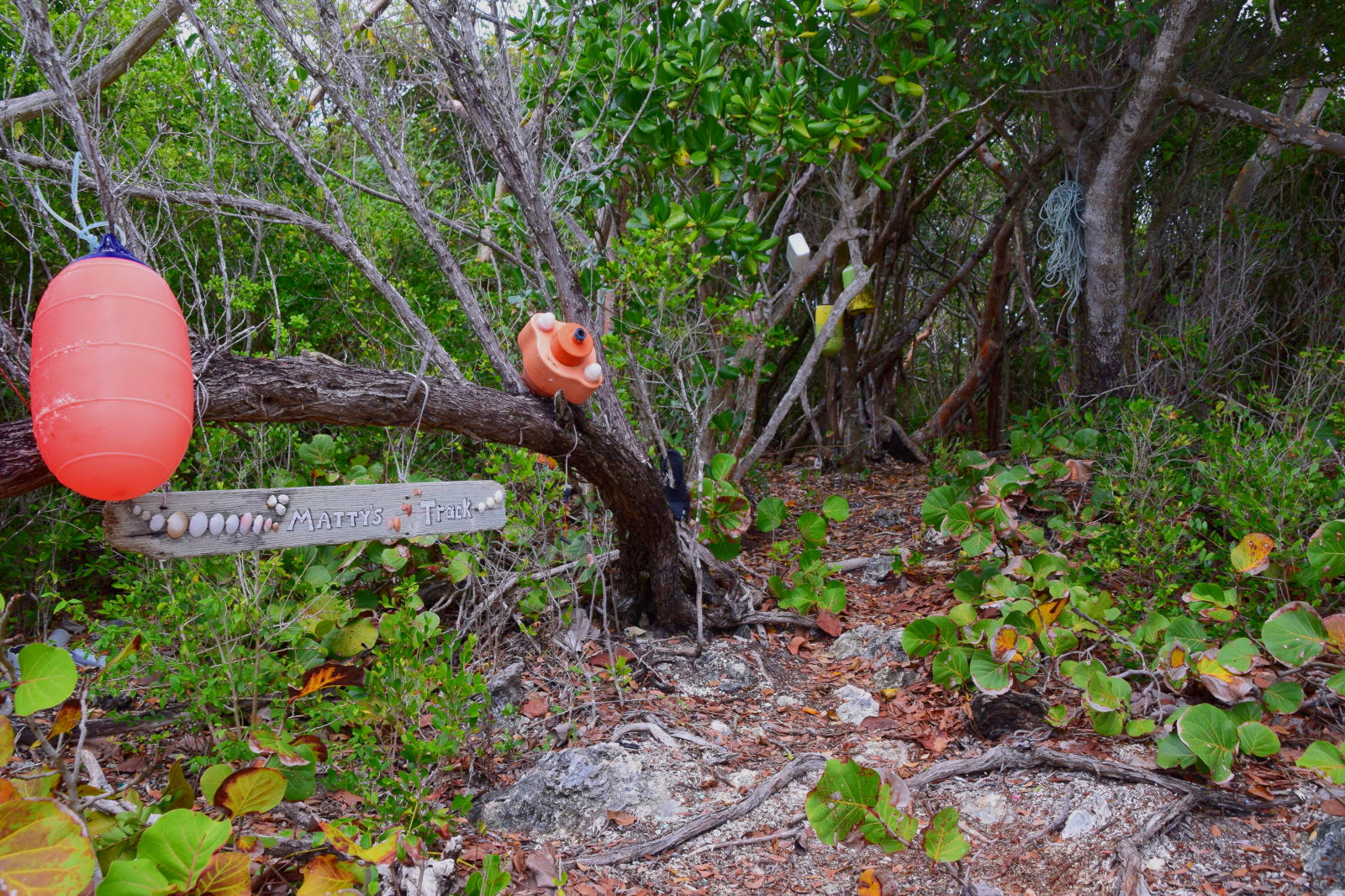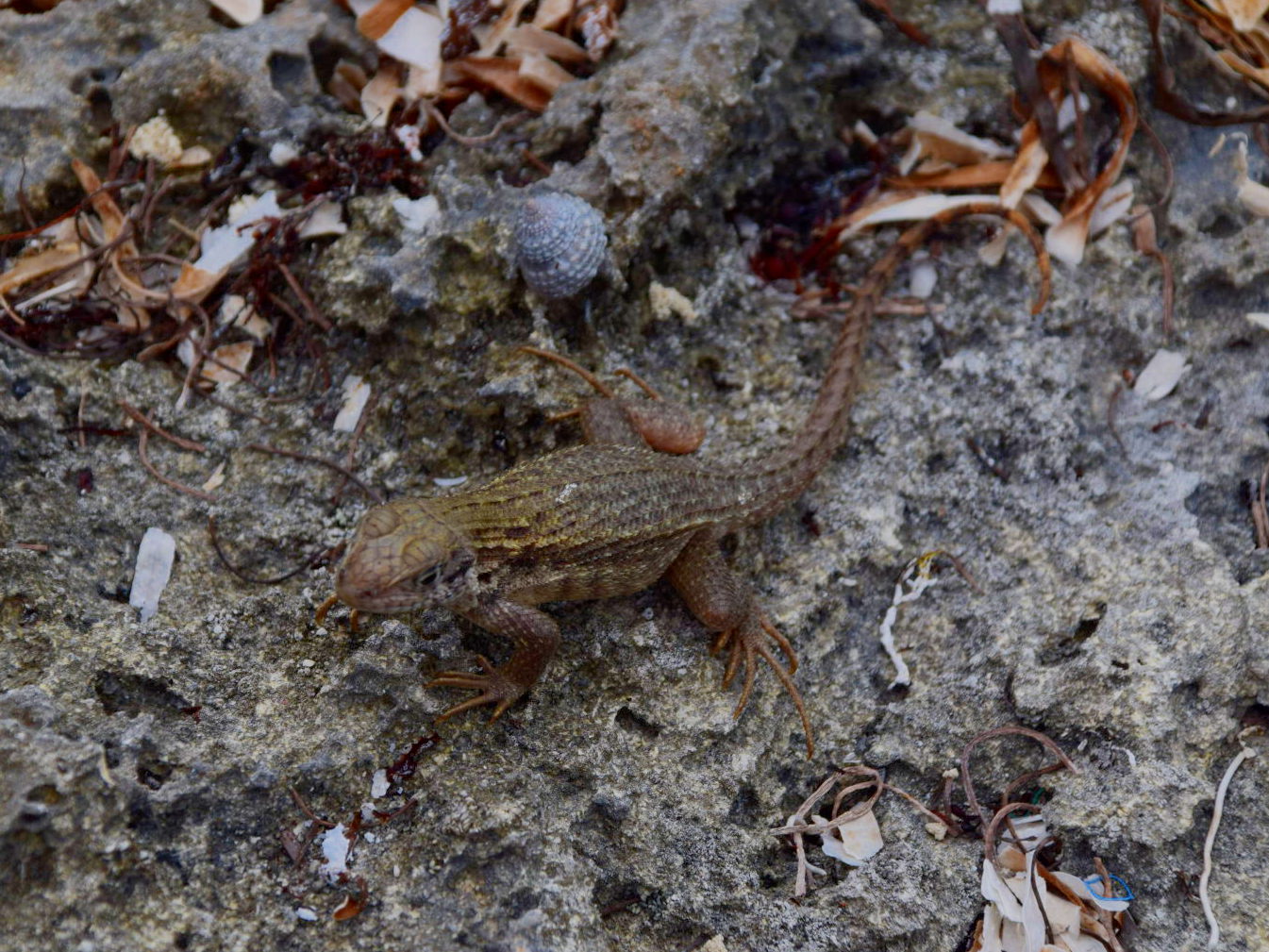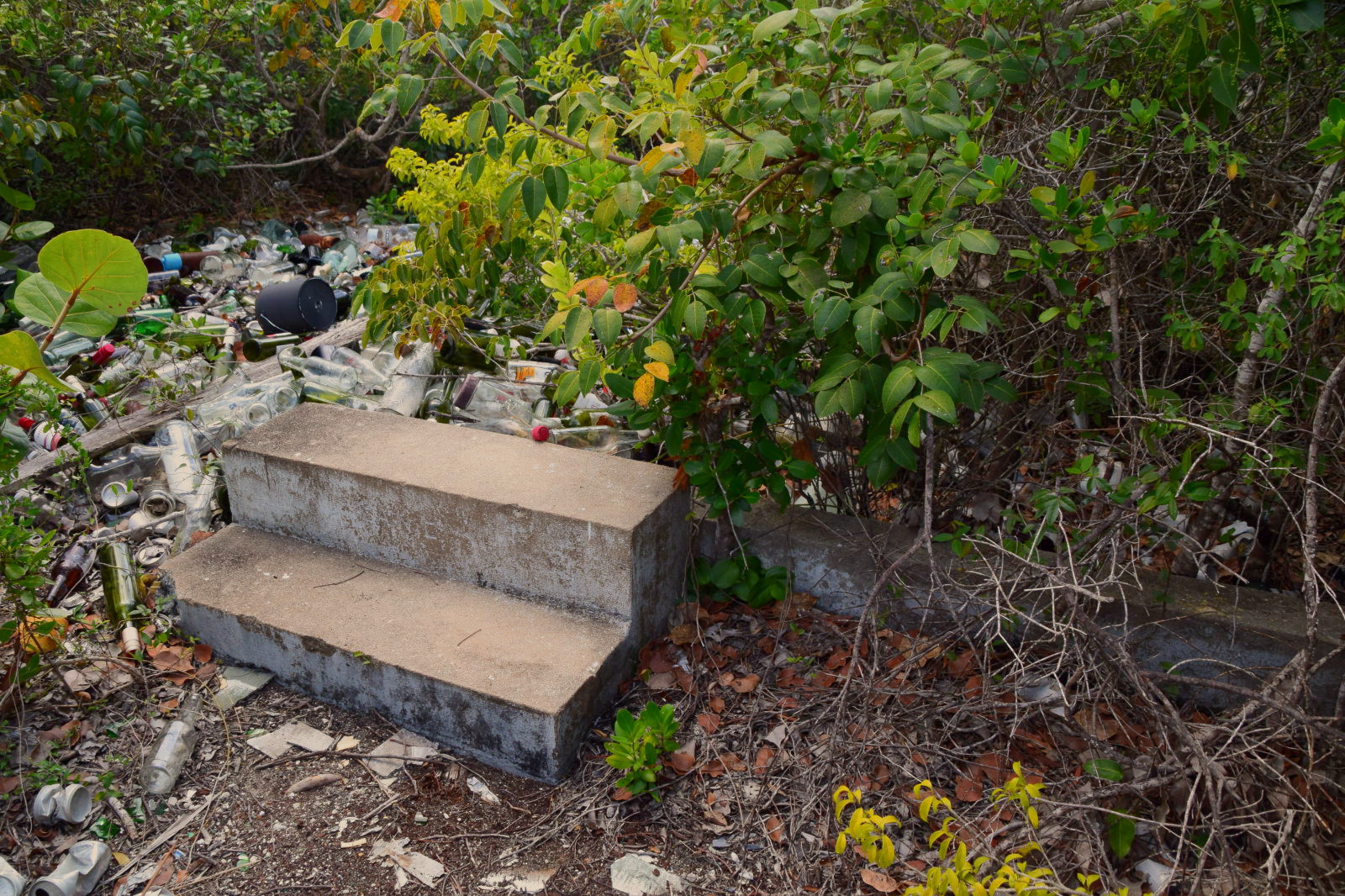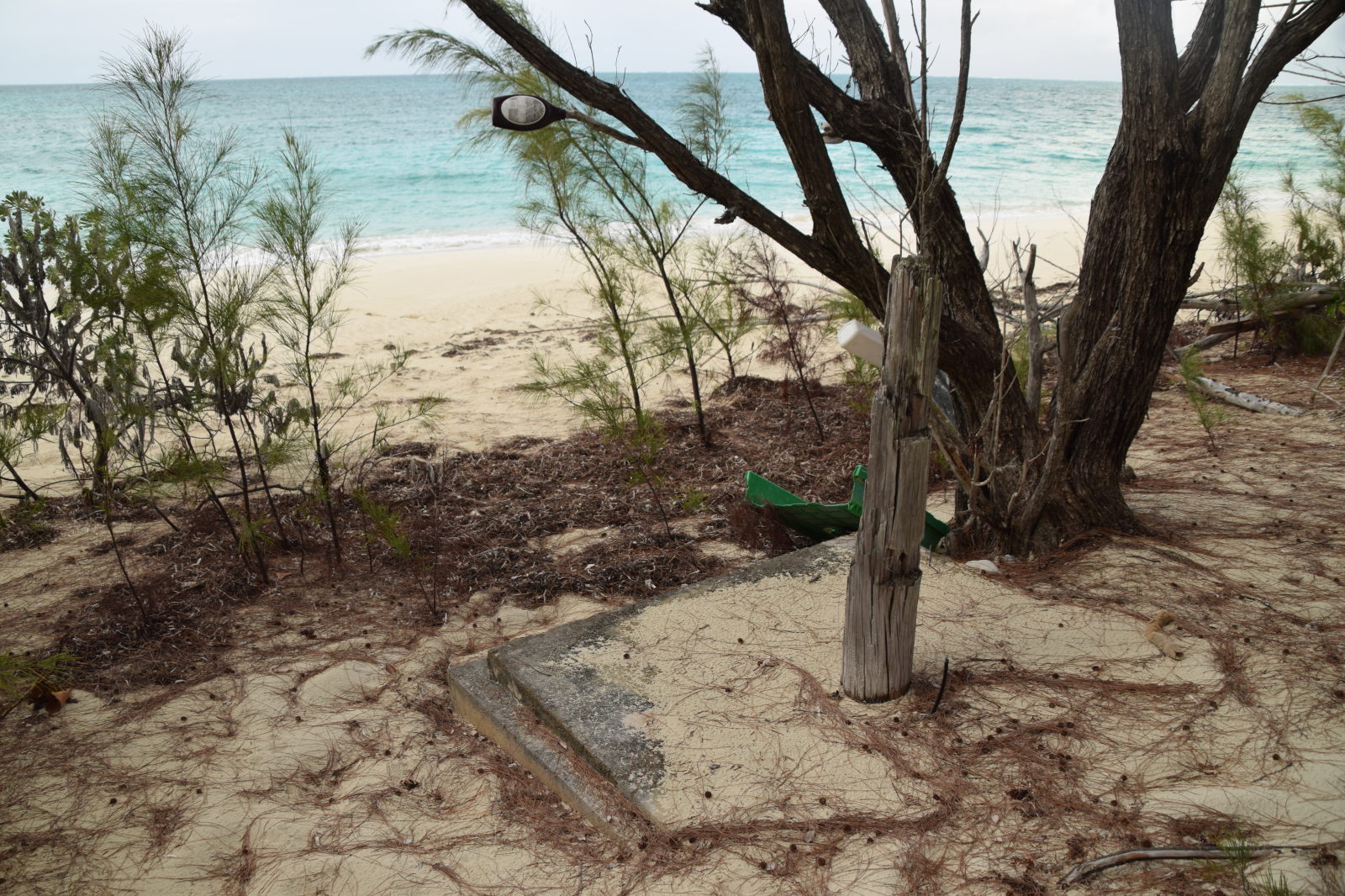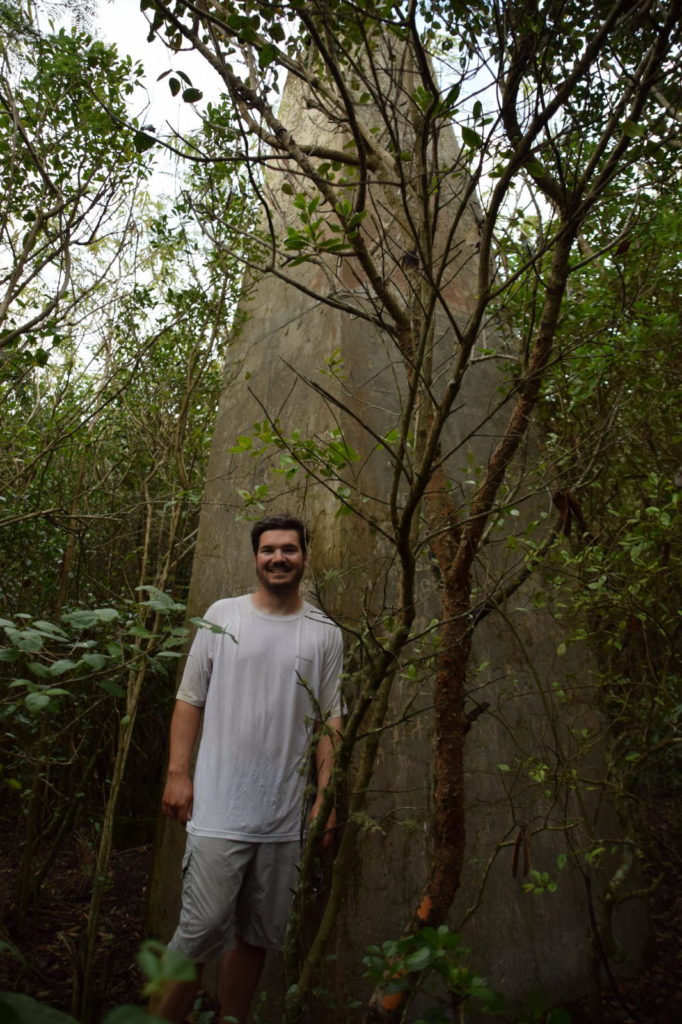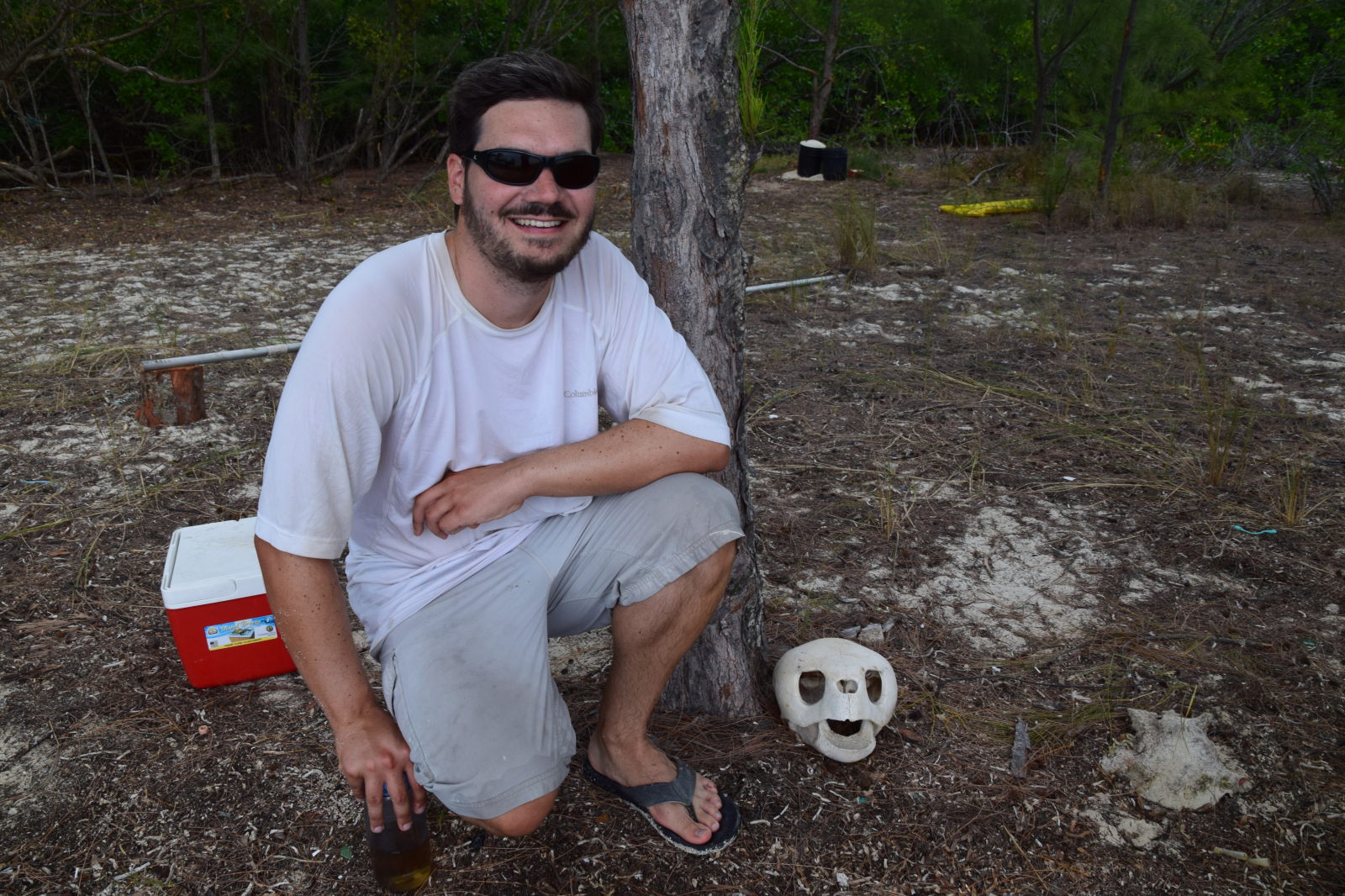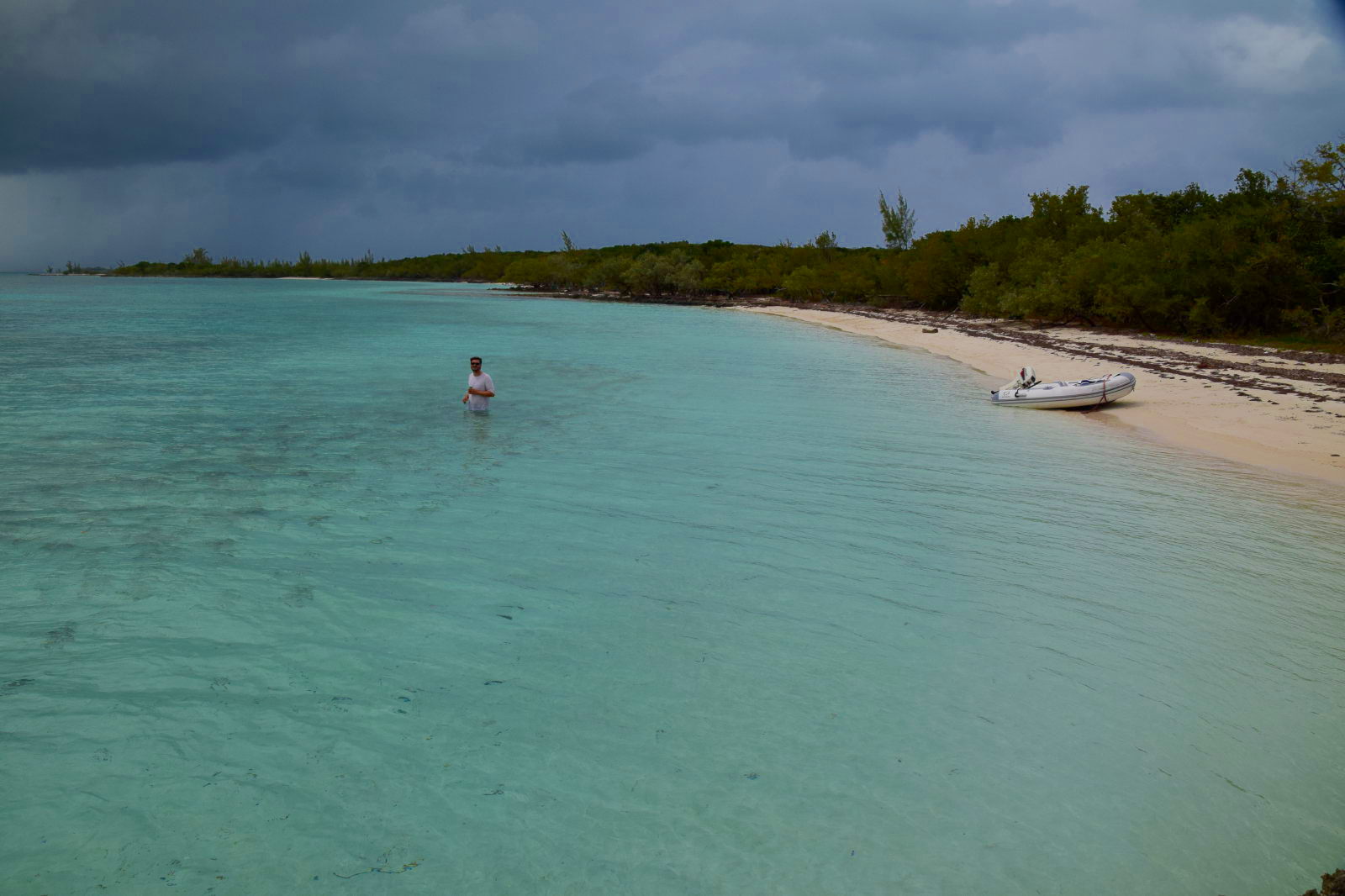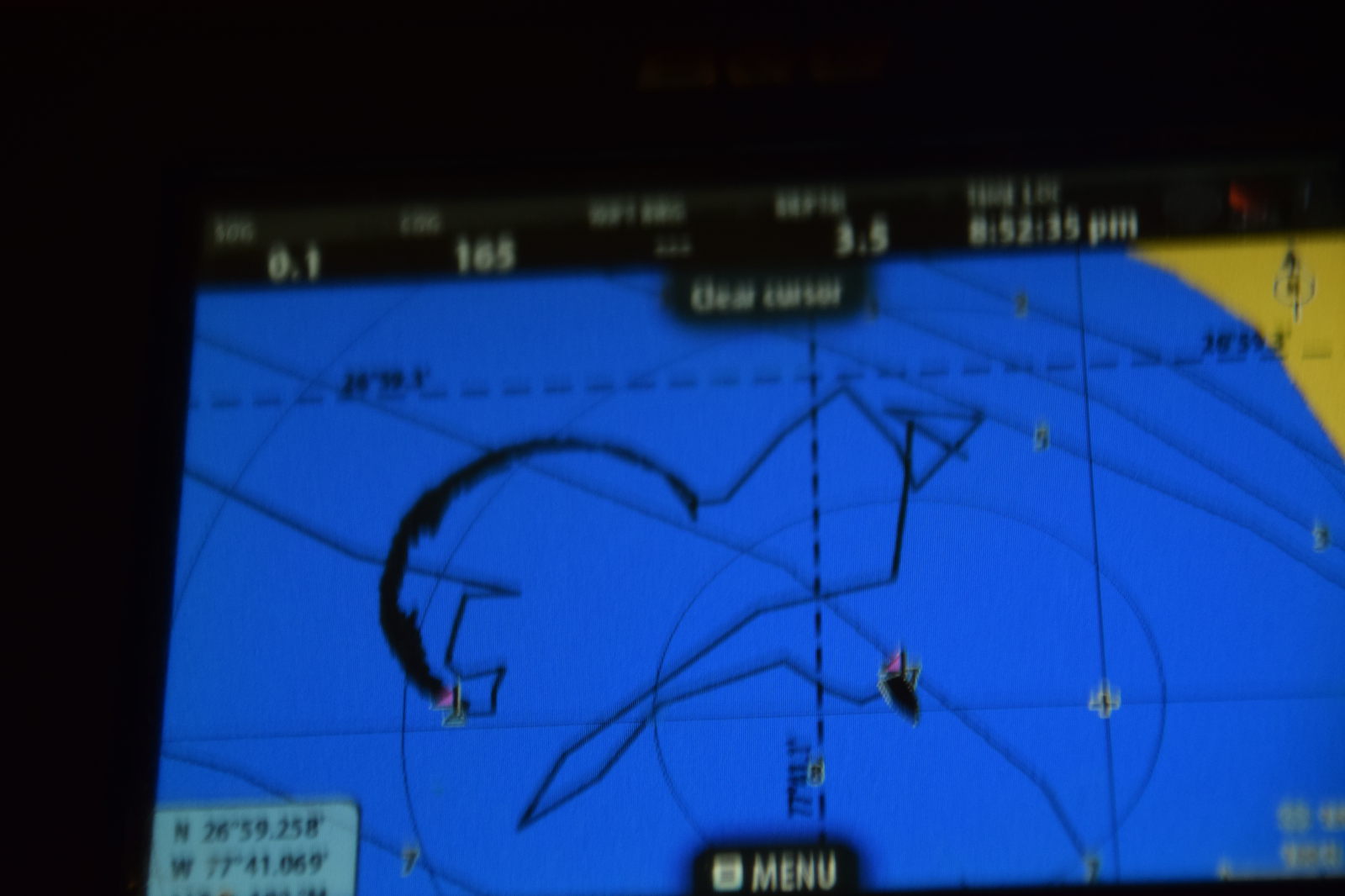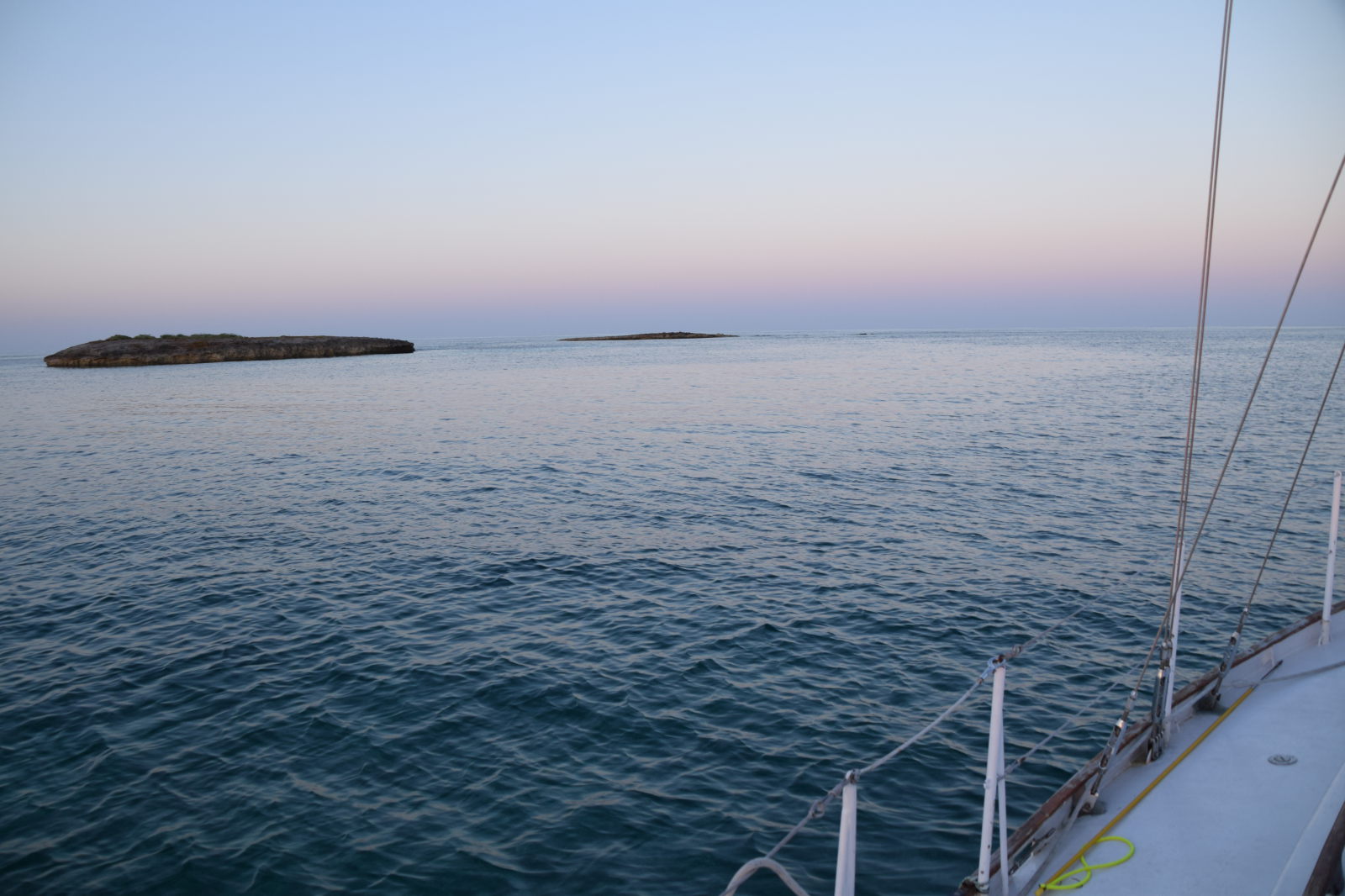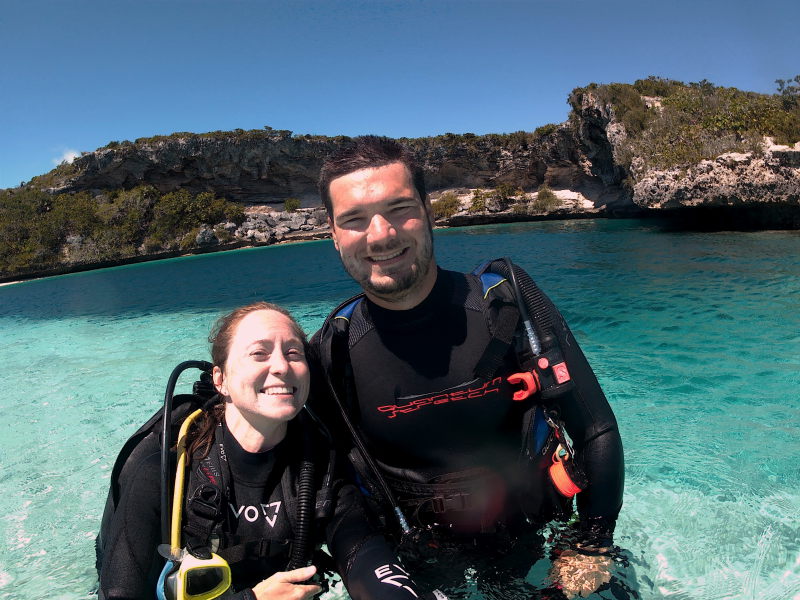
These events took place in March 2019.
[Google_Maps_WD id=30 map=15]
We were off to George Town on Great Exuma. We weren’t sure if we were going to love or hate George Town. It’s a famous cruiser gathering spot – with up to 300 boats during regatta time. We purposely planned our arrival for after regatta and felt pretty good about that decision after our friends described the social drama as “70 year olds acting like they are still in high school.” But other friends told us that they never got bored when they spent several weeks there last year, so we were trying to keep an open mind.
It was a decent day for sailing, with some swell but at an angle that wasn’t too bothersome. We would have sailed nearly the whole way, except we’d put in a bad coordinate and already had the sail down by the time we realized we had at least another hour until the inlet. Having already tidied the lines and sail bags, we were too lazy to raise sails again.
Approaching all the boats in the harbour felt as overwhelming as walking up to New York City after a month alone in the woods. Immediately we saw boats we knew – Cohort, One-O-Six, Holiday, Sklibadnir, other boats from our marina in Florida, and boats we recognized from Instagram.
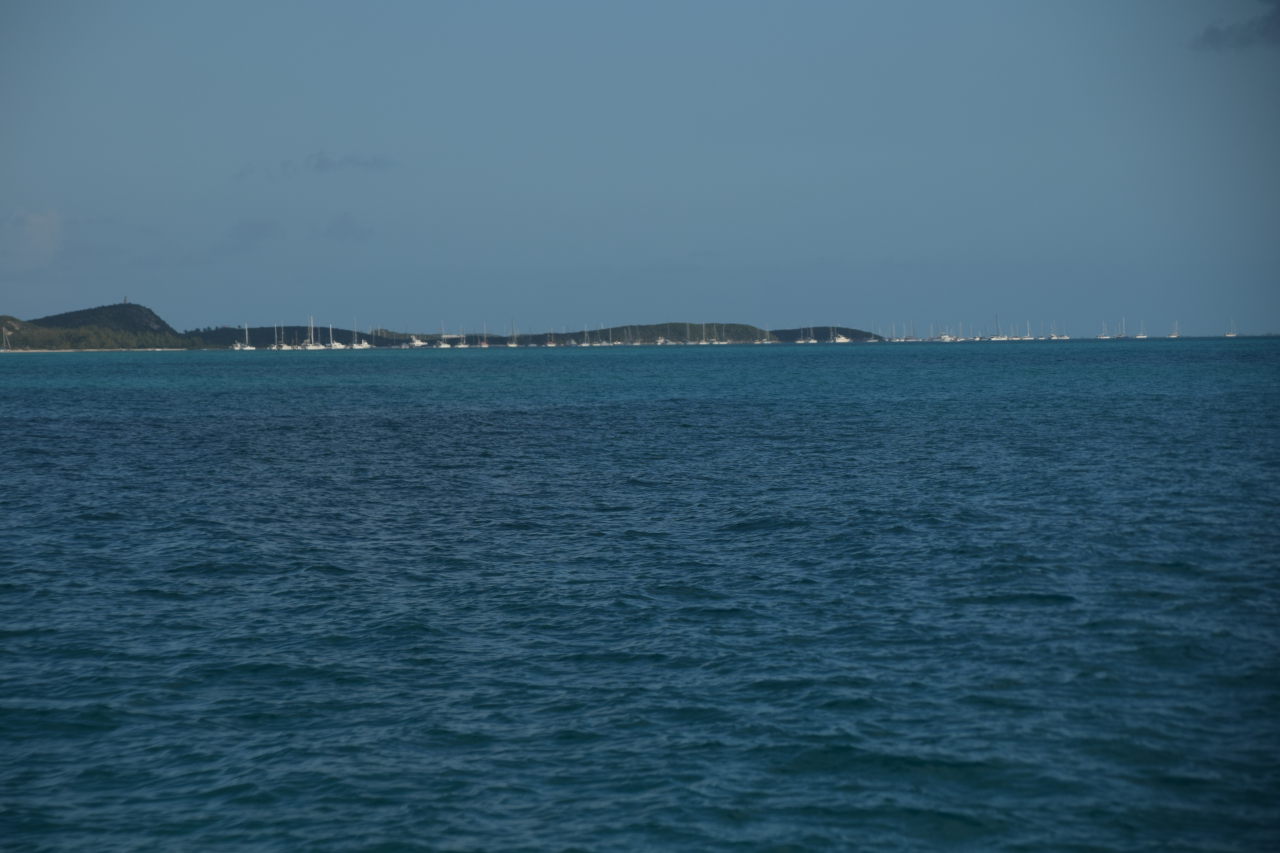
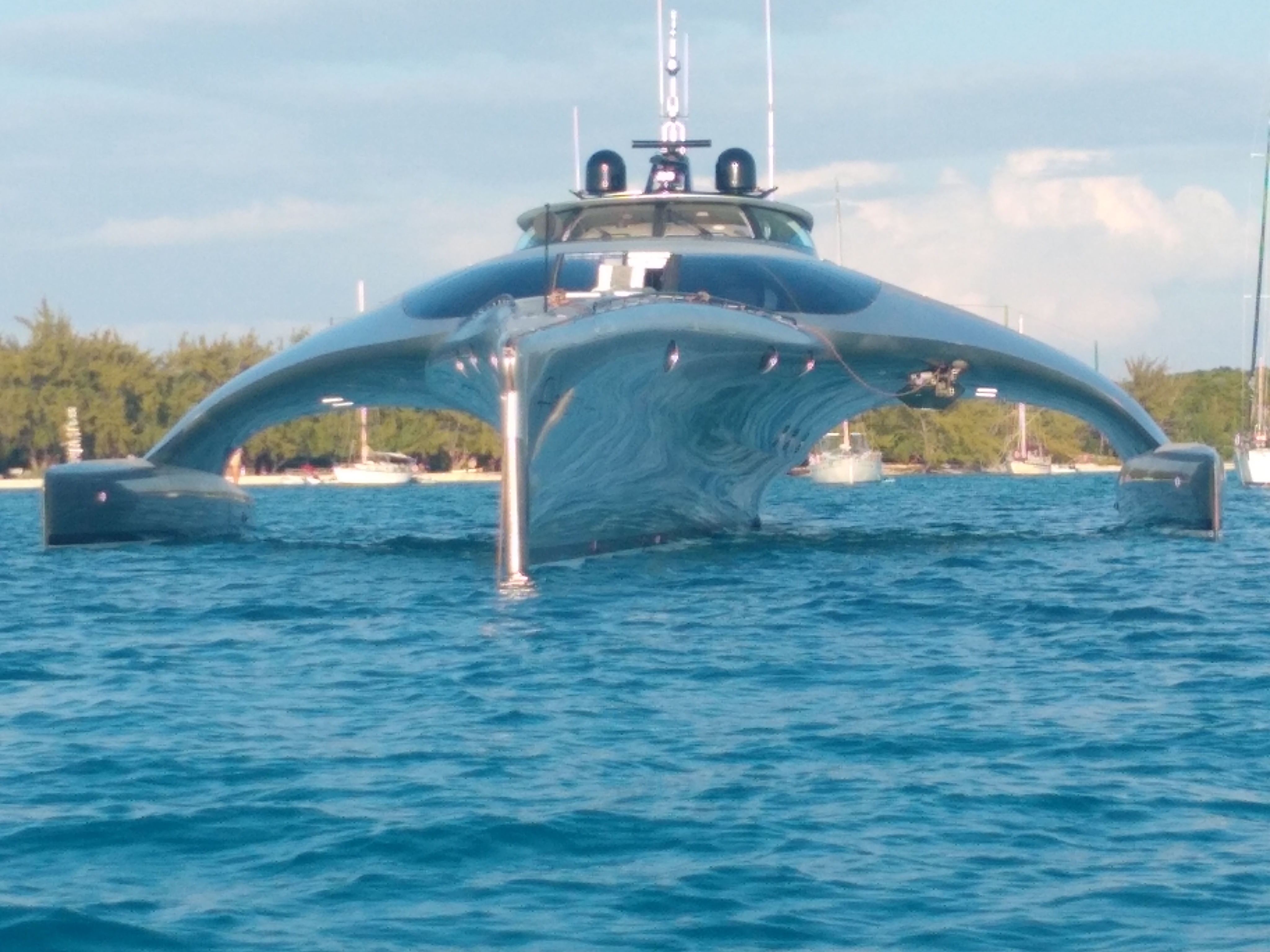
Most boats hang out closer to Stocking Island, across the harbor from George Town. Hungry for dinner, we went ashore on Stocking. Despite the presence of 1000 people on boats and multiple boutique hotels and restaurants, there is nothing open for dinner on a Thursday night. So back into the dinghy we went and over to town. We found Eddie’s. Even though we said over and over how we were sick of fried Bahamian food, this place made us like it again with tasty fried seafood, huge portions, good prices, and working A/C in the dining room.
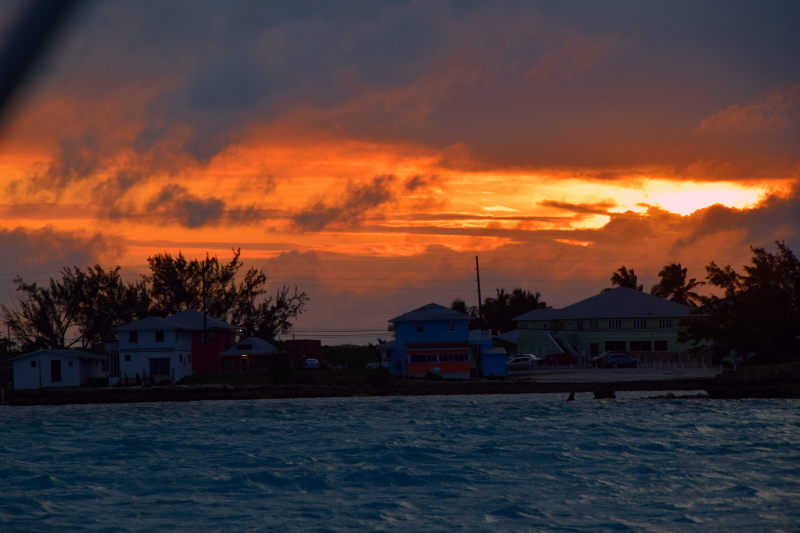
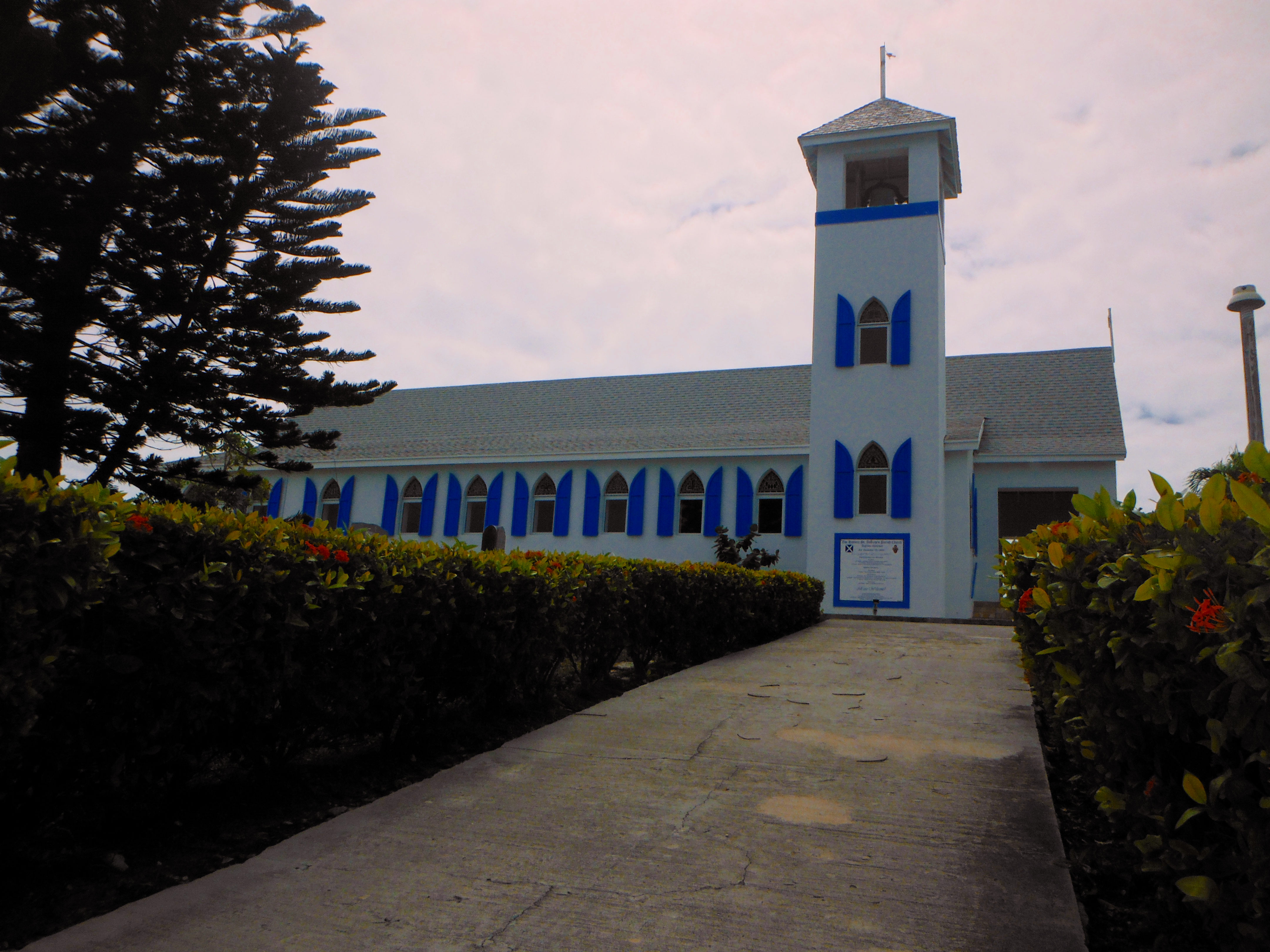
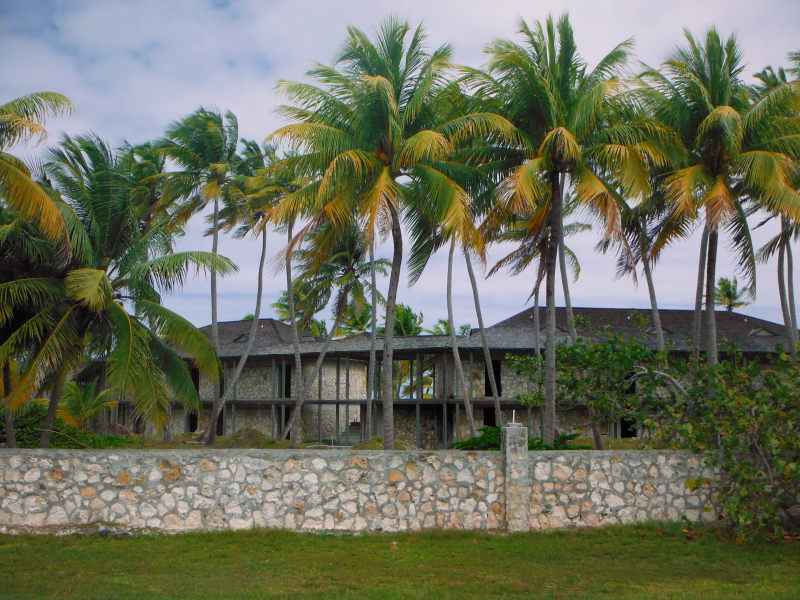
Our time in George Town was filled with the usual tasks of any visit to a population center (population: 1500 + boaters) – grocery shopping, water fillups (free here, unlike other places), Paul’s haircut, laundry.

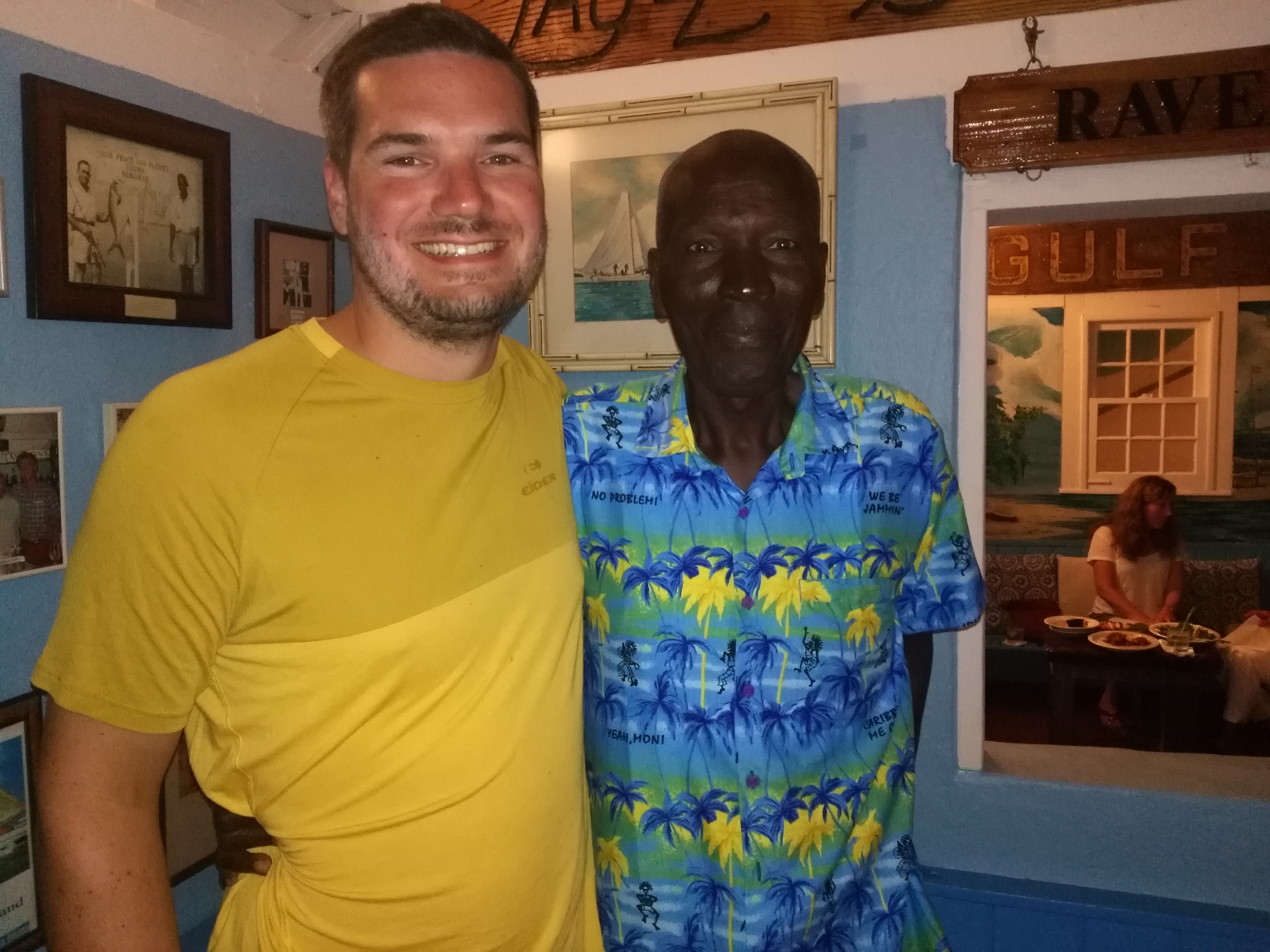
But we soon discovered something very special here to occupy our time: the blue holes. Mystery Cave is a popular snorkeling spot in Stocking Island’s protected mooring hole. But I saw on the charts that there was a second blue hole (underwater sink hole or cave) marked near the mooring balls. We went for a snorkel to assess the caves for possible scuba diving. Mystery Cave was full of fish due to tourists feeding them but the entrance to the other hole, Angelfish Blue Hole, was about 30-40 feet underwater and didn’t look like much while we were snorkeling. This was going to be our first time getting the scuba gear out this year, and I was a bit nervous about having our first dive be in the overhead environment of Mystery Cave. Angelfish, on the other hand, went nearly straight down. This seemed like a safer “warm up” so I talked Paul into starting there. I did my research on the holes – to dive them, you must go on a falling tide when the current is flowing out of the hole and not sucking you in. We picked a time to check them out the next day.
Arriving at Angelfish, we saw the local dive boat offloading people into the water. That was great confirmation that my research on the safe time to dive was accurate! We anchored the dinghy, strapped on our gear, and plunged into the water. We followed the dive group down and Paul moved ahead of the pack. I, however, came to a near stop at 60 feet down. The cave narrowed a bit here and the force of the outflowing water seemed stronger. My BCD (the inflatable diving vest) wasn’t strapped tightly enough to me and the flow of water rushed in between my back and the vest, pulling me backwards. I pinned myself to a rock on the side and signaled to Paul that I was having trouble descending and we headed back up. I adjusted the straps, but having already used some of our air, we decide not to head back down the blue hole. Instead we headed over to the Mystery Cave entrance and used up our air hanging out with all the fish at only about 12 feet under water.

The next day we tried the blue hole again. We had it to ourselves this time, and without a bunch of extra people to scare off the animals, the wildlife show was amazing. As we decended to the entrance, about 30 feet under the surface, eagle rays swam by and continued to make laps, so we could watch their sillouettes pass overhead as we sat at the bottom. As we entered the hole, we spooked a school of jacks. They emerged from the darkness below, but circled the blue hole for the rest of our dive. Eagle rays, shmeagle rays…”The jacks stole the show!” Paul declared. At 90+ feet we reached the bottom, where the biggest angelfish we’ve ever seen dodged in and out of the tunnel entrances – tunnels that go who knows how far before opening to the ocean. Humongous lobsters peeked out from behind rocks at 60 ft. It was really one of the best dives we’ve ever done. We posted the video a while back, but if you haven’t seen it, check it out: https://pelagicexplorers.com/2019/03/06/blue-hole-diving/
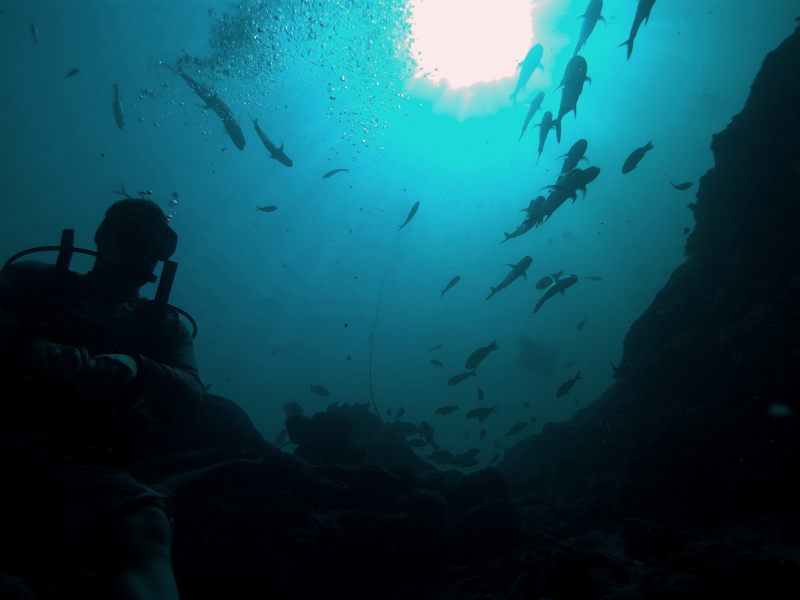
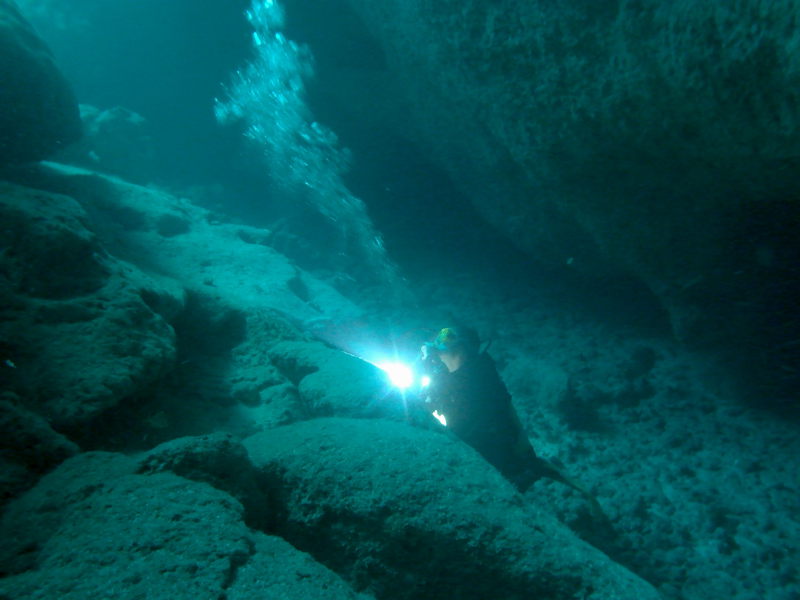
The day after that we dove Mystery Cave, this time going into the cave – it’s wide inside but as you descend you can only see the glow of light from the entrance, making it a bit creepy. There is not much to see inside the cave since the fish like to hang outside where people feed them. Of note, cave diving is a specialty and we do not encourage it without appropriate training!
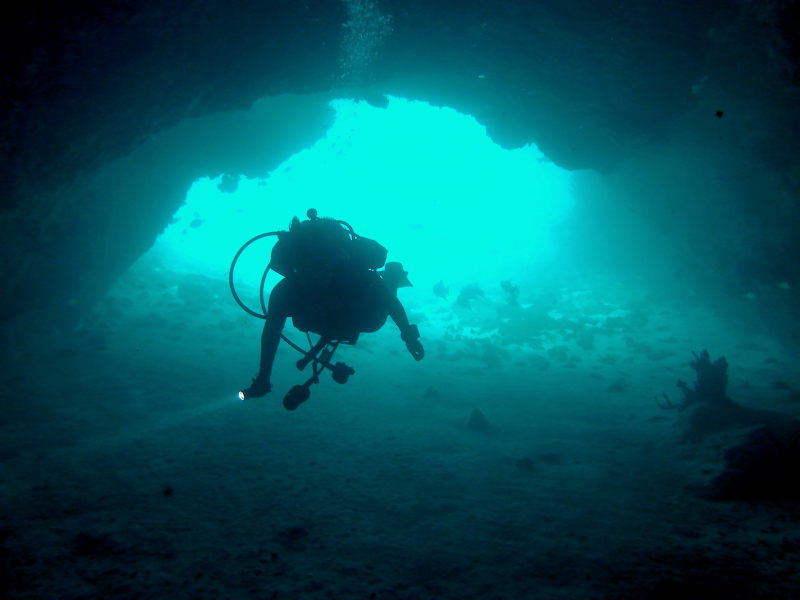
We loved Angelfish so much we dove it again and again. We took friends a few times. We hadn’t got as much diving in as we hoped in the Bahamas since most of the areas we hang out are shallow enough for snorkeling, and the deeper areas are usually a little more remote than what we feel comfortable diving with just 2 people in a little inflatable dinghy without much horsepower. But between Angelfish and the next dive we had planned, lugging along the dive gear and compressor was completely worth it.
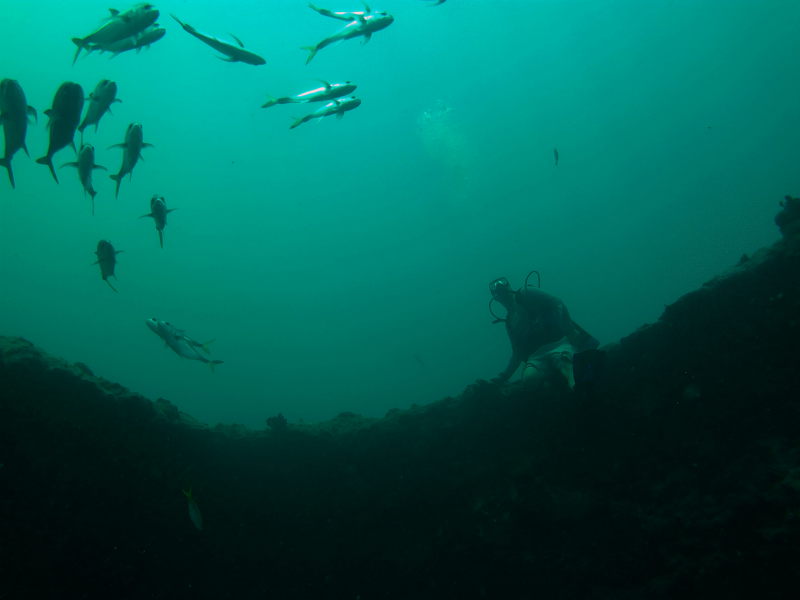
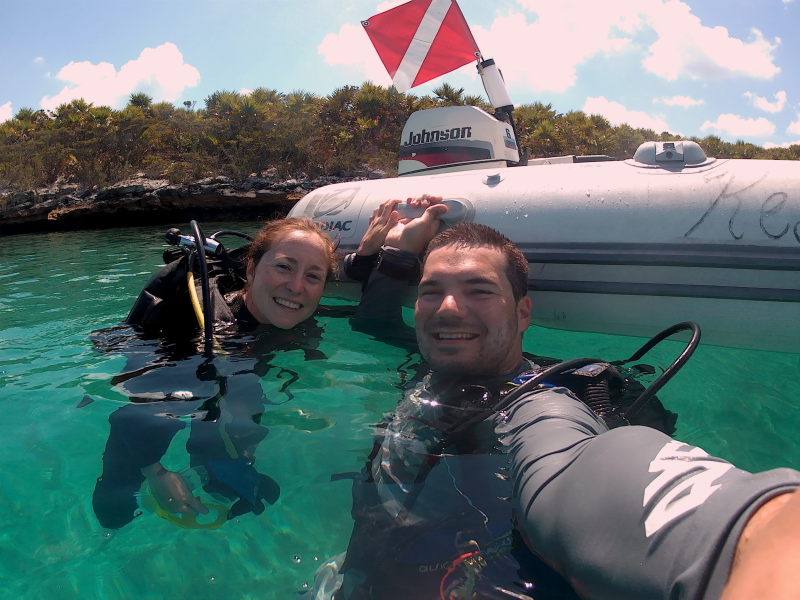
There are more caves to explored in this area too, particularly near Crab Cay. We used this map. https://sites.google.com/site/minnswatersports/maps The Crevasse near the bridge is pretty large and diveable, but the water there is not the clearest. We snorkeled the opening, and I didn’t much appreciate that the barracuda there kept getting closer when I turned my back (they are always creepily curious, but usually back off more quickly than this one did). We intended to go back for a dive but never made it. The caves along Crab Cay are small openings with outflowing water. They are somewhat difficult to find, but attract a surprising amount of fish. One of them had a puffer that kept making me laugh – he’d burst out of the cave like, “Hello, world!”, catch sight of us, panic and dash back inside.
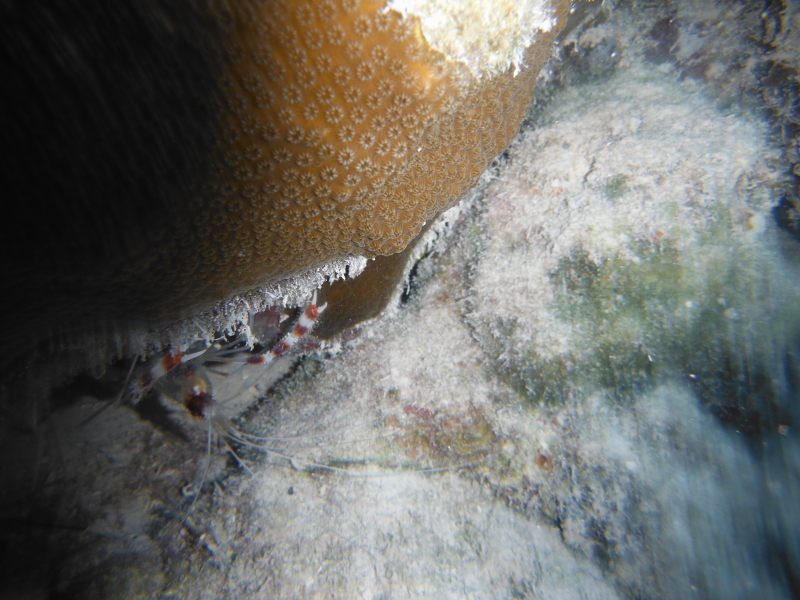
This area also has buoys to mark many of the top snorkeling spots. We spotted our first Hawksbill turtle on one of these reefs! https://elizabethharbourpartnership.org/community/interactive-snorkeling-buoy-map/
When we were above water, we checked out the too-competitive-for-us volleyball at Chat’n’Chill, joined fellow cruisers for the “rake’n’scrape” music and dancing at Eddie’s (well, Paul doesn’t dance, but everyone else did), hosted some dinners, attended some dinners, crashed a French Canadian bonfire, and went to the Bahamian music festival, where I finally got to see a Junkanoo parade!
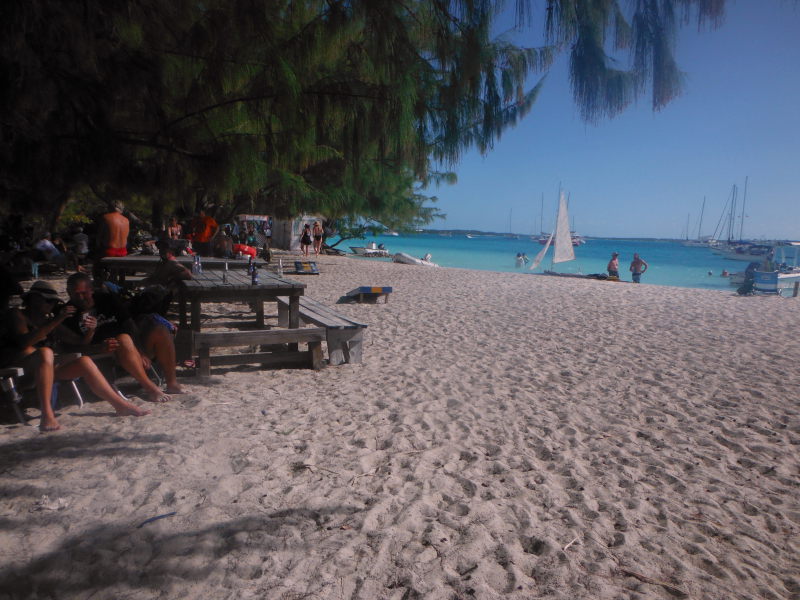
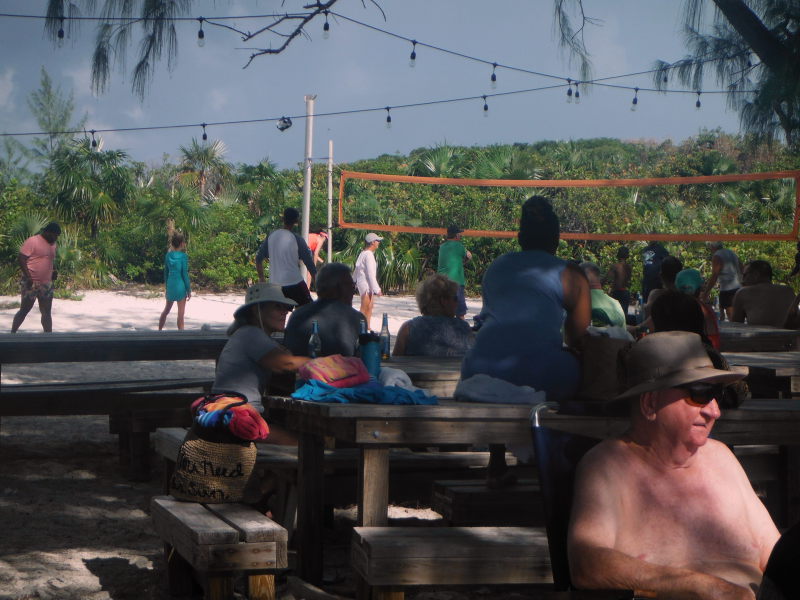
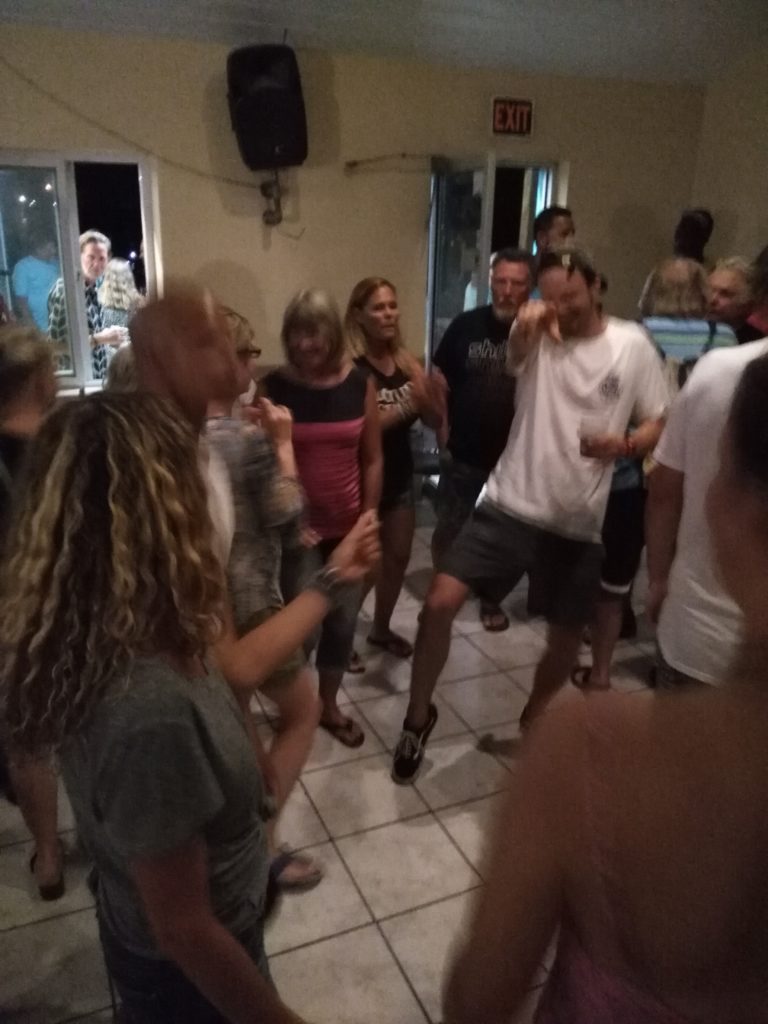
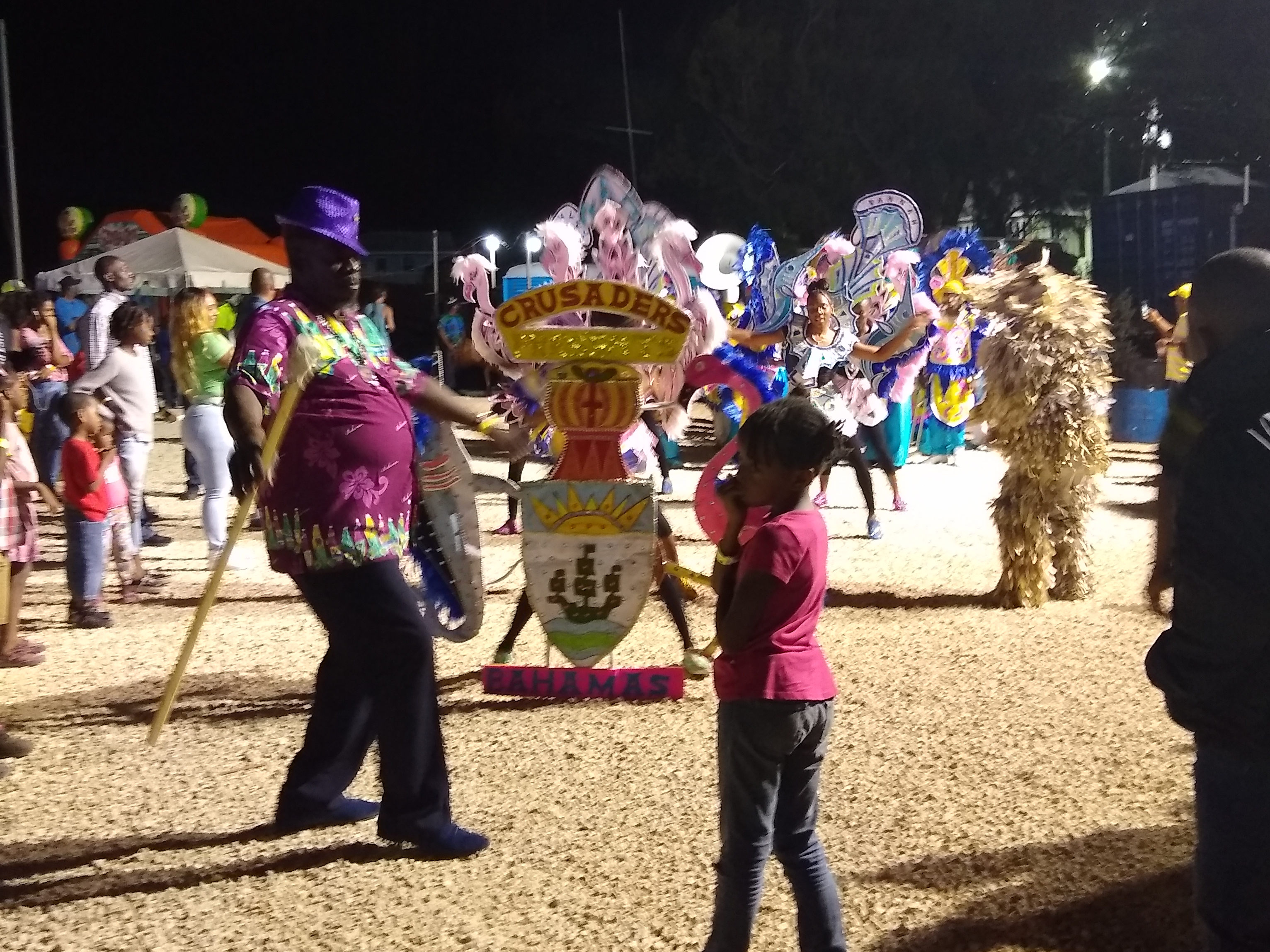
One of the goals for this year had been to go to somewhere truly remote – perhaps Andros, the Raggeds, or an island in the middle of the tongue of the ocean – basically to go somewhere only our boat could take us. Cohort was heading to the Raggeds, so I teamed up with them to put a lot of pressure on Paul to join them. This season he had started to worry more about something happening to the boat while we were far for help. Every noise or puff of smoke from our engine – which had given us no problems after the work we put into it back in the Chesapeake Bay – left him paranoid for days. But we finally had him convinced to do the trip, as long as there were no west winds expected. But then 40 knots of west wind popped into the forecast. Over several days, I begged him to wait for a forecast that actually was close enough to our travel dates to be worth a damn. At over a week out, there was no use in even looking at the weather.
Unfortunately, the forecasters couldn’t seem to decide if the weather was going to be completely benign or really awful. The worst of the forecasts said:
“developing meso-scale cyclone (a small, regionally-sized developing area of low pressure)…and may support wind potentially from any direction (though the prevailing wind direction should be N-E, there may be intervals of wind from any direction)…at speeds averaging 20-40k, but with at least 50k in T-strms associated with each IMPULSE. In addition, expect waterspouts especially near each IMPULSE, as surface winds are NE-ENE / winds above the surface veer S / winds aloft are strong and WSW…so there’s a lot of vertical wind speed and direction shear.)”
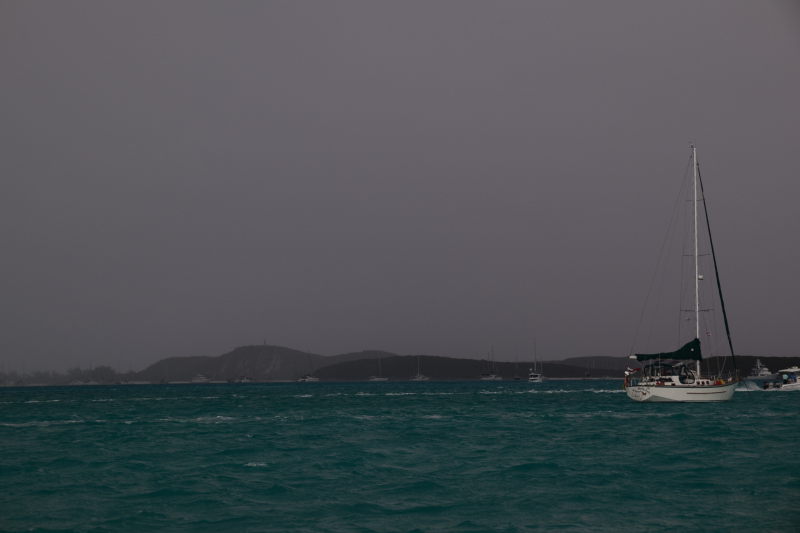
Without any certainty in the forecast, we decided to head to Long Island, where Thompson Bay offered protection from most directions, including the west. Cohort would be continuing on to Turks & Caicos from the Raggeds so we said goodbye over the radio as we both headed out of Elizabeth Harbour.
We were motoring straight into the wind. We didn’t put up sails as our boat doesn’t point (sail into the wind) well. When the wind picked up and we slowed to under 2 knots, Paul started to get upset – he hates going slow and started to challenge me, “Do you think this is fun?!” I said yes, because the speed, or lack thereof, really doesn’t bother me. But we decided to put up a sail to see if it would help, even going into the wind, and wouldn’t you know, we were suddenly going 6 knots! That’ll teach us to doubt our sailboat’s ability to sail!
We sailed past White Cay, where one of the Pirates of the Carribean movies filmed a scene. Dolphins checked out the boat. With our new found speed, we could see Long Island in the distance as the sun went down. As we entered the anchorage, the woman who owns the Fair Haven house on the hill radioed us to welcome us to the bay. We heard the music from the Mutton Festival, reminding me I had wanted to get here in time for the festival but we had missed it, oh well!
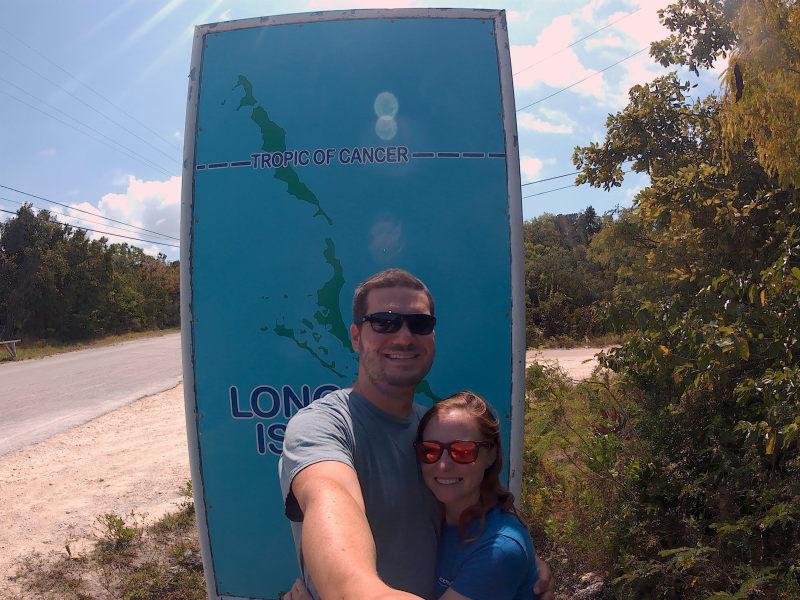
We knew Long Island would be our furthest point south. What was the big draw here? Dean’s Blue Hole, one of the deepest blue holes in the world at 663 ft.
The blue hole is on the opposite side of the island, so we needed a car. Long Island is 80 miles long, so we rented the car for a couple days so we could go exploring. From Thompson Bay, you can get to very sturdy dinghy dock, a well-stocked grocery, the car rental place, the farmers market, the mechanic, Tiny’s Hurricane Hole Beach Bar, another bar in town, the gas station, and even some explorable caves. But there is so much more on this island, so the $60/day-cash-only car rental is worth it.
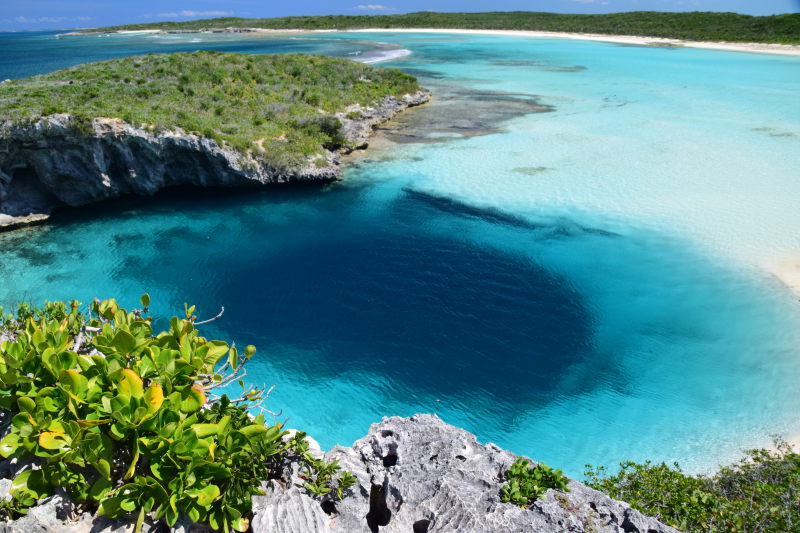
Given the hassle of hauling our scuba gear across the island, we thought we’d rent a 2nd set of tanks so we could dive the blue hole twice without having to return to our boat for air refills. Google listed a dive shop near our anchorage, but we found out it had closed years ago. This meant the closest place to rent dive gear was Stella Maris resort – 40 minutes north of our boat, while Dean’s Blue Hole was 40 minutes south of the boat! Once again, we felt very glad to have our own gear and compressor so we could make this dive happen!
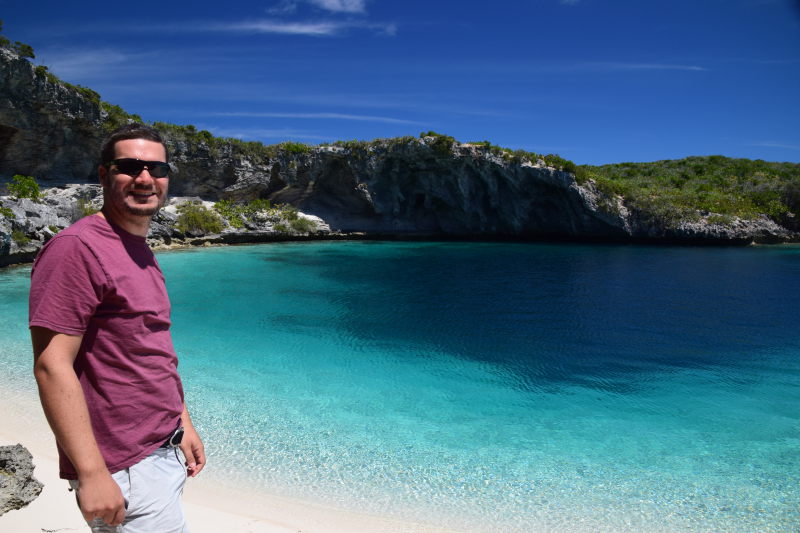
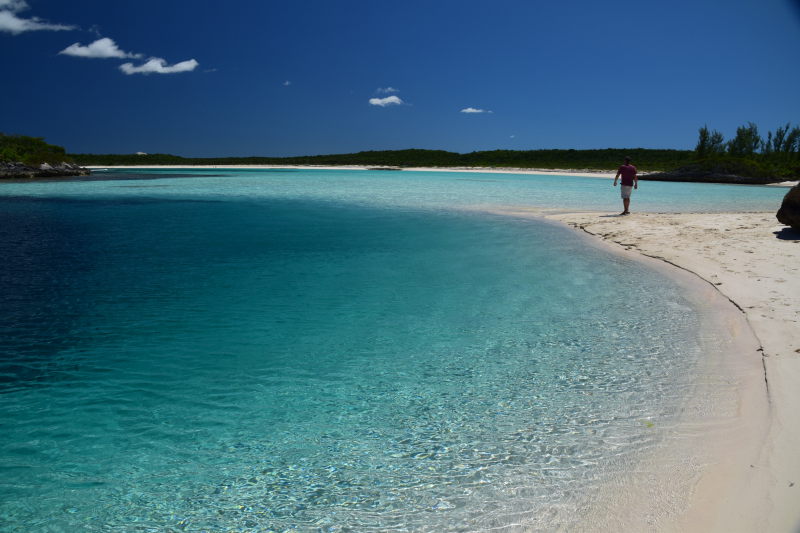
The funny thing was, we ended up not needing that 2nd tank at all. Originally we discussed diving to 110 ft – which would be record for us. Then we decided on 100 ft. The plan was to head straight to our planned depth and slowly make our way back up. Paul was going to stay above me by a few feet to film my descent. Well, let me tell you: diving head first into a 663 feet black hole for the first time is intimidating. (“It’s all in your mind!” an experienced friend told us. “But it’s hard when your mind is with you on the dive!” Paul retorted.) I slowed my breathing and swam on.
The visibility here supposedly can be great, but when you have a bunch of little kids swimming around, kicking loads of sand everywhere, that tends not to be the case.
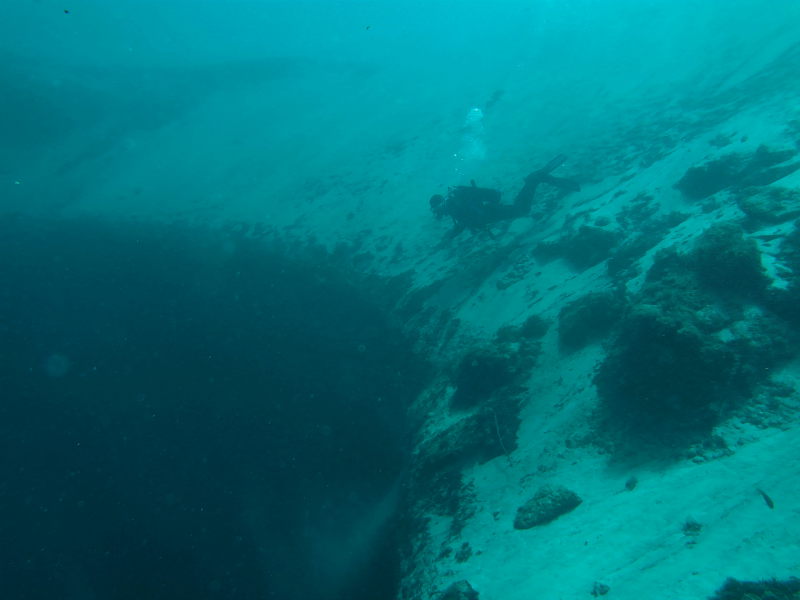
We knew that the hole would widen at 70 feet from around 100-ft-diameter to over 300-ft-diameter. As I hit the 50 foot mark, I saw the scales shimmering on the backs of tarpon who were gliding out from their hiding spot under that 70-foot-ledge. I tried to think about how cool the video of me swimming with tarpon would be, but I wasn’t really expecting creatures to pop out from under the ledge like that. Tarpon aren’t any sort of threat, though they freak some people out since they can get up to 8 feet long. These ones were only around 3-5 ft.
Paul’s mind was going similar places. We had heard larger animals like tarpon and sharks are sometimes spotted in Dean’s, but given that the top of the hole is surrounded by cliffs and shallow beach, we figured that was quite rare and were not expecting it. He started to think, if there are tarpon under that ledge, what else could be there? Normally seeing a shark on a dive is no big deal, but being in an enclosed space with one? We weren’t quite ready for that.
Bang-bang-bang. Paul was whacking his knife against his tank to get my attention. He signaled for me to come up. I ascended from around 60 feet and we rested on a ledge back at 50. I hadn’t realized how much my heart was pounding and was glad to sit and rest. We spent the rest of the dive circling near the surface. The fish and coral are only in the first 30 feet anyway. Plus we had fun pretending to “fall in” and “climb out” of the hole.
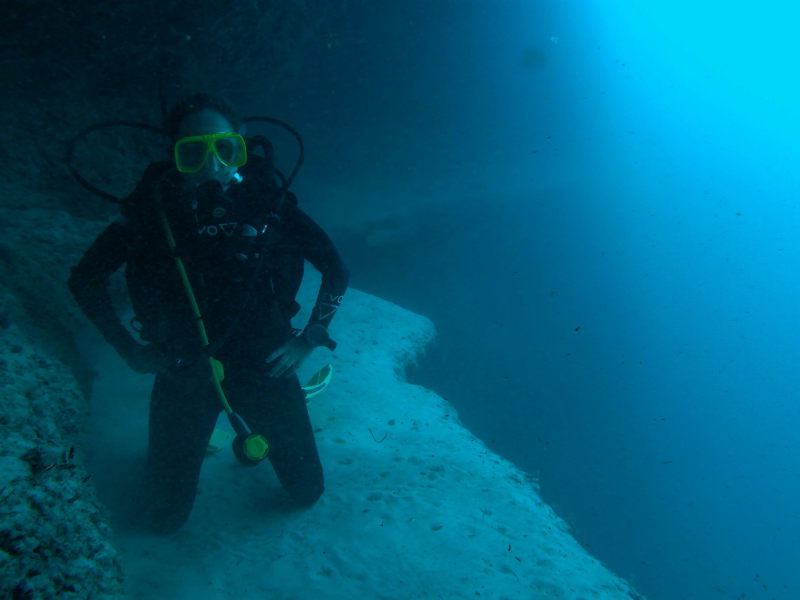
Once we were back on the surface, in 2 feet of crystal clear water and white sand, I said to Paul, “Honestly…. I don’t need to dive that again.” Paul felt the same way – glad to have done it but okay with never doing it again!
Long Island, like much of the Bahamas, is full of caves and blue holes, so weren’t done exploring. There are several marked in Thompson Bay, so we would go on dinghy rides to explore and spearfish among the holes and rocks. The water here is often cloudy, but we still managed to find a couple of the holes, hiding some big snappers and a giant stingray. Around some of the rocks we’d see grouper and nurse sharks. A barge wreck marked on the charts was surprisingly interesting and full of fish.
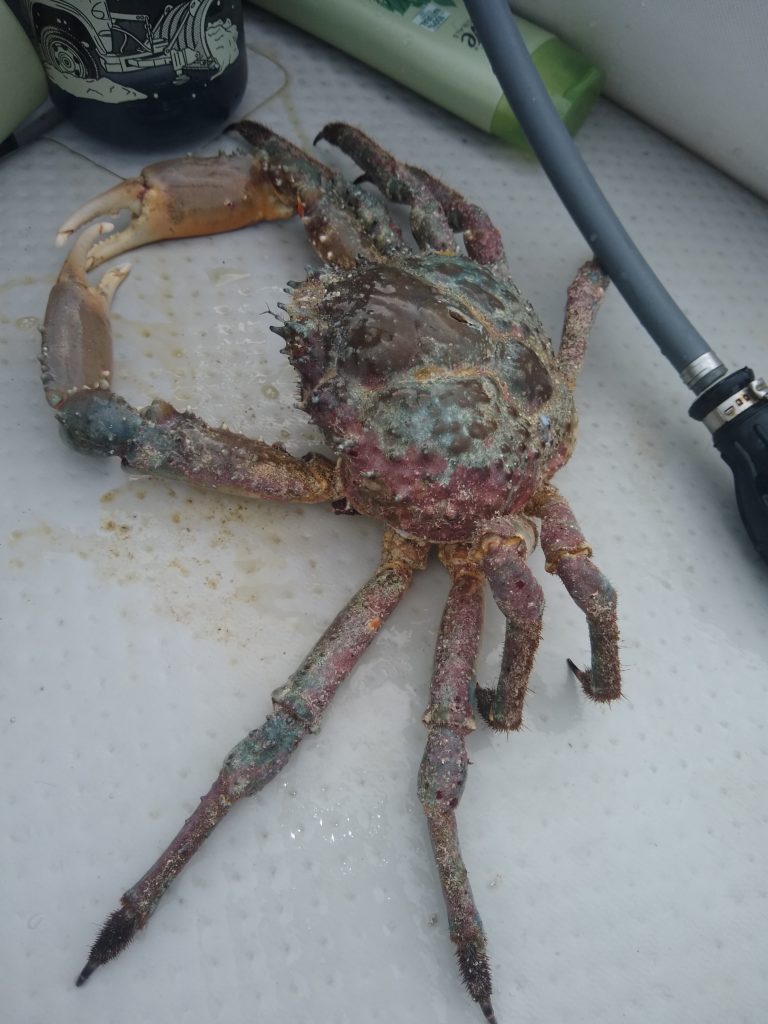
My favorite part was playing with the dolphins! As we headed back to Miss Fe after a day of exploring the bay, we saw a small pod of dolphins surface, and we went after them in the dinghy, hoping to swim with them. We pulled out in front of them, they darted straight for us, and Paul hopped into the water as fast as he could with his mask. He surfaced – “It’s too cloudy. I can’t see shit!” Back into the dinghy he leapt, and after the dolphins we chased. They were definitely in a playful mood, teasing us by alternating who was chasing whom, and sometimes riding our wake. I giggled hysterically while we and dolphins circled each other for several minutes, but they wouldn’t slow down let us join them for a swim!
This was just a little of Long Island’s magic.
